Archived Blog Posts
Commercial Water - Choosing a Water Damage Restoration Specialist
11/3/2023 (Permalink)
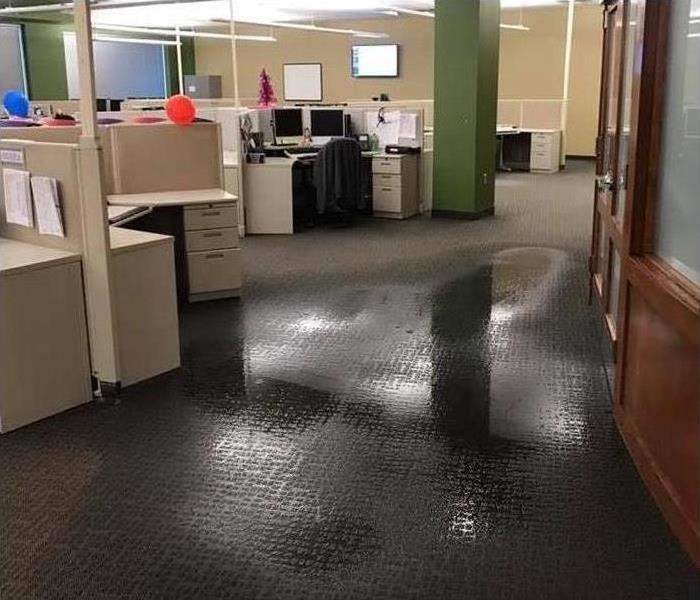 Commercial water damage in Guthrie, OK
Commercial water damage in Guthrie, OK
If your Guthrie, Oklahoma business suffers water damage, there are a variety of other problems that may follow, including mold growth. Understanding the water clean up process can help ensure your commercial building is properly cared for every step of the way.
Choosing a Specialist
Because water damage can quickly lead to mold growth, it is important to begin drying the property as soon as possible. If you choose to hire a professional to help with this task, the following are some important qualities to look for:
- Certification
- Professionalism
- Quick response time
Many professionals adhere to the standards set forth by the Institute of Inspection, Cleaning and Restoration Certification. The IICRC has been developing high-quality best practices for the restoration industry for over 45 years. If a professional is IICRC-certified, he or she has the knowledge to complete the water clean up job properly and safely. For water damage to commercial buildings, a professional who has completed the IICRC’s Commercial Drying Specialist courses will have knowledge of the intricacies involved in commercial water damage that other professionals may lack. However, all the knowledge in the world won’t save your property if the restoration team does not respond quickly enough to prevent further damage. A key sign of integrity and professionalism is a company responding in the time frame they give you and keeping you apprised of any changes.
Cleanup Process
Whether the damage results from a broken pipe, a leaky roof or any other source, the restoration process follows the same basic outline. Standing water is removed using pumps or vacuums. Remaining moisture is dried using fans and dehumidifiers. Affected items are sanitized, and damaged items are repaired. Items that cannot be cleaned, dried and properly repaired are replaced.
Depending on the severity of the damage, business owners may be able to perform the water clean up process themselves. However, an IICRC-certified restoration service can provide valuable assistance, especially in more severe cases.
How To Recognize Category 2 Water Damage
10/18/2023 (Permalink)
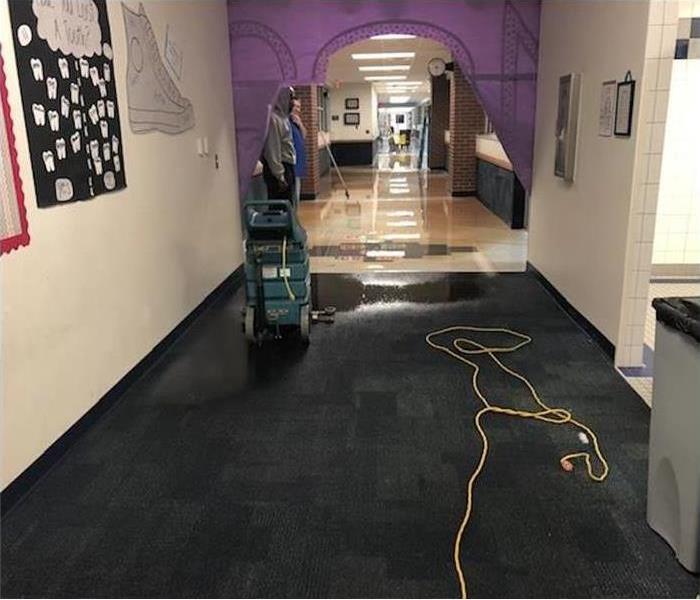 Commercial water damage in Perry, OK
Commercial water damage in Perry, OK
The water cleanup process includes several phases, one of which is disinfecting any contaminated areas. When water damage experts assess the problem in your building in Perry, OK, they must determine the level of the water's contamination. They do this by placing it in the appropriate category. After a water pipe repair, you may have Category 2 damage, even though the water was clean when it came out of the pipe.
Contamination Levels
There are three categories of water damage contamination that experts use to determine the scope of the cleanup process:
- Category 1 - Clean water, usually from a broken pipe or supply line
- Category 2 - Dirty water, usually from an appliance such as a refrigerator
- Category 3 - Contaminated water, usually from sewer lines or storm flooding
If water pipe repair is completed and the subsequent damage is mitigated quickly, the contamination level is likely to stay at a Category 1. The longer water damage sits, however, the more likely it is to move to Category 2 damage as it becomes contaminated by the dirt and the breakdown of materials. Then you have to add a step to the cleanup process to disinfect your building.
Disinfection Process
The longer you take to call cleanup experts, the more likely your flooded building is to have Category 2 damage. When experts arrive, they can test for contamination to determine if they need to add an extra cleaning step. They start by removing materials that can't be salvaged. Then they use industrial cleaners or purification machines to remove any bacteria that have started to grow in the affected area. Only after this disinfection has been completed can your structure be restored to its former state.
Fast action is necessary with any damage to your building. If you need water pipe repair, you probably need water damage remediation. Call your local experts quickly to avoid further damage that can complicate the remediation process.
3 Tips for Preparing Your Business Against a Flood
8/24/2023 (Permalink)
 Commercial storm damage in Guthrie, OK
Commercial storm damage in Guthrie, OK
When storm season arrives in Guthrie,OK, many business owners may begin wondering about how to protect their property from flooding. When proper preparation occurs ahead of time, damage and loss can be mitigated. Here are three tips that may help your business better prepare.
1. Ensure the Exterior Is Properly Prepped
You can help protect your business's property from flood damage by properly preparing the exterior before the storm arrives. This can mean trimming trees with branches that could fall into the building, taking down awnings, making sure doors and windows are closed and sealed, sandbagging if necessary, and any other storm proofing methods recommended for your area. Prepping beforehand can mean less cleanup after. It’s also recommended that you become familiar with the water damage professionals in your area in case flood damage does occur.
2. Keep Backup Files Updated
One of the main risks to businesses when flooding occurs is the loss of electronic equipment and the files stored on them. In many cases it’s the loss of the files that’s the bigger disaster. One of the best ways your company can prevent this is to keep backups at an alternate location or in the cloud. If you have a server, your IT company may already do this for you. If your equipment suffers damage, these backups can be uploaded into repaired or replacement machines.
3. Move Necessary Items and Equipment to a Safe Area
Another way to protect your company from storm damage is to move the items you wish to protect to a safe location. This could be an upper floor or a room at the center of the building that’s away from doors and windows. In the event the building does flood, these items will be less likely to be in the path of any water.
If you're in an area such as Guthrie,OK, that could experience flooding, you may want to consider these tips before the next storm. Properly preparing your business for the weather beforehand can help prevent the loss of files and property, as well as costly repairs
Top Fire Preparation Tips for Homeowners
8/22/2023 (Permalink)
 Prepare your home in Navina, OK, your family and yourself for a home fire by heeding the above fire safety tips.
Prepare your home in Navina, OK, your family and yourself for a home fire by heeding the above fire safety tips.
Being in a home fire in Stillwater, OK, is a nightmare. You wonder, what could be worse? The answer is not being prepared. In order to act quickly in any emergency, you must understand and practice what to do ahead of time. Fire preparation is no different. To prepare your home and your family, institute the following fire safety tips.
Prepare
The best time for fire preparation is now. If you wait until there is a fire, it is too late.
• Install functioning smoke detectors in your home. At the minimum, this includes alarms outside the sleeping areas and on each level of your home. Maintain your detectors by changing the batteries at least once per year and checking the alarm once per month. If possible, install interconnected detectors that sound at the same time when one is triggered. Teach all family members the sound of the alarm and what it means.
• Plan an escape plan, ensuring that all family members know two ways to exit each room.
• Determine an outside meeting place and how to contact one another.
• Teach even young children how and when to call 911 in an emergency.
Practice
Repetition of fire safety skills increases the chance of acting quickly in a fire.
• Practice the predetermined family escape plan twice a year or more. Start from different rooms of the house or use a stopwatch to make it more challenging.
• Practice how to stop, drop and roll in the event a home fire spreads to clothing.
Prepare your home in Stillwater, OK, your family and yourself for a home fire by heeding the above fire safety tips. If your nightmare becomes a reality, use what you have learned and practiced during fire preparation to lead your family to safety. Once out of danger, consider the next steps to repair your home. Start by contacting a fire restoration specialist to help you through the process of cleaning and restoring your house and personal belongings. Also call your insurance agent, as fire damage is covered under most homeowner’s policies. For more information, visit http://www.SERVPROstillwaterguthrie.com/.
Is Security Fencing Necessary After a Commercial Fire?
8/18/2023 (Permalink)
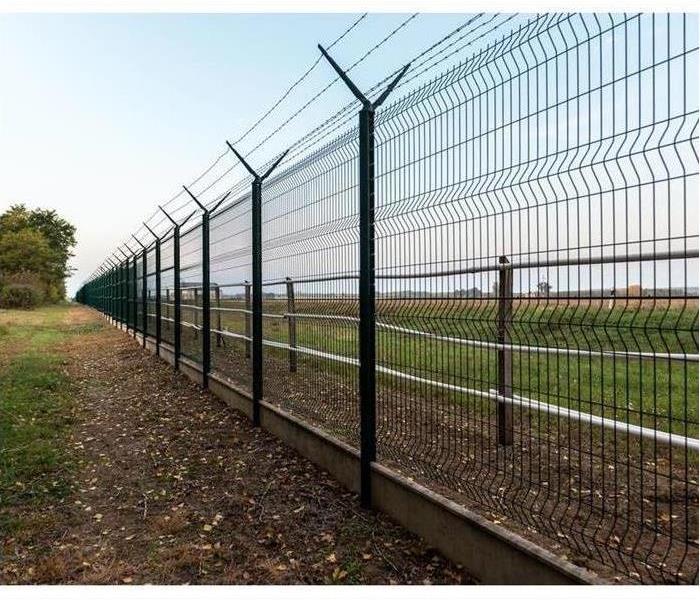 It’s highly recommended that you install a security fence
It’s highly recommended that you install a security fence
Is Security Fencing Necessary After a Commercial Fire?
Suffering a major fire at your business can be a real challenge for you and your employees. Once you know that everyone is safe it’s time to start thinking about the next step — limiting the amount of damage to the property itself. One of the most effective methods is installing a temporary security fence. Fencing will greatly reduce or prevent:
1. Animal Entry
Animals can wreak havoc on a building. While you may not be able to completely keep animals out, proper fencing should limit it considerably. From animal waste to chewed wires, a building can suffer a lot of avoidable destruction.
2. Vandalism
Vandals can cause a variety of problems in a vacant building; the loss can be significant in mere minutes. From broken windows, graffiti, and fire damage to a ransacked property, in general. You may want to consider barbed wire at the top of your fence if you think vandalism is likely.
3. Theft
For some people, your vacated property is an opportunity to steal. A security fence will make it difficult for someone to enter the premises, and next to impossible to exit with stolen items, especially if those items are large.
4. Liability Issues
Trespassing is illegal, but you could still be sued for personal injury if an intruder gets hurt on your property. This could be particularly serious if it involves a child. Protective fencing will keep children and others from roaming around on your property.
5. Insurance Problems
Your insurance company will expect you to take every reasonable step to limit additional loss to the affected property. Damage from negligence after the fact probably won’t be covered. Installing fencing will prove that you’re taking precautions to contain the area while keeping as many external hazards out as much as possible.
If your commercial building sustains major fire damage in Sumner, OK, it’s highly recommended that you install a security fence. Then, remediation professionals can work to return your building to its preloss condition.
You Can Replace Your Own Toilet With These 5 Simple Steps
7/26/2023 (Permalink)
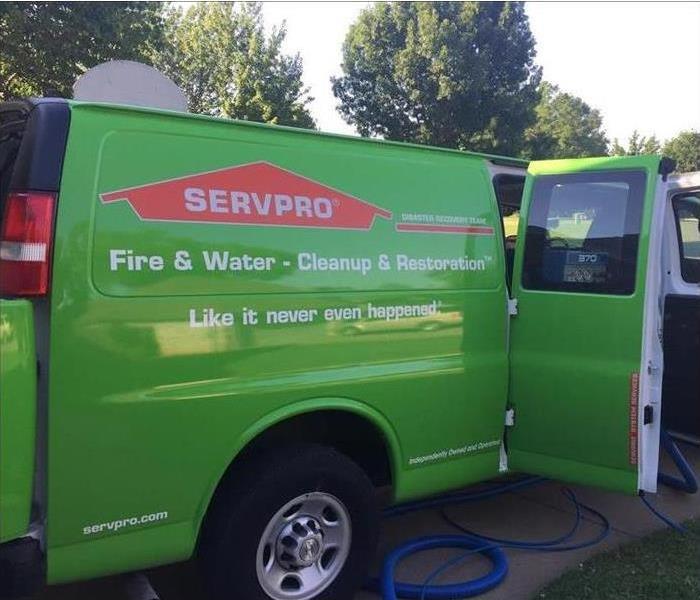 Call in a Guthrie, OK water damage restoration team to ensure there is no extensive water damage
Call in a Guthrie, OK water damage restoration team to ensure there is no extensive water damage
Replace Your Toilet with 5 Simple Steps
Whether you're dealing with a leaking toilet or you simply found a toilet with crazy features at your local hardware store that you just could not live without, you may wonder how much it will cost you to have a Guthrie, OK, plumber come in to make the swap for you. Depending on your capabilities, resourcefulness and level of confidence this may be an unnecessary concern. You can replace your toilet five simple steps.
1. Sever the Water Supply
Whether you're making a toilet repair or swapping out an old toilet with a new, you need to be sure to cut the water supply. Once the supply line is disconnected, flush and drain the tank.
2. Detach the Wax Seal
Use a wrench to loosen the bolts holding the toilet, then take a pocket knife or other sharp object and cut the caulk seal surrounding the base of the toilet. Remove the toilet gently. Use a putty knife to remove the wax seal.
3. Caulk the New Base
This step can help you prevent a future leaking toilet, as caulk serves to eliminate gaps between the wax ring and toilet base. It also helps make installation easier.
4. Install a New Wax Ring
You do not want to reuse a wax ring. Place a new one where the old was, and then lift the new toilet into place. Do not press down, as the weight of the fixture will compress the seal itself.
5. Tighten the Bolts
Once the toilet is in place, place a washer over the bolts and tighten the nuts by hand. You can use a large screwdriver or wrench to finish the job. Be careful to not overtighten, as it will crack the ceramic.
If your leaking toilet was leaking for a while, you may want to call in a Guthrie, OK, water damage restoration team to ensure the there is no extensive water damage. Failure to properly clean water damage can result in costly issues in the future.
6 Shutter Styles You May Need for Your Home
7/18/2023 (Permalink)
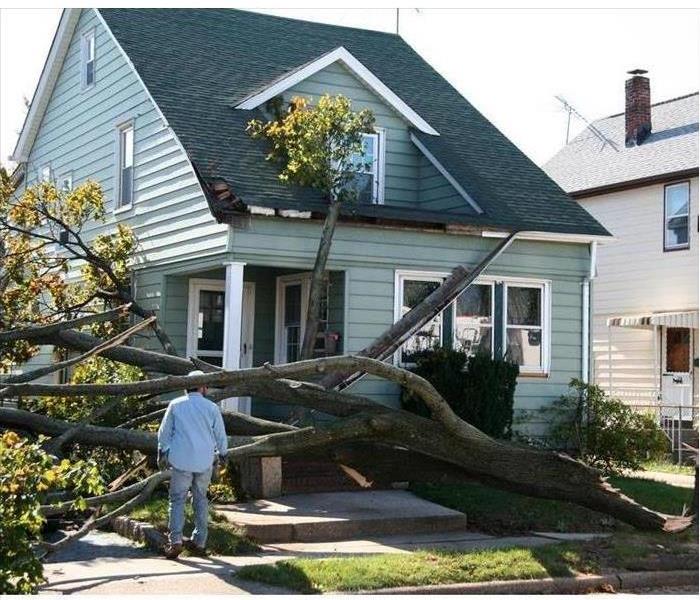 Having your home protected with hurricane window coverings can also save you money in the long run by lowering your insurance premiums.
Having your home protected with hurricane window coverings can also save you money in the long run by lowering your insurance premiums.
If you live in an area that is prone to hurricane and high winds, such as Stillwater, OK, you can mitigate potential damage to your home and protect family by installing storm shutters. Having your home protected with hurricane window coverings can also save you money in the long run by lowering your insurance premiums.
Many types of hurricane window coverings are available. Here are just a few of the more popular options.
1. Plywood
Plywood may not be pretty. However, it is usually an inexpensive, readily available option that can cost less than $1 per square foot of window space.
2. Storm Panels
Storm panels are often an economical option that may only need to be installed if a hurricane is imminent. The cost for these panels is $7-$15 per window.
3. Accordion-Style
Accordion-style window coverings can be stored folded up in a box that is secured to one side of the window. They can then be manually unfolded to cover the window when needed. These shutters often cost $15-$25 per square foot of window space.
4. Bahama Awnings
Bahama awnings can provide shade as well as protect windows from damage by high winds. These shutters can be installed on the tops of windows to provide awnings, and then can be unlatched when you need to cover the window. These coverings may cost about $15-$20 per square foot.
5. Rolling
These window coverings are typically installed in a box bolted above the window. A cranking mechanism unrolls the shutters across the length of the window, and then they are bolted down at the bottom. They can also provide effective insulation, helping to save costs of heating or cooling a home at a cost of $20-$30 per square foot of window area.
6. Colonial
Colonial storm shutters are usually mounted permanently on either side of a window and bolted in place. When needed, they can be unfolded to cover the window. Colonial-style window coverings cost about $200-$500 per window.
Expecting stormy weather? The next time high winds are forecast in your area, you can have peace of mind when you have quality window coverings installed for your home. For more information, visit http://www.SERVPROstillwaterguthrie.com/.
Keeping Your Home Cooling System Mold-Free
7/10/2023 (Permalink)
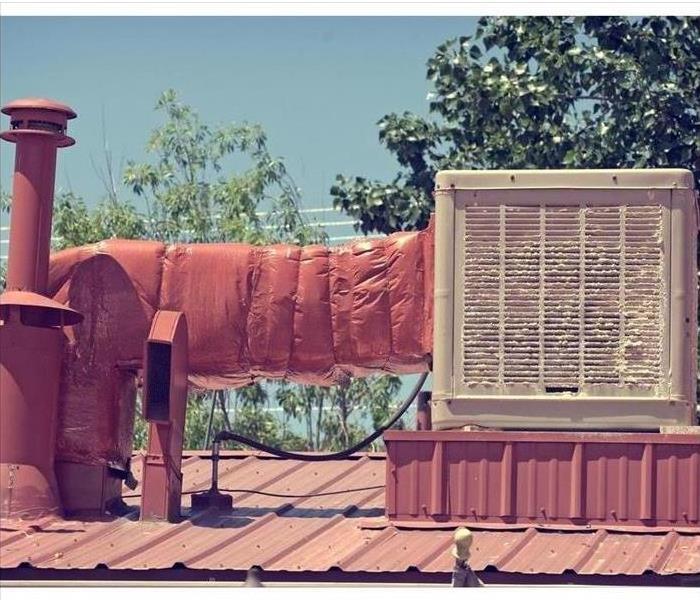 Most homes have a cooling system, usually a swamp cooler (also known as an evaporative cooler)
Most homes have a cooling system, usually a swamp cooler (also known as an evaporative cooler)
Here Are Three Cooling System Basics You Should Know
In today’s climate-controlled homes, it’s easy to forget about your cooling system until it malfunctions. A leaking swamp cooler or dirty air ducts are signs it’s time to check your indoor air quality.
1. Swamp Cooler vs. Air Conditioner
Most homes have a cooling system, usually either a swamp cooler (also known as an evaporative cooler) or a central air conditioner. Air conditioners use liquid refrigerant, fans, and a series of ducts to force cooled air to all rooms of the home. An evaporative cooler uses water, a cellulose pad, and a fan to cool the air. Because of their smaller size and lack of an extensive vent system, the latter is typically used for one room or a small space. The cellulose pad is constantly being soaked with water, which can lead to mold growth.
2. Humid vs. Dry Air
The home cooling system you should use depends on your location and climate. Homes in areas with low humidity are often equipped with swamp coolers because the air is dry enough to inhibit mold damage. In places with high humidity, such as the Southeastern states, it’s better to use a central air conditioning system because it doesn’t rely on water to cool the air. An evaporative cooler can add too much extra humidity to the air in an already humid climate; a leaking swamp cooler can harbor mold.
3. Clean vs. Dirty Equipment
The best way to keep your indoor air healthy, no matter where you live, is to maintain your air conditioner or evaporative cooler. Inspect visible components for mineral buildup and remove it if present. Check any associated ducts and drywall for signs of mold; if you find it, you’ll need the help of a mold remediation specialist in Ceres, OK. Regularly replacing the cellulose pads in swamp coolers also keeps potential mold under control.
Preventing a leaking swamp cooler or maintaining your air conditioner are key steps to healthy indoor air. When regularly serviced, your cooling system can keep your home comfortable for years to come.
3 Steps To Mitigate Roof Damage To Your Home
6/26/2023 (Permalink)
 It’s a good idea to pay attention to what the weather is doing in your area.
It’s a good idea to pay attention to what the weather is doing in your area.
Consider These Three Steps
When you live in an area such as Sumner, OK, you may be worried about the local weather causing roof damage to your home. Fortunately, a storm damage restoration service can help with any repair needs you may have. However, there are a few things you can do beforehand to mitigate potential problems. Next time there’s a storm in your area consider these three things.
1. Pay Attention To the Weather
It’s a good idea to pay attention to what the weather is doing in your area. This will help you have time to prepare properly before a storm occurs. If you’re expecting heavy wind or rain you can take steps such as covering over areas of your roof that may be prone to damage with tarps or boards until a professional can make repairs. You may also want to check for debris or loose gutters that could also be knocked around by the weather and damage your roof.
2. Clean Out Your Gutters
You may also want to take the time to clean out your gutters as this also can help prevent roof damage to your home. Debris such as sticks or leaves can clog the gutter and lead to water backup. This water can then overflow onto the roof and cause problems. When the gutters are clean and the downspouts pointed away from the building, this potential issue is much less likely to occur.
3. Trim Back Overhanging Trees
Another way to help mitigate wind damage to your home’s roof is to trim back any trees that might overhang. Look for weak or dead branches that could be knocked loose by the wind. During a storm, these have the potential to fall on the roof causing damage. Taking the time to remove them beforehand may help mitigate the problem.
If you’re trying to mitigate storm caused roof damage to your home you may want to consider keeping an eye on the weather, keeping your gutters clear of debris and taking the time to trim back any overhanging trees. If damage does occur, a restoration service can help with any clean up and repair needs.
The Importance of a Security Fence After a Fire
6/23/2023 (Permalink)
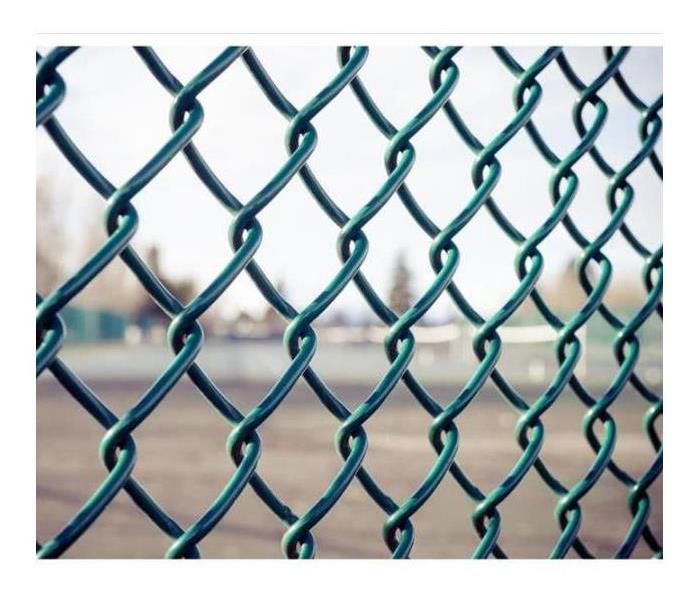 The installation of a security fence could prevent new harm and legal charges.
The installation of a security fence could prevent new harm and legal charges.
The Importance of a Security Fence
After your business or commercial properties have been affected by fire, the security of your entire company could be at risk. Naturally, officials from the fire department or public safety will tell you when it is safe for personnel to enter the building or stay away, but what about the equipment, belongings, and buildings? A temporary security fence could be the thing you need to protect against
- Theft
- Vandalism
- Trespassing
- Looters
- Liability
After emergency teams leave your property, you'll be responsible for the security of the land, buildings, and possessions inside the buildings. If someone gets hurt on that property, even if they are there without permission, you could be liable for those injuries.
Potential Dangers to Intruders
There are a number of potentially dangerous situations after a fire. Although fire damage remediation and reconstruction professionals may be coming and going, other people may trespass while those professionals are away. Those interlopers could be exposed to leaking gas, damaged electric lines, slips on water, or weakened floors. A security fence around your property may keep these intruders out and protect you from legal actions.
Damages Done by Trespassers
If unauthorized people enter your property and cause further damage, your insurance company may refuse to pay for those damages. On the other hand, your agent may recommend installing fencing around the perimeter of your Perry, OK, commercial property. When this is the case, act quickly on the advice of the agent to prevent new damages.
Protect Your Property With Security Fencing
Fire damage can be a source of a lot of destruction. The installation of a security fence could prevent new harm and legal charges. When it's safe to return to your property, but construction hasn't yet been completed, tightened security may reduce losses due to theft, vandalism and damages that the insurance company won't cover, and legal liability for injuries that trespassers suffer.
Preventing House Fires: Essential Tips for a Safe Home
6/22/2023 (Permalink)
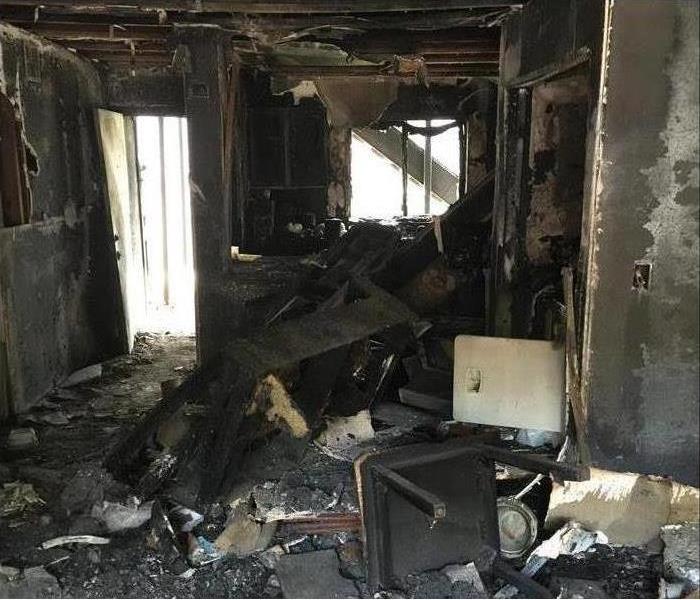 Ways to prevent your home from looking like this.
Ways to prevent your home from looking like this.
A house fire can be a devastating event, causing immense damage and putting lives at risk. However, by taking proactive measures and implementing fire prevention strategies, you can significantly reduce the chances of a fire breaking out in your home. Here are some essential tips and guidelines to help you create a safe living environment and protect your loved ones from the threat of house fires.
- Install and Maintain Smoke Alarms: Smoke alarms are your first line of defense against a fire. Install smoke alarms on every level of your home, including inside bedrooms and outside sleeping areas. Regularly test the alarms to ensure they are functioning correctly and replace batteries at least once a year.
- Develop a Fire Escape Plan: Prepare and practice a fire escape plan with all members of your household. Identify primary and alternative escape routes from each room, and establish a designated meeting point outside. Educate everyone on how to react in case of a fire and emphasize the importance of staying low to avoid smoke inhalation.
- Exercise Caution in the Kitchen: Kitchen fires are a common cause of house fires. Never leave cooking unattended, and keep flammable objects, such as towels or curtains, away from the stove. Regularly clean grease buildup from cooking surfaces and ensure that all appliances are in good working condition.
- Practice Electrical Safety: Faulty electrical systems and appliances can trigger fires. Have a professional inspect your electrical system periodically, especially in older homes. Avoid overloading outlets and extension cords, and replace damaged cords or appliances immediately. Unplug devices when not in use and refrain from running wires under rugs or furniture.
- Be Mindful of Heating Sources: Heating equipment, such as space heaters and fireplaces, should be used with caution. Keep flammable materials at a safe distance from heat sources and never leave them unattended. Have chimneys and flues cleaned and inspected regularly, and ensure that space heaters are placed on a non-flammable surface.
- Store Flammable Materials Properly: Flammable substances, such as gasoline, paint thinners, or cleaning agents, should be stored in well-ventilated areas away from heat sources. Use approved containers and keep them tightly sealed. Avoid hoarding excessive amounts of flammable materials.
- Maintain Dryer Safety: Lint buildup in dryer vents can lead to a fire hazard. Clean the lint trap after every load and periodically inspect and clean the dryer vent system. Ensure proper venting to the outside and avoid using dryers when you are away from home or sleeping.
- Install Fire Extinguishers: Place fire extinguishers in key locations, such as the kitchen and garage, and learn how to use them effectively. Choose the appropriate type of extinguisher for different fire classes and have them inspected and maintained regularly.
Preventing a house fire in Stillwater, OK requires a proactive approach and adherence to fire safety practices. By implementing the essential tips outlined in this blog, you can significantly reduce the risk of a fire breaking out in your home and protect your family and property. Remember, fire prevention is an ongoing commitment, so regularly review and update your fire safety measures to ensure a safe living environment for years to come.
Flood Tips
4/24/2023 (Permalink)
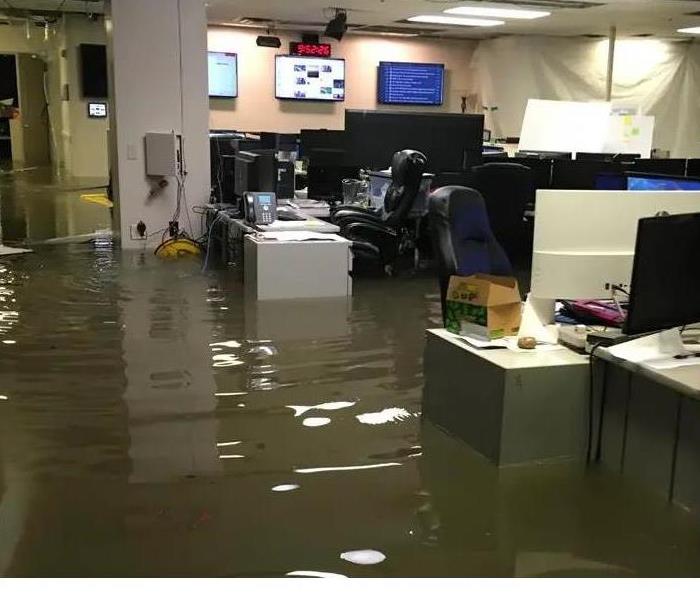 Preparing yourself and your home is important if you live in a flood-susceptible area. Adequate flood safety knowledge can help lessen injury, damage
Preparing yourself and your home is important if you live in a flood-susceptible area. Adequate flood safety knowledge can help lessen injury, damage
While natural disasters are simply out of your control, preparing for a disaster is something you can see to. If you live in an area where floods are possible, there are some things you can do before, during, and after to minimize damage. Here are some safety tips at each stage of a flood.
Before a Flood
Floods are particularly devastating because they happen with little to no notice and can cause significant damage, injuries and even death. Although you can’t prevent this unexpected event, here are some flood safety preparation tips:
- Install non-carpet flooring
- Prepare an updated emergency kit
- Find out where relocation centers are located
- Make sure you have flood insurance
- Store important documents in a waterproof container
During a Flood
If your safety is not in jeopardy and you have time to prepare your home for a flood, you can lessen the amount of damage that occurs. First, move furniture, rugs, electronics, and valuable items to higher ground. Second, make sure you have your important documents either stored in a waterproof case or bring them with you if you’ll be leaving. Other safety tips include listening to the local radio for warnings and instructions, grabbing an emergency kit with essential supplies to take with you, and shutting off all utilities. If possible, empty your fridge and freezer and leave doors open to minimize damage if they float.
After a Flood
Flood safety is paramount to preventing injury and loss. Never let your children play near floodwaters and never attempt to drive into water of unidentified depth. Once it’s safe to return to your home, the best thing you can do to minimize loss or harm is to contact a water damage specialist. If you feel it’s safe to enter your home, exercise extreme caution because walls and ceilings may be compromised. Check for damage and take pictures for insurance claims.
Preparing yourself and your home is important if you live in a flood-susceptible area. Adequate flood safety knowledge can help lessen injury, damage and death.
Top 5 Causes of Commercial Water Damage
2/9/2023 (Permalink)
Water damage occurs frequently and can be caused by a lot of different things. Experiencing a water damage event on your commercial property can bring your business operations to a halt. If you want to reduce your risk of having a water loss on your property, it is important to take care of these top causes of commercial water damage:
Damaged, old, or leaking plumbing
Leaking pipes are a major cause of water damage in commercial buildings. These often go undetected, because they're hidden behind walls or under floors. When they burst, however, the results can be devastating—leaking pipes can cause mold growth and structural damage, which requires costly repairs.
Plumbing systems that haven't been inspected regularly are also prone to leaking when they become old or damaged over time. Leaks may occur without any visible signs until significant damage has occurred. Getting your plumbing inspected yearly is important to prevent water damage on your property.
Malfunctioning sprinkler systems
If a sprinkler system malfunctions, it can cause significant damage to the property. A faulty sprinkler system can leak water into walls and ceilings, causing mold to grow. The leaks may also drip down the walls or ceilings of your building and accumulate in puddles on the floor below.
If you suspect a faulty sprinkler system is at fault for your water damage, contact an expert immediately to inspect your property and provide mitigation and repairs.
Malfunctioning appliances
Malfunctioning appliances are a common cause of water damage at offices and commercial properties. When an appliance malfunctions, it can leak water or other fluids that can cause damage to the building’s structure and flooring.
Common culprits include:
- Refrigerators
- Washing machines
- Dishwashers
Foundation cracks or other structural damage
Foundation cracks or other structural damage can be caused by soil movement, improper construction, and even earthquakes. These factors create a situation where the foundation of your building is no longer level with its surroundings. The shifting of the structure itself may cause walls and floors to crack, which can lead to water leaking into your building causing considerable damage.
Natural disasters can cause water damage
Natural disasters are a common cause of water damage. Floods and hurricanes, in particular, can cause significant damage to your property and business. While the structural damages may be more obvious—and more expensive—the impact on your building’s systems is often less obvious.
Natural disasters can also result in a large amount of standing water that builds up inside your building. This standing water can damage your property and equipment by causing rusting or corrosion; it can also lead to mold growth that causes serious issues for those who work in the space.
You can reduce the likelihood of a water loss on your property
Water damage can be costly and disruptive. While you can't always prevent water from entering your building, there are steps you can take to reduce the likelihood of it happening.
To reduce the risks of water damage on your commercial property, inspect the following regularly:
- inspect the plumbing
- inspect the sprinkler system
- inspect your appliances
- inspect the foundation
- prepare for a natural disaster
The most important thing to remember is that if you take care of these top causes of commercial water damage, you can reduce the likelihood of a water loss on your property. If you notice any of these signs at your business, call your local SERVPRO immediately!
How To Deal With Winter Storm Damage
12/7/2022 (Permalink)
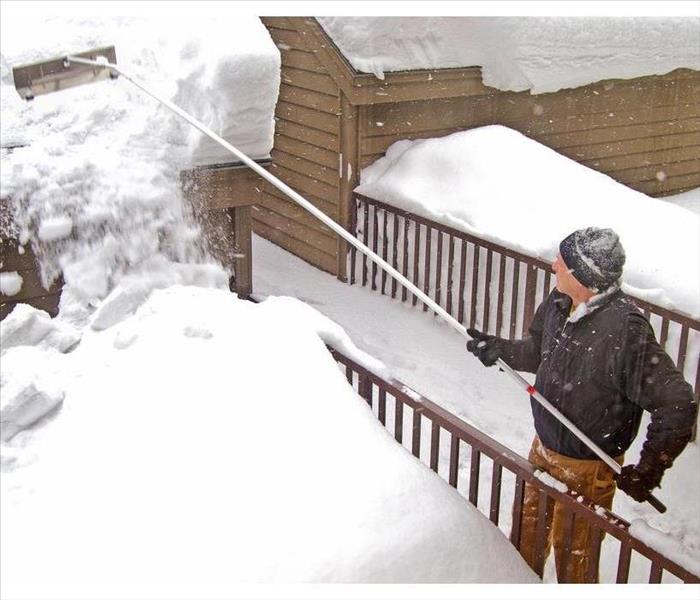 Start by removing all snow and ice from your roof and gutters.
Start by removing all snow and ice from your roof and gutters.
Dealing with Winter Storm Damage
Winter storms can be destructive, but they're also part of normal weather patterns. If you're hit by a winter storm, it's important to know how to deal with the damage as quickly as possible. This guide will help you assess the damage and clean up after a storm so that your home stays safe and protected from further damage.
Don’t Panic
When a storm is over, it's easy to let your emotions get the best of you and cause damage in the process. The key is knowing what steps to take as soon as possible after a storm passes so that you don't make things worse for yourself or your property. If a winter storm has left your home or business in need of repair, don't panic and use these tips for how to deal with winter damage.
Assess the damage
The first thing to do when a storm hits is to inspect your home for structural damage, like the roof being blown off or walls collapsing from high winds. If you have any doubts about the integrity of your house and its ability to withstand further weather-related damage, contact a professional contractor immediately for help assessing the situation. You can also call an insurance agent who can provide advice over the phone as well as assistance with filing claims in case of damage or injury related to winter storms (though keep in mind that most policies don't cover flooding).
The next thing to check for is water leaks. If you find that there's water leaking into your home due to pipes breaking due to freezing temperatures (which happens more often than one might think), then it's time now more than ever before we start acting as our grandparents did: put on slippers and go out there with some towels! Use those towels not only for wiping away puddles but also soaking up excess moisture so that it doesn't freeze overnight leading into tomorrow morning when classes start again after being canceled this past weekend due to all that snowfall yesterday afternoon while everyone else was getting ready
Clean up
Once the storm has passed, you need to clean up. Start by removing all snow and ice from your roof and gutters. This will help prevent further damage to your home. Next, remove any damaged items, such as tree limbs or shingles that have been torn off by high winds. If the item is small enough, you may be able to toss it into a trash bag yourself; otherwise, call in professionals for assistance removing larger items like trees.
Clean up any broken glass that results from windows being blown out or doors being slammed open during high winds—you don't want anyone getting injured! Finally, remove excess water that has accumulated inside of your home. It's essential not only for cleanup but also to avoid mold growth.
Protect Your Property
Winter storms can be a hassle, but there are things you can do to protect your property. First, make sure the power is turned off. Then close all windows and doors, and remove any valuables from the area. If you have a generator, it's best to use it outside.
Winter storms can be extremely damaging, but the worst part is the stress they create. If you find yourself in this situation, it’s important that you take action quickly. By following these steps and contacting SERVPRO of Stillwater & Guthrie immediately, you can get back to enjoying your Guthrie, OK home and life as soon as possible.
When is Carpet Replacement Required?
11/5/2022 (Permalink)
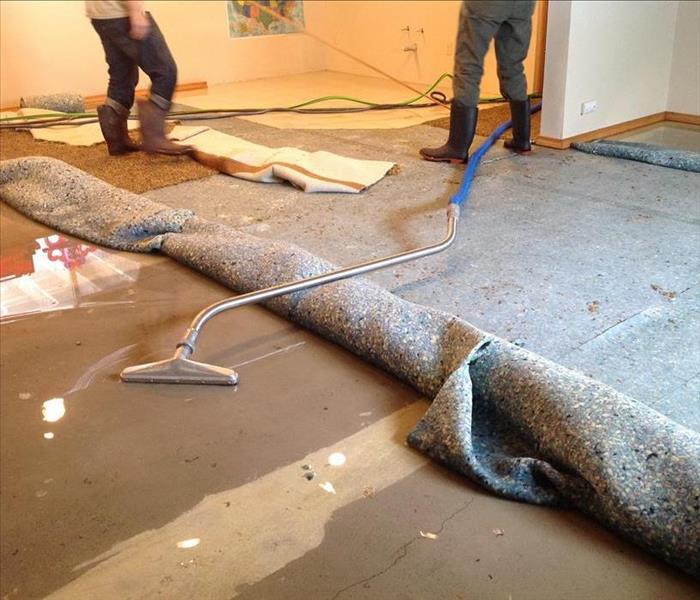 Carpet replacement in a Stillwater, OK home
Carpet replacement in a Stillwater, OK home
When Do I Need to Replace My Carpet?
Carpet replacement is more than just a cosmetic change. It can be the difference between having a clean home and one filled with bacteria. When should you replace your carpet? The answer depends on how often it gets used, how much foot traffic it gets, and how frequently it's cleaned. Here are some other factors to consider:
Water Damage and Carpet Replacement
If you have a leaky pipe or another clean water source, the carpet can be saved. The key is to dry the area as quickly as possible. If water sits long enough, it will begin to break down and ruin the fibers of your carpet.
If your carpet has been exposed to any type of dirty or soiled water (think: mud or blood), then replacement is necessary because these types of contaminants cannot be cleaned out effectively. In addition to being stained, they also introduce bacteria that could potentially cause mold growth in your home over time.
If the water source is clean, such as a pipe burst or supply line, you may be able to save your carpet. However, if it’s been wet for more than 24 hours, your carpet may be unsalvageable.
Carpet Damage from Mold
As you know, mold is a fungus that grows in damp and dark places. This can be anywhere from your basement to inside your carpeting. When water spills onto the carpet, it will have nowhere else to go but into the padding underneath the carpet. The padding then becomes wet and gives way to mold growth.
The worst part about mold on your flooring is that it can take up to two weeks for the smell of mildew to dissipate once dry. This means that you'll need professional help if you want everything back to normal by then!
It's important to know how much water damage is acceptable and how much water damage is too much. The following sections provide information on determining whether or not your carpets are salvageable, as well as tips for determining when it's time to start shopping for new carpeting.
In general, there are three main indicators that your carpet has experienced enough damage for replacement:
- The amount of visible mold growth or mildew on the flooring;
- How long it takes for moisture from the damaged area to evaporate; and
- If there are any signs that an odor remains in the room after it has been cleaned up (i.e., a lingering smell like mildew).
When should you replace your carpet? The answer to this question depends on a few factors. Age, type of water damage and amount of damage will all play into whether or not it becomes necessary for you to replace your carpets. If you have any questions about replacing your carpeting in your Stillwater, OK home or business, or if you would like more information about the process please feel free to call us at (405) 332-2122.
Water Damage Is a Result Of Fire Damage
10/13/2022 (Permalink)
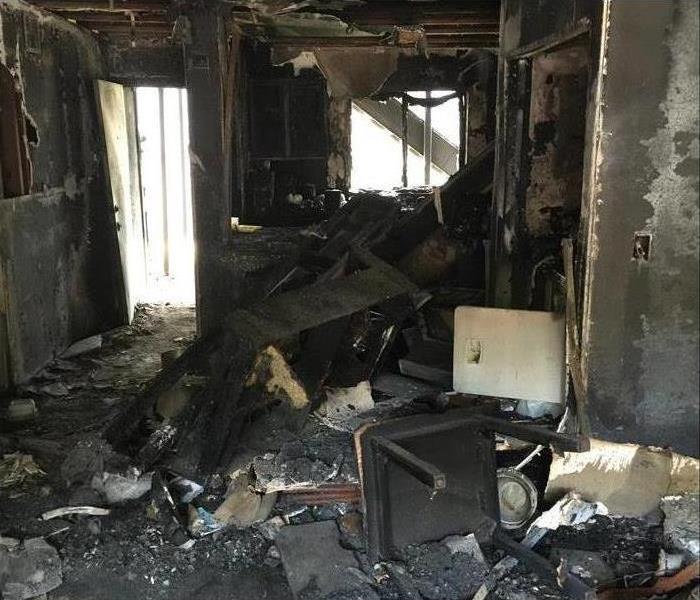 Fire damage in a home
Fire damage in a home
A Lot Goes Into Fire Damage Cleanup and Restoration
The fire damage cleanup process can be overwhelming, especially if you are unfamiliar with the steps involved. Here are some helpful things to know when your Stillwater home or business catches on fire.
Water Damage Accompanies Fire Damage
The sprinklers go off and the water you see in your home is actually water that was used to put out the fire, but it’s still wet. This is why you need to have water restoration services come out to help with getting rid of the excess moisture in your home.
The main thing you need to understand about this is that it can happen anywhere: at any time, even though there may be no visible signs — like smoke or fire — present in your home or building beforehand. So don’t wait around for something bad to happen—knowing how much damage can occur if an unexpected event does occur will give you peace knowing that everything will be taken care of from start (getting rid) until the finish (getting back into shape)
Smoke Damage
Smoke damage is a result of fire damage. Smoke and soot residue can be very difficult to remove, especially if you do not catch it early enough. The longer that smoke remains on your property, the more permanent staining and damage will occur. If you want to avoid these types of issues in the future, make sure that you call us right away after any fire emergency so that we can help you clean up quickly before the problem gets worse.
Cleaning up the ash and smoke residue requires more than a mop and bucket (and a few rags). To remove ash and smoke residue, you need professional cleaning equipment. Do not use a mop and bucket. Do not use rags or bleach, ammonia, vinegar, or baking soda.
Protect Your Furniture and Linens
If your home has been damaged by fire, you will likely experience a lot of smoke and soot. This can cause permanent staining to furniture if not properly protected.
As soon as possible, cover all of your furniture with plastic wrap or tarps to prevent the soot from getting on them, then move them to a safe location where they won't be in the way. Remove any drawers or doors from your furniture before covering it as well!
If you have clothing or linens that have been damaged by water or smoke, wash them immediately in cold water on the gentle cycle. If there are stains, use a commercial stain remover before washing. Do not use bleach to clean the items; bleach can cause the colors to run and may make the odor worse over time. Once you are able to wash your items, place them in plastic bags and keep them away from heat sources like radiators or dryers until they are completely dry (this could take several days).
Turn Off the Electricity
Do not use electrical appliances until they have been professionally cleaned and inspected. Turn off the power supply at the main circuit or fuse box. Do not use electrical appliances until they have been professionally cleaned and inspected
Leave it to the Professionals
If you are unfortunate enough to experience a fire in your home, do not attempt to clean up the mess yourself. Professional fire cleanup is a specialized field that requires highly trained professionals and expensive equipment. It is also extremely dangerous for untrained individuals
If you have experienced a fire in your home, it’s best to contact an insurance company as soon as possible so they can begin the damage assessment process and send out an adjuster who will assess how much your damages were worth before cleaning begins
They will also help provide guidance on whether or not you need to file an insurance claim against another party (such as another tenant) or submit additional documentation to your insurance or the police
If your home or business has caught on fire, give us a call. SERVPRO of Stillwater & Guthrie is here to help. We’ll do everything we can to help you get things back to normal as soon as possible
3 Steps To Find Out if You Have Mold
8/30/2022 (Permalink)
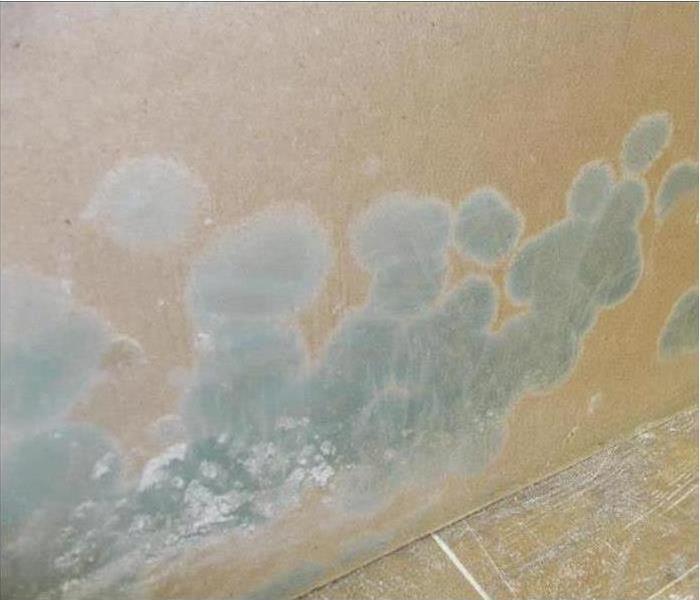 Moisture leads to mold growth.
Moisture leads to mold growth.
How To Tell If There's Mold In My House
While mold spores may be everywhere, most homeowners never want to have to run a mold test. The good news is that you can take steps to identify this fungus and have it removed before it becomes a problem.
1. Know What Mold Looks Like
Any indoor environmental specialist will tell you that mold is everywhere. That's because this tiny fungus gives off spores that float throughout the air. The problem is that these spores can grow anywhere they land and find moisture. That means any damp place in your home in Sumner, OK, is a potential home.
The good news is that you don't need to be a mold remediation professional to spot growth early. The easiest way to tell if you have mold is to know that it often starts as small black dots. You can easily identify it in your shower's grout lines, on damp walls, and outside on wood surfaces.
2. Look for Leaks
If you notice mold on an exterior wall, it isn't time to call an indoor environmental specialist yet. Instead, you need to check for an exterior leak in your house. Inspect the surrounding vents, flashing, doors, and windows. If you notice mold on interior surfaces, check the surrounding area for interior leaks. Any leaks are just going to lead to future mold problems. Therefore, you are going to need to fix these before you can truly fix the mold.
3. Know How To Remove Mold
While hiring an indoor environmental specialist is often the recommended strategy, some people prefer DIYing mold removal. If this is the case, you need to protect yourself and the rest of your home by wearing old clothes, using PPE, ventilating the area, disposing of porous materials, moistening very moldy areas before removal, turning off the HVAC unit, and keeping a shop vac handy.
Mold growth is not something a homeowner wants in their house. Therefore, you need to be ready to identify growth, remedy the source, and remove it to protect your home.
3 Ways To Remove Smells From Your Microwave
8/28/2022 (Permalink)
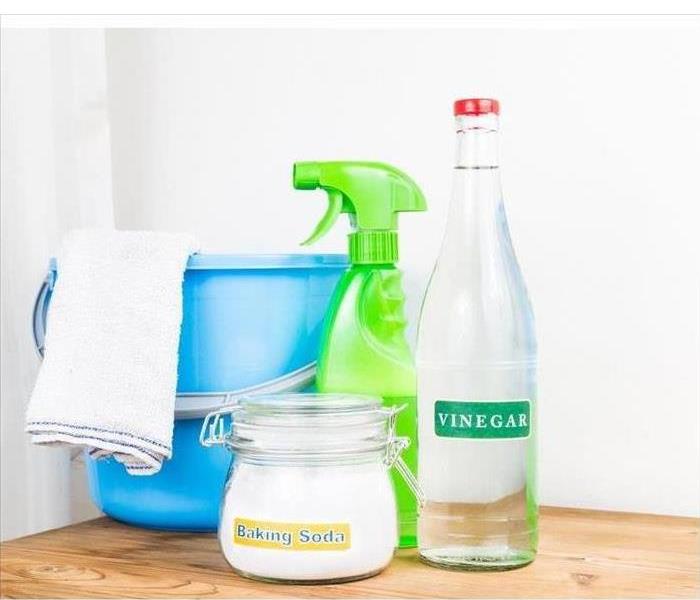 Vinegar and baking can remove smoke odor from your microwave.
Vinegar and baking can remove smoke odor from your microwave.
DIY Solutions You Can Use To Remove Odor From Your Microwave
If you're like most people, you probably use your microwave a lot. They are used by everyone, from those just learning to cook to master chefs. However, with use comes accidents that can leave a nasty smoke smell in your appliance. Fortunately, there are several DIY solutions that you can use to remove this odor from every crevice.
1. Vinegar and Baking Soda
You probably have these pantry staples in your home in Guthrie, OK create the toughest DIY solution for tackling a lingering smoke smell. To use this method, gather the vinegar, baking soda, and a clean sponge. Let the sponge saturate with vinegar and pour baking soda on it. Heat it inside the appliance for 20 seconds. When it is finished, use the sponge to clean the inside. Wipe this off with a soapy sponge and dry it with a towel.
2. Baking Soda
If you're fresh out of vinegar, you can use plain baking soda. Clean your appliance as normal and place an opened box of this cleaner inside. If you buy the big boxes, you may want to place a generous amount in a bowl and place inside. Let this sit overnight to fight smells.
3. Coffee
Coffee is another pantry staple that can remove your stubborn smoke smell. To use this option, put two tablespoons inside a mug and add water. Heat the solution for two minutes, stopping it if it starts to boil. Let it sit for a minute and repeat. Check the amount of water, add some if it is low, and repeat. Keep repeating the two minutes of heat and one minute of rest. When you have reached 10 minutes of heating, remove the cup. Often, this will remove the smell without any additional effort. If it doesn't, it may be time to call a fire restoration company to have them remove the odor.
This appliance is your kitchen's workhorse. To get inside the tightest spots, like the vent grill, you should use one of these DIY solutions. They can tackle even the worst smells.
How To Clean Black Mold in Commercial Air Ducts
8/23/2022 (Permalink)
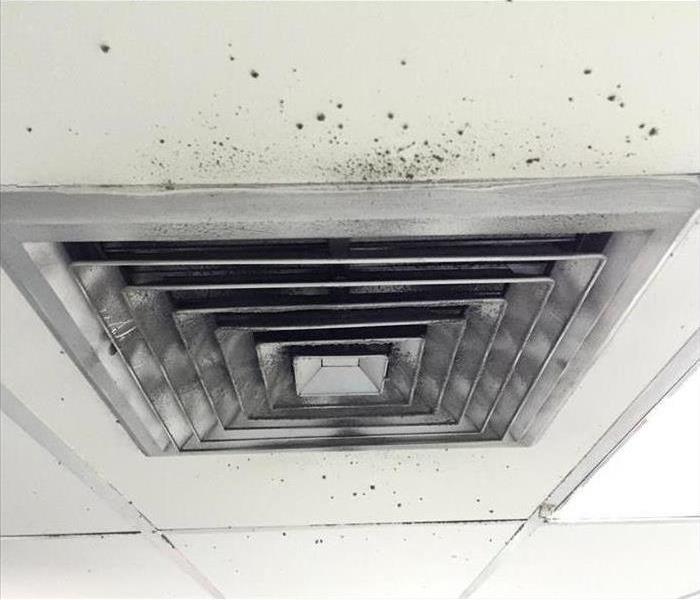 Black mold thrives in air ducts.
Black mold thrives in air ducts.
Air ducts are a haven for black mold. When is the last time you had your ventilation system professionally cleaned? As a commercial business owner, you know that costly repairs can seemingly come out of thin air. This time, they're coming out of your air vents.
Signs of Mold Overgrowth in Air Ducts
Watch out for these classic signs of vent contamination:
- Black, dusty, hard-to-remove patches around air vents
- Musty smell upon turning on the AC
It's always possible that mold overgrowth goes undetected. For this reason, it's best to remain vigilant and keep clean ducts.
How To Clean Ducts
Cleaning an air ventilation system is not an easy task. For this reason, it's best to consult a professional right off the bat. Attempting this feat alone is not only time-consuming, but it could be harmful to you and your clients in the building. If not done properly, attempting to remove black mold may accidentally exacerbate the issue. Luckily, there are some simple steps you can take instead.
Contact an expert in Perry, OK.
The right mold remediation professionals will verify that mold is indeed present.
Cleaning will begin, and if spread to insulation, insulation will need to be replaced.
The professional team will use the correct cleaners and tools while disinfecting your commercial air ducts.
Once done, now it's your turn: prevent mold regrowth!
How To Prevent Mold Regrowth
Step five is arguably the most important step. Taking the necessary precautions to prevent black mold from reappearing will save you and your commercial business tons of time, money, and stress. In order to stop the fungus from thriving, you need to first locate the source. What is causing the mold to prosper? Air vents are naturally a breeding ground for mold, so regular duct maintenance can mitigate this risk. Make sure the AC filters are changed out periodically. Reduce moisture and humidity in your commercial space. Use natural air circulation when possible, like opening a window. Keep the aforementioned tips in mind, and mold won't have a chance to damage your livelihood.
Understanding Flood Water Types
7/30/2022 (Permalink)
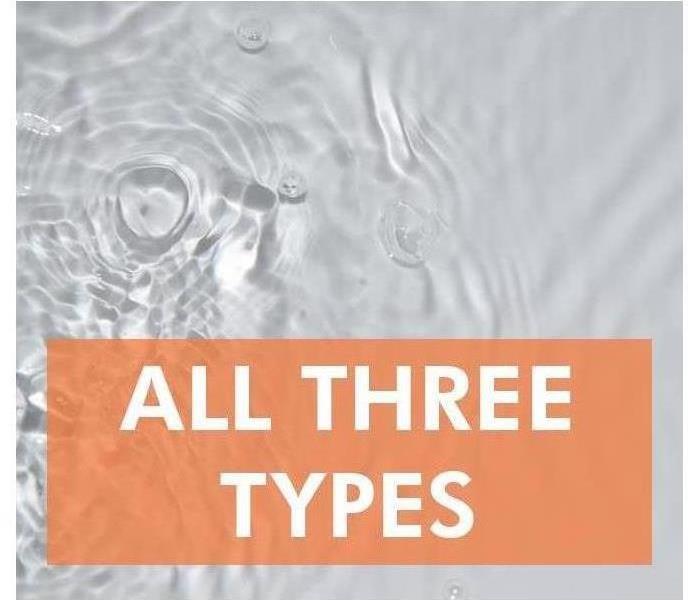 Identify your water type and talk to a water damage specialist to schedule proper removal.
Identify your water type and talk to a water damage specialist to schedule proper removal.
Knowledge of Flood Water Types
Water can be a priceless resource for drinking and cleaning. But dirty water can be a major danger to your home. Be it from a flood, a backed-up supply line or even an overflowing toilet, contaminated water poses a major threat if it isn’t properly cleaned up. What are the three main types of water to look out for in your Stillwater, OK home? Read on for the answers.
Different Water Sources
Of course, all H2O is chemically the same. Differences come down to where it comes from and more specifically, what materials it may have encountered. The main three categories of flood water are:
- Clean water
- Gray water
- Black water
The latter two are forms of contaminated water that can be a major threat to your health.
Clean Water
When it comes to flooding, clean water is the least offensive type. This water typically comes from roof leaks, appliance malfunctions, tub overflows, or any other source that does not naturally involve human or animal waste. The main threat from this type of water is mold and mildew damage.
Gray Water
As its name suggests, this type of water falls in between good and bad. This is mildly soiled water due to its origin. It may be tainted by microorganisms, and typically comes from sump pump failures, toilets, or dishwashers. Gray water should be removed quickly to avoid progressing to the next level.
Black Water
By far the worst type of flood water to encounter, black water carries significant health hazards. Stemming largely from toilets, this water is pathogen-rich and often contains urine or feces. This water can carry hepatitis, cryptosporidiosis, gastroenteritis and more so it’s important it’s professionally removed, fast.
Understanding if contaminated water is causing your home damage is an important step in making a cleanup plan. Identify your water type and talk to a water damage specialist to schedule proper removal.
Flood Safety Tips for All Stages
7/20/2022 (Permalink)
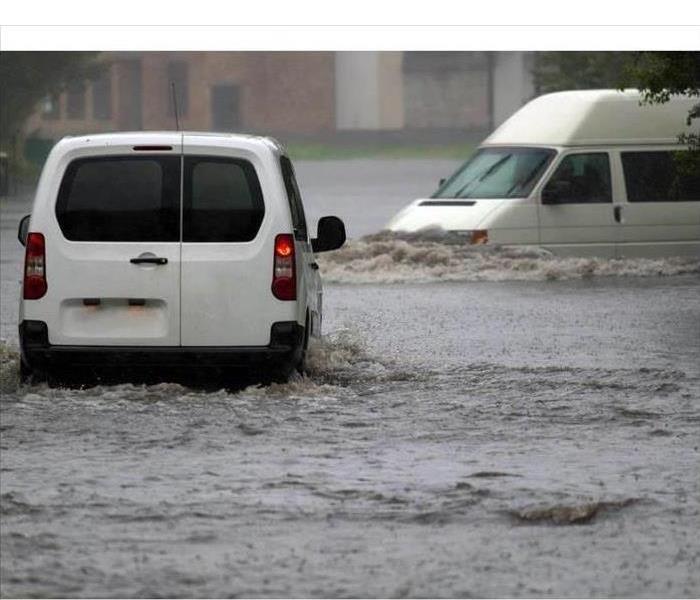 Never attempt to drive into a flooded street
Never attempt to drive into a flooded street
Tips for Flood Safety
While natural disasters are simply out of your control, preparing for a disaster is something you can see to. If you live in an area where floods are possible, there are some things you can do before, during, and after to minimize damage. Here are some safety tips at each stage of a flood.
Before a Flood
Floods are particularly devastating because they happen with little to no notice and can cause significant damage, injuries and even death. Although you can’t prevent this unexpected event, here are some flood safety preparation tips:
- Install non-carpet flooring
- Prepare an updated emergency kit
- Find out where relocation centers are located
- Make sure you have flood insurance
- Store important documents in a waterproof container
During a Flood
If your safety is not in jeopardy and you have time to prepare your home for a flood, you can lessen the amount of damage that occurs. First, move furniture, rugs, electronics, and valuable items to higher ground. Second, make sure you have your important documents either stored in a waterproof case or bring them with you if you’ll be leaving. Other safety tips include listening to the local radio for warnings and instructions, grabbing an emergency kit with essential supplies to take with you, and shutting off all utilities. If possible, empty your fridge and freezer and leave doors open to minimize damage if they float.
After a Flood
Flood safety is paramount to preventing injury and loss. Never let your children play near floodwaters and never attempt to drive into water of unidentified depth. Once it’s safe to return to your Navina, OK, home, the best thing you can do to minimize loss or harm is to contact a water damage specialist. If you feel it’s safe to enter your home, exercise extreme caution because walls and ceilings may be compromised. Check for damage and take pictures for insurance claims.
Preparing yourself and your home is important if you live in a flood-susceptible area. Adequate flood safety knowledge can help lessen injury, damage and death.
How To Handle Sewage Cleanup
7/15/2022 (Permalink)
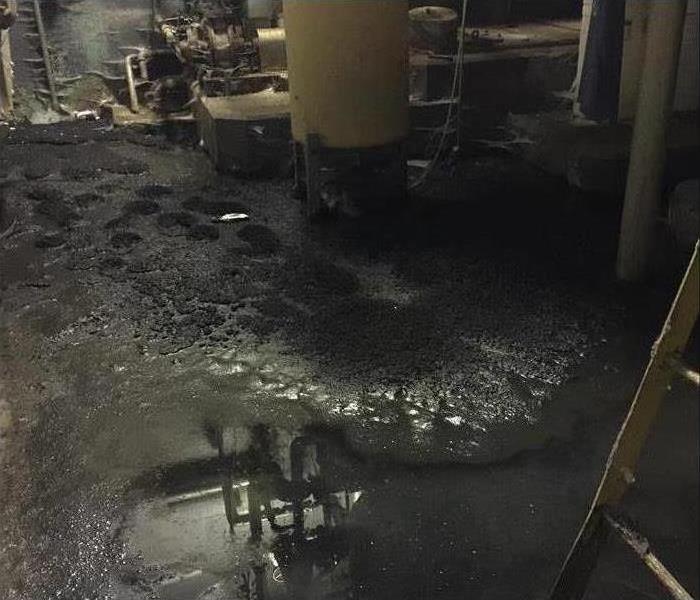 Sewage backup in Ceres, OK
Sewage backup in Ceres, OK
How To Handle Sewage Cleanup
Category three water from a sewage spill poses several dilemmas for commercial owners in Ceres, OK. The fluid has not only created water damage, but it hosts hazardous microbes that need to be removed. Therefore, to create a safe work and sales environment, proprietors need to seek professional help with their sewer cleanup, hiring a water and mold remediation company. The experts can ease the process, bringing with them the resources to handle documentation, cleaning, and rebuilding.
1. Fix the Source
Before any sanitizing can begin, crews need to evaluate the trouble's origin. This means a close inspection of the pipe system, inside and out. For example, a sewer backup can happen for several reasons:
- Obstacles blocking the flow
- External elements harming the mainline
- Damage to the internal system
Find the source, and make repairs. You don't want this event to repeat itself.
2. Evaluate Damages
The next step in sewer cleanup is to examine what has been ruined. Then, establish the procedures needed to get operations back up and running. Here, the company brings in specialists to examine walls, floors, and moisture levels. Specialists not only take air and drywall samples, but they'll measure the wetness in areas. This data is documented thoroughly, through writing and photos, and this information is used by trained staff to determine if something can be salvaged or must be removed.
3. Dry and Sterilize
A flooded toilet, unfortunately, means polluted floors and baseboards. Expect workers to begin tearing out materials. Then, they'll pull in industrial dehumidifiers that should run around the clock. Daily checks can be completed, and the equipment should be removed when employees deem it is dry enough to meet the company's high standards and IICRC expectations. In addition, the room is sterilized, destroying any remaining microbes.
4. Restore and Rebuild
Finally, with cleaning mostly done, the lead manager can arrange for final replacements and fixes, getting your shop back to functional operations.
With high national standards and continued training, SERVPRO completes all aspects of sewer cleanup. This one-stop-shop efficiently fixes the issue, giving owners and insurers excellent care and a sterile atmosphere.
How to Meet Flood Cleaning Requirements After a Residential Flood
6/27/2022 (Permalink)
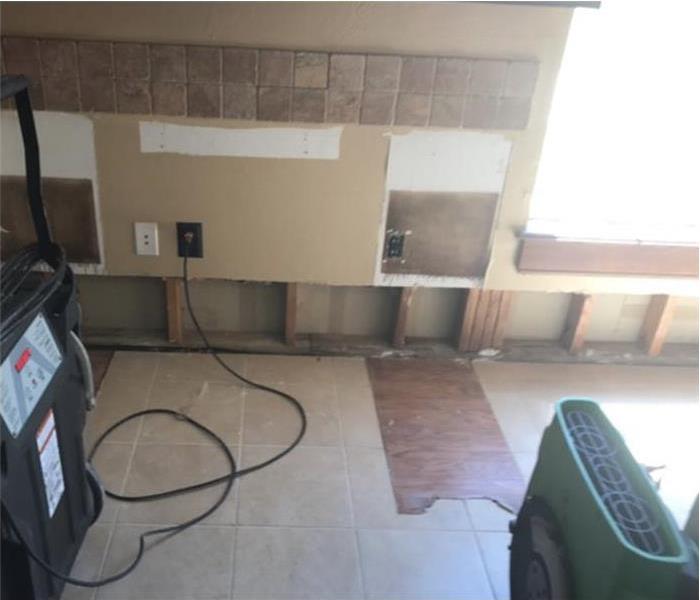 Drying property after water damage in Sumner, OK.
Drying property after water damage in Sumner, OK.
How to Comply with Flood Cleaning Requirements Following a Home Flood
After a residential water incident, the flood cleanup process can feel like a long road. As you seek out cleaning requirements, remember that proper restoration will bring your home back to safety and suitability. Focus on the following essential prerequisites before resuming residence.
Work with an Electrician
Because water can have such a detrimental effect on electric outlets in a home, never begin flood clean-up efforts without the approval of a professional electrician. Hire an electrician to help in the following ways:
- Inform homeowners of downed power lines near sitting water
- Inspect water damage sustained to electrical outlets and fixtures
- Recommend professional cleaning services for electronic appliances
Focus on Drying
Once an electrician clears your home for the pursual of cleaning requirements, the first thing you should focus on is drying. Everything will need thorough drying from the home structure itself to all of the affected goods inside. Take pictures for insurance purposes of items that must be discarded because they are unsalvageable.
Pull back carpets and other flooring surfaces then use fans or fresh air to dry out the sub-flooring. If possible, open windows to create greater airflow throughout the building. If bedding or clothing gets wet in the flood, wash it thoroughly with hot soapy water and dry it on high heat to kill any bacteria.
Tackle Sanitation
At last, when the drying process has been completed, proper cleaning can be done with a few sanitation efforts. Some materials such as soaked wood or upholstery will have got to go. Plush animals and other difficult-to-wash items should also be disposed of. Sanitize all non-porous surfaces to reduce the chances of producing mold. Most surfaces can be sterilized using a heavy-duty flood disinfectant cleaner or a bleach and water solution.
When dealing with a home flood in Sumner, OK, the cleaning process can take time and effort. As you set-out to meet cleaning requirements, make safety and proper restoration the goal of your endeavors.
Learn About the Top Strategies for Preventing a Hotel Fire
6/19/2022 (Permalink)
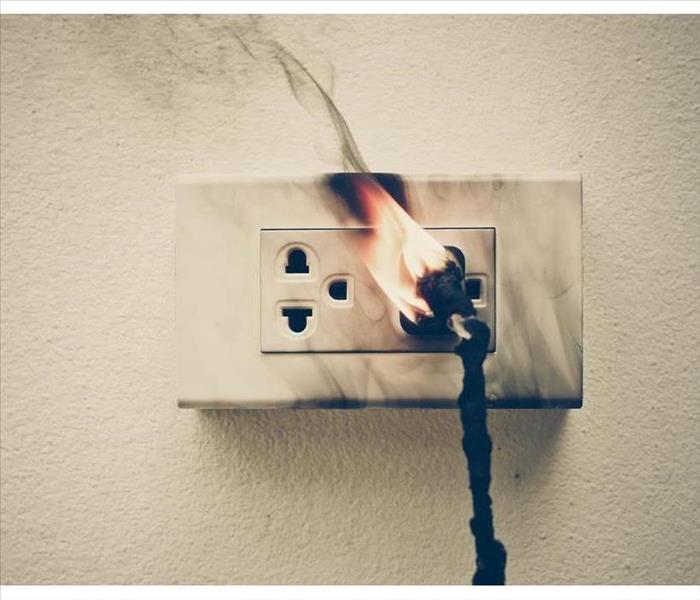 Faulty electrical sockets can spark a fire.
Faulty electrical sockets can spark a fire.
Strategies for Preventing a Hotel Fire
A hotel fire is a disastrous situation that endangers multiple people and destroys large amounts of property. Preventing one can be challenging since various potential factors can ignite it. Thankfully, you have employees who can look after the entire building. Learn about some of the top prevention strategies you will need to protect your Guthrie, OK, hotel.
Review Potential Hazards
Your facility has a large number of potential hazards that can spark a fire. Record every item and operation inside the hotel and then create a list of all possible scenarios such as:
- Defective electric appliances
- Damaged wires
- Faulty electrical sockets
- Blocked ventilation
- Improperly disposed cigarettes
- Cluttered kindling (furniture, paper, chemicals, etc.)
Predicting these risks can help you create solutions for each one. The hotel's conditions can change over time, so it is important to constantly update these assessments.
Encourage Fire Prevention
Reducing the chances of a hotel fire is a task you cannot accomplish alone. Your staff can assist you whenever possible. Besides basic information such as evacuation routes and extinguisher locations, they should also know prevention tactics. Use information from the fire hazard evaluations to encourage safety practices such as thoroughly cleaning rooms and reporting incidents and malfunctioning devices. Take it a step further and kindly encourage guests to follow these guidelines as well.
Assign Fire Wardens
Although everyone should know prevention and evacuation procedures, there should be established leaders who can help others. Fire wardens can fulfill leadership roles that involve thwarting and responding to fires. Some of their responsibilities include directing guests to safety, informing crew members about fire hazards and disclosing information to you, emergency response agents and fire restoration technicians. Assign wardens to their own floor and ensure they know the layout, the guest list and other crucial information.
Preventing a hotel fire can sound like an overwhelming feat due to the building's size and population. If you and your employees follow the right prevention strategies, you can minimize or outright avoid a disaster.
Follow These Easy Steps to Clean Your Gas Range
6/6/2022 (Permalink)
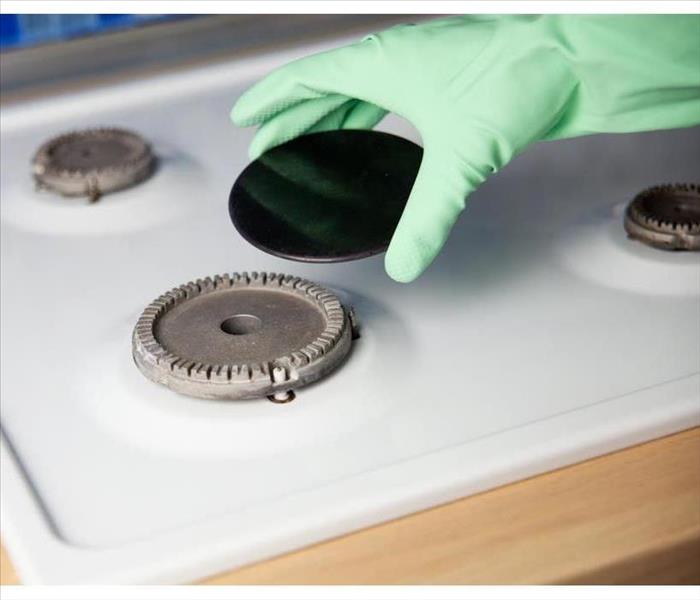 Gas stoves need regular maintenance work to prevent accidental fires
Gas stoves need regular maintenance work to prevent accidental fires
Clean Your Gas Range
Many people delay cleaning due to a lack of time or know-how. But gas stoves need regular maintenance work to prevent accidental fires or unpleasant charred smells in your Perry, OK, home. Save time and prevent fire hazards by following these simple steps to clean your gas range.
1. Preliminary Cleaning
Always make certain your range is turned off before you begin cleaning!
First, fill a sink or large bowl with hot water and dish soap. Remove the grates and burner caps from the stove and soak them in soapy water. Next, use a dry paper towel or brush to scrape off loose debris from the stovetop. Don't forget to lift off the burner heads and clean beneath them, too. Clearing away food particles helps prevent a smoke smell during cooking.
2. Scrub Away Stains
Make a 1:1 solution of vinegar and water and use it to spray down the gas range until the entire surface is wet, including the dials. Let sit for one minute, then wipe the range with a clean paper towel or rag.
The vinegar solution may not remove all stains. If any stubborn marks remain, dip the head of a toothbrush or other small brush in dish soap and use it to scrub the range until the stains are lifted. Remove any remaining grime with a wet towel.
3. Clean Removeable Parts
Take the grates and burner caps out of the soapy water. Remove any remaining grease with the brush from the previous step. Then, use a pin or needle to clean between the tines of burner heads.
4. Finish Range Cleaning
Dry off the removable range parts and place them back in their proper positions on the stovetop. Congrats, you're done cleaning!
Cleaning is a necessary chore, but it doesn't have to be hard. Clean your gas range in no time by following these conveniently organized steps. If your gas appliance has smoke or fire damage, contact a trusted fire restoration company to discuss your options.
Does Your Apartment Have Mold? Be Sure To Do These 4 Things
5/26/2022 (Permalink)
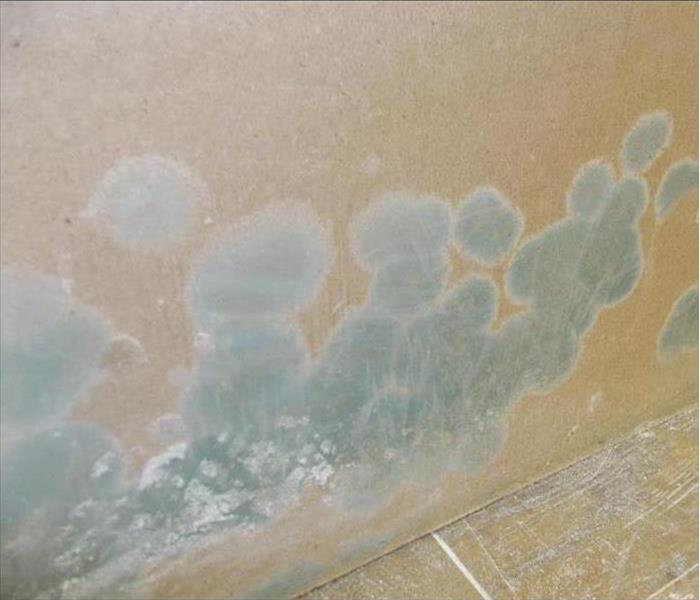 Moisture leads to mold.
Moisture leads to mold.
What To Do When You Discover Mold In Your Apartment
Mold cleanup in an apartment involves two parties: the landlord and the tenant. How the problem is handled depends on several factors. Management focuses on the property's structure, caring for pipe breaks or roof leaks. Tenants, on the other hand, concentrate on the internal environment, keeping it dry and sanitary. If renters in Stillwater, OK, suspect mold, keep in mind the following four things.
1. Consider the Cause
Mold becomes problematic when it interacts with moisture. The first consideration, then, is considering what triggered the mold spores to grow? Think about personal decisions. Are you taking steamy showers that increase dampness in the bathroom? Are you running the air conditioner properly to level the humidity and cool air? Personal choices in the home could create wetness, permitting fungus growth. Correct these actions immediately to mitigate the problem.
What if it's a larger structural issue? Seek assistance from building management instead.
2. Contact the Landlord Right Away
Building repairs are handled by the landlord, so take pictures of any mold appearances, emailing them to the management company. Mold cleanup has to start with fixing the water source. The owners should respond quickly to water damage. Be sure to emphasize the amount of moisture and your concern about fungal spores.
3. Permit Assessment
The landlord should work with a mold restoration company, to evaluate the premises and promptly start remediation efforts. Mold contamination includes blocking off the impacted section and eliminating dampness. The team extracts saturated materials such as carpeting and drywall. They also look over personal belongings to determine whether they may be cleaned or tossed.
4. Concentrate on Keeping Things Dry
While the crew attends to the affected room, residents keep an eye on the water exposure, filling them in about any additional developments. Clean up spills, keep the humidity on target and report anything amiss. Don't wait to tell the landlord about any concerns. Proactive, quick measures are essential.
Mold cleanup centers around the cause of moisture trouble. Renters should strive to keep things free of excess fluid while the landlord tends to structural concerns.
4 Ways To Prevent Home Water Damage
5/18/2022 (Permalink)
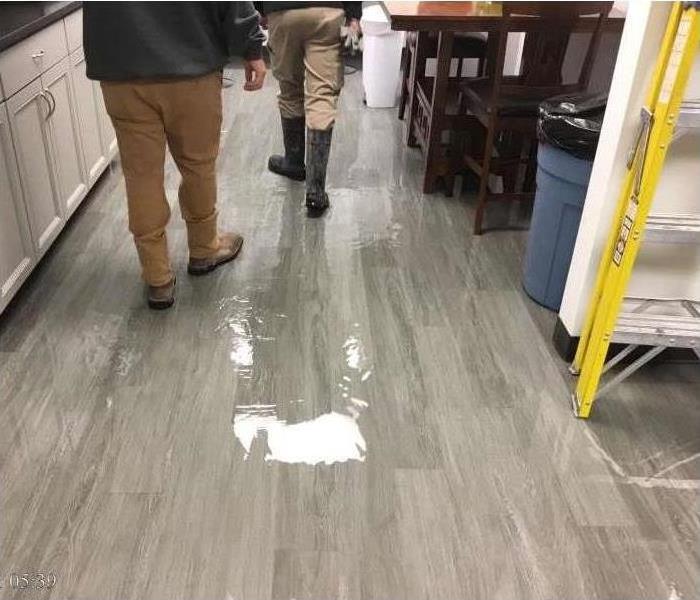 A kitchen leak causes damage to a home in Navina, OK.
A kitchen leak causes damage to a home in Navina, OK.
Protect Your Home From Unexpected Water Damage
Imagine returning from vacation only to find your home flooded and in need of a water pipe repair and cleanup from a water damage restoration company. Those who leave their house unattended for days at a time can be susceptible to water issues though in many cases, this is preventable. Follow these four tips to protect your Navina, OK, home from unexpected water damage.
1. Check for a Possible Broken Pipe or Leak
Inspect areas of your home for potential leaks, including your roof, water heater and pipes underneath all sinks. Detecting any broken pipes or troublesome leaks before leaving on a trip and addressing them right away can save you many headaches of coming home to surprise water damage.
2. Enlist Someone to Watch the House
If you plan to be away on vacation, it's wise to arrange for someone to stop by your home periodically and check on things. Make them familiar with your home's water main shut-off valve so the water supply can quickly be stopped in case an emergency water pipe repair is needed. If no one is available to do so, shut off the water main before leaving your house.
3. Clear Out Gutters
A simple way to prevent water damage is to clean your gutters. If clogged, water may not flow freely out of the downspout and can instead seep into your home. Be sure to check the state of your gutters before spending any significant time away from your house.
4. Be Mindful of Insulation
Never leave your house empty for a long period without considering its insulation first. Exposed pipes need proper insulation in freezing weather to prevent them from bursting. The best way to prevent this type of water pipe repair is to leave the heat on in your home during cold stretches.
Before your next trip, follow these simple steps so you can leave with the peace of mind that your home is best protected from water damage.
3 Reasons To Leave Puffback Soot Cleaning to the Pros
5/11/2022 (Permalink)
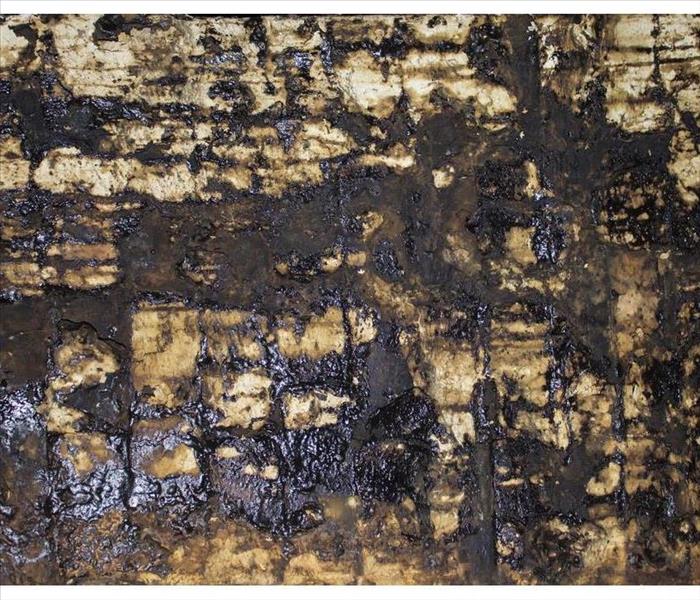 Puffback damage cleanup should be left to the pros.
Puffback damage cleanup should be left to the pros.
Puffback Damage Cleanup
When the temperature drops at the office in Ceres, OK, you probably just flip on the heat without a second thought. If you have an oil furnace, you might have been warned about puffback. Puffback is caused by incomplete combustion at ignition, which causes soot particles to fly through the heating system into the office.
Puffback damage cleanup should be left to the pros. Puffback can happen slowly, and you might think your janitorial team is doing a poor job. Or it can happen quickly, and there is suddenly soot everywhere. Here are three reasons to leave puffback soot cleaning to the pros.
1. Puffback Soot Is Sticky
In a typical fire, soot presents as fine, light dust. Furnace puffback happens in an oil furnace, and so the soot contains oil. It spreads through the office and coats every surface in a sticky coating that can't be easily removed. A commercial restoration company has specialized equipment to handle puffback soot.
2. Puffback Soot Can Spread
Because incomplete combustion occurs in the furnace, soot spreads throughout the entire HVAC system. Where heat should be the only thing coming out of a heater, sticky soot comes too. Puffback soot can get behind doors, into draws, and sticks in fabrics, including clothing, carpet, and curtains. Puffback damage can be worsened by trying to clean it by scrubbing or vacuuming.
3. Puffback Soot Does Real Damage
As soon as you realize that there is a puffback problem, call a professional. Puffback soot damages electronics because it gets into servers, keyboards, and hard drives. Pros have a cleaning process that can carefully restore your delicate electronics and protect your data.
Puffback damage can dramatically impact your office's productivity. A professional cleaning company should always handle Puffback soot to protect your belongings and your office space.
How Property Managers Can Prepare for Hurricanes
4/25/2022 (Permalink)
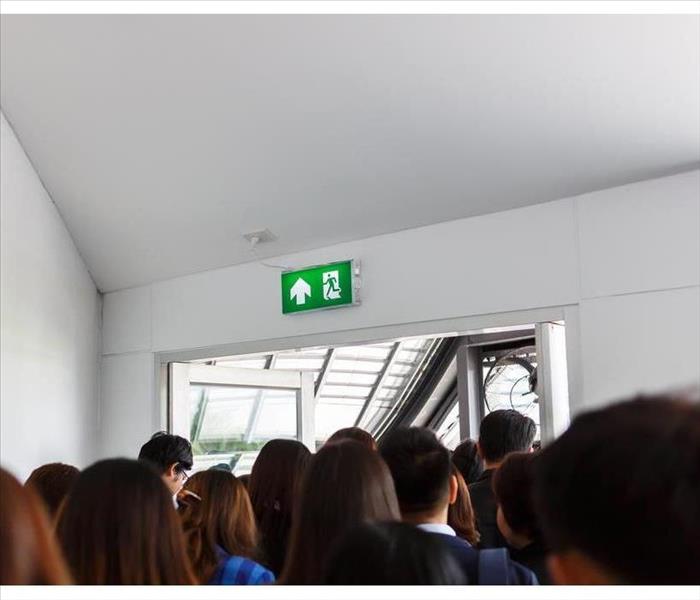 If a mandatory evacuation is put into place, none of your staff should stay on the premises.
If a mandatory evacuation is put into place, none of your staff should stay on the premises.
Preparation Tips for Hurricanes
As a property manager, you have a lot of responsibilities. One of them is storm preparedness. Hurricanes in Sumner, OK, can be particularly dangerous, so you need to make sure your building is ready for excessive rain and winds. Here are some preparation tips.
Contact Information
You should have an emergency contact list for everyone on your property. The list should include:
- Names
- Individuals with special needs
- Email addresses
- Cell and home phone numbers
Documentation
Once the hurricane is over, you will need to file a claim with your insurance company. The insurer can often help you with storm-related expenses, including remediation and cleanup services.
To expedite the claims process, you should take time-stamped videos or photos of your property prior to the storm. The pictures should document the exterior of the premises and any common areas. Store the images off-site or back them up digitally so you can show them to the claims adjuster.
Maintenance
Cleaning the exterior of your property is important for storm preparedness. Before the storm arrives, you should empty the dumpster and secure any large outdoor items. Be sure to trim trees close to the building, as well.
Staff Delegation
As the hurricane approaches, make sure all of your staff members know their responsibilities. Front-desk workers, managers and engineers should remain on-site for as long as possible so they can assist everyone in the building. Once the winds increase, essential employees should work together to mitigate damage to HVAC systems, water pumps and other important equipment.
If a mandatory evacuation is put into place, none of your staff should stay on the premises. Before your employees leave, give them a phone number or email address that they can contact to find out about returning to work. As the property manager, you should be the last person to evacuate the property.
Storm preparedness is a necessary part of property management. The above tips should help you secure your building and keep everyone safe.
A Few Things To Know About Mold Testing
4/14/2022 (Permalink)
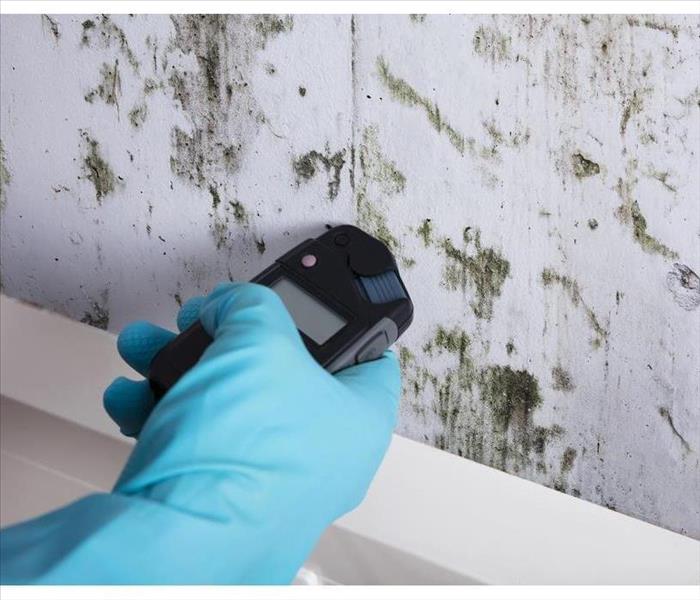 Mold Testing in Stillwater, OK.
Mold Testing in Stillwater, OK.
What You Should Know About Mold Testing
There are several reasons you might suspect you have a mold problem in your commercial building in Stillwater, OK. Signs include the presence of musty odors or the onset of health issues such as itchy eyes or a runny nose accompanied by frequent sneezing. An indoor environmental specialist can help you determine if excessive mold is present even though there are few if any visible signs. This professional should have experience and training in mold-sampling protocols. The specialist should have the equipment to perform tests and the knowledge to accurately interpret the results. The entire procedure should follow methods recommended by the American Industrial Hygiene Association or other professional organizations.
An Accurate Mold Test
When testing for the presence of mold, it is important the test be reliable and accurate. DIY testing kits are likely to produce ambiguous results, making it unclear if mold is actually a problem or if it just exists in small quantities. There are many benefits of working with a qualified indoor environmental specialist:
- Advanced training
- Specialized equipment
- Professional certification
- Clear results
A specialist will also work with other technicians to develop a remediation plan. This will ensure that all troublesome mold colonies will be removed in a way that will prevent a reoccurrence of the problem.
A Quality Cleanup
A professional mold remediation franchise has the resources to treat the trickiest situations involving mold growth. SERVPRO technicians are always Here to Help. They have seen it all and they know how to contain the spread of mold and clean mold from air ducts and other difficult locations. They use best practices for stopping fungal outbreaks with powerful cleaning agents. An indoor environmental specialist is just one of several technicians that ensure a lasting cleanup of your property. Mold will almost never go away on its own and it is resistant to many types of regular cleaning methods. Professional remediation is your best choice.
The Essential Items To Include in Your Business Emergency Kit
4/6/2022 (Permalink)
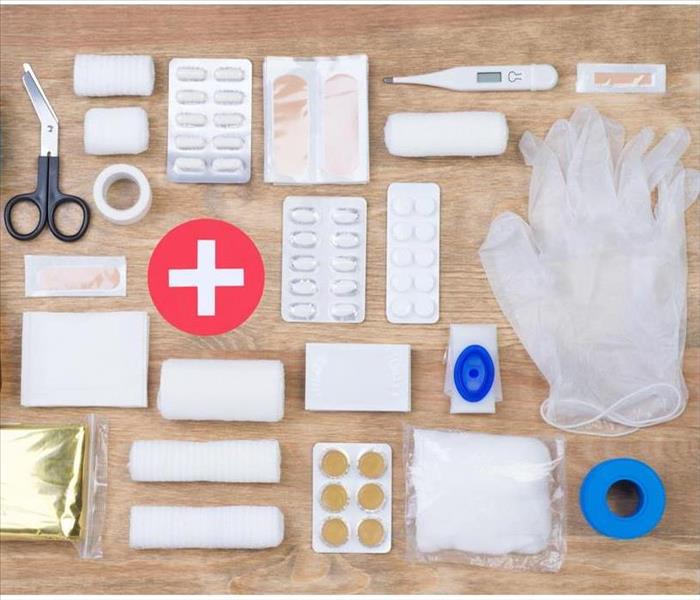 Increase the number of first-aid supplies based on how many employees or patrons are typically present.
Increase the number of first-aid supplies based on how many employees or patrons are typically present.
What To Keep On Hand In Case of a Disaster
In the event of an emergency, a swift response is the most effective way to keep everyone safe. To react quickly, commercial property owners should have an emergency kit stocked with the supplies necessary to avoid danger or to shelter in place until relief arrives. Of course, this should include a basic first aid kit, but what other essential items should be kept in stock? Here is what to keep on hand in case of a disaster.
First-Aid Basics
If a disaster happens in Guthrie, OK, having some basic medical supplies on hand is essential, but what exactly should be in the first aid kit? The Occupational Safety and Health Administration recommends:
- Gauze pads in various sizes
- Adhesive band-aids in multiple sizes
- Wound-cleaning agent
- Splint
- Elastic wraps
- Latex gloves
- Scissors
- Resuscitation equipment
- At least one blanket
- Tweezers
Increase the number of first-aid supplies based on how many employees or patrons are typically present. Make sure to include directions for requesting emergency assistance as well.
Sanitation Items
Be sure to consider sanitation items. Maintain basic hygiene by including things such as hand sanitizer, deodorizers and toilet paper. Keeping disinfectants and hygiene products will maintain sanitary conditions until help arrives.
Comfort Items
Comfort items may not be as top-of-mind as a first aid kit, but they are also essential. Put in extra blankets for warmth and solar chargers to keep electronic devices online. There should also be food and water for the building’s emergency kit. Storm damage could threaten the building’s water supply or leave employees stranded waiting for storm cleanup crews. High-energy and non-perishable foods, such as canned meat and vegetables, will keep everyone nourished and comfortable.
Emergencies are unpredictable. Whether it’s an earthquake, a storm, or a fire, a disaster can strike at any time. Maintaining a well-stocked emergency kit with plenty of supplies will ensure that the building is equipped for the worst.
The Importance of a Security Fence After a Fire
3/22/2022 (Permalink)
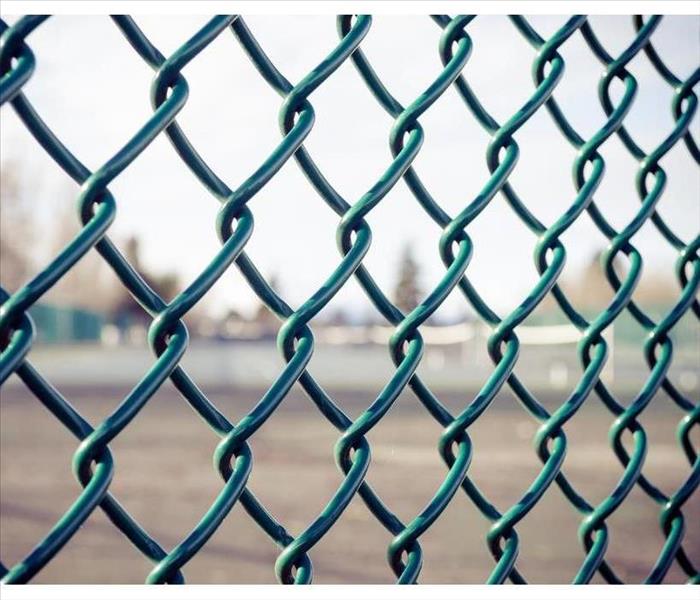 The installation of a security fence could prevent new harm and legal charges.
The installation of a security fence could prevent new harm and legal charges.
The Importance of a Security Fence
After your business or commercial properties have been affected by fire, the security of your entire company could be at risk. Naturally, officials from the fire department or public safety will tell you when it is safe for personnel to enter the building or stay away, but what about the equipment, belongings, and buildings? A temporary security fence could be the thing you need to protect against
- Theft
- Vandalism
- Trespassing
- Looters
- Liability
After emergency teams leave your property, you'll be responsible for the security of the land, buildings, and possessions inside the buildings. If someone gets hurt on that property, even if they are there without permission, you could be liable for those injuries.
Potential Dangers to Intruders
There are a number of potentially dangerous situations after a fire. Although fire damage remediation and reconstruction professionals may be coming and going, other people may trespass while those professionals are away. Those interlopers could be exposed to leaking gas, damaged electric lines, slips on water, or weakened floors. A security fence around your property may keep these intruders out and protect you from legal actions.
Damages Done by Trespassers
If unauthorized people enter your property and cause further damage, your insurance company may refuse to pay for those damages. On the other hand, your agent may recommend installing fencing around the perimeter of your Perry, OK, commercial property. When this is the case, act quickly on the advice of the agent to prevent new damages.
Protect Your Property With Security Fencing
Fire damage can be a source of a lot of destruction. The installation of a security fence could prevent new harm and legal charges. When it's safe to return to your property, but construction hasn't yet been completed, tightened security may reduce losses due to theft, vandalism and damages that the insurance company won't cover, and legal liability for injuries that trespassers suffer.
Putting a Stop to a Toilet That Won’t Stop Flushing
3/17/2022 (Permalink)
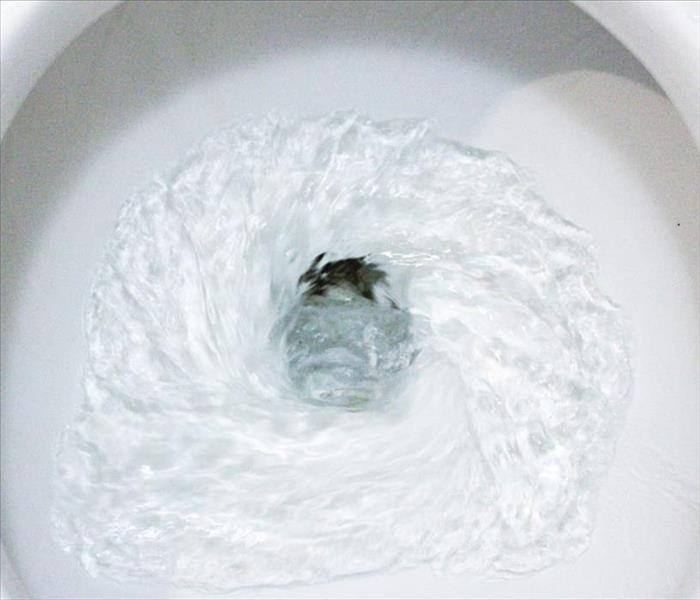 A toilet that won't stop flushing can lead to water damage in your building.
A toilet that won't stop flushing can lead to water damage in your building.
Prevent a Toilet Flood In Your Commercial Property
A toilet that won’t stop flushing may not seem like a big deal, but toilet overflow can pose serious problems not just for the bathroom but other parts of your commercial property as well. As a toilet flushes, more water enters the toilet and can possibly spill over, seeping into the floor or the wall. This can lead to water damage and mold growth in your building in Navina, OK. Water on the floor is not only a potential slipping hazard, but it may also contain odors that impact the usability of your bathroom. It’s important to stop a toilet from continuous flushing that can lead to flooding.
Fixing the Flushometer
The flushometer Is a component that controls the flushing on a commercial toilet. Here’s how you can prevent a toilet flood by fixing the flushometer:
- Use a flathead screwdriver to turn off the flushometer on a manual system. This is usually to the left or the right of the toilet’s pipe connection to the wall.
- Remove flange cover.
- Remove gasket and clean thoroughly, including the weephole. You may need to use a small, thin object to really clean the weephole.
- Replace gasket and flange cover and turn on flushometer.
- An automatic flushometer may require servicing.
Consult a professional water damage restoration specialist to make repairs and remediation for items impacted by toilet overflow. These pros are fully equipped and experienced in making any repairs necessary to bring your space back to pre-damage conditions. If any specialized techniques or approaches are needed such as odor control and disinfection, they will know best how to apply them.
Trusting the Professionals
While addressing a flushing toilet is something you may be able to do yourself, you should leave cleanup to a professional remediation service. Your custodial staff cannot fully repair and remediate any spaces or objects impacted by the water damage of toilet overflow. If your business or that of your tenants’ is interrupted by the damage, the professionals can minimize the repair period.
Don’t ignore a toilet that continues to flush. It can lead to serious damage, requiring commercial building restoration.
3 Features of Preferred Vendors
3/5/2022 (Permalink)
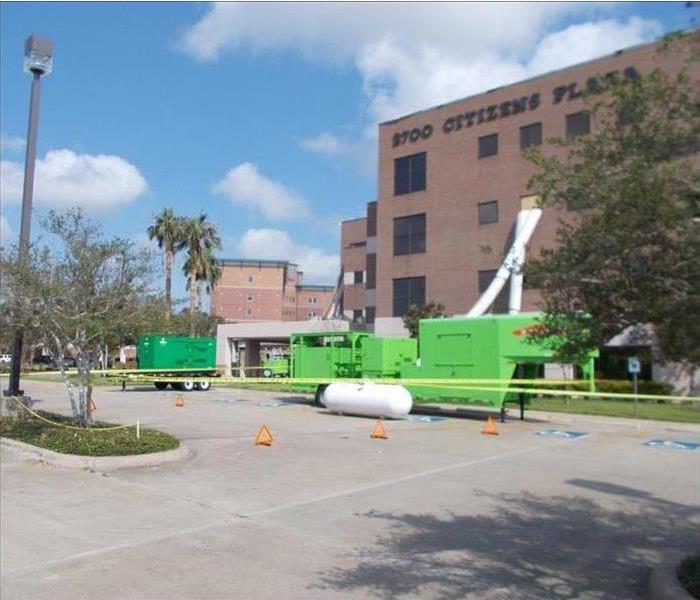 No job is too big or too small for SERVPRO of Stillwater and Guthrie.
No job is too big or too small for SERVPRO of Stillwater and Guthrie.
Three Characteristics of Preferred Vendors
Most insurance companies maintain lists of Preferred Vendors for damage mitigation and restoration. These vendors usually share three features that lead insurers to consider their services more trustworthy than other businesses in Ceres, OK. Whether you are a homeowner or insurance agent, you should look for a vendor with the following qualifications.
1. Professional Certification
Insurers prefer to work with vendors that hold certifications recognized throughout the damage remediation industry. The Institute of Inspection Cleaning and Restoration Certification administers standards and credentials in every major restoration field, such as content cleaning, fire, water and mold. IICRC and other specialized certifications can make an insurance company more likely to cover a claim.
2. Cutting-Edge Services
The IICRC and other industry-leading organizations are always improving and updating standards and requirements. As a result, restoration professionals who train in a particular area are also required to obtain continuing education credits to maintain certification. These requirements are spread over several years and include updates that will enable these professionals to use the latest methods. Improved equipment and treatments can allow for faster and more thorough restoration.
3. High Service Standards
An insurance agent will also tend to prefer companies that maintain high service standards. SERVPRO makes it possible for an agent or adjuster to access franchise and company comparisons as well as data on response times and costs. This information enables insurers to make sure that each estimate is in line with similar jobs. Furthermore, franchisees must sign a Participation Agreement and meet all 21 guidelines to receive Insurance Client referrals.
These features can help an insurance agent or client distinguish a Preferred Vendor from other mitigation and restoration companies in Ceres, OK. Vendor programs may vary based on the insurance company, but most insurers recognize the high quality of SERVPRO. This corporation has local franchises nationwide that respond Faster to Any Size Disaster.
Types of Damage Caused During a House Fire
2/21/2022 (Permalink)
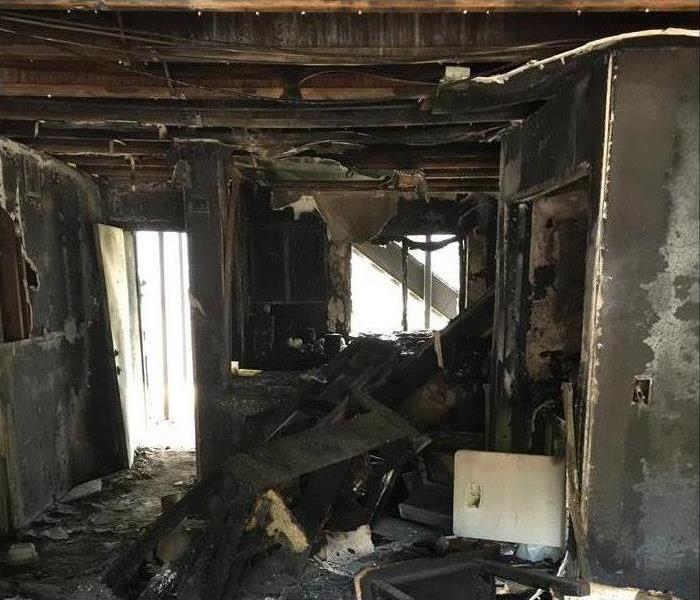 Fire damage in Stillwater, OK home.
Fire damage in Stillwater, OK home.
The Different Types of Damage Caused by a House Fire
A house fire can be devastating and cause a lot of damage to your home. Along with fire damage, there are other types of damage that will require remediation as well. Here are a few things that you can expect if you experience a fire in your Stillwater, OK home.
1. Damage Caused by Fire
The most obvious and expected type of damage is that caused by fire. A fire can cause significant damage to your home and belongings. You may end up with shattered windows as well as missing walls and roofing. Furniture and objects may require repairs or replacing.
2. Damage Caused by Water
Water damage might not be something that you would usually think of during a fire, but depending on the severity of the blaze, you could end up with quite a bit of it. When firefighters use a fire hose to put out the flames, it can fill your home with a lot of water which can cause damage of its own. You can call a remediation service to remove the water from your home and perform any needed repairs.
3. Damage Caused by Smoke
Even if the fire damage to your home is not extensive, you might have a lot of smoke damage that needs cleaning. Smoke can permeate your house and belongings even if the fire only affected a small area. Some evidence of smoke damage includes discolored walls or ceilings and a strong odor. If not removed properly, the smell of smoke can remain in your home for a long time after the fire occurred. There might be ash or soot present as well.
Because there can be several different kinds of damage after a fire, it is important that you call an emergency restoration service as soon as you can. They can help repair the fire damage as well as any other damage your home has suffered.
How Does SERVPRO Provide Fast Disaster Response?
2/18/2022 (Permalink)
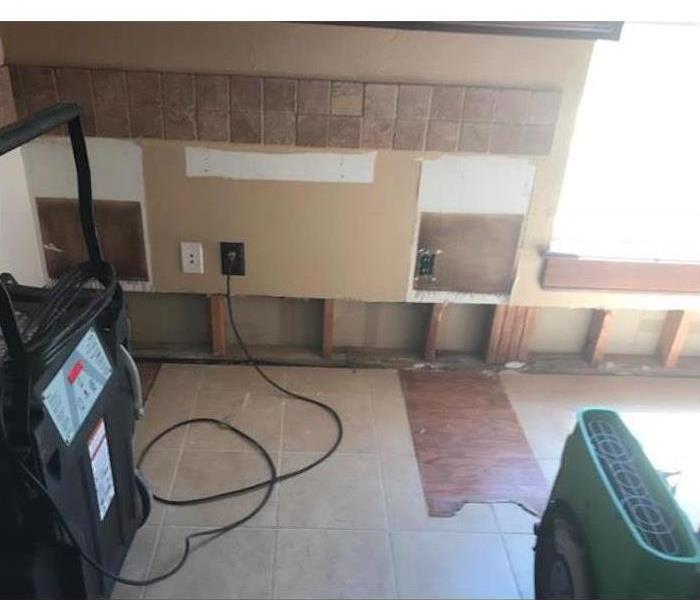 SERVPRO Faster to Any Size Disaster.
SERVPRO Faster to Any Size Disaster.
How Does SERVPRO Provide Fast Disaster Response?
Homeowners and insurance agents should rely on a disaster mitigation and restoration company that responds quickly to calls arrives on-site within hours and provides a same-day verbal briefing. Here are several features that make SERVPRO Faster to Any Size Disaster.
Locally-Owned Franchises
The most important factor for providing a fast response to any type of disaster is the location of the mitigation and restoration company. The following features can shorten response times:
- Local or regional franchise location
- Certified and trained staff
- Ability to rely on nearby locations
An independent mitigation or restoration company may not have the level of training or the ability to bring in more equipment or personnel in the event of a large loss. A local franchise combines all of the benefits of a local business and a national company.
Locations Nationwide
No matter where you live in the United States, there is likely to be a SERVPRO franchise nearby. Whether damage only affects a single home, a limited area or is more widespread, a national network of locations allows for faster responses:
- Call response within one hour
- On-site consultation within four hours
- Verbal briefing within eight hours
If a franchise is located in your region, these response times should apply. SERVPRO excels at being Faster to Any Size Disaster because mitigation and restoration professionals are certified and trained.
All-In-One Services
The ability to rely on a single company for cleanup and rebuilding can shorten the length of the mitigation and restoration process. If you hire more than one independent company, initial estimates may not account for the full extent of the damage for the purposes of making an insurance claim. Coordinating schedules and requirements may also be more of a challenge. A one-stop-shop can simplify and streamline disaster response.
These three features make SERVPRO Faster to Any Size Disaster. Homeowners and insurance agents should consider working with a certified damage mitigation and restoration company with a location in Sumner, OK.
4 Tips To Prevent Frozen Pipes
2/9/2022 (Permalink)
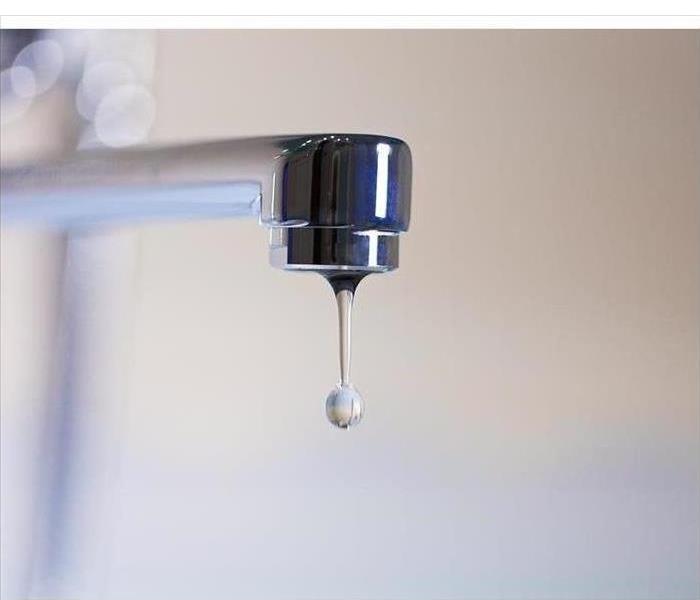 Let water drip from the faucets.
Let water drip from the faucets.
Prevent Frozen Pipes
Cold weather can cause your pipes to freeze and even burst. Frozen water puts incredible pressure on pipes and can cause them to crack, resulting in water damage when the ice thaws and water begins to seep through the cracks. Pipes located in areas of your home with little insulation, such as outdoor and attic pipes, typically have a greater risk for freezing, but it is important to monitor all pipes in your Stillwater, OK home for cracks during cold weather. Waterline repair can be expensive, so when facing particularly cold temperatures, it is usually a good idea to use these four tips to keep from having frozen pipes.
1. Keep the thermostat the same temperature both day and night. Lowering the temperature in your home at night may help lower your electricity bill, but the change in temperature may put added pressure on your pipes. By not changing the thermostat, the water flowing through pipes is kept warmer, and you can probably avoid a frozen pipe disaster.
2. Let water drip from the faucets. Your pipes are usually at the greatest risk of freezing during sudden cold snaps. Flowing water is less likely to freeze, so letting water drip continuously from kitchen and bathroom faucets can prevent frozen pipes. Periodically running the faucets at full blast may also be a good idea.
3. Open cabinet doors. Exposing pipes to warm air helps keep them from getting too cold. Because most exposed pipes are located under kitchen and bathroom cabinets, opening the doors can help warm air circulate around the pipes.
4. If you are traveling, set the thermostat above 55°F. When you will be away from home, you probably don’t want to waste electricity warming your property. Resist the urge to set your thermostat lower than 55° F, because your water pipes still need to stay warm.
Dealing with frozen pipes in Stillwater, OK can be a nightmare. Using the above four tips during freezing weather can usually help you avoid expensive water line repair.
3 Preventative Measures For Maintaining a Mold-Free Bathroom
1/29/2022 (Permalink)
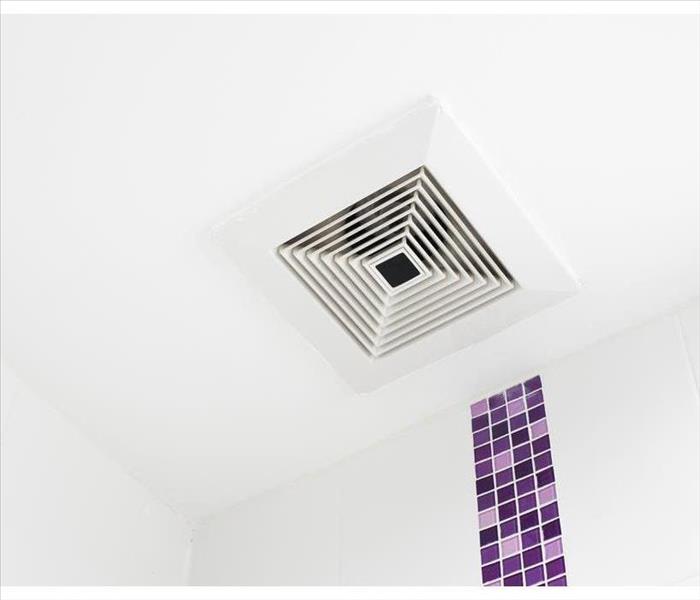 Exhaust fans should be kept on during and after a shower.
Exhaust fans should be kept on during and after a shower.
Mold Prevention In Your Bathroom
As a homeowner or renter in Guthrie, OK, you understand just how irritating it can be to consistently see mold growth popping up in your bathroom. After all, you likely take precautions to secure any leaks that may cause water damage and you keep a clean, tidy house, in general. So, what’s the culprit behind the growing mold? There can be more than one. Here are three useful measures you can take to eradicate any growth for good and ensure proper mold prevention in your bathroom for years to come.
1. Install a proper ventilation system. When it comes to keeping moisture at bay, a high-powered ventilation system is key. Exhaust fans should not only be on during a shower, but be kept on for close to 20-30 minutes after a shower as a method of keeping constant air flow throughout the space. This can help enforce a moisture-free environment in areas where high humidity are a common occurrence.
2. Keep a close eye on tile grout and caulking. Grout between your shower tiles, especially if it’s cracked in places, makes for great breeding ground for mold. Therefore, it pays to clean your grout on a weekly basis to hinder any mold growth. Furthermore, replace it every 6 months and seal it well to effectively ward off its potential spread. If you’ve noticed water damage and mold as a result of cracked grout or degraded caulking, contacting a highly-qualified mold remediation team could be crucial for eliminating any greater problem areas.
3. Focus on your shower curtains, towels, rugs and any cloth decor. Fibrous towels and rugs come into direct contact with water on a daily basis and should therefore be washed consistently. Shower curtains made of cloth should be washed in hot water or replaced by plastic varieties that can easily be wiped down and cleaned.
Once these areas of your bathroom have been addressed and any water damage has been restored, maintaining a mold-free environment in your Guthrie, OK, bathroom should be an easy task.
Get To Know Your Fire Sprinklers
1/24/2022 (Permalink)
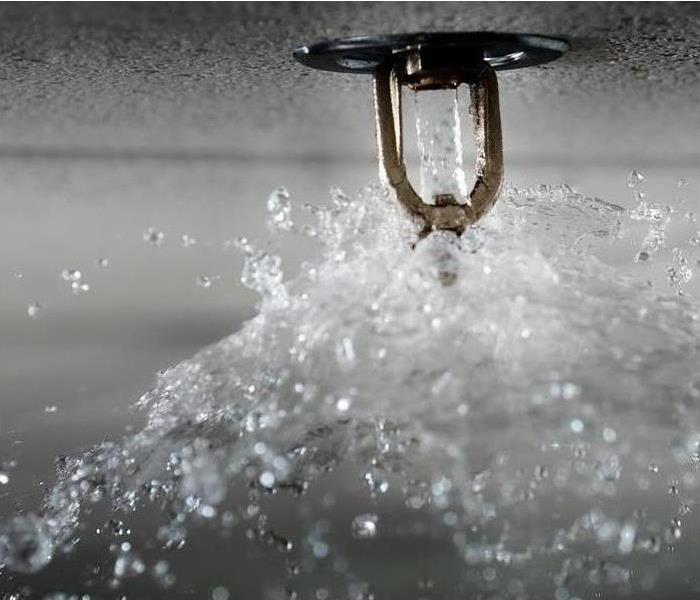 A fire sprinkler system is a major contributor to a commercial building’s safety.
A fire sprinkler system is a major contributor to a commercial building’s safety.
Learn Everything There Is To Know About Fire Sprinklers
A fire sprinkler system is a major contributor to a commercial building’s safety. Installing one in a business property in Perry, OK, will help ensure that occupants can escape in time if there’s a fire. Although the spray emitted by the sprinklers may not fully extinguish every type of fire, it can suppress the blaze enough to allow employees and customers to evacuate safely.
1. They May Serve As an Early Warning System
Sprinkler systems also protect you by serving as self-activating fire alarms; they will turn on automatically if none of the building’s occupants are aware of a fire starting somewhere. The system can then minimize damage through fire suppression and help to contain the spread of a blaze until firefighters arrive to extinguish it.
2. They Can Unleash A Lot of Water
A sprinkler system can spray hundreds of gallons of water when it detects a fire. It may be the lesser of two evils compared to fire damage, but that much water can leave your place of business with serious moisture problems. Fire sprinkler cleanup requires special attention and remedial efforts that should be left to trained professionals.
3. It's Best To Leave the Cleanup to the Experts
Electronic devices should not be turned on or used if you suspect they may have been affected by sprinkler water or moisture. Prompt action needs to be taken to prevent irreparable damage or corrosion. A cleanup and restoration technician should inspect electronic equipment and determine the proper steps to take.
Mold and mildew may also take hold in structural areas that are not immediately apparent to the untrained eye. Critical documents, files and media storage can require specialized care and treatments to minimize or counteract moisture damage. These aren’t issues well served by a do-it-yourself approach.
A fire sprinkler system makes your business a much safer place; be prepared, however, to immediately summon the required cleanup services after an activation. A variety of water and fire damage restoration techniques can be used to get your business up and running again, but you’ll need to contact qualified, 24/7 emergency cleanup specialists as soon as possible in order to prevent further damage.
3 Steps To Take After a Flood
1/11/2022 (Permalink)
 Make sure to turn off the electricity to avoid shocks of fire.
Make sure to turn off the electricity to avoid shocks of fire.
Prevent Further Damage In Your Home After a Flood
Flooding is a common occurrence in residential homes. Whether it’s because of a storm or a pipe burst, homeowners in Navina, OK, should be aware of the challenges that come with water damage. One of the biggest concerns is mold growth. If you have suffered from a flood, here are three steps to take to prevent further damage.
1. Document Everything
After the initial disaster, it’s important to take pictures of the damage. When you contact your insurance, you can use these photos as evidence of the things you lost and the surfaces that were damaged. This can help you get the most out of insurance. After connecting with your insurance agency, they will send out an adjuster within the next few days to assess and confirm the damage.
2. Clean Up the Damage
Letting the floodwater sit will only create more damage and allow mold growth to sprout and spread. Here are a few things you should keep in mind when removing the water:
- Shut off the electricity first
- Wear protective clothing while in the potentially-contaminated water
- Store wet documents and books in the freezer to preserve them
- Throw away food items that were affected by the water
With these tips, you can start to remove the water with a pump or start to air dry the damaged rooms.
3. Call the Professionals
It’s time to call in the restoration specialists to help you remove any additional water and properly dry the rest. They can help you restore your home and salvage valuables. They can help with the mold removal process as well.
Although floods can be disastrous, you can address the aftermath in a calm and smart way. Water damage often leads to mold growth, but you can do what you can to minimize the damage and prevent future mold problems from arising.
Your Noisy Water Heater Is Trying To Tell You Something Important
12/29/2021 (Permalink)
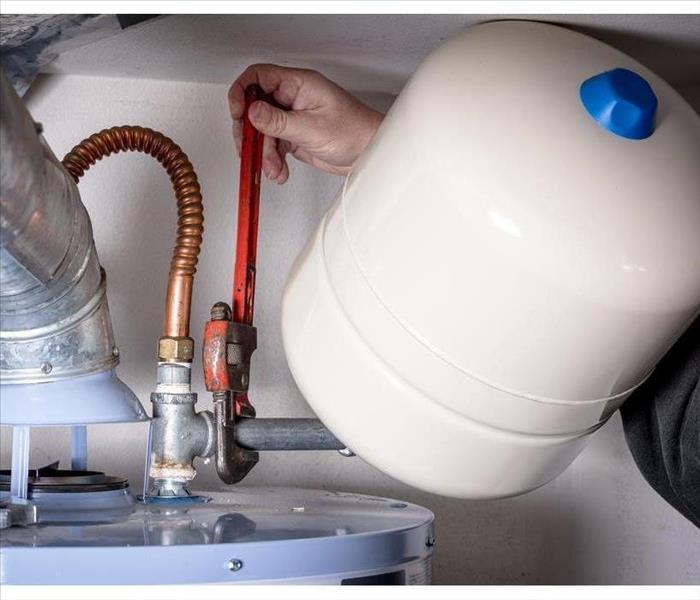 Maintenance in your water heater can prevent a flood.
Maintenance in your water heater can prevent a flood.
Diagnosing Water Heater Problems
Think back to when your heater was still new. It may not have been completely silent, but because it was new, you were certain that the sounds you heard were normal. Then, one day, your heater began to make new sounds. It started to complain. Its first word may have been pop or click or buzz, but it was trying to tell you something was wrong.
Diagnosing heater problems by sound is an art. A professional plumber knows what your heater is complaining about. What follows are some common sources of and solutions to heater problems.
1. Gas and oil burners require special consideration. Safety is always a concern. Where there is a flame, there is a risk of fire or carbon monoxide poisoning. Burner problems are not common but are important to understand and consider. If your burner shows any indication of a problem, call a trained professional immediately.
2. Sediment is a common source of heater noise. Most sediment is sand or any solid material that finds its way from your well or water main into your water heater. Even in Ceres, OK, there is no way to avoid it. The noise comes from the water moving around the heating element and dislodging the sediment. Performing a water heater flush should eliminate this problem.
3. Mineral deposits can interfere with the operation of safety devices. Hard-water mineral deposits can foul pressure relief valves and backflow preventers. Noise from those devices may indicate a mineral buildup and suggest that the tank needs to be de-limed.
Simple Water Heater Maintenance Can Prevent a Flood
Inspecting, flushing and de-liming a water tank will help eliminate many causes of failure. Still, tanks can fail. When that happens, local water damage specialists can quickly deal with the flood and return your home to its former condition. It starts with a phone call.
How Experts Remediate a Category 1 Water Loss
12/22/2021 (Permalink)
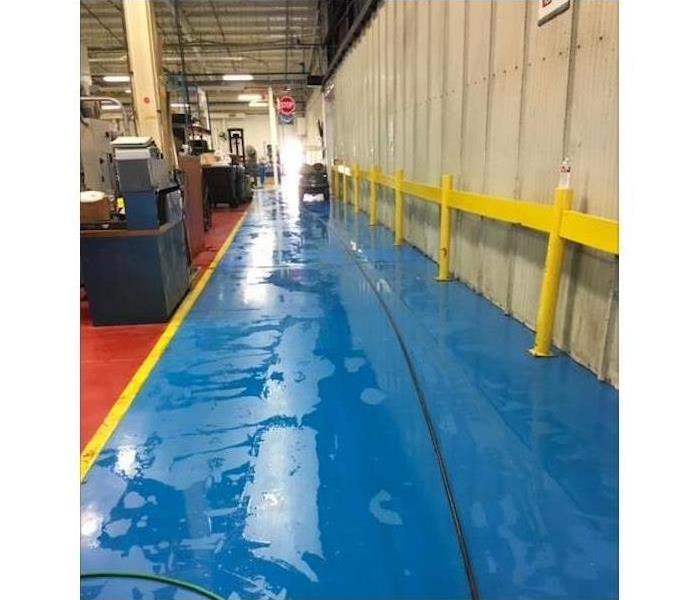 Our crew can quickly respond, remove the standing water, and restore your property back.
Our crew can quickly respond, remove the standing water, and restore your property back.
Water Remediation Process
Category 1 water loss can cause a lot of problems. It can cause damage to the walls in your commercial property in Sumner, OK, make your floors buckle, and render a space unusable until the damage is repaired. While water mitigation specialists don’t necessarily need to sanitize an area flooded by clean water, there are still several steps in the water remediation process.
1. Practicing Safety
The first thing technicians will do is make sure no electricity is in contact with standing water. They may shut off the breakers to the area completely, depending on how much water loss has occurred. Any damaged drywall, particularly if it’s on a load-bearing wall, must be identified and, if necessary, fortified to protect the structural integrity of the building. Technicians will likely secure the area before they begin the actual cleanup process.
2. Finding the Source
Several clean water sources can cause Category 1 water damage:
- Supply line
- Busted pipe
- Overflowing sink
The water source must be shut off so that no further damage occurs.
3. Extracting Water
All standing water must be pumped out of the area. Excess water is extracted from the carpet and carpet pads. All items that are waterlogged by a broken pipe must be thoroughly dried or, if they cannot be salvaged, thrown away.
4. Increasing Airflow
The area needs to be dried thoroughly to prevent secondary damage, such as mold growth, from happening. To do this, industrial fans may be brought in to increase airflow to the area. This speeds up the drying process and helps control humidity so that excess moisture doesn’t linger in the air.
5. Restoring Items
Once the area is dried, any items or parts of the structure that had to be removed can be replaced. It’s a good idea to choose a remediation company that finishes the whole job by providing restoration services as well.
Clean water can still cause significant damage. Let certified experts help restore your building to its original state.
3 Potential Effects of a Lightning Strike to Your Home
12/13/2021 (Permalink)
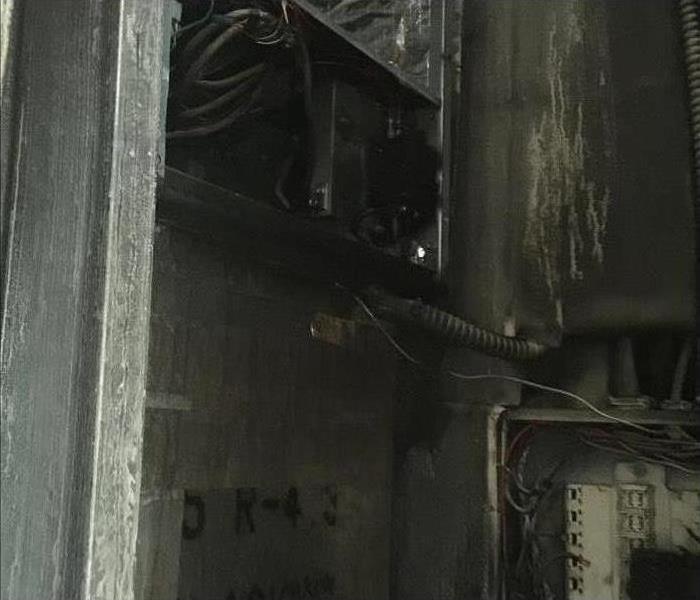 A home in Stillwater, OK suffers from an electrical fire.
A home in Stillwater, OK suffers from an electrical fire.
Home Struck During a Storm
Lightning occurs when electrical charges during a storm try to reach the ground. If the charges try to get there by way of your home in Stillwater, OK, you may experience a few problems. Lightning fire, among other issues, can cause severe damage to your home. Here are three main issues to watch for if your house is struck during a storm.
1. Damaged Pipes
Water conducts electricity well, so a strike on or near your home may channel the current through the pipes in an effort to reach the ground. There is the potential for dangerous electric shock for anyone using water coming from electrified pipes. If there is a storm in the area, it is wise to refrain from the following activities:
- Taking a shower
- Doing laundry
- Washing dishes
- Washing hands
2. House Fire
Your home can catch fire if lightning strikes it. A lightning fire can start at the point of contact but can quickly spread through flammable materials as the current tries to ground. If it comes into contact with flammable gas, an explosion could occur, intensifying the fire danger. Replacing the traditional shingles on your roof with metal roofing or adding a lightning rod can safeguard your home from fire damage.
3. Electrical Damage
A charge that big can give your home’s electrical system quite a surge. It can blow fuses and damage equipment that is plugged into any affected wiring. Avoid contact with wires during a storm. While fire restoration experts may be able to fix some damaged items, it is also a good idea to unplug any electronic equipment that you can during a storm. Doing so may not just save your equipment; it could also prevent a house fire caused by damaged wiring.
You may not be able to control the weather, but you can protect your home and family from the threat of a lightning fire during a storm. By taking a few precautions, you can decrease your chances of these dangers.
Making a Water Damage Claim: Five Steps
11/23/2021 (Permalink)
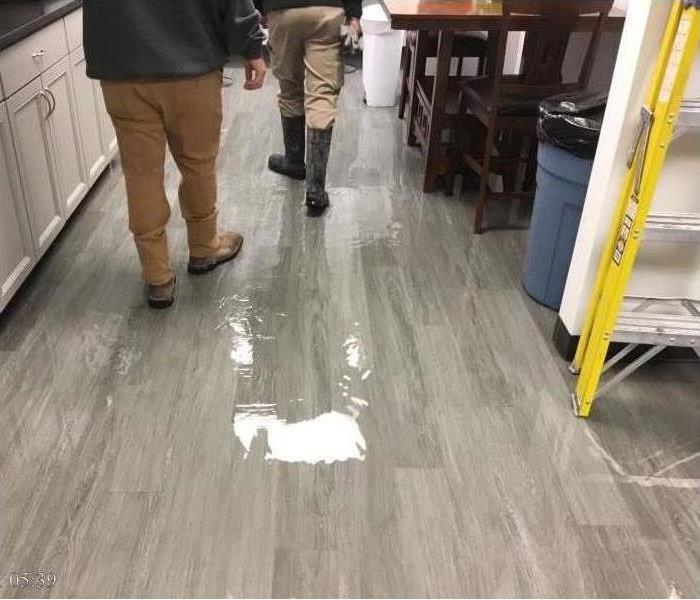 Water damage in a kitchen in Guthrie, OK.
Water damage in a kitchen in Guthrie, OK.
Five Steps to Filing a Water Damage Claim
If a burst pipe has led to flooding and related damage to your home, you are probably interested in the process involved when making an insurance claim. Read on to learn about 5 important steps you need to take to submit the claim and prepare for an insurance adjuster to arrive.
1. Check Your Insurance Policy
One of the first things that you will want to do after a pipe burst in your Guthrie, OK, home is to review your homeowners insurance policy. Water damage is covered by some policies and not others.
2. Call the Insurance Company
If you have learned that you do indeed have flood coverage, the next step is to call your agent to make an insurance claim with the company that handles your policy. If all goes well with your report, an appointment will be set to have the damage surveyed.
3. Take Pictures and Record Damage
Once you learn that an adjuster is coming to evaluate the situation, you will need to get working. Take pictures and record any issues that you find, as these will be valuable resources for the claims team to take into account.
4. Fill out Forms
You may have to fill out claim paperwork before the adjuster arrives. Be as thorough as you need to be, and make sure to meet the stated deadline.
5. Make Repairs
It is usually a good idea to make at least some repairs when you can to preserve your property to the best of your ability before the adjuster arrives at your home. Contacting water damage specialists is often your best bet to get the work completed quickly and accurately.
Filing an insurance claim can be difficult after water ruins your valuables and property. The emotional effects of having your home in danger are challenging enough without going through complicated insurance processes. Remembering the steps above will help you to better understand what is involved and how to accurately file a claim so you can figure out a way to move forward.
Understand the Danger of Flood Waters
11/15/2021 (Permalink)
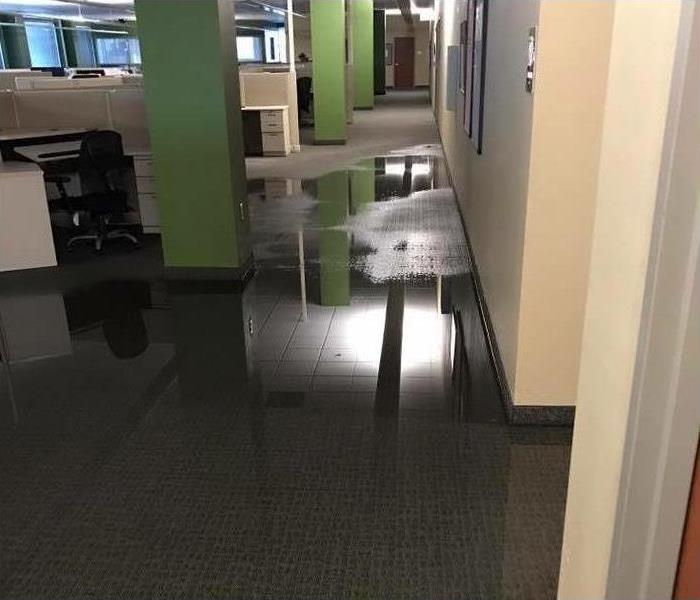 Office flooded in Perry, OK.
Office flooded in Perry, OK.
Flooding brings many dangers with it but when the water rises in Perry, OK, you may be tempted to make the best of a bad situation. After all, who doesn't enjoy a day playing in water? However, in addition to the dangers inherent in cold, racing waters, there are hazards that have to do with contaminants in flood water.
Levels of Flood Contamination
Health authorities provide measures and labels to describe the danger of water from flooding.
• Level I: A small amount of water inside a single building that can be cleaned up before it soaks into building materials
• Level II: Overflow within a single building that covers a much larger section of the interior and soaks into carpeting, drywall, etc.
• Level III: Black water from outside the building with significant damage and flooding
Heavy storms or rains could cause many types of flooding, but when they bring water into your properties, always treat the water as if it were category 3 black water. Take appropriate precautions to protect the health and well-being of your staff and any of your customers or clients.
The Dangers of Black Water
One of the most serious aspects of storm damage is black water. Because of contamination, flood water is a category 3 health hazard. Some of the pollutants in the water include raw sewage, human and animal waste, seepage from septic tanks, chemicals, drainage backflow, and fuels from vehicles. Without knowing where the water has been, it's best to assume that it has been contaminated with very hazardous substances. Avoid all contact with this water.
How to Recover From Contamination
If flood water has risen through your business properties, contact a flood remediation company to address the damages. These professionals have the tools and training necessary to thoroughly clean your premises without leaving any harmful contaminants behind. Instead of trying to DIY this serious issue, turn your focus to keeping your personnel and clients safe.
6 Leading Causes of Home Fires
11/2/2021 (Permalink)
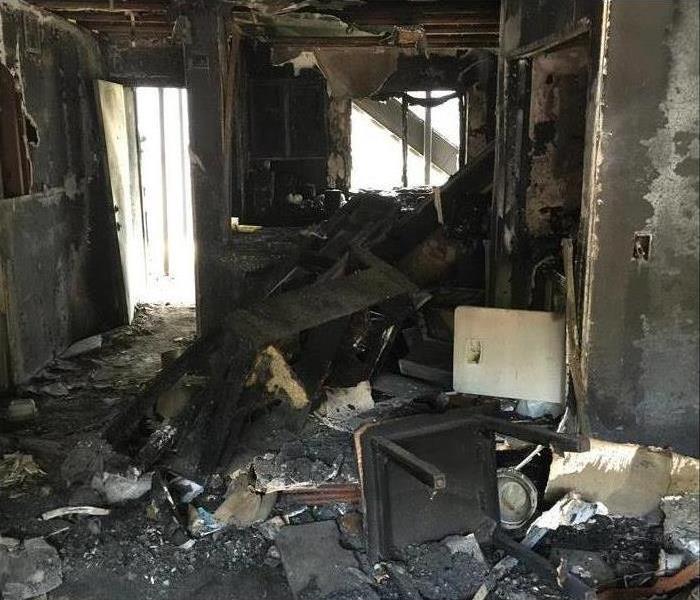 A home fire in Navina, OK.
A home fire in Navina, OK.
Common Fire Causes
A home fire can be an extremely devastating experience for any homeowner in Navina, OK. Understanding common fire causes can help you evaluate and safeguard your home.
1. Faulty Wiring
Faulty wiring inside your walls or appliances can be a significant fire hazard. Symptoms of damaged home wiring include frequently blown fuses or lights spontaneously dimming when appliances are in use.
If you have concerns about your home’s electrical wiring, promptly contact a licensed electrician. You should also avoid using any appliances that have frayed or damaged cords.
2. Overloaded Outlets and Extension Cords
Most outlets are designed to accommodate two electrical plugs. Attempting to plug additional items into a single outlet can overload it, increasing the risk of a home fire. As an added precaution, you should also limit the use of extension cords and avoid placing them under rugs where they may overheat.
3. Cooking Accidents
To reduce the risk of a damaging kitchen fire and the need for extensive fire cleaning, you should never leave your stove unattended while cooking. Remaining attentive can prevent pots and pans from overheating and grease or other flammable liquids from igniting.
4. Portable Heaters
Portable heaters are another leading cause of fires. To operate your heater safely, refrain from placing it near curtains, blankets, paper or upholstered furniture.
5. Cigarettes
Improperly disposed cigarette butts can also ignite a fire. Smoking outside helps minimize this risk. If you choose to smoke inside your home, refrain from doing so while in bed and ensure you carefully extinguish butts inside an ash tray.
6. Matches and Candles
Matches and candles can also be dangerous. Never leave a burning candle unattended and ensure that children in the home understand that candles and matches are not toys. These items should be used only with adult supervision.
A home fire can result in significant damage necessitating extensive fire cleaning and restoration. Although no homeowner can completely eliminate their home’s fire risk, remaining vigilant in the kitchen and taking precautions with heaters, cigarettes, candles and extension cords can help prevent a potentially destructive fire.
Commercial Fire Sprinkler Maintenance
10/29/2021 (Permalink)
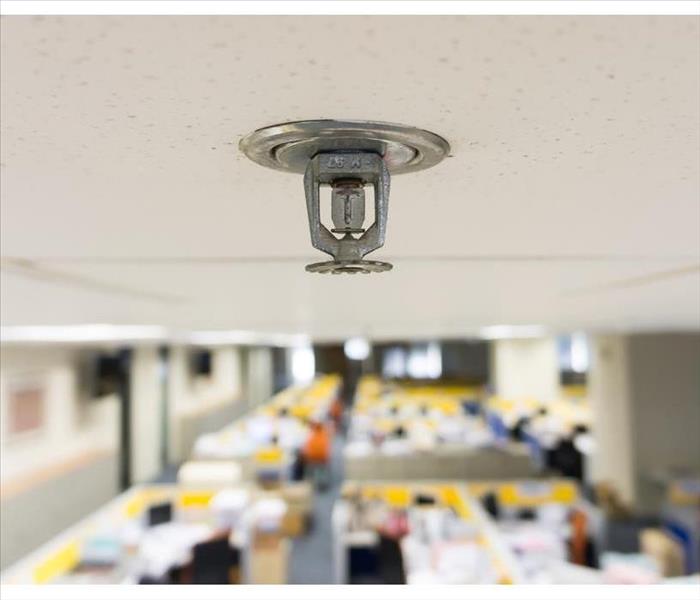 A commercial fire sprinkler system is one of the best ways to prevent damage to property.
A commercial fire sprinkler system is one of the best ways to prevent damage to property.
Commercial Fire Sprinkler Maintenance
A commercial fire sprinkler system is one of the best ways to prevent injuries, save lives and decrease damage to property. That’s why it’s important to keep up on regular maintenance and ensure that your fire suppression system is working properly. The National Fire Protection Association (NFPA), recommends the following schedules for inspection and testing.
Inspection
• Weekly to monthly: In most systems, sprinkler gauges should be visually inspected weekly. Gauges in wet pipe systems should be checked monthly.
• Quarterly: Alarm instruments associated with water flow detectors and valve supervisory switches should be checked every three months. Hydraulic nameplates, control valves and supervisory signals should also be examined.
• Annually: All pipes and fittings, in addition to spare sprinklers, should be inspected. Seismic and hanger bracing systems, as well as hydraulic nameplates, should be checked.
• Every five years: Sprinkler piping should be inspected internally. This inspection is important for preventing obstruction caused by foreign materials.
Testing
• Quarterly: Mechanical devices, such as water flow detectors, should be tested every three months. Waterflow switches should be tested.
• Semiannually: Pressure switches should be tested every six months to ensure setting accuracy. Vane switches should also be tested twice a year.
• Annually: Every 12 months, the entire fire sprinkler system should be tested. This should include testing of water flow, alarms and fire pumps. Antifreeze concentration should also be tested.
• Every five years: In harsh environments with extreme temperatures, sprinklers should be tested every five years. Gauges should also be tested or replaced.
• Every decade or more: Fire suppression systems using dry sprinklers should be tested every 10 years. Sprinklers using fast-response technology should be tested 20 years after installation and then every decade. Sprinklers using standard response systems need to be tested 50 years after installation, followed by 10-year intervals.
If you have the unfortunate experience of dealing with a commercial fire in Perry, OK, you may have some water damage from your fire sprinkler system. However, you can call a professional water and fire restoration service for fire sprinkler cleanup, which is preferable to the mess you could have if the fire department must use mass amounts of water to put out the fire.
What Does Mold Containment and Remediation Involve?
10/29/2021 (Permalink)
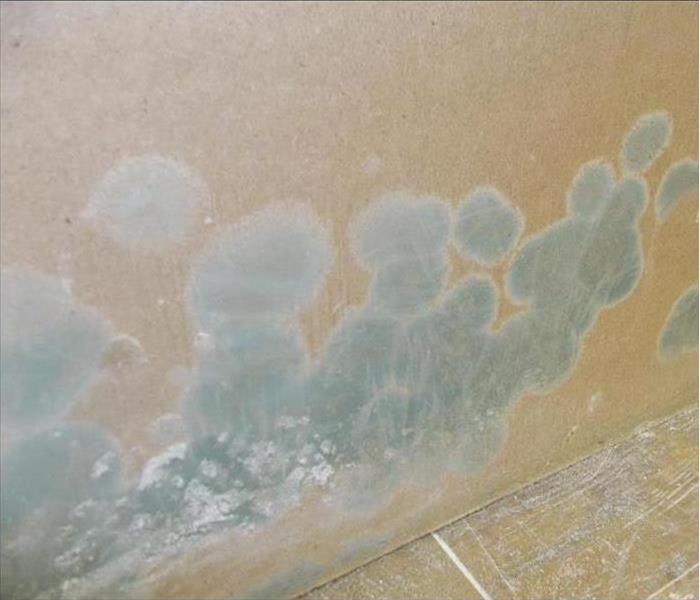 Mold found in a home in Guthrie, OK.
Mold found in a home in Guthrie, OK.
So you’ve found mold in your Guthrie, OK, home. While your first step should be to contact a mold remediation specialist, while you wait for help you need to stop the spread of mold contamination and initiate proper containment prior to remediation. Containment can keep mold from spreading to uncontaminated areas – but what does mold containment and remediation actually entail?
Steps to Take for Mold Containment
Mold contamination is so serious even the CDC addresses it with guidelines for containment and remediation. For containment, you should:
1. Immediately shut off water around the affected area. Water feeds mold, and you may have a leak or broken pipe that’s making the issue worse.
2. Blot the affected area as dry as possible. Any standing water is just giving mold more fuel to breed, so dry up any water. Use gloves, as the water may contain mold contamination.
3. Shut off HVAC systems. Mold spores can spread through HVAC systems and contaminate other areas of the house.
4. Remove contaminated materials and dispose of them appropriately. Your carpet may have picked up a mold infestation, or items of clothing lying around. You may need to wait for remediation for a full tear-out, but get rid of anything disposable ASAP.
5. Seal off the area. If possible, close off the area with an airtight seal. Tape windows and doors, and close and cover air vents.
6. Use antifungals and mold prevention solutions on the rest of the house. You can use off-the-shelf antifungals as a spray defense toward the rest of your house against the spread of mold.
What Remediation Involves
A mold remediation specialist will not only check the discovered infestation but inspect your entire house thoroughly to identify any other sources of mold. The type of mold and the depth of the contamination will determine what remediation may involve, from the use of HEPA air filters to a complete tear-out of infested drywall, flooring, or carpeting.
Getting Your Business Back on Track After a Fire
10/29/2021 (Permalink)
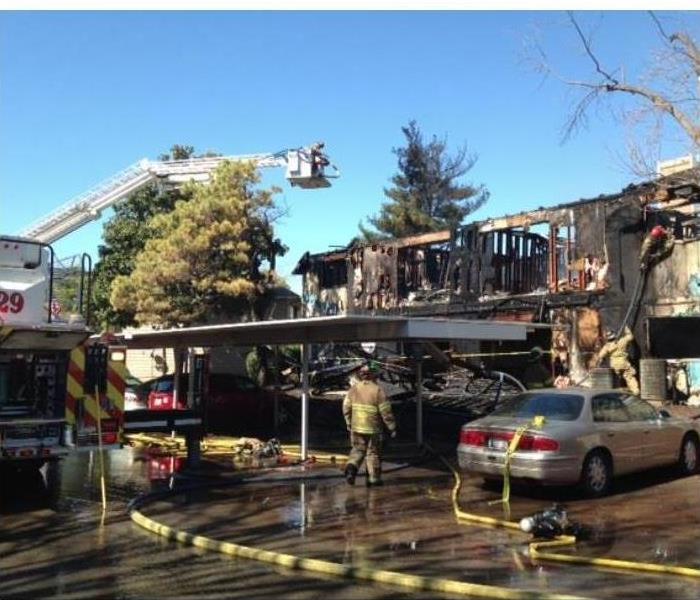 Fire damage in Stillwater, OK area.
Fire damage in Stillwater, OK area.
Returning Your Business to Normalcy After a Fire
When you’re dealing with fire damage to your Stillwater, OK, business, you should get back up and running as soon as possible. Completing the maze of paperwork, meeting with an insurance adjuster, and getting estimates on repairs can consume all of your time when all you really want to do is get back to work. Once the flames are out, take these steps to make your way through the process as efficiently as possible.
1. Call your insurance company as soon as possible. It should open a claim and send out an adjuster to evaluate the fire damage. Depending on your policy, it may also provide an up-front cash payment so you can hire a cleaning crew and/or restoration service to start making repairs.
2. Take pictures and document all the damage you can. Do this only after the fire department says it’s safe for you to go back onto the property. Wear gloves and a breathing mask while you’re doing this.
3. Contact a professional company to help you start on the road to reopening. Often referred to as disaster restoration providers, these are specially trained teams that know how to put things back together structurally and cosmetically. They can even remove smoke odor, which is bad for your health and continues to damage surfaces if not cleaned properly right away.
4. Consider hiring a fire mitigation company once you’re up and running again. This is strongly recommended, especially if you’re in an industry with an above-average risk of fire, like handling flammable chemicals or working with materials at high temperatures. These consultants can evaluate your workflow and space and give you tips on how to avoid future fires. If you can find one company to do the cleanup, restoration, and mitigation, you can speed up the recovery process considerably.
Fire damage doesn’t have to be catastrophic to your Stillwater, OK, business. Now you know the right steps to take once the flames are out.
The Ins and Outs of Black Mold
9/27/2021 (Permalink)
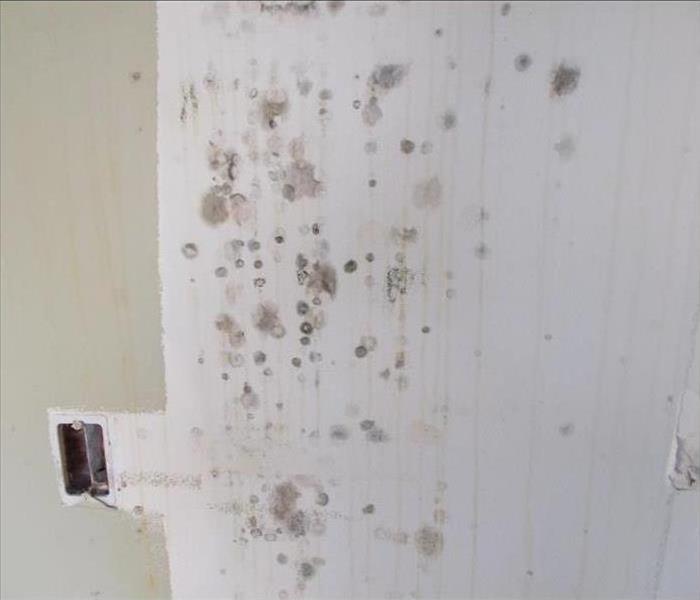 If you have mold issues you should contact professionals to address the issue.
If you have mold issues you should contact professionals to address the issue.
The Facts About Black Mold
Black mold is a type of microscopic fungus that often grows in large quantities. It’s generally found outdoors, but it can also make its way indoors. It reproduces by releasing spores into the air that settle on surfaces, and it quite often appears as an innocent little black, blue or green stain that quickly proliferates.
Ideal Conditions
Mold’s favorite places to reproduce are showers, baths, toilets, kitchens and basements – in other words, places that normally contain the three necessary conditions for it to grow and flourish.
• Water: Moisture from leaks, flooding, condensation and high relative humidity has to exist for spores to grow and reproduce. This is especially true in Navina, OK.
• Food: Like every living creature, spores need food, which they find in organic materials such as cotton, paper, leather and wood.
• Temperature: Optimal temperatures for proliferation must be warm, ranging from between 70 to 90 degrees Fahrenheit.
Mold also likes to proliferate in dusty and dark environments containing stagnant air.
Telltale Signs
It’s not necessarily easy to tell if black mold or other fungi are invading your home because visual signs may be absent. However, a reliable clue could be a whiff of a musty, earthy scent. This specific smell almost always guarantees mold, especially if you’ve suffered a leak or flood that hasn’t dried out properly.
Control of the Problem
Since mold requires some form of water to propagate, the best way to keep it from trespassing is by solving any indoor moisture problem with the help of a knowledgeable and reliable company. If mold cleanup is necessary, or if you suspect the fungus will invade at any moment, rest assured that you can rely on professionals located in Navina, OK, to take care of your worries.
Keep an eye on any areas of your home that are especially prone to moisture. If you suspect black mold in your home, or if you notice its telltale signs, contact professionals to address the issue.
The 4 Steps of Storm Damage Remediation
9/27/2021 (Permalink)
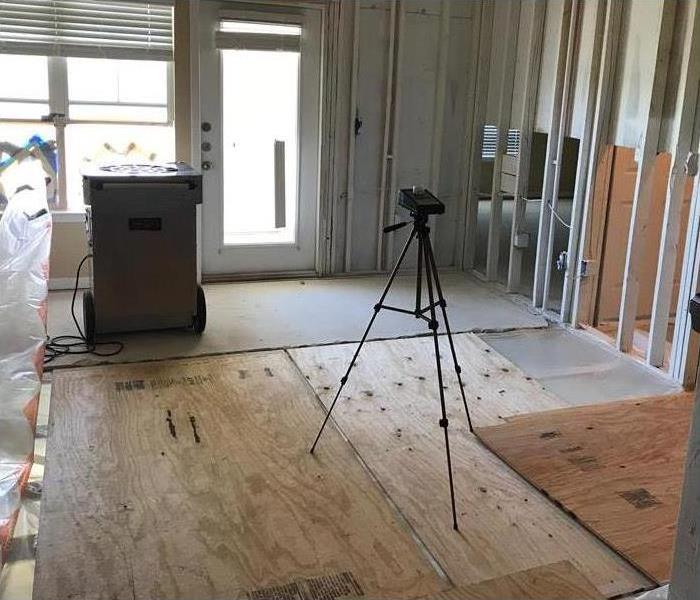 SERVPRO can respond to your home after a severe storm in Perry, OK.
SERVPRO can respond to your home after a severe storm in Perry, OK.
The Four Steps of Storm Damage Repair
Storms can be scary while they're happening. They are loud and they may cause your whole house to shudder with each gust of wind. Another thing that many people find daunting is taking care of the damage the storm left behind. The idea of people coming in to tear out walls and rip up carpet may fill you with stress. By understanding the steps that storm restoration experts take when you hire them to fix your home in Perry, OK, however, you can probably calm some of those fears.
1. Water Extraction
The first thing technicians do is remove the remnants of the flood that caused the water damage to your house. They may use industrial pumps to extract the water from your home in order to reveal the extent of the problems underneath.
2. Material Removal
After all the water is gone, the next step is removing all the materials that the water destroyed. Specialists may have to tear out walls and insulation, basically gutting the area the flood affected. This part of the process may seem extreme, but it's better to replace a ruined wall than ignore it.
3. Structure Drying
While the large volume of water in the area is long gone, the damp surfaces and any water that's hiding in a secret corner still need to be addressed. Leaving the surface of the counters and cabinets wet throws out the welcome mat to mold.
4. Home Restoration
Mitigating the damage caused by the flood is commendable, but without full restoration of the area's aesthetic and function, the job isn't quite done. If they have to remove portions of the wall, restoration specialists will replace the wall and make sure that the wall paper or paint job matches consistently.
Knowing what will happen during the mitigation process can answer some of your questions and calm your nerves. The specialists you hire should also sit down with you and walk you through the process before beginning.
The Importance of a Regular Sprinkler Maintenance Schedule
9/27/2021 (Permalink)
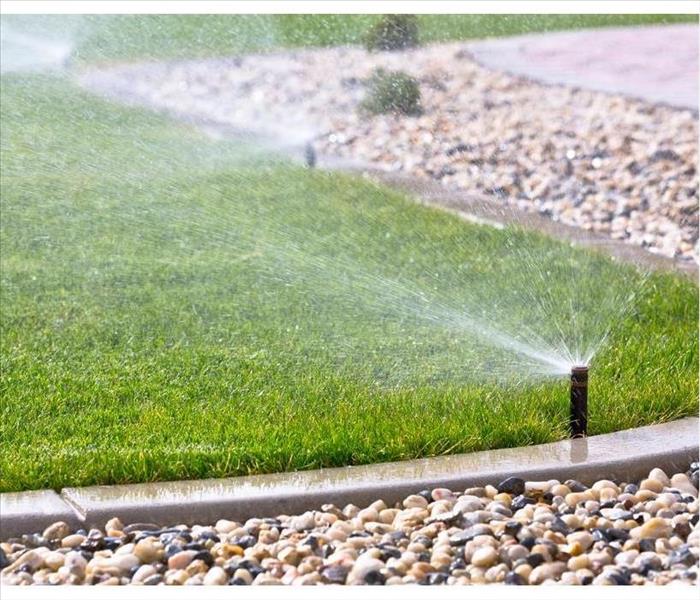 Having an irrigation maintenance schedule is a smart choice.
Having an irrigation maintenance schedule is a smart choice.
The Importance of a Scheduled Sprinkler Maintenance
Your sprinkler system is designed for your convenience. You likely had it installed so that you wouldn't have to worry about whether or not the landscaping on your commercial property in Guthrie, OK, gets watered frequently enough. You set the schedule, and the sprinklers do their job. Proper irrigation maintenance, however, is essential to ensuring this happens. Without regularly scheduled maintenance, your sprinklers could malfunction and flood your building.
Monthly
You should check sprinkler heads, valves, nozzles and pipes on a regular basis. You may think your sprinklers are just sitting out on the lawn, waiting to be enacted, but there are many things going on that could damage a sprinkler:
- Environmental hazards, such as high winds, blowing debris in to damage or clog the system
- People kicking the sprinkler heads as they trudge across the lawn
- Dogs or other animals chewing or digging around the sprinkler
- Cars jumping the curb and running over a sprinkler
Because so many things can happen when you're not looking, your irrigation maintenance schedule should include an inspection of the working parts of your system at least once a month.
Seasonally
In most places, the weather can change drastically with the season. This includes precipitation levels, which directly affect your need for irrigation. Adjust your watering schedule to the season to avoid sprinkler flooding that may necessitate water mitigation services.
Yearly
Auditing your system once a year to ensure that everything is not just functioning but working efficiently helps you keep track of when system parts may need updates. Check for broken sprinkler heads and leaks. You can save money not only on the costly repairs that result from a long-term problem but also on your water bill.
Having an irrigation maintenance schedule is a smart choice. It takes a little time and organization, but it pays off in the amount of money you save by avoiding large repairs.
Furnace Maintenance Tips
7/29/2021 (Permalink)
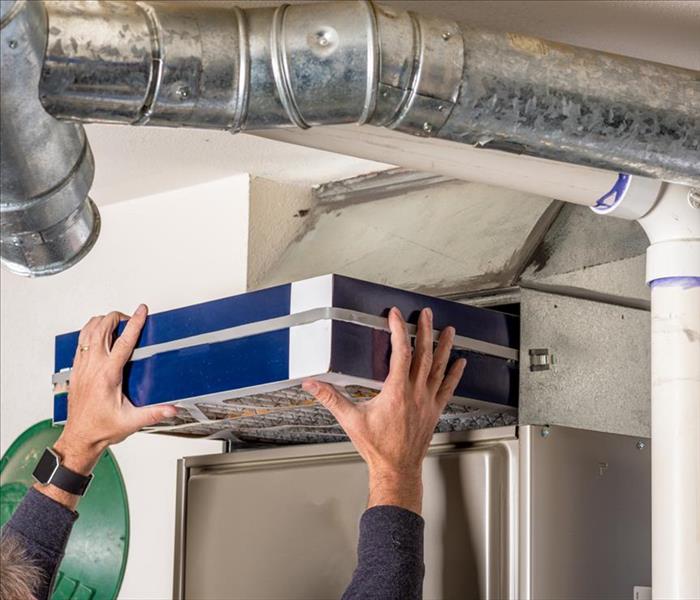 Change the filters on your furnace on regular basis.
Change the filters on your furnace on regular basis.
Make Sure Your Furnace Stays In a Good Shape
One of the main ways to ensure that your home in Austin, TX, is a comfortable place to live is by maintaining your furnace and air conditioning systems. Regular maintenance of the furnace is necessary to avoid breakdown. Furthermore, if you neglect your furnace, you may end up needing fire cleaning services from restoration specialists when the system causes fire damage. Here are a few ways to ensure that your furnace stays in good shape.
Preliminary Checkup
Before the first cold snap is expected, you need to check to make sure your furnace is working. You don't want to wait until you need it to discover that it requires repair. Turn the unit on to see if it generates heat. If not, one of three things could be the problem:
- Lack of power to source
- Obstruction in air distribution
- Thermostat issues
A qualified technician can accurately and safely diagnose the problem. If the furnace starts to smoke during an inspection, he or she can also probably handle the smoke cleaning.
Ongoing Maintenance
During the season the heater is used, regular care can help you avoid having to hire fire cleaning services. The simplest way to maintain your furnace is by changing the filters on a regular basis. If too much dust builds up on the filter, it can start to break down. When that happens, there's nothing to keep the dust out of the furnace itself, which can be a significant fire hazard. Excessive dust can also keep the air from flowing through like it needs to.
Post-Season Service
When spring has sprung, you may have little need of your heater for a few months. This is a great time to schedule its yearly tune up. Maintenance professionals can pinpoint and fix problems before you turn the furnace off for a while rather than letting them go undiscovered for months on end. As an added bonus, warmer weather means you may get a discount on off-season furnace maintenance.
Professionals who specialize in fire cleaning are also great at helping with preventative maintenance. Maintaining your furnace is necessary for your home's safety.
Best Ways to Clean Your Belongings After a Flood
7/29/2021 (Permalink)
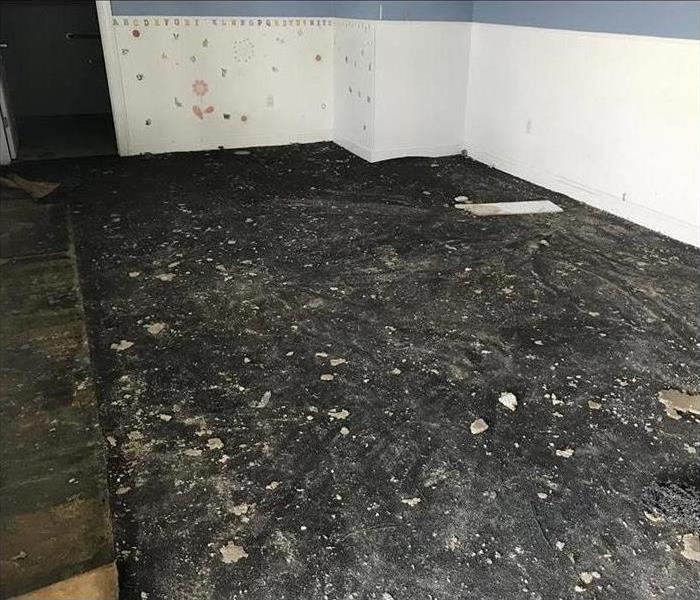 Damaged flooring after a storm.
Damaged flooring after a storm.
Content Cleaning After Water Damage
Watching a disaster such as a flood come through your Cele, TX, home is a helpless, heartbreaking feeling. In most cases, there is little you can do once the incident is in full force. Luckily, in many cases, you can salvage your most important belongings and essential parts of your house, as long as you use effective content cleaning measures.
Flooring
If you’re dealing with a flood in your home, you may have to replace your carpet or flooring altogether. However, in some cases where the flooding isn’t as bad, you may be able to keep your flooring with heavy-duty cleaning.
• Use high-pressure steam cleaning to clean carpets
• A wet vacuum can suck up water from hard surfaces
• Sanitize after removing water
• Make sure you thoroughly dry the area after you clean
Books and Documents
In a flood, you’ll be concerned about important documents and books. Restoration professionals have state-of-the-art measures to not only clean these items but make them look as close to new as possible. The technician will use methods such as vacuum freeze-drying and gamma irradiation to remove water. It’s also vital that the technician dries these items thoroughly. A professional can work with items such as photographs, x-rays, paper and parchment.
Porous vs. Non-Porous
Part of content cleaning includes assessing what you can save and what you must part with. Unfortunately, not even the best methods can save everything all of the time, especially if the flooding introduced black water into your home. It’s more difficult to clean and save porous items such as wood than it is to handle non-porous materials such as glass.
When you need an expert solution to your content cleaning needs after water damages parts of your home and belongings, make sure you find a company that can use these effective measures. You can rest easy knowing not everything will be a lost cause after a flood.
Tips for Making a Fire Claim
7/29/2021 (Permalink)
 File your insurance claim without delay.
File your insurance claim without delay.
How to File A Fire Claim
In the unfortunate event of a house fire in Sumner, OK feelings of not knowing where to begin the fire restoration process would be natural. Once you are certain that everyone is safe, there are steps to take to organize your response. After the fire trucks leave, it is important to seek professional help to assess the damage and secure the structure instead of trying to do this on your own.
Simplifying the Insurance Process
Home fire expenses can mount up quickly, and that is where your insurer steps in. To achieve the maximum benefit of your fire insurance policy, there are a few important tips to keep in mind.
- Call your insurance company to ask for an advance against your claim if you find that you have immediate expenses to cover out of pocket. This will be deducted from your overall claim once it is settled.
- Obtain a copy of the police report.
- Make a detailed list of losses, and don’t discard anything until after the adjuster’s visit. Documenting damage and losses is essential to a fair settlement.
- File your insurance claim without delay.
- Track all expenses related to fire restoration, and keep all receipts.
- Collect accurate and appropriate repair estimates in writing.
- Do not feel compelled to settle unless you are satisfied with the insurance company’s response. It is likely to be a negotiation.
Recovering From a Fire
Replacement, repair and restoration are all part of the process of rebounding from a house fire. However, feeling overwhelmed by all that needs to be done does not have to be inevitable. A methodical approach will go a long way in making the process run smoothly. Documenting all expenses and keeping the lines of communication open with your insurer will help keep things moving in the right direction. Fire restoration is not complete until you are resettled in your home with all remediation, including smoke cleaning, finished to your satisfaction.
Fighting Mold in the Lunchroom Fridge
7/19/2021 (Permalink)
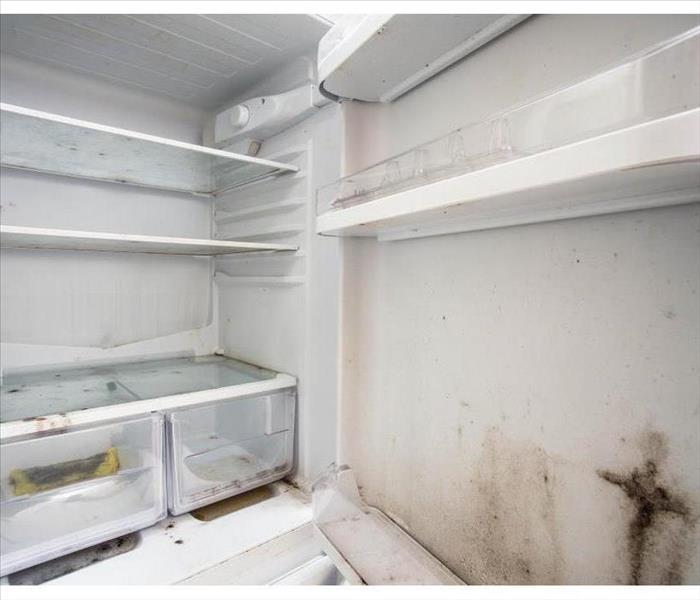 Mold growth on the refrigerator.
Mold growth on the refrigerator.
Fighting Mold in the Lunchroom Fridge
Company lunchrooms often have a fridge full of containers of unknown casseroles, vegetables, and desserts. These same refrigerators are often receptacles for leftover lunches of Chinese food, overlooked yogurt cartons, and curdled cream for coffee. The problem with forgotten food in the communal icebox is that fridge mold can develop. Sadly, with fungus growing inside the fridge, a yeasty, mold smell can also develop and spread into the breakroom. The following steps can help you remove the mold once it appears in the lunchroom refrigerator.
1. Empty the fridge. Toss all the containers, bags, and boxes of food into the garbage because they are probably contaminated with mold spores. If there is more than one fridge in the office, transfer frozen and perishable food items until cleanup is complete.
2. Make or purchase a mold remover. If you are making the cleaning solution, try mixing two cups of warm water and one cup of white vinegar. Mix ingredients in a spray bottle. Warning: Do not use bleach because it is too abrasive on the inside walls of the refrigerator.
3. Scrub inside the icebox and remove the fridge mold. After donning a safety mask, spray the inside walls and shelves of the refrigerator. Spray any mold colonies liberally. Remove the mold and cleaning spray with a wet cloth or sponge. If mold is severe, contact a mold removal team in Navina, OK, to eliminate the fungus.
4. Reapply the cleaning solution to the inside of the fridge. Although it may appear the mold is gone, spores can easily hide in plain sight. By cleaning all surfaces a second time, you can be sure to remove the spores and the mold smell as you continue disinfecting the fridge.
Once you remove the fridge mold, it should be safe to return new food to the unit. However, to make sure the mold doesn’t return, check for food that needs to be discarded on a weekly basis. By rotating the food inside the refrigerator, you can make sure your lunchroom is mold-free.
Checklist for Cleaning Belongings After Water Damage
6/29/2021 (Permalink)
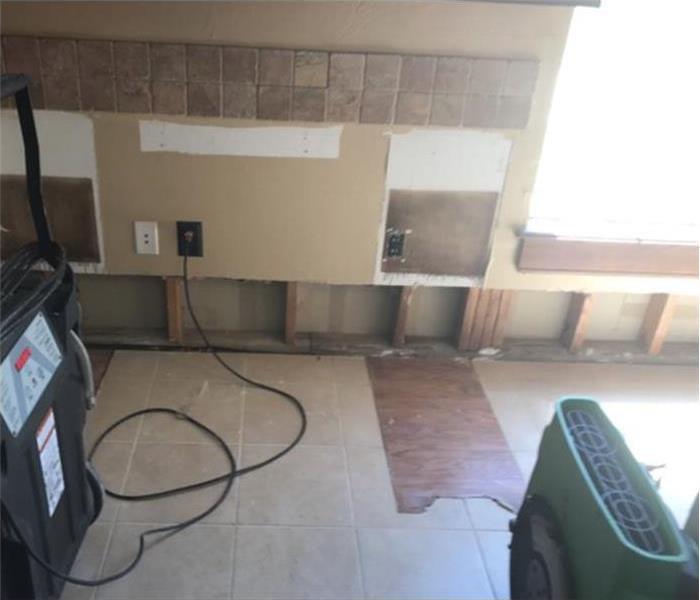 The cleanup process after water damage in Ceres, OK.
The cleanup process after water damage in Ceres, OK.
Content Cleaning
When your commercial building in Ceres, OK gets filled with water during a bad storm, you have to take on a lot of projects. Not only will you have to fix the structural damage done to your property, but you will also have to undergo some content cleaning. Working alongside a commercial restoration professional can make this cleanup process easier. Keep this checklist in mind as you and your crew start cleaning up after standing water.
1. Remove items from the building. While you may want to save some of your furnishings, everything needs to be taken out after a flood. You can clean and dry your belongings outside of the building to make the structural repairs easier to do. Take everything out of the building, including flooring, furniture and electronics.
2. Sort your belongings. The cleanup process is not going to be the same for every piece of furniture you own. Porous materials, such as furniture, carpets and upholstered items, may need more attention than non-porous items, such as stainless steel, tile and desks. You should also create a separate pile for electronic items.
3. Start cleaning. Once your items have been properly sorted, you can start the content cleaning process. This may mean using a washing machine, a strong cleansing solution or dry cleaning. Your goal should be to remove all dirt and debris from a material.
4. Consider throwing belongings away. If you cannot thoroughly clean a waterlogged item, you may have to throw it away rather than save it. Anything that has been sitting in floodwaters for more than 48 hours may be too far gone to salvage.
5. Dry out materials. Once your items are completely disinfected after sitting in black water, you can start to dry them out. Everything should be dry before you put it back inside your building.
There are a lot of steps you have to take when content cleaning. Remember, some items may be too damaged for you or your professionals to save.
Do You Know What To Do If a Fire Happens In Your Home?
6/29/2021 (Permalink)
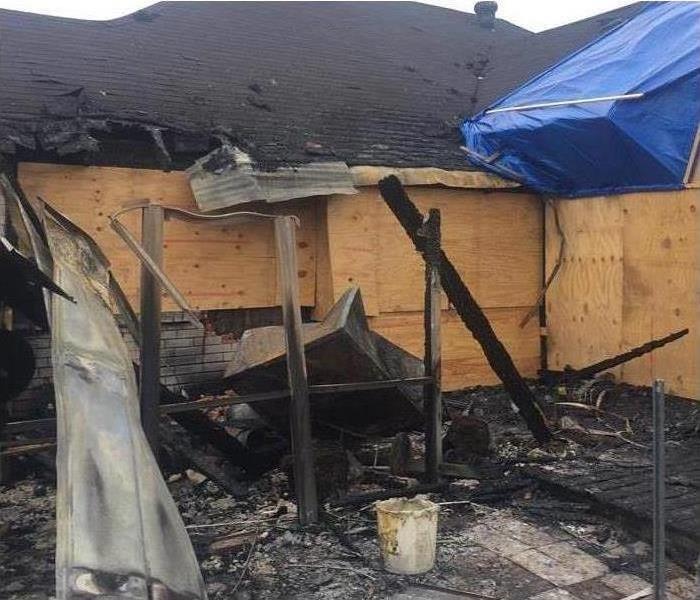 Fire damage in Navina, OK.
Fire damage in Navina, OK.
What To Do If There Is A Fire At Your Home?
While you’ll hopefully never need to deal with fire restoration, it’s wise to be prepared for any scenario. This is especially true if you own an older home or use a fireplace or space heater for warmth. It’s easy to become flustered and confused after you experience fire damage in your home, but here are three important things you should do in the hours and days after any fire event.
1. Have Emergency Contacts On Hand
It’s wise to always have emergency contacts in Navina, OK, on hand so you don’t have to look them up when you’re experiencing a fire or other emergency. Keep a list of emergency contacts on your refrigerator and in your phone’s contacts list. You might also want to memorize your local fire department and police department phone numbers so you can call them immediately when needed.
2. Call Your Insurance Company
Call your home insurance company immediately after the fire. Let them know what happened and schedule a time to speak with your insurance representative about your fire insurance coverage. Make sure you understand what steps you need to take to confirm your insurance policy covers the damage.
3. Call Restoration Experts
Smoke cleaning and fire restoration are not for the faint of heart. The best thing to do is call fire restoration professionals and have them inspect the damage. After performing a thorough evaluation, they’ll be able to develop a detailed plan of action for your home. Depending on the damage, they may offer board-up, water removal, smoke cleaning, sanitizing and restoration services.
There’s no need to become overwhelmed by smoke and fire damage in your home. Fire restoration professionals are highly experienced in restoring damage due to smoke and fires and will do everything they can to return your home to like-new condition.
Inspection and Maintenance of Bathroom Supply Lines
6/29/2021 (Permalink)
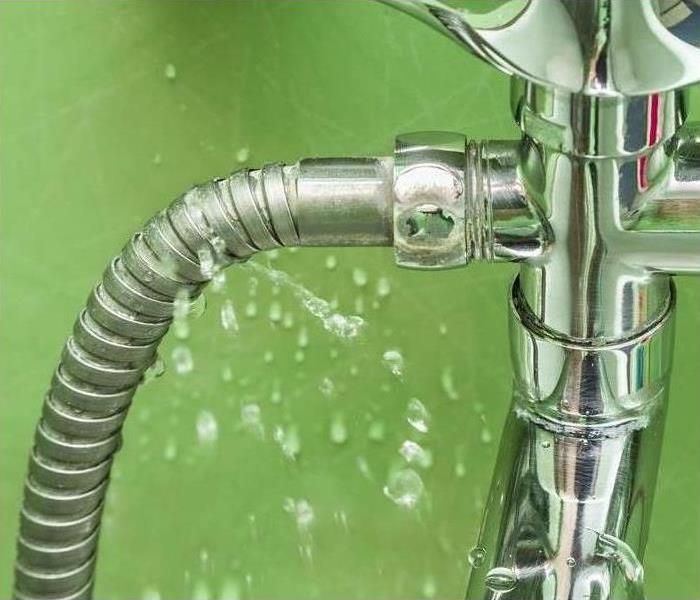 Supply line damage takes time and money to repair.
Supply line damage takes time and money to repair.
Supply line damage can lead to many disasters. If leaking, the pressurized tube can release a lot of water, which can ultimately lead to serious water damage. To avoid the time and expense of restoration and repair, here are a few tips concerning supply lines.
What Is a Supply Line?
A supply line is a tube that connects to a faucet, toilet, dishwasher, sink, and other fixtures. It transfers water from the pipe into the fixture. These lines are normally made from plastic or stainless steel tubing. This tubing is flexible and is often braided to increase the strength and durability of the line.
How Does It Get Damaged?
Supply line damage isn’t rare. A few ways that they can get damaged include the following:
- High amounts of pressure. This pressure can escape through weak joints
- Sediment build-up. This can block the water and cause the tube to bulge and burst.
- Corrosion can cause leaks that can easily expand.
Unlike a subtle bathroom leak that happens under the floor or within a wall, a supply line leak is easy to spot. If you find one in your bathroom, quickly shut off the water supply. This will prevent any more water from escaping the line and entering parts of your home that normally don’t get water.
When Should I Inspect my Supply Lines?
All pipes and plumbing should be inspected yearly in Perry, OK, to ensure the integrity of your home’s water pipe system. However, supply lines should be checked often. Check for drips, bulges, and any corrosion that you might notice. It’s also important to test the shut-off valves to see if they are working properly.
Supply line damage takes time and money to repair. Daily use of sinks, toilets and other fixtures makes it even easier for leaks and bursts to occur. However, by taking care of your supply lines and inspecting them yearly, you can stop water damage from happening.
How To Prepare Your Building For a Storm
5/26/2021 (Permalink)
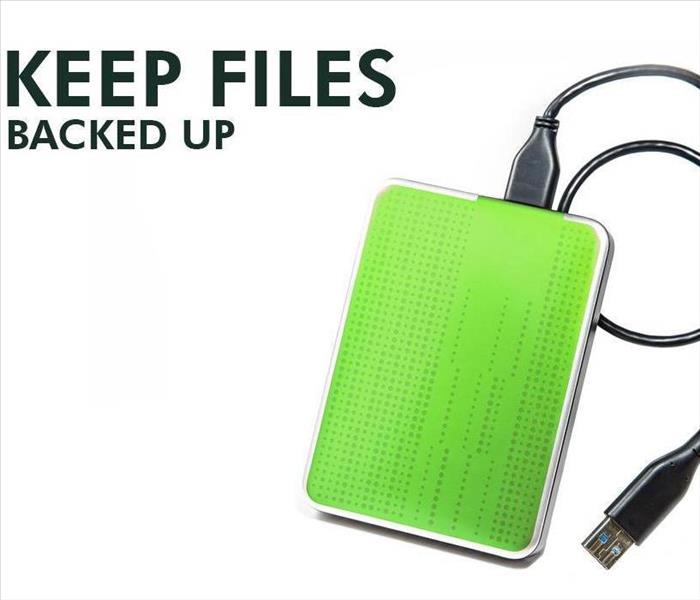 Keep computer files backed up on an external hard drive or cloud in case of fire damage.
Keep computer files backed up on an external hard drive or cloud in case of fire damage.
Storm Preparation Tips
If a storm is approaching in Stillwater, OK, you may be worried about your commercial building and preparing for damages from the storm. Although many are prepared for storm damage like flood water in their homes, it's also important for building owners to ensure that their building can withstand a storm. Whether you're just looking to gain some extra knowledge or are preparing a storm emergency plan, these storm preparation tips can help you stay safe in the event of a storm.
Take Time To Assess Your Property
It's important to inspect your building prior to a storm approaching to ensure that it can withstand high winds, hail or other damaging weather. During your assessment, you can make sure that:
- All shutters are on windows in case of high wind
- Any furniture that could be impacted by flood water is removed
- Large branches or trees that could potentially fall on your building during a storm are removed
- Your building has had a recent roof inspection and no repairs or upgrades need to be made
You may want to take note of the strengths and weaknesses of your building, and address any weaknesses that could potentially damage your building. For example,
Put Documents in a Safe Place
All buildings have some types of important documents that need to be kept safe and dry, such as legal documents, building inspections, financial documents and tax information. A flooded building can destroy documents in just a few seconds, so it's important to locate these documents and move them to a safe, dry space. If important information is kept digitally, back up an external hard drive and keep it off-site or to an upper level in case of flood water damage.
Although these storm preparation tips can help prepare your building for a flood, hurricane or storm, your building may still need repairs after a big storm. After a storm, call in a storm damage company to help you with the restoration process.
Who Pays After an Apartment Fire?
4/24/2021 (Permalink)
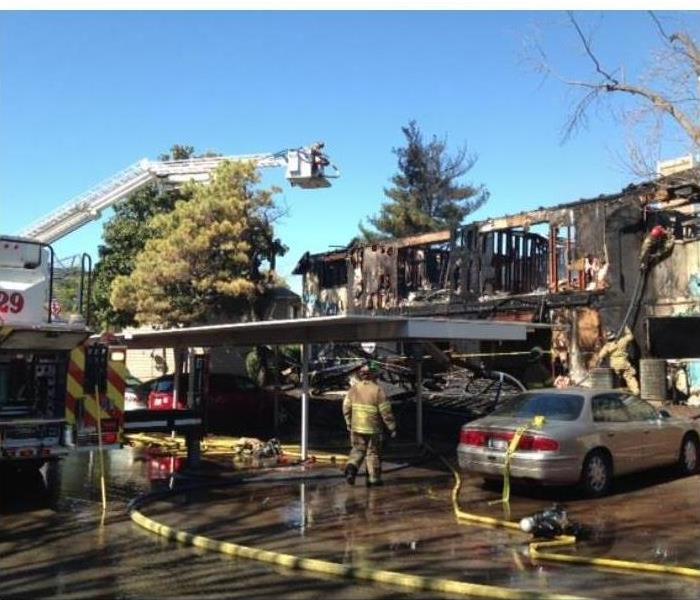 Apartment fire in Guthrie, OK.
Apartment fire in Guthrie, OK.
Who Is Responsible In The Event Of An Apartment Fire
When you are a landlord or property owner, an apartment fire can be confusing. The last thing that you want to worry about is who pays for the damage. Fortunately, most state and federal responsibility laws are pretty clear.
Landlord / Property Owner's Responsibility
The landlord or property owner is responsible for the structure and the systems such as:
- Electrical
- Heat
- Air conditioning
- Plumbing
These systems are part of the overall building and usually inaccessible to tenants. For the most part, as an owner or landlord, you are not personally responsible. Your insurance company will pay for the damage.
This ultimately depends on what your policy says. In many cases, this insurance policy will include things like hiring a remediation company in Guthrie, OK, as well as any other fire damage repair costs.
This assumes that the damage is due to a fault with the building, fire hazard, or inclement weather. You, as a landlord, are not responsible for the tenant's personal property or belongings damaged in the fire.
Tenant Responsibility
Your tenants also have responsibilities after a fire. Tenants are responsible for their possessions and personal property in the event of an apartment fire due to a problem with the structure or a natural cause like lightning. This is why you should always require your tenants to have renters insurance. In the majority of cases, the insurance will pick up where the property insurance leaves off.
Of course, there are some exceptions. If the tenant or one of their guests starts the fire, then they will be held responsible. Fortunately, insurance companies often straighten this out for you.
If your tenant does not have insurance, things might get a bit tricky. It is always a good idea to include fire insurance or renter's insurance as a requirement in your lease. This way, it is clear who is responsible for paying for damages when the fire is your tenant's fault.
As a landlord or property owner, you should know who is responsible in the event of an apartment fire. Knowing your responsibility is a key factor in making your recovery go smoothly.
3 Tips for Handling a Company-Wide Snow Day
4/10/2021 (Permalink)
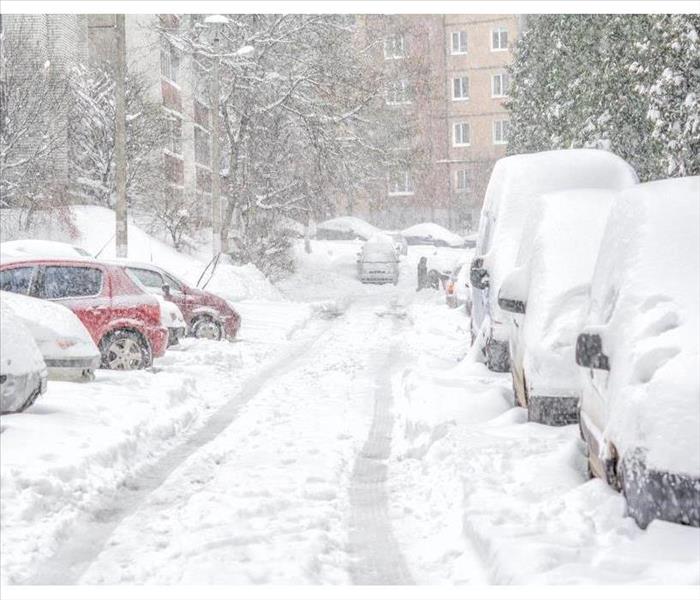 Snow storm season won't last forever.
Snow storm season won't last forever.
Three Tips For Handling Inclement Weather
As a business owner in Perry, OK, you know a snow storm can roll in unexpectedly in a matter of hours. For your employees, commuting in harsh weather conditions can be both dangerous and inconvenient. Consider the following three tips for handling inclement weather days at your local business.
1. Create a Snow Day Plan in Advance
To get the results you desire, planning ahead of time is the best way to ensure success. Create an inclement weather plan and distribute it to all employees as soon as possible. Determine how your employees will be contacted in case of a workday delay or cancelation due to a snow storm. Designate workers who are essential on-site, and those who can work from home. If weather reports show a storm is coming, review your policies with employees to give them a heads-up.
Implementing a weather-related work delay can be beneficial:
- Show your employees that you care about their safety
- Lower operation costs by closing facilities for the day
- Bolster at-home productivity for employees who can work remotely
2. Prevent Weather-Induced Emergencies
Along with severe storms can come freezing cold. If local news stations predict falling temperatures, protect your facilities from potential weather-related damage. Ensure all equipment is safely put away in weather-proof storage. Maintain temperatures above 55 degrees inside your buildings to prevent a pipe burst or freeze incident. Keep your facilities safe from winter storms, or you may need to contact an after-storm cleanup service.
3. Stick to Your Decision
Once you create a protocol for handling a storm, be consistent and follow through so your employees know they can count on you. If bad weather is looming, make the call for a snow day and stick with it.
Snow storm season won't last forever. Make sure you're prepared, so your business and employees can weather the winter with a minimum of trouble.
3 Reasons You Might Find Water in Your Crawl Space
3/9/2021 (Permalink)
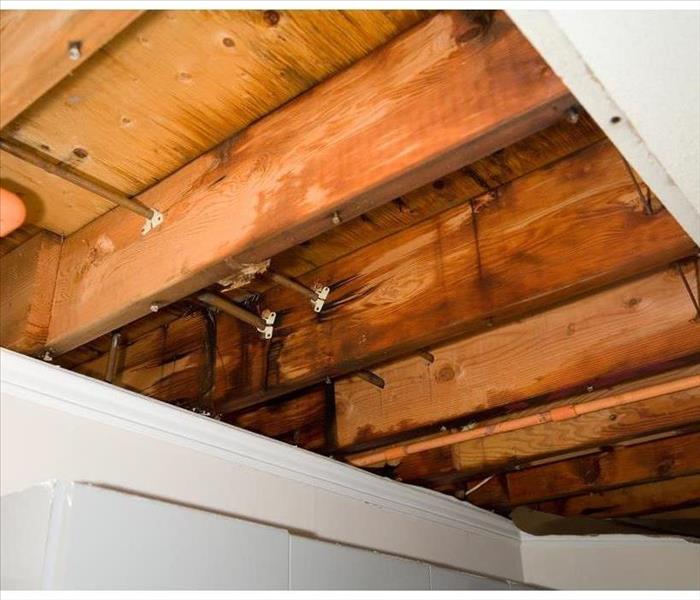 Wet crawl space in Ceres, OK.
Wet crawl space in Ceres, OK.
Common Causes For Water Inside A Crawl Space
A wet crawl space can create more problems than you might expect. It makes water damage less visible, but it also creates the perfect conditions for mold growth. The moisture also weakens the Ceres, OK, house's structural materials, creating greater damage as a result. Learn about the most common causes for water inside the crawl space so you can prevent an incident.
1. Overwatered Plants
You can accidentally flood the crawl space by doing something as simple as overwatering plants, especially those close to the house's foundation. Whether you use too much water or leave the hose or sprinkler running beyond the necessary time, the excess will seep into the house and reach the lower sections first. You can easily turn off the water to resolve this issue. You can spot this problem if you see water pooling near the affected area.
2. Poor Sloping Grade
Another factor that can result in a wet crawl space is the lack of proper grading around your house. Ideally, you want the grading to slope away from the building and towards the outer yard or the streets. This feature ensures that any incoming water flows away from the foundation, preventing flooding. Check the grade after winter, intense rainfall or an overwatering incident. If the slope is altered or missing, build it up between six to eight inches away from home.
3. Defective Plumbing
Another reason why you might find water inside your crawl space involves defective or broken pipes. Even if the leak or burst pipe is in the house's upper floors, the water will always trickle down. If you find water in the crawl space or lower area, conduct a detailed search to find the source and fix it. Hire a plumber if you are unable to find it.
You should deal with a wet crawl space fast before mold growth and water damage threatens your home. Identify these occurrences to avoid this situation and contact emergency remediation services if you find water in that area or anywhere else.
Here to Help After The Winter Storm
3/1/2021 (Permalink)
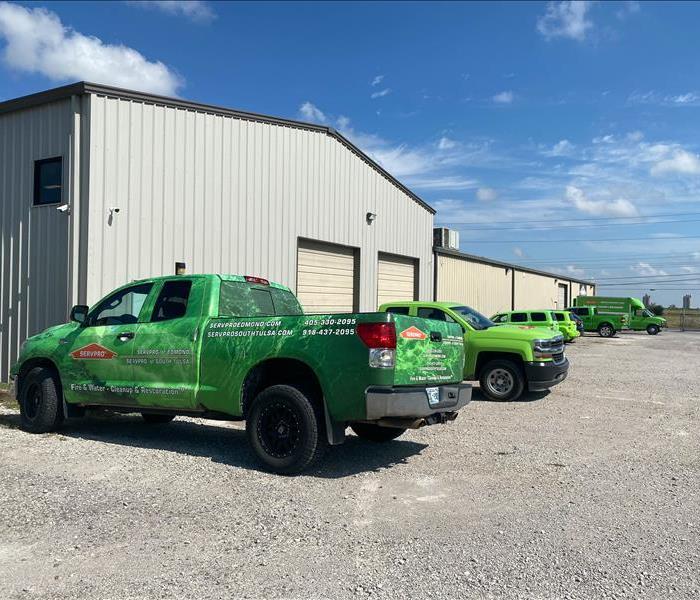 At SERVPRO Team Jones, we are no strangers of disaster.
At SERVPRO Team Jones, we are no strangers of disaster.
The chain of events that began the week before Valentine’s Day has been a never-before-seen national disaster. The ice and snow that quickly piled up, the subzero temperatures that marched in with it, as well as the 50-60 mph winds across many states paralyzed daily life. All in all, 150 million people in 25 states, in a 2000 mile stretch from southern Texas to northern Maine were affected. Over 5 million people were without power, along with hundreds of thousands without water, sewer and natural gas including many of our own teammates.
At SERVPRO Team Jones, we are no strangers of disaster and over the last 15 years our Large Loss Disaster Recovery Team has traveled coast to coast helping those in need. This time around, it was OUR backyard and OUR neighbors who needed the help. With over 30,000 calls in the last two weeks for disaster cleanup, SERVPRO has hundreds of crews from across the country that are leaving their home states to help. Many of these men and women spent months away from their families and friends recently helping our friends on the Gulf Coast.
While the heavy snow and ice did delay many of these crews from being able to hit the road, as well as most trucking services ceasing operations, reinforcements are still coming in daily to help. As neighbors, we’d like to ask for your patience and understanding as our disaster recovery crews are working 7 days a week to put our community back together one building and one family at a time. Many of these crews are working 14-16 hours a day but their relentless servant hearts won’t let them give up on you.
We’re human- we’re going to make mistakes, we’re going to drop the ball sometimes and in a disaster this widespread we won’t be able to make it to every single loss as quickly as we want to. We will keep trying, we will keep working, we will keep drying, disinfecting, cleaning and restoring. It is what we do – it’s how we’re made – it’s what makes us tick.
If you happen to see one of those bright green SERVPRO trucks from here or from out of town– give them a wave. These real-life heroes are trying their best for you. A little smile or a wave is great encouragement to all those that left their friends and families behind to answer your calls for help. Thank you for understanding, thank you for trusting in us and thank you for believing in us.
How Do I Know If I Am Handling Black Water?
2/18/2021 (Permalink)
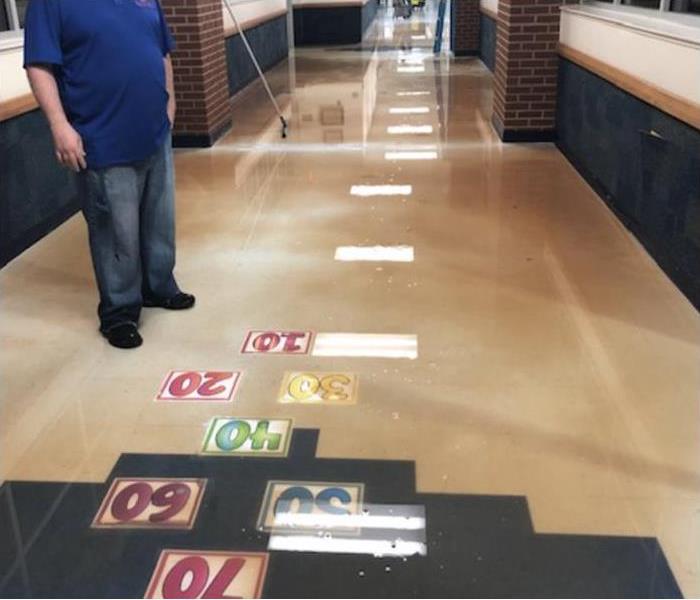 Flood from contaminated water in a Sumner, OK school.
Flood from contaminated water in a Sumner, OK school.
Ways To Identify The Type Of Water That Is Leaking Into Your Property
Not all leaks are equal in Sumner, OK. When you experience a severe leak or flood on your property, it is important to take the appropriate steps to prevent water damage. The water that enters a building is categorized by the following characteristics:
- Clean water
- Gently used water
- Contaminated wastewater
Here are some ways to identify the type of water that is leaking into your property.
Find the Source of the Water
Knowing the source of the water entering the building is the first way to identify unsanitary water. If the water is coming from a water supply line, it is unlikely to be harmful to your health. Water that is sourced from a drainage pipe or a clogged toilet is highly toxic and should be dealt with safely. Locate the leak to determine the type of water.
Clean Water and Gray Water Sources
Clean water is water that is drinkable. A clean water leak is not toxic but should be cleaned quickly to prevent water damage to the building. Gray water is somewhat contaminated, having been gently used in sinks, showers, or washing machines. Though gray water is lightly contaminated, it is not as toxic as category 3 water.
Category 3 Water
Category 3 water, or black water, is highly toxic and, in most cases, is sourced from sewage. This type of water should be handled with extra precaution. Wear protective gear, such as gloves and bodysuits, if you will be cleaning water from sewers or drainage pipes. It is best to contact a professional water cleanup and restoration service to clean and restore your property from category 3 water damage.
Your local SERVPRO is Faster to Any Size Disaster and can properly restore your property today. If you have experienced a leak or flood from contaminated water, be sure to contact the experts preferred by most insurance companies. Acting fast will prevent severe water damages to your property.
The Top 3 Causes of Major Water Damage
2/10/2021 (Permalink)
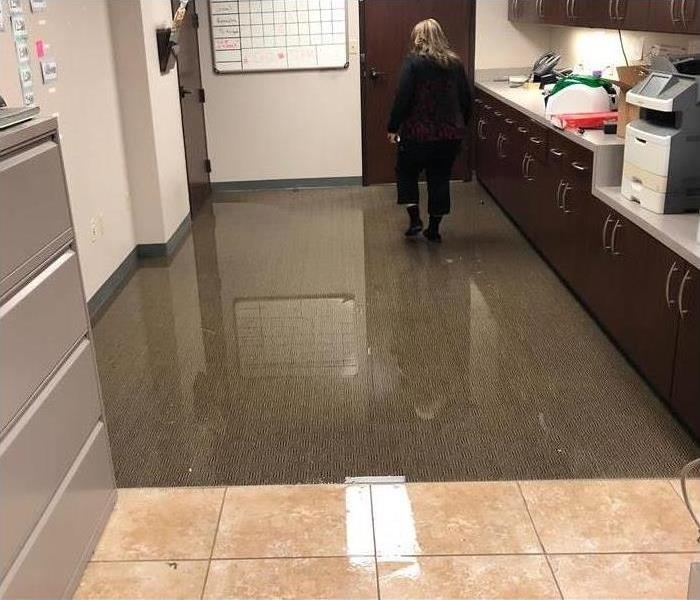 Commercial water damage in Stillwater, OK.
Commercial water damage in Stillwater, OK.
Water Damage At Commercial Building
Water damage can occur at a commercial building due to problems with the pipes and sewer lines or outdoor flooding. A supply line break calls for pipe burst cleanup, a sewer backup may require cleaning out the line and backups or floods both require disinfection of materials exposed to contaminated water. Learn more about three common causes of water damage at commercial buildings in Stillwater, OK.
1. A Broken Pipe
When a pipe breaks, hundreds of gallons of water may flow into the interior of a building. The amount of time between the start of a leak, detection and repair determine the severity of water damage. Regardless of the amount of water, clean water from a supply line is Category One water damage. Pipe burst cleanup is the most common cause of large-scale water damage.
2. A Sewer Backup
A blocked sewer line or an overflowing main may cause a backup into the lowest level of a building. Sewer water contains solid waste and is considered Category Three water damage. Cleaning and disinfection are necessary, and a building owner may want to contact a sewer cleanup company to avoid mold or other secondary damage.
3. A Flood Incident
Flooding due to heavy rain that does not drain properly or overflowing bodies of surface water is the third most common cause of major water damage. Flood water is also Category Three damage, as water becomes increasingly contaminated as it travels over surfaces toward a building and remains standing until extraction can take place.
Pipe breaks and sewer backups are the most common causes of large-scale commercial water damage in Stillwater, OK. Flooding may be less likely, but can also cause major damage to the interior and exterior of a structure. Respond to the cause of damage by arranging for pipe burst cleanup or other mitigation measures followed by a complete restoration.
Avoid These 4 Things After a Home Flood
1/14/2021 (Permalink)
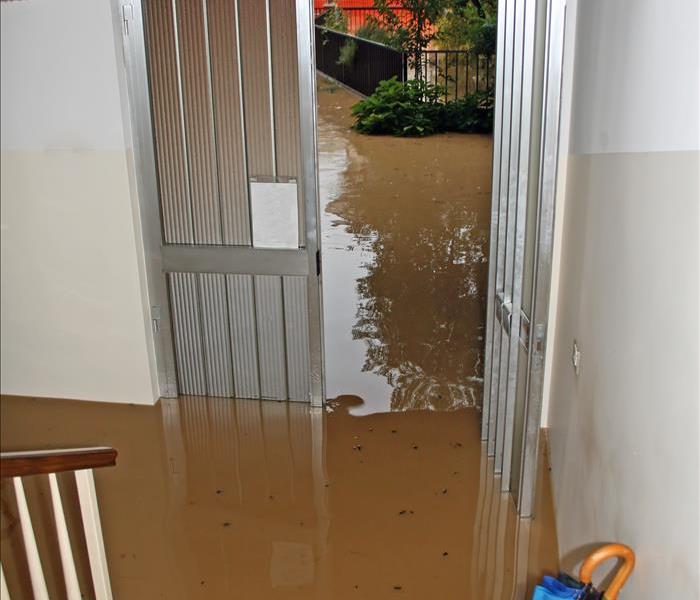 Flood damage to a home in Perry, OK
Flood damage to a home in Perry, OK
When lakes, rivers, and sewers overflow into a home, the flood water brings more than moisture into a residence. The fluid harbors high levels of bacteria and microbes, making the dampness a structural hazard. Homeowners should be careful upon reentrance, taking great care to avoid certain things.
The Following are Four Things Not To Do
1. Resume Residence
Blackwater is not safe for others to be around. That means until everything is cleaned up and assessed properly, owners should reside in an alternate location. Make plans to stay with friends, neighbors or a hotel.
2. Handle Items With Bare Hands
A flooded home hosts organisms that should not come into contact with human skin. Seek professional assistance to examine the location, and if you do go inside be sure to wear protective gear such as gloves and rubber knee-high boots.
Experts are likely to wear clothing designed to safeguard them; plus, they may create a barrier among rooms that are safe versus contaminated.
3. Use Household Cleaners
Flood water absorbs quickly into porous materials. That means that carpets, drywall, and possessions could be polluted. Soap and other cleaners such as bleach do guarantee internal cleaning; therefore, it’s best to remove anything saturated from the premises.
4. Allow Premises to Dry Naturally
While water damage may seem innocent enough, it’s quite problematic. When left alone, it leads to secondary issues such as mold and mildew. Appropriate and immediate action should be taken to dry out the rooms using the right equipment. Industrial dehumidifiers extract humidity from the air and the walls. Moisture readers determine if spots are in the correct zones. Rely on these tools.
If a home is harmed by floodwater, homeowners should jump into action; however, that doesn’t necessarily mean grabbing a sponge and chemical bottle. Work with a water remediation team in Perry, OK, to handle the exposure in the right manner.
Why Water-Flooded Lights Are Dangerous and How They Should Be Handled
12/29/2020 (Permalink)
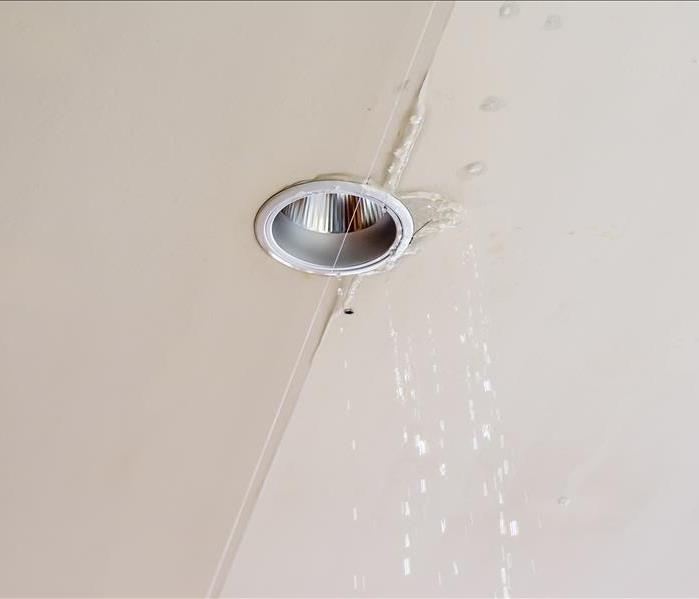 If ever water in light scenario emerges inside your residence, treat the event with caution
If ever water in light scenario emerges inside your residence, treat the event with caution
When your home in Ceres, OK, experiences water in light fixtures, danger is always present. Mitigating the peril is imperative. Here are a few reasons why rooms containing water-flooded lights should be avoided and what you must do once they occur.
Flooded Lighting Dangers
Never stand or walk underneath damp fixtures, as:
- Electrified drips could deliver a severe shock
- The wiring could become compromised and a fire may start
- Ceiling damage could cause a collapse
The wisest choice you can make is to hire a residential water restoration expert to set things right on your behalf. The possibility of electrocution and other related hazards make attempting to reverse any water in light situation on your own extremely foolish.
Flooded Lighting Protection Measures
Always take action to minimize the peril posed when water mixes with electricity. The first priority should be shutting off power. Once this has been done, test out dry appliances with a non-contact voltage tester to verify that all wattage has been definitively cut. Assuming the moisture’s origin is a leaky pipe, shut down your water supply with equal urgency. Only allow a professional plumber to fix your lines, just as a qualified electrician must be hired to correct compromised lights.
Buckets and towels underneath dripping apertures can help prevent floors from sustaining further damage. Stop wood from continually soaking up water by drying everything as quickly as possible. Open windows and doors to accelerate the aeration process. Strategically placed fans can also move evaporation forward.
Light switches should be covered with duct tape, so no one accidentally transforms an otherwise non-threatening puddle into a hazard. Prevent entry into jeopardized spaces by shutting doors and hanging warning signs on them.
If ever a water in light scenario emerges inside your residence, treat the event with caution. Respect the area as you would any hazardous locale and immediately contact reliable professionals to alleviate the risk.
3 Questions About Fire Damage Restoration Costs
12/29/2020 (Permalink)
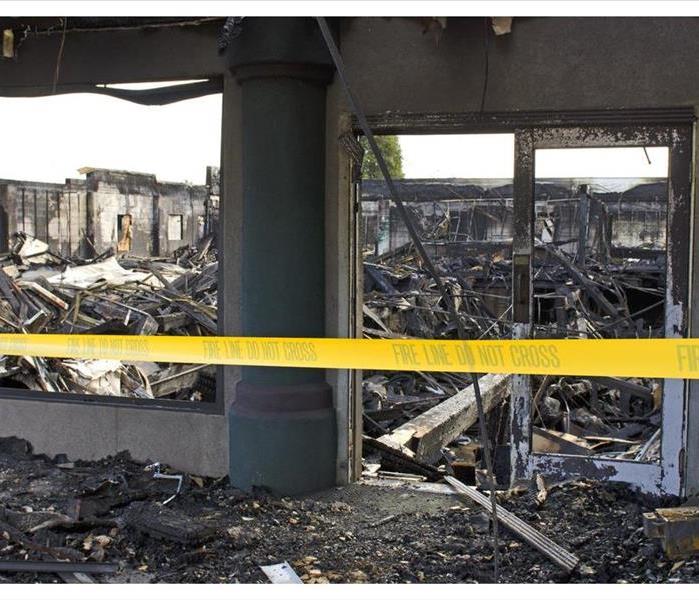 Commercial fire can lead to extensive fire and smoke damage
Commercial fire can lead to extensive fire and smoke damage
Know The Answers To Some Common Questions About Restoration Cost
Even a small commercial fire can lead to extensive fire and smoke damage and is worsened by water damage from extinguishing the flames. Getting a professional remediation company out as soon as possible is the key to preventing further fire damage to your business in Navina, OK. The first thing this company will do is provide you with an estimate for how much the remediation will cost. While your insurance will cover most repairs, you still need to know how to read this bill and understand what is happening.
1. What Are the Average Restoration Costs?
Most businesses cost a few thousand dollars to repair the damage of a small fire. A large fire that destroys a roof or all of your belongings can cost significantly more, with total fees nearing $50,000.
2. How Much Does Professional Restoration Cost?
It may take several different types of restoration to get your business running again. Your estimate will include all of the necessary factors. It can include water removal, home drying, content restoration, cleaning, deodorizing, and HVAC repair. The more types of remediation you require, the higher your bill will be.
3. Does the Company You Hire Impact Your Cost?
Some companies specialize in fire remediation but do not accept insurance, which will raise the amount you pay out of pocket. Others send your bill to your insurance company directly and work with them to minimize the amount you will pay out of pocket. In other words, if you hire a company that works with your insurance company, you will pay less.
While there are average restoration costs, each estimate will be based on how many remediation types your situation requires. Fortunately, some professional companies are willing to work with your insurance company to reduce the amount you will pay out of pocket.
Avoiding Mold Related Lawsuits in Rental Properties
12/14/2020 (Permalink)
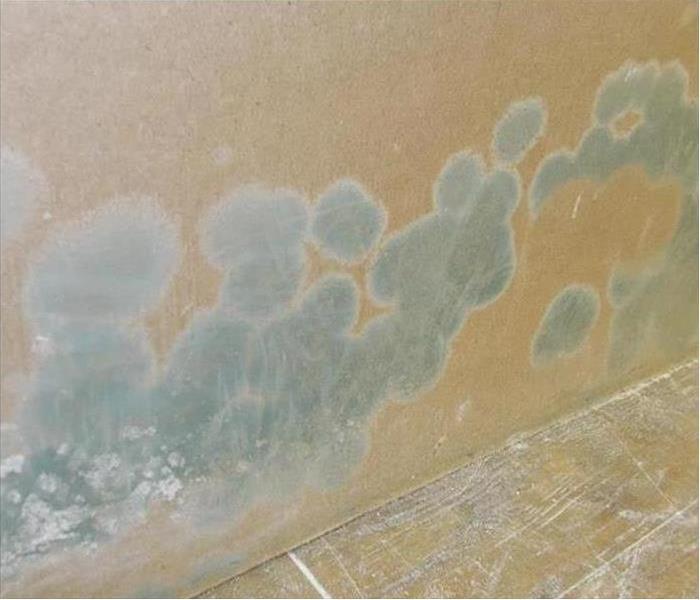 Commercial mold growth
Commercial mold growth
Unchecked mold growth in rental properties can not only lead to mold insurance claims but lawsuits against property managers. It is important for property owners to take steps to avoid potential mold-related lawsuits.
Responsibility for Mold Prevention
Landlords and tenants share responsibility for mold remediation in rental properties. Mold is usually caused by excess moisture. Tenants are responsible for taking steps to minimize excess moisture:
- Using exhaust fans
- Keeping their residence well-ventilated
- Properly venting dryers
- Cleaning
- Wiping up condensation
- Reporting mold problems to the property owner
Landlords are expected to fix any leaks in the roof, windows, pipes or foundation promptly. Additionally, they may need to utilize the services of a mold remediation company in Guthrie, OK, to remove existing mold growth or dry out the wet property.
Handling Mold Cleanup
The cause of the mold is usually the factor that determines whether the property owner or the tenant is responsible for mold cleanup. Mold insurance claims may cover the cost of some types of mold damage. Generally, if the tenant's negligence caused the mold problem, the tenant will be responsible for the cost of mold cleanup. However, if the mold resulted from a properly reported leak, the property manager will most likely be responsible.
Legal Issues
Legal responsibility for mold damage varies by city and state. In some places, mold may fall under regulations that govern indoor air quality, requirements of habitability or legal nuisance. In cases where mold resulted due to the tenant's negligence, the property owner is usually not liable. However, because liability can result from the negligence of the property owner, all mold claim related lawsuits should be taken seriously.
Mold insurance claims may cover the cost of repairing some conditions, such as leaking roofs or pipes, that can lead to mold problems that are the responsibility of property owners. Promptly addressing mold issues reported by tenants is key to avoiding potential lawsuits.
4 Tips for Avoiding a Water-Based Small Business Claim
12/14/2020 (Permalink)
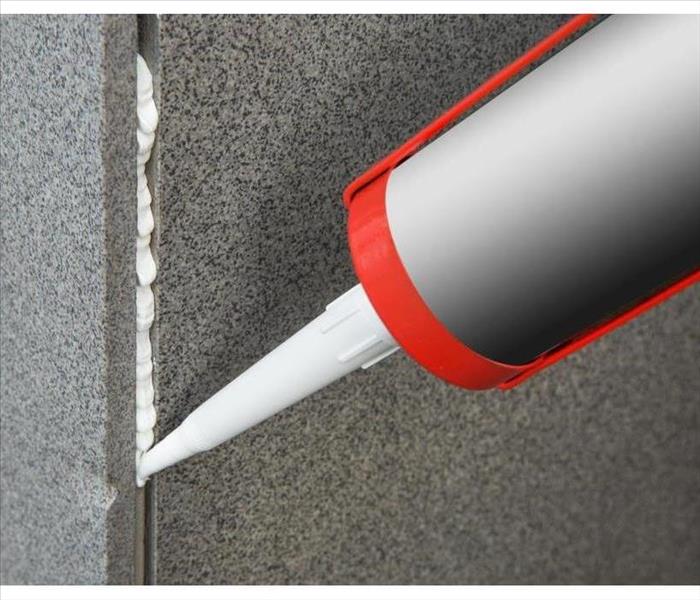 Seal cracks
Seal cracks
Four Tips For Avoiding A Water-Based Small Business Claim
Dealing with water problems in your Stillwater, OK, building can be a harrowing experience. What's worse, if not properly cared for, it may lead to a claim against you. This isn't just about companies with obvious water problems, either. You could have impending damage lying in wait within your foundation.
1. Make a Cleanup Plan
First and foremost, you need to have a comprehensive plan in case anything goes wrong. All the preventative measures in the world may not be enough to stop a problem, so keeping your company safe relies on responsive action. First, know how to take immediate measures in order to avoid a business claim. These are some things to consider:
- Where the main water supply is
- How to shut the water supply off
- How to get rid of ice and/or snow from tricky areas
Next, know who to call. If the problem is substantial, bringing in remediation experts can be the best solution.
2. Seal Cracks
Take the time to inspect your building thoroughly, whether through you or a professional. If you find any cracks or holes, your first priority should be to seal each one. The last thing you want to find is damage from a preventable leak.
3. Keep Products High Up
If you do experience water damage, the items most likely to be damaged are the ones on lower floors. For instance, a flood tends to start affecting spaces at ground level. Therefore, you can avoid damage to your products by placing the items higher up.
4. Insulate Pipes
Your pipes, unbeknownst to you, may be on the brink of causing problems. If these mechanisms aren't properly cared for, a pipe break could occur. Therefore, it's important to insulate any exposed ones. This can stop bursting or freezing.
Avoiding any sort of insurance claim against your business is a top priority. Even if you experience water problems, quick action can prevent a business claim from occurring. Stay on your toes and keep your company thriving.
How To Create a Fire Escape Plan for Your Family
12/14/2020 (Permalink)
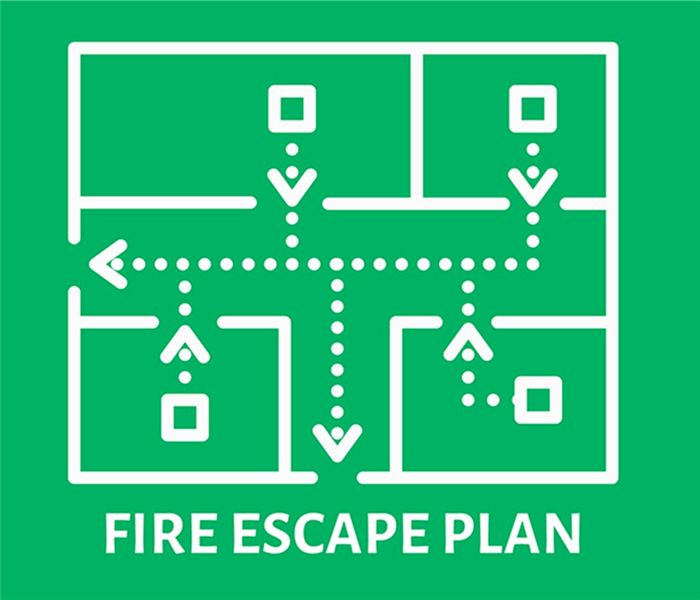 Each member of your family needs to have multiple plans for how to exit your home
Each member of your family needs to have multiple plans for how to exit your home
How To Create a Fire Escape Plan for Your Family
You've been teaching your child from a young age that fire is dangerous. They know not to leave a kitchen towel on the stove or a burning candle unattended. Does your family have a fire escape plan? Depending on the age of your children, they may roll their eyes—they've been talking about fire safety in Sumner, OK, since preschool so they think anything related to kids' safety is silly. However, an emergency escape plan at school is different than at home. Regardless of how "cool" your kids think it is, discussing and practicing an escape plan can save lives.
1. Plan to Evacuate
Each member of your family needs to have multiple plans for how to exit your home, including at least two safe ways to escape from their bedroom. Talk about how to crawl underneath the smoke and check doors for danger. Consider installing fire safety ladders for higher-story rooms. Discuss what should be done if your child finds themselves trapped and unable to escape.
2. Plan to Meet
Where will your family convene once everyone has safely exited the home? A central meeting spot when escaping a home fire protects families and firefighters. Often, firefighters have to go into dangerous situations to find children who were actually safe, but the family didn't have a meeting spot. Don't just talk about it, go to the spot.
3. Plan to Recover
Your kids' safety is your top priority, but that extends to caring for them after a fire has damaged your home. Contact your insurance company now to learn which local fire remediation company you can work with so that you don't have to do the research after a crisis. Make a plan for who you can stay with and for how long if you can't return immediately to your home.
Although discussing a fire escape plan may seem daunting, your kids' safety is worth it, and you'll all have peace of mind knowing that you are prepared.
Three Causes for Bursting Pipes
12/1/2020 (Permalink)
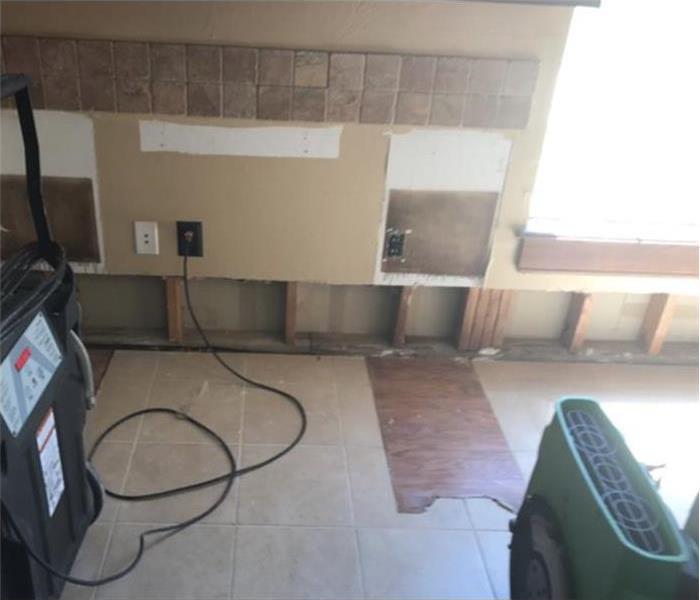 Water damage in Perry, OK
Water damage in Perry, OK
What Causes Pipes To Burst
Bursting pipes can be a disaster for homeowners, having effects not limited to:
- A flooded home
- Severe water damage
- Moisture retention and mold
- Damaged furniture, carpet, walls, and ceilings
It is important to call a plumber right away to fix broken pipes and prevent water damages. Knowing what causes pipes to burst could help you prevent them. Here are some possible causes for a burst pipe in Perry, OK:
High Water Pressure
If the water pressure in your home is too high, your pipes will be susceptible to corrosion-caused leaks. Pipes are only made to handle around 60 psi. When the water running through your pipes exceeds this pressure, your pipes can burst. The best way to diagnose high water pressure in your home is to use a pressure gauge on the faucet nearest to the main water supply line.
Improper Soldering
If the pipes in your home are not soldered properly, the water running through them could seep through the crevices in the pipe connections. The water escaping from the unsoldered joints often go unnoticed until a water stain develops on to walls or ceilings. Improperly soldered pipes should be addressed immediately to prevent bursting pipes from flooding your home.
Moving Pipes
If you hear clanging from water moving around your pipes, you have a water hammer problem in your home's plumbing system. When the shock-absorbing mechanisms around your pipe become waterlogged, a water hammer can develop. The movement of the pipes causes the joints to become worn over time. Worn joints will eventually burst if they are not addressed in time.
The damage from bursting pipes can be catastrophic for homeowners, especially if a home becomes flooded. Leaks and burst pipes can be avoided with proper plumbing maintenance. Frequently check your pipes for high water pressure, bad soldering, and water hammer. If a pipe has burst in your home, a water damage restoration service will aid in cleaning and restoring your property.
Top 4 Mold FAQs
12/1/2020 (Permalink)
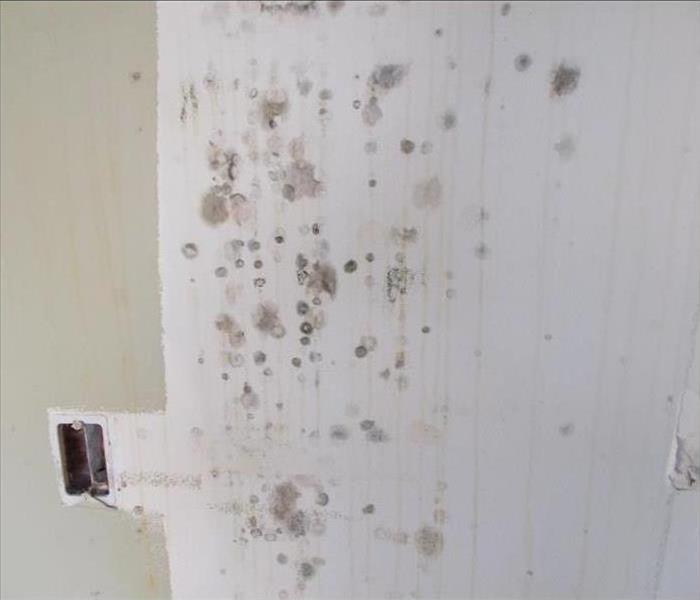 Mold damage in Perry, OK
Mold damage in Perry, OK
Top 4 Mold FAQs
Mold growth is an extremely common issue that the vast majority of homeowners do have to deal with at some point. Ensuring that you take care of the problem quickly and effectively is the best way to prevent a tiny mold problem from spiraling out of control. Read on to have some of your common questions answered, especially if you suspect that your Perry, OK, home is suffering from a mold issue.
1. Where is Mold Commonly Found?
Mold thrives in damp, dark places. This means that rooms, such as your kitchen, bathroom, garage and basement are all especially susceptible to unwanted mold. Any areas in your home that have recently suffered some type of water damage are also at risk.
2. How Can You Tell Whether You Have a Mold Problem?
You can usually spot mold with the naked eye. Black mold, one of the most common residential varieties, looks like a dark black or green stain that spreads across the surface of an object. A musty or dank smell is also a good indication of a mold presence.
3. How Can You Prevent Mold Growth?
Keeping your home as clean and dry as possible is the best way to prevent a mold issue. This involves cleaning spills and leaks as soon as they occur, ensuring your home doesn't suffer from high humidity levels and properly ventilating your home to prevent condensation from building up. Performing regular mold inspections can also help you catch the issues while they're still small.
4. Does Mold Go Away By Itself?
Mold is a living organism, so it's natural to assume that you'd be able to get rid of it simply by depriving it of its vital nutrients. Unfortunately, this isn't the case. Cutting off the mold's access to water and organic matter could potentially halt its spread, but it won't kill the existing mold.
It's important that you address a mold issue swiftly and effectively in order to prevent the situation from becoming worse. If you discover unwanted mold growth in your home, make sure to contact mold remediation experts immediately.
6 OSHA First-Aid Best Practices
11/16/2020 (Permalink)
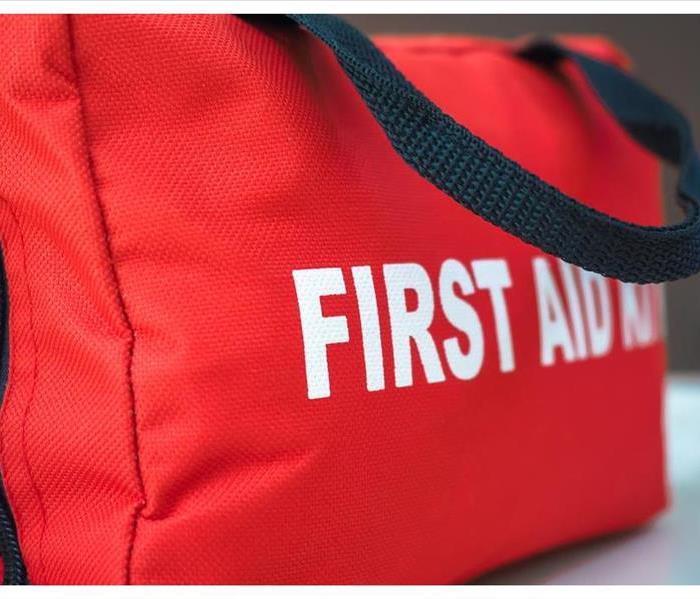 OSHA requires at least one first aid kit at every workplace
OSHA requires at least one first aid kit at every workplace
Maintain A Safe Work Environment
Emergencies don’t announce themselves pre-arrival. Make sure that your worksite(s) in Perry, OK, are adequately equipped well in advance. Accidents can happen in any environment. Therefore, the Occupational Safety and Health Administration requires at least one first aid kit at every workplace (the type and quantity depend on specific hazards and the number of employees). OSHA offers some best practices for employers to maintain a safe work environment.
1. Assess Risks
To sufficiently stock the kit, you should conduct a risk assessment for your worksite(s). Once this is complete, your first aid program should have plenty of supplies should a crisis occur.
2. Choose Relevant Supplies
After the risk assessment, you’ll have a better understanding of the likelihood of certain types of injuries occurring. This will help determine if there are more specific supplies you should keep on hand in addition to the basics.
3. Make Supplies Accessible
OSHA requires that a fully-stocked emergency kit remains easily accessible. Everyone needs to know where to find these supplies. Place each first aid kit and related emergency information in a conspicuous place that any employee can access at a moment’s notice.
4. Provide Training
First aid supplies aren’t very beneficial if people don't have the knowledge or confidence to use them correctly. First aid training should be offered to all employees. It should also include some items specific to your industry if extraordinary job hazards exist. You should periodically update this information and training, as it’s easy to forget some aspects or overlook essential safety updates.
5. Designate a Director
Designate someone to organize contingency plans for disasters such as workplace accidents, storm damage, fire or flood. They’ll be in charge of stocking and maintaining first aid supplies and other emergency equipment. It’s also critical that they stay updated on OSHA regulations. A list of emergency contacts such as emergency restoration professionals should be posted.
6. Review
The first-aid leader should monitor overall workplace safety and potential hazards. Emergency policies, equipment, supplies and training should be modified as necessary.
An emergency can arise at any time. It’s critical to keep a first aid kit available and a plan in place.
Fire Escape Planning: It's Just Good Business
11/4/2020 (Permalink)
 Develop a high-quality fire escape plan to protect people and property
Develop a high-quality fire escape plan to protect people and property
Here Are Some Ideas
With increasing instances of extreme weather, many business owners in Guthrie, OK, lose sleep worrying about a potential fire in their place of business. Like you, they know the consequences are enormous. A fire threatens the lives of your employees and the very life of your business. That's why every business owner should develop a high-quality fire escape plan to protect people and property.
1. Consider possible scenarios and take precautions. Q: Where would a fire likely ignite? A: The office kitchen. Q: How would it start? A: Cooking left unattended. Possible office rule: Don't leave the kitchen while cooking or using the microwave.
2. Ensure fire protection supplies are in working order. Regularly check fire alarms, fire doors and emergency lighting. Locate fire extinguishers for easy access. Remember that fires move quickly. If you can't extinguish a fire in under 30 seconds, stop, leave and call the fire department.
3. Map, post and publicize possible emergency routes. Conduct and time semi-annual fire drills to practice fast, safe exiting. Occasionally challenge employees by pretending certain exits are blocked. Include windows as possible exits and, if applicable, the use of upper floor rescue ladders.
4. Assign a fire warden. Appoint a fire escape plan leader to direct employees out of your building in the event of a real emergency.
5. Distribute a communications pamphlet. As part of your emergency escape plan, include a list of employee fallback communications (text, cell phone, email, mobile app). Specify remote work options if your workplace is inaccessible. Formulate nonstandard ways to contact and work with customers, vendors and contractors during the post-fire recovery period.
6. Plan for post-fire remediation. Establish a working relationship with a firm specializing in disaster restoration services.
A sound, user-friendly fire escape plan is just good business. Careful preparation and regular practice can save lives and prevent property damage.
Top 5 Places to Check During a Plumbing Maintenance Inspection
11/4/2020 (Permalink)
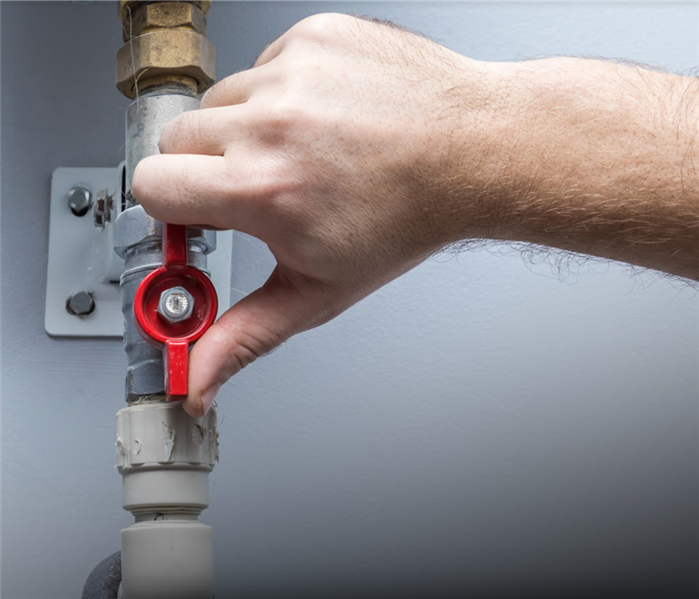 Your building's water pressure should remain between 40 and 80psi
Your building's water pressure should remain between 40 and 80psi
Places To Check During Plumbing Maintenance
The best way to prevent unnecessary plumbing problems in your commercial building is to perform regular maintenance inspections. Identifying and resolving an issue while it's still small is significantly easier, and less expensive, than waiting until the problem snowballs out of your control. Make sure you check these common problem areas next time you perform a maintenance inspection for your building in Stillwater, OK.
1. Your Drains
Test the flow rate for all of the drains in your building. A slower flow rate usually means that the drain is clogged, or that the pipes themselves are damaged. You can use a power rod or hydrojet to help clear any debris from the pipes.
2. Your Walls, Ceilings and Foundation
Keep an eye out for any bulges, warping, stains or other signs of damage in your building's structure. These deformities are caused when water accumulates within the building itself and can indicate severe plumbing problems.
3. Your Water Heater
Wildly fluctuating water temperature can signal an issue with your water heater. Inspect the device for any leaks, corrosion or damage as well. Lastly, make sure to test the safety valves and overflows.
4. Your Water Pressure
Low water pressure is often a sign that there's a leaking or broken pipe somewhere in your building. Naturally, water that escapes through these leaks won't make it to the faucet or valve that it's supposed to exit from. Ideally, your building's water pressure should remain between 40 and 80psi.
5. Your Water Pipes
Any exposed pipes in your building should be inspected regularly for signs of damage or leaks. You also need to make sure you inspect your water main for signs of corrosion or damage. Keep an eye on your monthly water bill for spikes, as these can indicate that a leak is present somewhere in the building.
Remaining vigilant and staying on top of plumbing problems while they're still small can help protect your commercial building from suffering unnecessary damage. Make sure to contact water remediation experts if your building has suffered some type of flood or storm damage.
How To Prevent Mold After a Flood
10/21/2020 (Permalink)
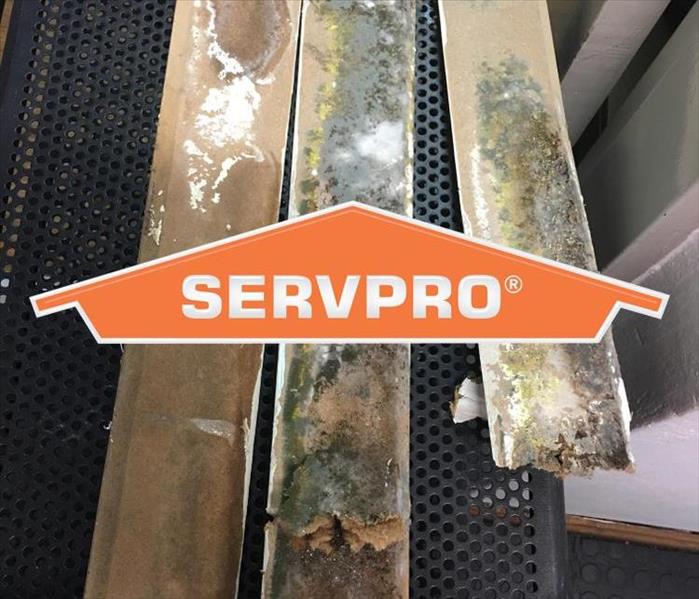 Mold growth happens fastest on porous surfaces such drywall
Mold growth happens fastest on porous surfaces such drywall
Tips To Avoid Mold After A Flood
If you experience flooding in your home in Perry, OK, it's important to take steps to prevent mold growth. It can take only two or three days for mold to spread throughout your home, so making sure you prevent it is vital. Here are some tips to help you avoid mold after a flood.
1. Dry the Area Thoroughly and Quickly
Once you find the flooding, it's important to dry your home as quickly as possible. After you remove the majority of the water, set up fans and dehumidifiers to help fully dry the area out. Keep these running much longer than you think you need to in order to fully remove the moisture.
2. Focus on Porous Items
Mold growth happens fastest on porous surfaces such as carpet and drywall. If any of these materials got wet in the flood, make sure you quickly and thoroughly dry them or just remove them altogether. Check to make sure your carpet pad and the floor beneath it is throughly dried as well. If your drywall is wet, you'll probably need to replace it, especially since the water can get into the insulation and cause mold to grow there.
3. Keep Checking the Area
After you remove all the water, make sure you pay attention to any musty smells coming from the damaged area in the future. This often is a telltale sign that you have mold and that it's time to call a mold removal company. Keep from disturbing the area as much as possible so that you don't spread it throughout the rest of the house, and call the professionals as soon as you can to prevent it from becoming a much larger problem.
After you clean up the water damage in your home, remember to take steps to prevent mold growth as well. Follow these tips and be ready to call a professional, and you'll be able to prevent more harm to your home.
Keeping Your Home Cooling System Mold-Free
10/7/2020 (Permalink)
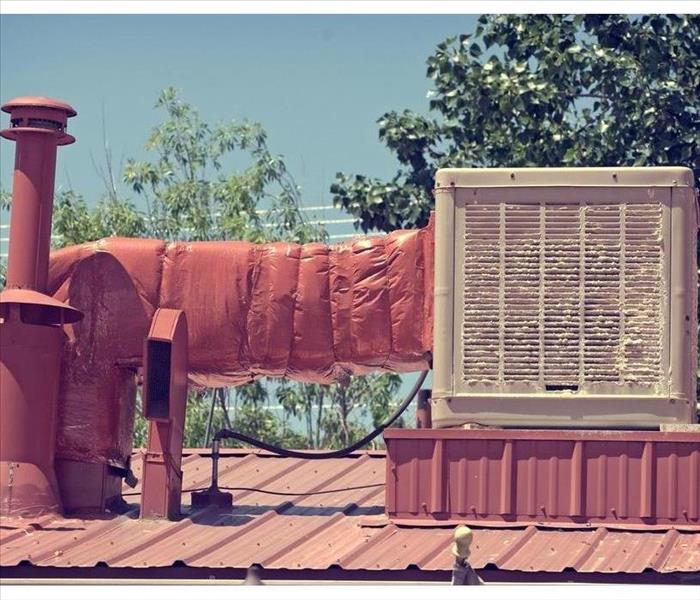 Most homes have a cooling system, usually a swamp cooler (also known as an evaporative cooler)
Most homes have a cooling system, usually a swamp cooler (also known as an evaporative cooler)
Here Are Three Cooling System Basics You Should Know
In today’s climate-controlled homes, it’s easy to forget about your cooling system until it malfunctions. A leaking swamp cooler or dirty air ducts are signs it’s time to check your indoor air quality.
1. Swamp Cooler vs. Air Conditioner
Most homes have a cooling system, usually either a swamp cooler (also known as an evaporative cooler) or a central air conditioner. Air conditioners use liquid refrigerant, fans, and a series of ducts to force cooled air to all rooms of the home. An evaporative cooler uses water, a cellulose pad, and a fan to cool the air. Because of their smaller size and lack of an extensive vent system, the latter is typically used for one room or a small space. The cellulose pad is constantly being soaked with water, which can lead to mold growth.
2. Humid vs. Dry Air
The home cooling system you should use depends on your location and climate. Homes in areas with low humidity are often equipped with swamp coolers because the air is dry enough to inhibit mold damage. In places with high humidity, such as the Southeastern states, it’s better to use a central air conditioning system because it doesn’t rely on water to cool the air. An evaporative cooler can add too much extra humidity to the air in an already humid climate; a leaking swamp cooler can harbor mold.
3. Clean vs. Dirty Equipment
The best way to keep your indoor air healthy, no matter where you live, is to maintain your air conditioner or evaporative cooler. Inspect visible components for mineral buildup and remove it if present. Check any associated ducts and drywall for signs of mold; if you find it, you’ll need the help of a mold remediation specialist in Ceres, OK. Regularly replacing the cellulose pads in swamp coolers also keeps potential mold under control.
Preventing a leaking swamp cooler or maintaining your air conditioner are key steps to healthy indoor air. When regularly serviced, your cooling system can keep your home comfortable for years to come.
Steps To Take When a Broken Pipe Floods Your Home
10/7/2020 (Permalink)
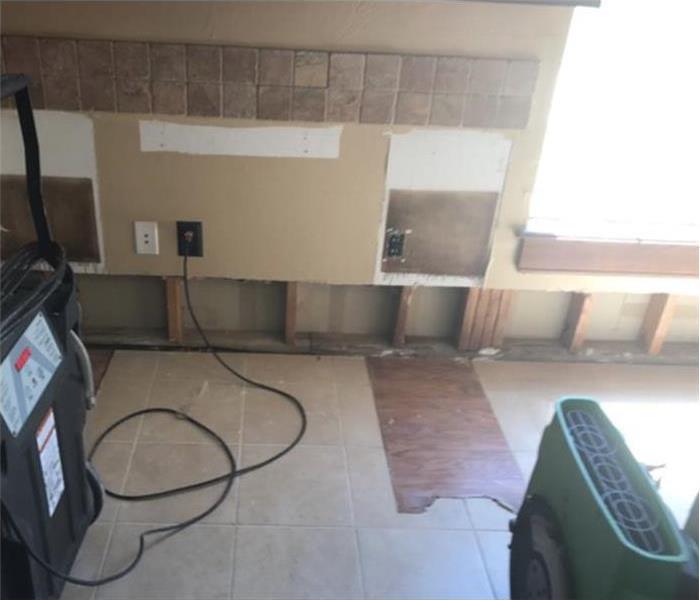 Residential water damage in Navina, OK
Residential water damage in Navina, OK
Take The Following Steps To Restore Your Home After Water Damage
A broken pipe can cause your home to flood in a matter of minutes. Flooding can cause severe damage to your home's interior and belongings, including
- Carpets and Drapes
- Electronics and Appliances
- Floors and Ceilings
- Furniture and Upholstery
- Clothing and Papers
Taking the following steps can mitigate the damage and restore your home's livable condition.
Shut off the Electricity
When excessive water in home causes flooding, it is wise to shut off the electrical supply for optimum safety. Fast-moving water can quickly seep into power outlets and immerse wiring, leading to hazardous conditions and possible electrical fires.
Remove and Dry
It is essential to begin drying your home's interior and belongings before mold can develop. Start by placing objects like carpets and pillows outside to dry. Portable dehumidifiers are helpful, but a professional restoration service may need to perform intensive water vacuuming that tackles extreme water in home to prevent mold or keep it from spreading.
Clean and Sanitize
Water from a broken pipe can spread contaminants throughout your home. Cleaning and sanitizing are necessary to remove hazardous substances and address mold. Visible damage, including stains on the walls and ceiling, indicates that water has reached your home's interior structure and caused mold to develop. By this point, mold remediation measures are necessary to clean the air, interior spaces, and your belongings.
Repair and Prevent
Once you have addressed the immediate concern of removing water and cleaning and sanitizing your home, it is necessary to focus on the issue that led to the flood. A thorough examination of your home's plumbing system may reveal other vulnerabilities and needed repairs that can prevent future disasters from wreaking havoc on your home.
When a broken pipe causes your home to flood, you can rely on a professional cleaning and mold remediation service in Navina, OK, to mitigate the damage and restore your home to pristine condition.
5 Common Water Issues for Commercial Buildings
10/6/2020 (Permalink)
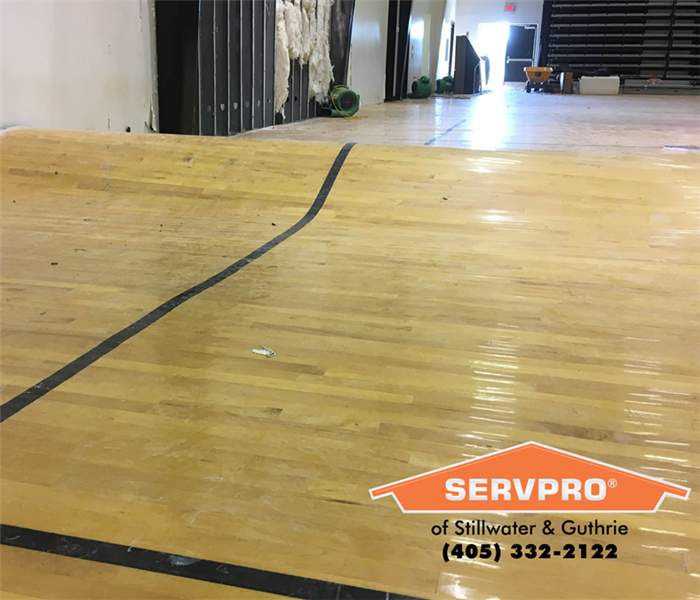 Leaking pipes, dripping faucets, and clogged drains are all common plumbing issues for commercial building owners.
Leaking pipes, dripping faucets, and clogged drains are all common plumbing issues for commercial building owners.
Staying on top of smaller issues in your commercial building is one of the best ways to prevent them from snowballing into larger problems. Remaining vigilant is especially important when it comes to plumbing issues, such as leaking pipes or backed-up toilets. Make sure you regularly check your building in Stillwater, OK, for the following common water-related problems.
1. Low Water Pressure
Low water pressure can indicate several different issues, such as leaking pipes. Any water that escapes through the leak naturally won't come out of the faucet where it's supposed to, leading to suboptimal water pressure.
2. Damaged Building Foundation
Structural damage in your building, such as cracked, bulging, or otherwise warped foundation, can signal the presence of a serious leak. These deformities are often a result of floodwater accumulating within your building's structure and can indicate a hidden pipe break.
3. Clogged Drains
Customers are much less likely to treat your commercial bathrooms with the same respect that they'd treat a residential one. This can lead to many undesirable items getting flushed down your pipes, resulting in clogs. At the very least, this leads to an unsightly bathroom. In severe cases, it can result in toilet backup or sewage overflow.
4. Pinhole Leaks
Pinhole leaks are especially common in older buildings, where the copper or cast-iron pipes aren't built to last as long. These tiny holes can cost thousands in wasted water. Keep an eye out for these silent leaks by watching for a spike in your monthly water bill or a drop in your building's water pressure.
5. Leaking Toilets and Faucets
Much like pinhole leaks, dripping faucets and toilets can slowly, yet steadily, drive up your monthly water bill. Make sure you take the time to inspect your commercial bathrooms to make sure none of the appliances are dripping or leaking. Repair any problems you come across.
Leaking pipes, dripping faucets, and clogged drains are all common plumbing issues for commercial building owners. Staying on top of the issue can help reduce the amount of damage your building suffers and keep your business running smoothly. Contact water restoration experts for professional help.
4 Types of Water Damage Caused by Fires
9/29/2020 (Permalink)
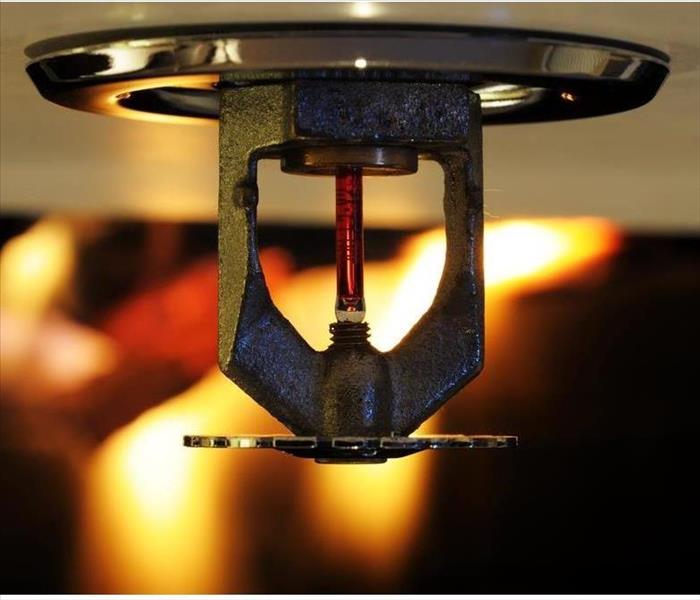 A professional fire cleanup service can help you dry out your building quickly and efficiently.
A professional fire cleanup service can help you dry out your building quickly and efficiently.
The powerful hoses and sprinkler systems used to extinguish fires can cause extensive damage that requires water cleanup. If you have had a fire in your building, these are four of the types of water damage you can expect to see.
1. Mold Growth
Water can easily penetrate the porous surfaces in your building. Moisture provides a fertile ground for mold growth. To reduce your chances of extensive mold, you may want to contact a fire restoration company in Stillwater, OK, as soon as possible to perform fire cleanup and dry out your building.
2. Warped and Rotten Wood Surfaces
If you have floors, furniture, or other items made of wood, these can easily be damaged by excess moisture. Prompt water cleanup can help you avoid wooden surfaces becoming warped or rotten. You should inspect all of your wooden surfaces and items and discard any with damage that is more than cosmetic.
3. Damaged Ceilings
Ceilings that may have already been weakened by fire damage can easily collapse when saturated with water. If you have paneled ceilings, you may be able to remove and replace just the damaged panels. However, for some types of ceilings, you may need to replace the entire ceiling. Smoke can also damage ceilings, so it can be a good idea to perform smoke cleanup on any ceiling materials that are not replaced.
4. Drywall Damage
If you have drywall in your building, some of it will probably be damaged by the water used to put out the fire. You may be able to save part of it by drying it out, but you will probably need to have some damaged areas removed and replaced.
Prompt water cleanup after a fire is an important step to avoid damage caused by excess moisture, such as mold. A professional fire cleanup service can help you dry out your building quickly and efficiently.
4 Tips to Fix a Beeping Smoke Alarm
9/25/2020 (Permalink)
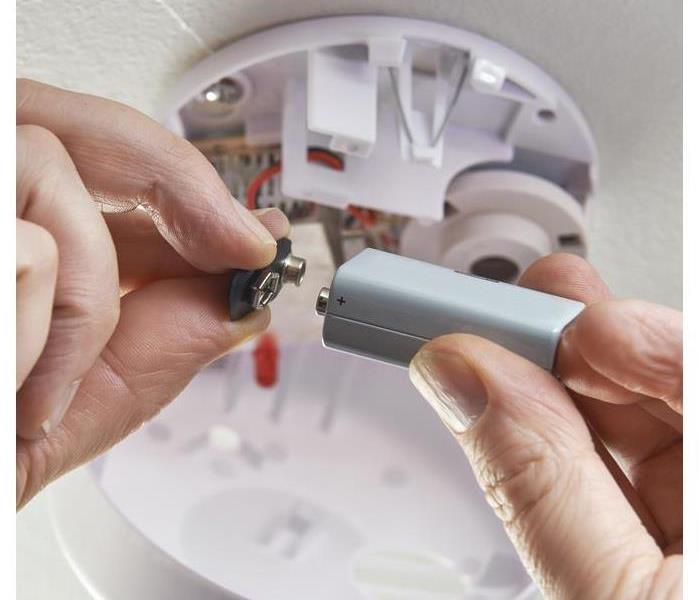 Experts recommend changing the batteries every six months
Experts recommend changing the batteries every six months
Tips On Fixing Beeping Smoke Alarms
Knowing that a fire alarm is the first line of defense, the last thing you need is constant chirping when there is no fire. Becoming complacent to the sound could quickly lead to a fire growing, resulting in extensive fire damage to your Sumner, OK, home. Anytime it goes off without smoke or flames around, the following can help you solve the problem and get back to trusting your fire prevention system.
1. Change the Batteries
A frequent beep often means the batteries are running low. Experts recommend changing the batteries every six months. Be sure to note the placement of the battery before removing the old one. If installed improperly, it may continue to make noise or not work at all.
2. Reset Alarm
If you know the alarm has a newer battery but continues to make noise, resetting it can help you troubleshoot the problem. For battery-powered alarms, remove the battery and press the test button for approximately 20 seconds. For hardwired, removing the fire alarm from the ceiling disconnects the power. After the reset, reattach or remount and perform a regular test with the power on.
3. Keep It Dust-Free
Like about anything else, smoke alarms can get dusty. That is especially so if you have completed some recent home projects that stirred up dust and debris. If the battery is good and the reset work, try blowing out the vents.
4. Invest in a New One
Although a certified fire alarm is a trusted tool, they only last so long. They should be replaced every 10 years. Whatever your budget, there is an array of newer systems on the market from the simple cost-efficient standard type to pricier smart alarms that can keep you connected away from home.
Gambling with a chirpy fire alarm is a sure way to need the help of a fire and smoke damage restoration specialist. Although easy to forget, make sure maintaining alarms stays on the always to-do list.
How To Salvage Smoke Damaged Computers
9/24/2020 (Permalink)
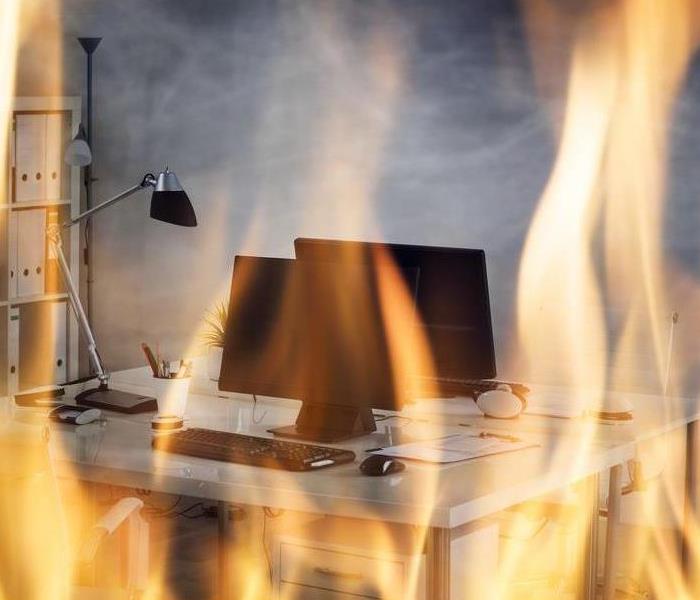 Before discarding them, take the appropriate measures to see if they can be rescued.
Before discarding them, take the appropriate measures to see if they can be rescued.
An electrical fire within your business affects more than just the immediate burn area. The soot generated by flames floats everywhere, contaminating digital devices such as printers, copiers, and, most devastatingly, computers. Thankfully, you may be able to salvage equipment by treating it correctly.
How Does Smoke Damage Computers?
Ash harms workstations in three ways:
1. By causing circuits to short out, a failure triggered by smoke’s magnetic charge.
2. By causing overheating, a result of black film buildup.
3. By eating through inner components, a byproduct of smoke’s inherent acidity.
Hire a professional to periodically report upon your building’s power system, as doing so can help avoid an electrical fire. Otherwise, you may find yourself needing a commercial fire restoration service to return normalcy to your office in Stillwater, OK.
How Should Smoke Damaged Computers Be Cleaned?
Attempt to salvage data by removing memory cards and hard drives, then inserting them into unaffected machines. With any luck, your information will still be accessible. Remember that using the cloud and performing regular backups are great ways to circumvent this tense situation from transpiring.
To begin the computer cleanup process, have staffers save and power down those that are currently running. This step is critical, as premature usage causes permanent destruction. Remove all plugs to be certain nothing can turn back on. Take a soft, dry towel, and wipe away the exterior soot.
Next, use a can of compressed air to blow out ports and vents. If corrosion or other imperfections are visible, deliver the item to an expert that can analyze its condition.
Remember that PCs are often covered under warranty, so check your records. Replacing those that have been compromised is always preferable to rehabilitation. It may be time for an upgrade anyway.
Smoke from an electrical fire poses a serious threat to computers, but those that are directly affected can often be saved. Before discarding them, take the appropriate measures to see if they can be rescued.
The Best Ways To Banish Mold Odor
9/17/2020 (Permalink)
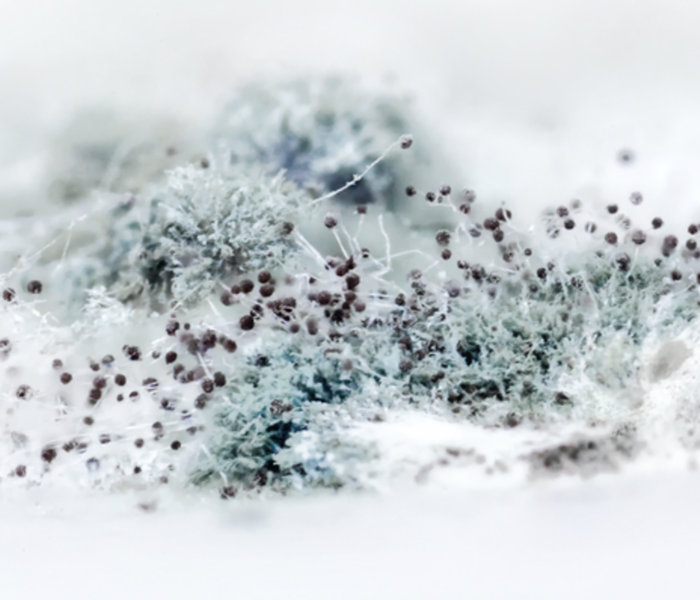 Mold odors will linger and intensify as long as mold is growing in a structure.
Mold odors will linger and intensify as long as mold is growing in a structure.
Mold odor can be persistent, but this telltale smell usually indicates the presence of growing mold. Microbial volatile organic compounds released during the fungal growth cycle cause mold odor, not spores or mycotoxin. Here are the best ways to eliminate the source of a musty odor at a residence in Stillwater, OK.
Eliminate Mold Growth
The odor of mold originates with mVOCS. Here are a few types of off-gases released as byproducts of the metabolic cycle of fungi:
Alcohols
Aldehydes
Benzenes
Tulolenes
When you smell a moldy odor, you are picking up on the presence of these substances and similar compounds. Mold remediation involves removing colonies and cutting off food and moisture sources that enable fungi to multiply.
Run a HEPA Air Filter
A high-efficiency particulate air filter can eliminate mold spores and mVOCs from indoor air. Some filters connect to a central HVAC system, while others can be run in affected areas.
HEPA filters may not eliminate every trace of mycotoxin. It is important to use EPA-approved cleanup methods for toxic mold. Toxigenic species may leave behind more dangerous traces than an undesirable odor.
Do a Deodorizing Treatment
Deodorizing treatments such as thermal fogging and generating ozone or hydroxyl may be helpful after mold cleanup. These treatments work by neutralizing odor particles lingering in the air and on surfaces.
A deodorizing treatment will eliminate musty odors without addressing the source. It is important to thoroughly clean up mold in affected areas and the HVAC system for odor treatments to have lasting results.
Mold odors will linger and intensify as long as mold is growing in a structure. Getting rid of odors requires removing colonies and eliminating the factors that lead to growth. Depending on the type of mold, the severity of an infestation and whether mycotoxin is present, homeowners should rely on mold remediation professionals based in their city and state.
Making Sure Your Company is Disaster Prepared
9/14/2020 (Permalink)
 Offer courses in first aid and CPR
Offer courses in first aid and CPR
Disasters come in many forms and not being prepared for them can make business recovery slower. Disaster preparedness in Stillwater, OK, should be a staple in the operations of your business. Disaster and business preparedness means your business can bounce back more quickly to help keep the economy strong.
Disasters That Can Happen at Your Business
There are many important areas for disaster preparedness. The type of proactive measures your business takes will largely depend on the industry. Some disaster precautions that are useful to all businesses include
- Fire safety
- Medical emergencies
- Tornado Warnings
- Evacuation plans
Some businesses operate with toxic materials or may need increased cyber security. Have a plan for what action to take in the case contaminants are released into the air or someone hacks into your system.
Caring for Employees
During a disaster, medical emergencies can happen. Make sure your employees know where to find the first-aid kit, and offer courses in first aid and CPR. While an employee is not required to disclose any medical condition they may have to their employer, encouraging them to do so may help other employees understand an issue they are facing in an emergency.
When Disaster Strikes
In the event that a disaster occurs your employees will know the safest part of the facility because you prepared a disaster plan. If a tornado is about to strike, you will have identified a central location without windows where employees can take cover. If there is toxic danger and an area needs to be sealed off, employees will know where to gather so everyone can be accounted for.
After a disaster does occur, never attempt to clean the disaster yourself. The environment could be hazardous, such as electric lines down, or mold present after flooding. Hire a team that is trained to handle this type of clean up.
Having a disaster preparedness plan in place for each of these situations can help employees make critical decisions more quickly, and can also help keep them safe. Start yours today.
How Does Heavy Rain Cause Sewage Backup?
9/14/2020 (Permalink)
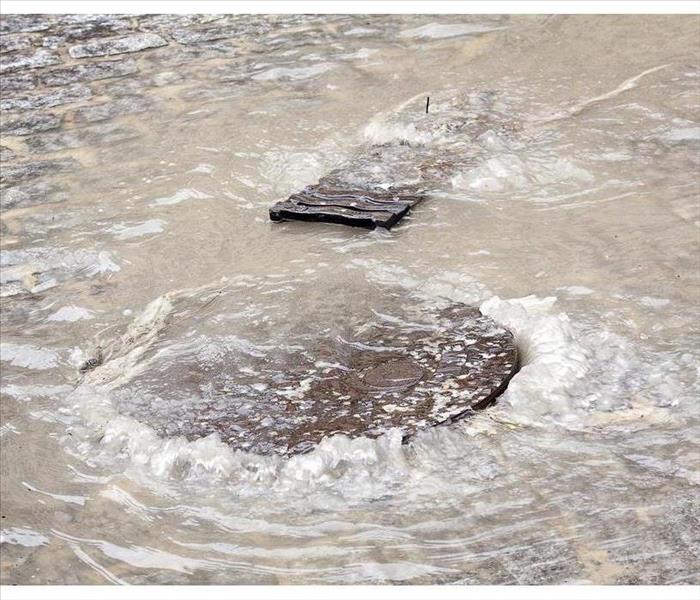 Sewer clogged after heavy rain in Stillwater, OK
Sewer clogged after heavy rain in Stillwater, OK
How Do Backups Happen After Storms?
You were already worried about flooding from a heavy storm, but suddenly from the lower levels or basement of your building, you catch the tell-tale stench of black water. You have a sewer backup, but how do backups happen after storms? How can you prevent your Stillwater, OK sewer lines from flooding your building?
1. Too Much Rain Water
The reason that a sewer backup happens is that the city sewage lines are often overflowing with rainwater after a storm. Because the sewage lines cannot contain any more water, they begin to back up into everything from sinks to bathtubs, and they can overflow with disturbingly odious black water. Sometimes, the problem is mild, and sometimes, it can be severe enough to require evacuation of a building.
2. When Older Buildings Suffer
Older buildings are particularly vulnerable to more severe flood damage and backup from the sewer. Soil erosion and soil softening can make the foundations of older buildings more vulnerable, and the pipes often have less integrity. A backup can lead to a pipe bursting or can seep through weakened foundations to completely flood the basement level of a building.
3. Play It Safe
If you have contaminated water coming up through your drains, don’t try to brush it off. Blackwater is enormously unsanitary, containing fecal matter and bacteria. Do not try to use the faucets. Exit the building and immediately contact the city to let them know the city’s main sewer lines are compromised and backing up into your building.
4. Keep It Clean
One of your first priorities after dealing with sewer backup should be cleanup once the sewer mains have stopped overflowing. If you need to hire professionals to ensure sanitation, they may be able to provide you with more intensive options for deep cleaning and removing any contaminated water. Black or gray water can lead to mold growth, so be careful when entering the building after a sewage backup flood.
Top 4 Mold FAQs
9/3/2020 (Permalink)
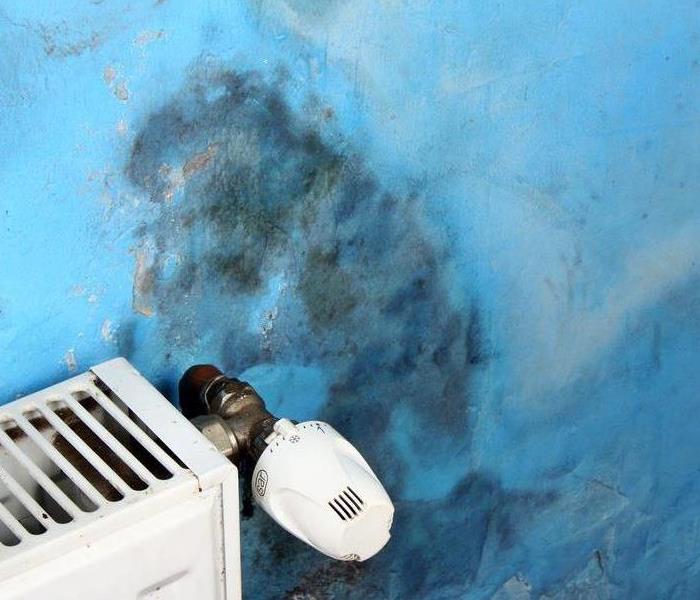 It's a good idea to hire remediation experts to help take care of any mold growth you may be experiencing.
It's a good idea to hire remediation experts to help take care of any mold growth you may be experiencing.
Black mold is a relatively common issue for many homeowners. Despite this, many new homeowners aren't quite sure how to tackle the problem, as it can be embarrassing to talk about. Arm yourself with knowledge and study the following frequently asked questions to help fight off mold growth in your home in Stillwater, OK.
1. What Does Mold Look Like?
The most common type of residential mold is black mold. Like the name suggests, this fungus is typically black or green in color and may have a fuzzy or slimy texture. It looks just like a dark stain on the surface of an object.
2. Where Does Mold Commonly Appear?
Mold thrives in dark, moist environments. Any area in your house that comes into frequent contact with water, such as your bathroom, kitchen, or laundry room, is at risk for mold growth. If your home has recently suffered any type of water damage, you're likely to find mold growing in that same area as well.
3. How Do You Prevent Mold?
Keeping your house as clean and dry as possible is the best way to prevent mold. High humidity environments are very inviting for mold spores, so make sure to carefully monitor indoor humidity levels. Clean and dry any liquid spills immediately to keep from attracting mold.
4. Does Mold Go Away By Itself?
Mold is a living organism, so it's natural to assume that depriving it of its basic survival needs could kill it. Unfortunately, this isn't the case. Depriving the mold of the moisture and nutrients it needs to grow might temporarily prevent it from spreading, but it won't make it go away.
Black mold is an extremely common issue for many residential homeowners and certainly isn't anything to be ashamed about. Unfortunately, it is also quite tenacious so it's a good idea to hire remediation experts to help take care of any mold growth you may be experiencing.
Simple Ways To Prevent Mold Growth in Your Building
8/21/2020 (Permalink)
 Research your climate
Research your climate
Mold Prevention Strategies
Water damage to your Perry, OK, property can lead to mold growth. That is why any wet areas should be dried immediately. Quick mitigation will reduce the chances of mold harming the floors or walls.
Yet this is not the only way to limit the spread of mold. Below are some additional mold prevention strategies you can enact in your buildings.
1. Consider Mold-Resistant Products
The next time you renovate your property, try using sheet rock or drywall that resists mold damage. Since paperless drywall is water resistant, it is particularly useful in kitchens, bathrooms and other wet areas.
2. Maintain Low Humidity
Even if your property has no major water damage, humid air alone can encourage the development of mold. You should thus keep indoor humidity between 30 and 60 percent at all times. You can buy a moisture meter to measure the humidity level in the building. You should also watch out for condensation on walls or windows, as this could be a sign that the humidity is too high.
3. Research Your Climate
Southern states and northern states have humidity problems at different times of the year. You should keep these variances in mind when enacting your mold prevention strategy. Make sure that your plan is specifically tailed to the weather in Perry, OK.
4. Check the Gutters
Roof leaks are a common cause of mold damage. That’s because clogged gutters often force excess water back into the building. You should thus have the gutters cleaned and inspected regularly.
By addressing water damage immediately and following the above steps, you can limit the growth of mold in your property. Still, even if you have a solid prevention plan, mold could still end up in your carpet, walls, or floors. Mold remediation professionals should clean up a contaminated building quickly so you and your employees can get back to work.
Commercial Water - Choosing a Water Damage Restoration Specialist
8/21/2020 (Permalink)
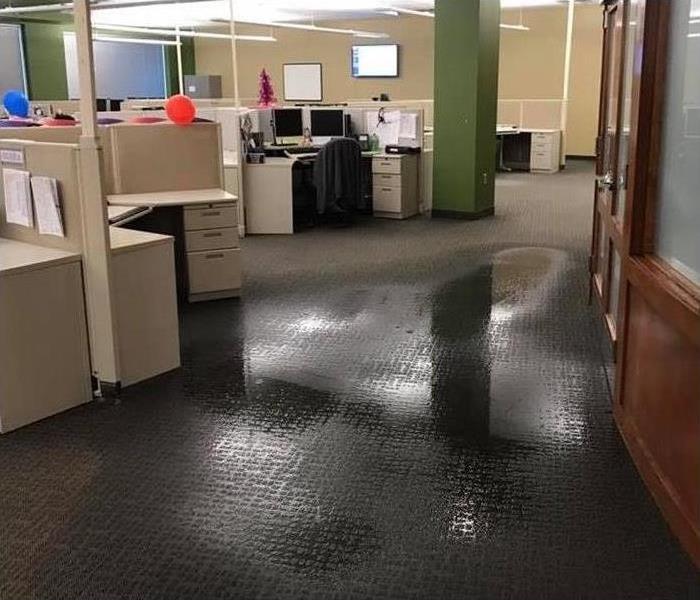 Commercial water damage in Guthrie, OK
Commercial water damage in Guthrie, OK
If your Guthrie, OK, business suffers water damage, there are a variety of other problems that may follow, including mold growth. Understanding the water clean up process can help ensure your commercial building is properly cared for every step of the way.
Choosing a Specialist
Because water damage can quickly lead to mold growth, it is important to begin drying the property as soon as possible. If you choose to hire a professional to help with this task, the following are some important qualities to look for:
- Certification
- Professionalism
- Quick response time
Many professionals adhere to the standards set forth by the Institute of Inspection, Cleaning and Restoration Certification. The IICRC has been developing high-quality best practices for the restoration industry for over 45 years. If a professional is IICRC-certified, he or she has the knowledge to complete the water clean up job properly and safely. For water damage to commercial buildings, a professional who has completed the IICRC’s Commercial Drying Specialist courses will have knowledge of the intricacies involved in commercial water damage restoration that other professionals may lack. However, all the knowledge in the world won’t save your property if the restoration team does not respond quickly enough to prevent further damage. A key sign of integrity and professionalism is a company responding in the time frame they give you and keeping you apprised of any changes.
Cleanup Process
Whether the damage results from a broken pipe, a leaky roof or any other source, the restoration process follows the same basic outline. Standing water is removed using pumps or vacuums. Remaining moisture is dried using fans and dehumidifiers. Affected items are sanitized, and damaged items are repaired. Items that cannot be cleaned, dried and properly repaired are replaced.
Depending on the severity of the damage, business owners may be able to perform the water clean up process themselves. However, an IICRC-certified restoration service can provide valuable assistance, especially in more severe cases.
Limit Business Interruptions by Being Prepared for Anything
8/13/2020 (Permalink)
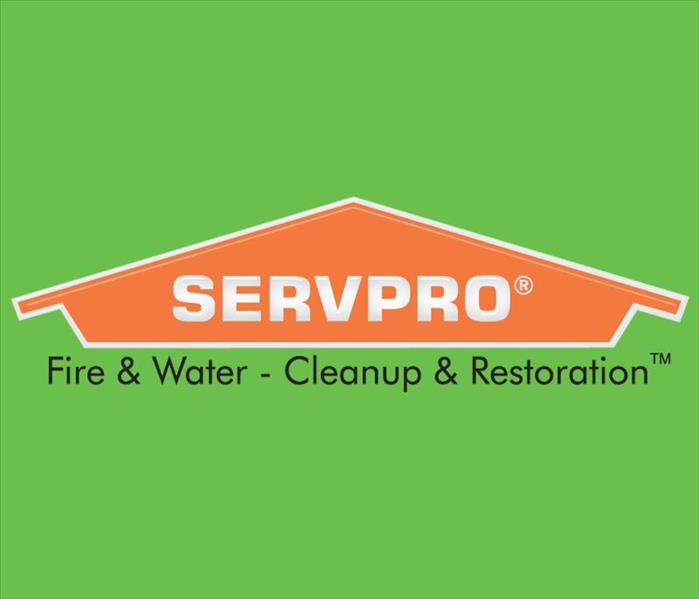 A water loss can significantly impact a business, but owners don’t have to go it alone.
A water loss can significantly impact a business, but owners don’t have to go it alone.
If flooding happens at your Stillwater, OK, business, the costs go beyond repairing the damage. Depending on how much water has infiltrated the property, you could be faced with large water damage, which may mean having to temporarily close down and relocate. That lost revenue has the potential to have devastating consequences. Having business interruption insurance can help ease some of the burdens, but being prepared for any type of disaster is the first step to minimizing losses.
Steps to Reduce Interruptions
While something like a broken pipe may be a sudden and unexpected occurrence, there are ways to reduce the risk of that kind and other incidents from affecting your bottom line. The first step is identifying potential risks to develop a mitigation plan. Once those are established, there are three methods to containing them.
Prevention – Identify ways to prevent damage from happening. If located in an area prone to flooding, consult experts on waterproofing a business. If a plumbing system is aged, consider replacing it.
Deterrence – Although not necessarily related to water issues, taking steps to deter potential criminal activities may keep insurance costs down, as well as provide peace of mind.
Mitigation – The truth is that some things are unavoidable. If Mother Nature brings on torrential rains and flooding, there is no way to control it. Knowing that it can happen and planning before that situation arises will better solidify the property and ensure a safe evacuation if necessary.
Develop a Solid Plan
Understanding risks and the potential cost, such as lost income or increased expenses, can give you a leg up if an emergency situation arises. Developing a communication and emergency plan helps ensure a smoother process in dealing with flooding or other potentially devastating events. Part of that is also completely understanding your coverage and what will happen if a claim is made.
A water loss can significantly impact a business, but owners don’t have to go it alone. Being prepared beforehand via having insurance, identifying risks and potential solutions, and finding trusted water mitigation and restoration expert can reduce the loss.
Mitigating the Damage From a Storm
8/11/2020 (Permalink)
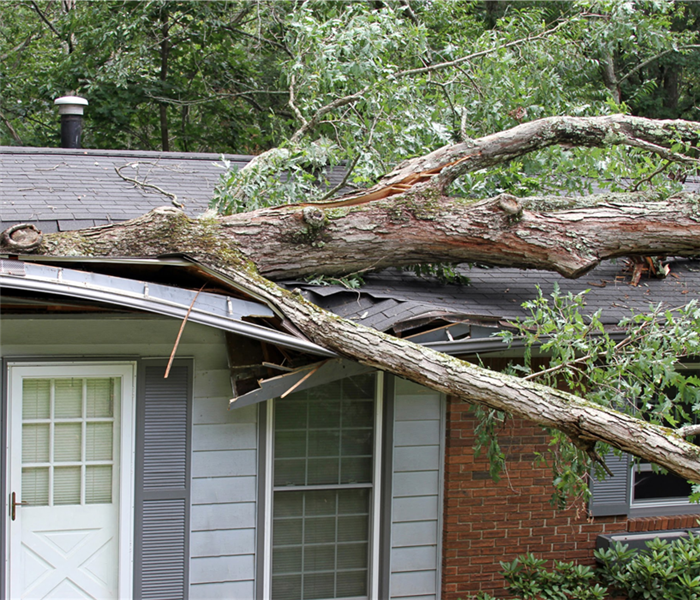 Fallen tree damage in Navina, OK
Fallen tree damage in Navina, OK
Ways To Mitigate Wind Damage
Many homeowner's insurance policies will require that you mitigate any damage to your Navina, OK, home after a storm. This means that it is your responsibility to take measures to prevent any further damage to your home after a severe storm. Here are several ways you can mitigate any wind damage until storm restoration professionals can get to your home.
1. Broken Skylight or Windows
If you have holes in your skylights or windows from flying objects during the storm, you should cover them with a sheet of plastic. This will prevent any water from entering your home and causing more damage to its interior.
2. Leaks in the Roof
When your roof starts leaking due to a storm, you need to cover any areas with damaged, loose, or missing boards with a tarp immediately. If it is still raining outside or you cannot get onto your roof for another reason, you should put buckets underneath the leaks to prevent any further water damage to your home. Remember to have a contractor out to fix your roof damage as soon as possible, otherwise, water can enter and cause issues with your home's structure. Your insurance company will almost always reimburse you for this expense.
3. Damaged Siding
Damaged siding is another reason to break out your tarp. If you notice any damaged, loose, or missing pieces of siding, cover them with a tarp immediately to prevent further damage to the interior of your home. Like roof damage, issues with your siding can lead to problems with the structure of your home.
4. Fallen Tree Damage
If a tree has fallen on your home, the first step is to have it removed immediately. Then, tarp the damaged area to prevent water from entering your house and causing further issues.
To keep your home safe from further damage after a storm, you will need to cover most issues with plastic or a tarp until qualified personnel can get to the scene. Whether it is severe roof damage or a broken skylight, covering the issue will prevent water from entering your home and causing structural problems.
Avoid Mold After a Flood
7/28/2020 (Permalink)
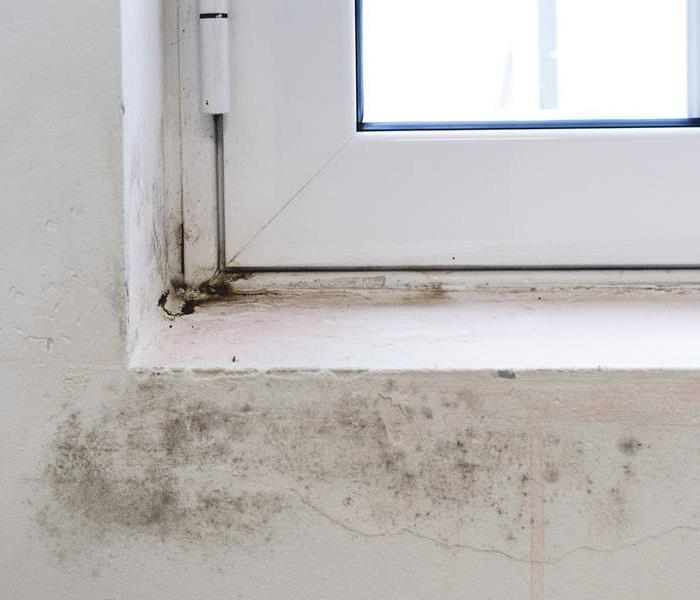 Although mold growth may not immediately come to mind after unwanted water enters the home, it needs to move up the priority list.
Although mold growth may not immediately come to mind after unwanted water enters the home, it needs to move up the priority list.
If dealing with flooding in your Stillwater, OK, home, the number of things to worry about seems to be endless. Alongside the water damage, insurance claims, and destruction of personal belongings, there is another concern that needs immediate action: mold growth. Floodwaters in a home with organic material and warm temperatures produce the perfect environment for this fungus to flourish, and it does so quickly.
A Fast Grower
Mold is actually everywhere, it is just usually lying dormant waiting for the right conditions to flourish. Once that comes together, the timeline for an infestation is rapid.
Most types of mold can germinate within 24 hours. Although still microscopic, the tiny spores can begin to spread to other areas.
If the spores have not been detected within 12 days, they have likely already started to colonize without being visible.
After 18 days, clear signs of mold can be seen.
Prevention Tips
Once mold growth starts to happen, the spores can easily be spread via clothes, air ducts and other means. If that happens, the mold removal process can be quite complex and will require a mold damage remediation and restoration expert to restore a home to normal. Anytime water enters the home, preventing mold growth should be a priority. Prevention tips include:
If outdoor humidity levels are low, open windows to generate airflow.
Remove saturated items to dry out.
Dispose of porous materials that can’t be cleaned.
Use a wet/dry vacuum to clean up standing water on hard floors and carpeting.
Run fans and dehumidifiers to circulate air and contain evaporation.
Clean and sanitize all surfaces that have come in contact with water.
Although mold growth may not immediately come to mind after unwanted water enters the home, it needs to move up the priority list. Taking measures to reduce a welcoming fungus environment can minimize further damage and help your home get back to normal faster.
3 Disadvantages of Using Mold Testing Kits at Home
7/25/2020 (Permalink)
 Mold testing is the best way to determine its presence in the location
Mold testing is the best way to determine its presence in the location
Mold Testing In Your Home
Not all mold inside your Ceres, OK, home is visible. Mold testing is the best way to determine its presence in the location. As you search for testing options, you might hear about take-home kits that allow you to detect the organism easily. Despite the simplicity of the process, it actually a few disadvantages that can greatly affect your house in the long run.
1. Vulnerability to the Environment
A mold kit is a device that is easily influenced by its environment. Since the product gets mailed to a lab for analysis, harsh shipping and handling conditions like cold, heat and others can affect the results. Additionally, the kit has no expiration date, so you cannot be certain of its quality. The kit may have been contaminated by something else or the chemicals may not be as effective.
2. Inaccurate Results
Another reason you should not attempt DIY mold detection is how inaccurate the results can be. Most kit mold testing focuses on the presence of mold spores themselves. However, these spores are always present and only develop when the right conditions are met. Without this context, the results of a test will always be positive, even though that may not be the case. Some unreliable kits can also do the opposite and detect a low amount of mold spores when it is actually higher, putting your home at risk.
3. Lack of Additional Information
A test kit lacks the information you will need to eliminate the problem. It only informs you if mold spores are present or not, and even that information can be dubious. An environmental hygienist will use a control sample to conduct a more accurate, on-the-spot test. This specialist will also discuss the mold type, the source, and the best tactic to combat it with the assistance of a mold remediation technician.
Even though mold testing with a take-home kit sounds appealing due to its accessibility, it has too many drawbacks to be worth it. Consult with a professional instead to receive more detailed results that are useful in mold elimination.
What To Do After a Flood in Your Building
7/9/2020 (Permalink)
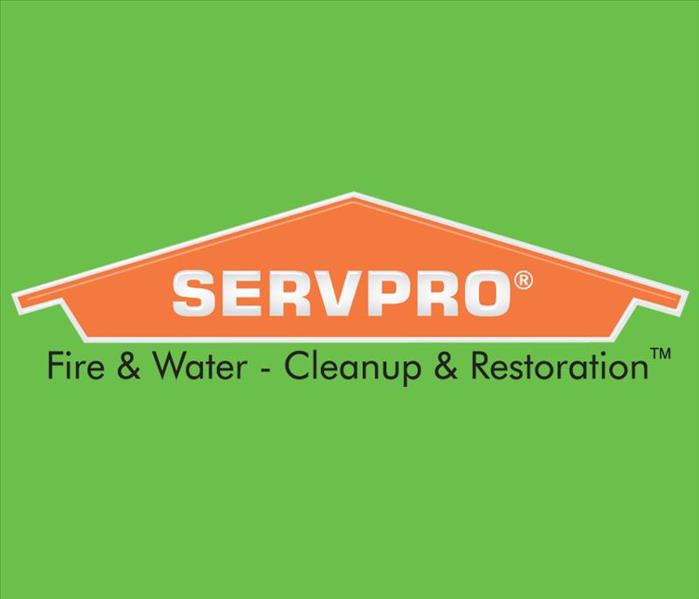 Water damage can be costly, but if you follow these steps, you can prevent many serious issues.
Water damage can be costly, but if you follow these steps, you can prevent many serious issues.
It doesn't take much water to cause problems in your office. Some water damage can start and persist without you even knowing it. You may not be able to salvage everything in your building or prevent all water-related issues. However, with prompt, decisive action, you can minimize the problems and effectively clean up the mess and recover.
Safety First
Your first responsibility after a flood is the welfare of everyone in your office. Before you begin the water cleanup process, take these following steps:
Get everyone in your building away from any standing water.
Find the source of the flooding and stop it, if possible.
Turn off the power to your building.
Save What You Can
Move any items away from the water and get them to higher ground. This should include belongings such as furniture, documents, and clothing. You can pull up wet carpet and leave it out to dry. Even items with water damage can be salvaged.
Call the Professionals
Minimal damage from a slow leak may not be a big concern, but widespread flooding from broken pipes requires the expertise of a professional flood remediation team. technicians have the skills and tools to not only remove the water from your facility but to clean and dry wet items and rebuild damaged materials. The professionals also have the equipment and tactics to safely and quickly restore your office.
Contact Your Insurance Company
Though property insurance policies in Stillwater, OK, don't cover flooding from backed-up sewers or overflowing waterways, you can get help if the flooding is due to other factors. As soon as possible after the incident, call your insurance agent and discuss your flood. Provide as many details as possible, including what was damaged and how the flood began.
Water damage can be costly, but if you follow these steps, you can prevent many serious issues. With the right help, you can effectively clean up your business property.
What Goes in the Commercial First Aid Kit?
7/8/2020 (Permalink)
What Should You Have In The First Aid Kit For Your Commercial Building?
The following list of supplies is the minimum required by Occupational Safety and Health Standards.
- Gauze pads that measure at least 4 x 4 inches and two large gauze pads that are at least 8 x 10 inches. One packed gauze roller bandage that is at least two inches wide.
- A box of adhesive bandages is required for small scrapes and punctures.
- Two triangular bandages, sometimes known as cravat bandages, are used with safety pins to function as a sling or as head wraps.
- Your first aid kit should include a splint that's appropriate for securing broken bones. Include padding to keep the injury stable.
- Adhesive tape, scissors, and two elastic wraps provide an additional layer of security for treating wounds.
- Put at least one blanket in your emergency kit.
- Agents for cleaning wounds, such as packaged moistened towelettes, are crucial for keeping wounds and injuries from developing infections.
- Latex gloves, pocket masks, and tweezers are used to prevent contamination when injuries are treated.
- Include resuscitation equipment such as resuscitation bags and airway masks.
- Provide directions for obtaining emergency assistance. You may want to laminate this page, so it isn't affected by moisture.
If you have a large property or multiple business sites, provide enough kits to cover the area. OSHA recommends that each emergency kit is outfitted for about two to three employees.
Beyond the Basics
Each area of the country is affected by different risks. Flooding may be a major concern for one community while violent crime is a top priority for other areas. Work closely with Stillwater, OK, storm cleanup and remediation professionals to determine additional items to include in your kit.
Just for Emergencies
Hopefully, neither you nor your employees should ever have to use a first aid kit while on your commercial properties. However, if an emergency or injury were to call for those supplies, you'll be glad to have the items on hand.
Steps for Landlords to Take After Rental Property Fire
7/3/2020 (Permalink)
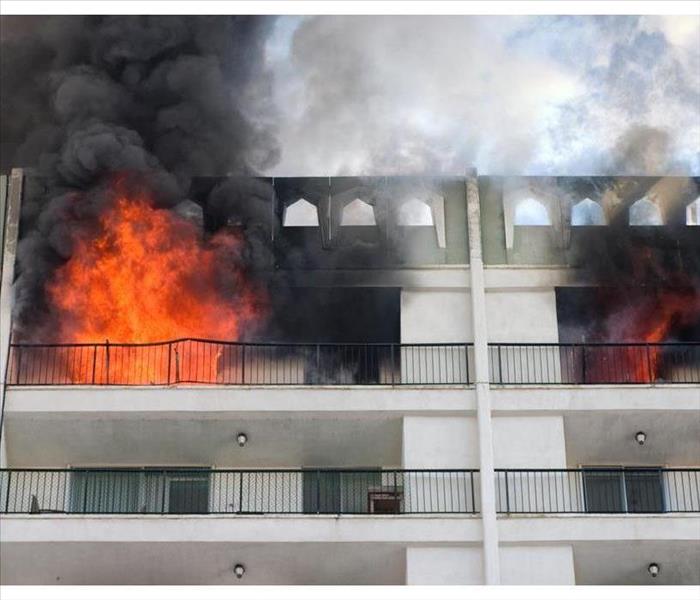 Apartment fire in Sumner, OK
Apartment fire in Sumner, OK
An apartment fire can be limited to one apartment or spread to a number of them. As a landlord in Sumner, OK, it’s your responsibility to have the affected buildings and other property that you own (e.g., appliances) restored and/or replaced. The tenants are responsible for their property.
What Steps Should Be Taken To Solve the Situation?
1. Check on Your Tenants
Your tenants must be checked on as soon as possible to make sure that they’re safe and to know of any damage in their spaces. Also, ask them about the details of the time surrounding the fire and if they have an idea of how it started, etc.
2. Inform Your Insurance Company
It’s important to immediately notify your insurance agent about the fire. The claim process should begin as soon as possible so that restoration can begin and the tenants can begin looking forward to resuming occupancy and their normal routine.
3. Contact Fire Restoration Professionals
Contact a fire damage remediation company to make an appointment to have the damage from the apartment fire assessed. This will provide your insurance company with information about the damage and get your property on the road to recovery.
4. Notify Renters About the Next Steps
Make sure that your tenants who have damaged property have contacted their insurance company if they have renter’s insurance. This is especially important if there are uninhabitable units; the insurance company can provide temporary housing for the tenants. In the case of tenants who don’t have renter’s insurance, the American Red Cross can help with temporary housing and other emergency essentials.
5. Arrange a Walk-Through With a Fire Officer
You and affected tenants will need to do a walk-through with the fire officer to assess the damage and to collect salvageable personal belongings. You, employees, and tenants must wait for the fire department to check the affected area before entering.
If your property experiences an apartment fire, it’s critical to begin the recovery process as soon as possible. Fire damage restoration experts are Here to Help.
Water Damage Prevention Tips
6/20/2020 (Permalink)
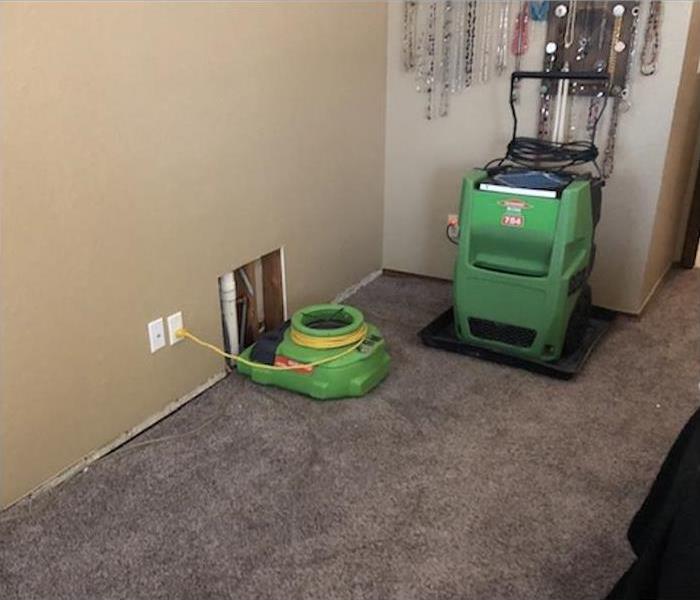 Drying equipment in place in Stillwater, OK
Drying equipment in place in Stillwater, OK
Although a broken pipe can create unexpected water in home, there are many other ways that water can creep in and slowly begin to create extensive damage. Prevention is the key to keeping your Stillwater, OK, home, or property dry and smelling like it should.
Prevention Tips
Keeping water at bay means being familiar with all aspects of a property, from the plumbing to the foundation and roof. Below are some key preventive measures that every property owner should consider:
Basement Water Seepage: If faced with a flooded basement or a constant musty odor, there could be cracks in the foundation, floor slabs, or around the windows. Ensure that water drains away from the foundation. This may involve regrading or adding landscaping to steer water away. In some cases, a waterproofing system, sump pump, or backwater valve may need to be installed for complete peace of mind.
Plumbing: While hidden damage can lead to extensive pipe cleanup, there are signs and ways to verify a plumbing system is correctly working. Regular inspect appliances, showers, tubs, sinks, and other water sources. Check that caulk and seals are damage free. Inspect main pipes for any cracks.
Downspouts: A blocked gutter system is a sure way to welcome unwanted water. Regularly clean gutters, downspouts, and rains of debris. Ensure that spouts are directed away from the foundation.
Roofs: Missing, damaged or old shingles can leave a roof’s membrane exposed, which can quickly lead to extensive damage on the exterior and interior.
Repairing the Damage
When faced with water in-home, that doesn’t mean that all will be lost. At the first signs of damage, call water damage, and remediation expert to inspect the property. If left to its own devices, a small water issue can quickly become a major restoration project. Count on professionals that can heed the call for help 24/7 to minimize the damage.
Although the unexpected can happen, taking a few preventive steps can ensure water in a home doesn’t become a long-lasting problem.
How To Keep Mold out of Your Rental Building
6/9/2020 (Permalink)
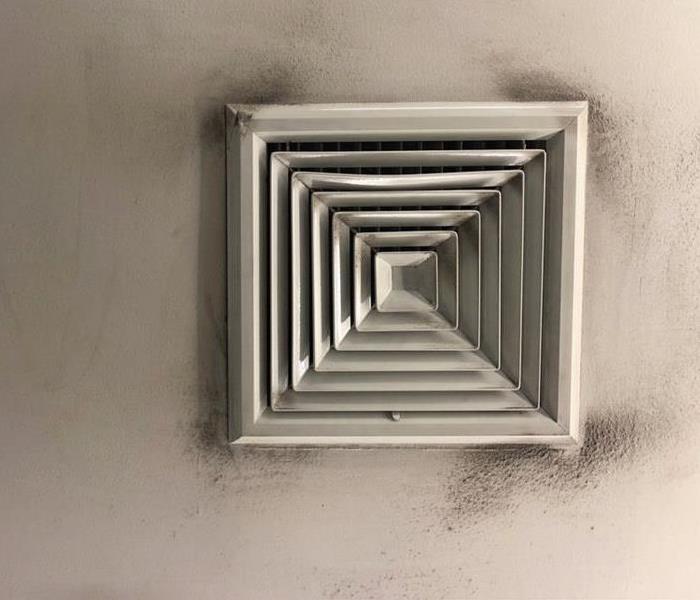 If you're looking for some mold prevention strategies, check out these ideas.
If you're looking for some mold prevention strategies, check out these ideas.
If you own a building and are renting it out to another business, you must be diligent about upkeep and maintenance. Doing so will continue to attract good tenants and keep your clients happy. If you discover mold in the building, you need to effectively and quickly eliminate it. Better yet, learn about mold prevention so you can avoid this problem altogether.
Clean up Messes Promptly
Mold needs certain conditions to thrive, but it doesn't take much to have mold growth. The presence of water and high humidity are big factors in the presence of mold. If any of the following occur, extract the water and dry the area as quickly as possible:
Pipe leaks or pipe breaks
Toilet overflows
Condensation on windows, in windowsills or in other parts of the Stillwater, OK, building
Maintain Good Ventilation
Moist environments and poor airflow are other ways in which mold will grow and spread. Opening windows will help promote good air circulation. In areas of your rental unit, make sure you have good ventilation. The bathrooms, basement, and kitchen need quality air movement to discourage mold from forming on walls and the floor. Inspect the HVAC system regularly. Clean the air ducts and remove dust and debris. Mold prevention can start with something as simple as purchasing fans.
Keep it Clean
If there is water damage anywhere in the building, you should call a professional flood remediation company. The technicians will not only remove the water but distinct all surfaces in the area as well. This will kill any remaining fungal growth and discourage any more spreading of mold. Regularly wipe off contact points that people regularly touch. You may need to focus on areas of high traffic and excess moisture.
If you're looking for some mold prevention strategies, check out these ideas. If you commit to following these steps, you should not have to worry about mold in your rental unit.
Steps for Cleaning Your Home After a Sewage Flood
6/4/2020 (Permalink)
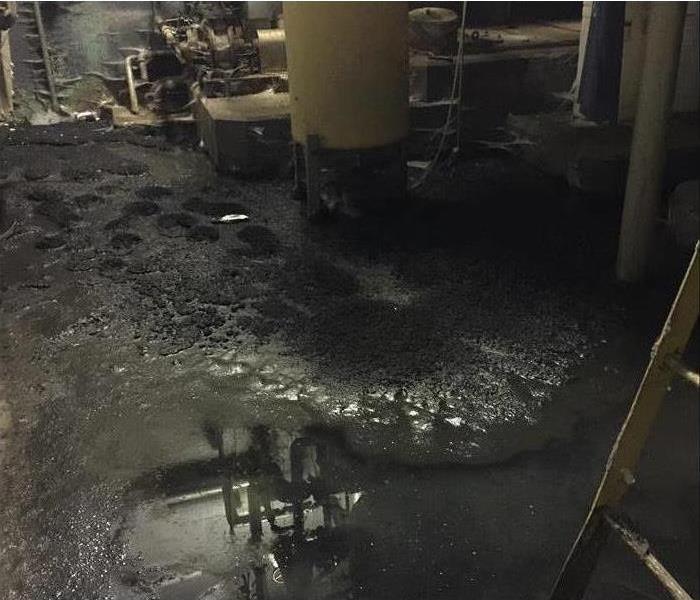 If your home suffers a sewer backup, quick sewage cleanup is crucial
If your home suffers a sewer backup, quick sewage cleanup is crucial
What Steps Should Be Taken?
Discovering a flooded toilet at your Perry, OK, home is bad enough, but when it’s due to a sewer backup, it’s even worse. Sewage cleanup needs to begin immediately. So, what steps should be taken?
1. Practice Safety
First and foremost, evacuate everyone from the affected area. Anyone who’s working to remediate the situation should wear personal protective equipment (PPE). Goggles, a respirator, rubber gloves, Tyvek coveralls, and rubber boots are ideal. The area may also need to be contained to protect unaffected areas. Utilities should be turned off immediately, including electricity, gas, and water. To be safe, the utility company should be contacted for shutoff. Do NOT enter the area beforehand
2. Ventilate the Area
Proper ventilation is essential after a sewer backup. The stench and harsh odors from cleaning chemicals can be overpowering. Circulate air by opening windows and doors and running fans. However, don’t turn on the HVAC system; it can cause cross-contamination into other parts of the house.
3. Extract Standing Water
A wet/dry vacuum is one of the safest, most effective tools for removing standing water and small debris during sewage cleanup. They can be rented or easily found in hardware or department stores. If there’s debris, make sure the hose doesn’t clog. Also, be sure to empty the tank before it gets too full.
4. Dispose of the Unsalvageable
Next, anything that can’t be thoroughly cleaned, disinfected, and dried within 48 hours will have to be disposed of. Many porous materials such as drywall, carpeting, and upholstery will probably be unsalvageable.
5. Clean, Sanitize and Dry
When all unsalvageable materials have been removed, any leftover raw sewage and debris need to be eliminated. Then, all remaining contaminated materials and surfaces require thorough cleaning and sanitizing. Finally, it’s crucial that everything is dried thoroughly within 48 hours to prevent mold growth.
If your home suffers a sewer backup, quick sewage cleanup is crucial. Proper safety measures are important and can be performed by restoration experts.
What Should You Do If You Suspect a Gas Leak in Your Home?
6/4/2020 (Permalink)
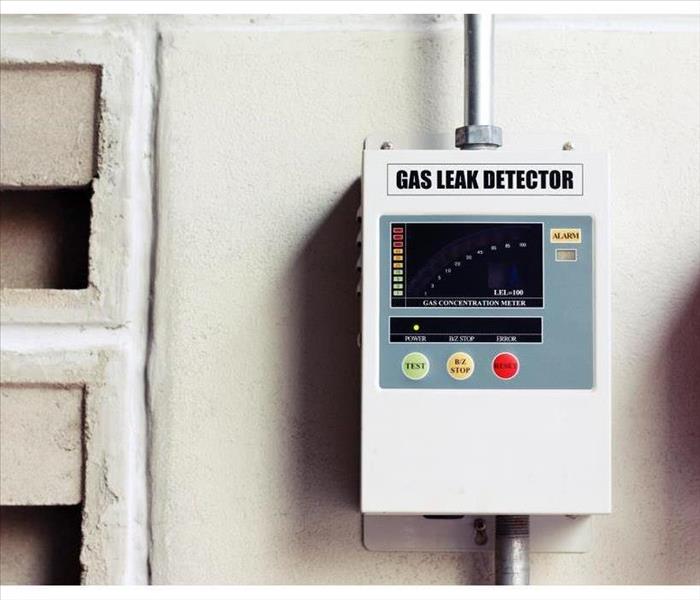 A gas leak in your Guthrie, OK, home could be dangerous
A gas leak in your Guthrie, OK, home could be dangerous
A gas leak in your Guthrie, OK, home could be dangerous. While the natural gas you use for cooking isn't toxic, it is incredibly flammable. It could thus cause a gas fire or even a gas explosion. You thus need to address the issue as soon as possible.
Signs of a Gas Leak
While the gas itself is not visible, there are some easy ways to tell whether there is excess gas in your home. You just need to use your eyes, nose, and ears. Any of the following could be evidence of a gas leak:
- The sound of hissing from an appliance or pipe
- The smell of sulfur or rotten eggs
- The appearance of bubbles in wet areas
The Proper Response
The gas you smell may simply be coming from your stove. Check to see if someone accidentally left on one of the burners.
If that is not the cause of stench, then you likely have a gas leak. Your next step should be opening the doors and windows of your home. This will ventilate the area and allow the gas to leave the building.
To prevent a gas fire, avoid using any electronics or phones inside the house. You should not light any matches or turn on appliances, either. Instead, you should evacuate the property and dial 911. You may also want to shut off your gas meter if you know how to do so.
Prevention and Mitigation
Once it is safe to go back into your house, you can take steps to prevent gas problems in the future. Make sure to check your exhausts and change your furnace filter regularly. You should also store contact information for your local emergency restoration professionals, just in case a gas fire does occur.
If you smell rotten eggs in your home, act quickly to prevent a devastating blaze or explosion. Ventilate your home immediately and get you and your family to safety.
6 Ways To Prevent Residential Water Damage
5/28/2020 (Permalink)
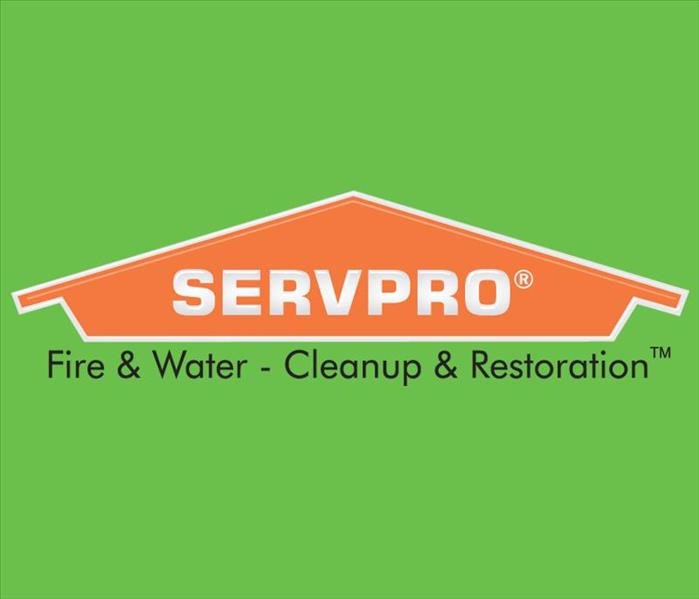 While the above methods are great for keeping water in home plumbing and away from fragile structural components, accidents inevitably happen.
While the above methods are great for keeping water in home plumbing and away from fragile structural components, accidents inevitably happen.
Keeping water in home plumbing and away from the structure and components of a house is crucial to preventing damage. You can contact a water mitigation company in Stillwater, OK, to assess the vulnerabilities of your home, but protecting it from water damage comes down to six things.
Plumbing inspections
Gutters and downspouts
Seals
Sump pumps
Backflow preventer or valve
Landscape grading
Plumbing Inspections
The best remedy to a broken pipe is never to let it break. Annual or bi-annual plumbing inspections — one in the fall and the spring — provide homeowners with some security against expensive plumbing repairs because they always understand the health of their system.
Gutters and Downspouts
Homeowners often neglect their gutters and downspouts, which can cause significant water damage to your roof and foundation. Performing routine gutter and pipe cleanup ensures that excess water is pushed away from your home.
Seals
Window and door seals prevent water in home breezeways and rooms, but the material does not last forever. Check your window and door seals every spring and fall for cracking or other signs of wear and replace where needed.
Sump Pumps
Basements are vulnerable to flooding, and sump pumps help protect against such possibilities. If you have a sump pump, check its functionality throughout the year. If you don't have a pump in your basement, consider the investment.
Backflow Preventer or Valve
Backflow preventers keep freshwater sources fresh and prevent sewage backups. Plumbers install the valve within a home's plumbing, and it only allows water to travel one way, keeping external or wastewater sources out of your home.
Landscape Grading
Your landscaping should always angle away from your house. Landscape grading should angle at least 10 to 15 degrees toward the street to protect you against frequent flooding.
While the above methods are great for keeping water in home plumbing and away from fragile structural components, accidents inevitably happen. If your home experiences water damage, contact a water restoration company for help.
Creating a Serious Plan
5/18/2020 (Permalink)
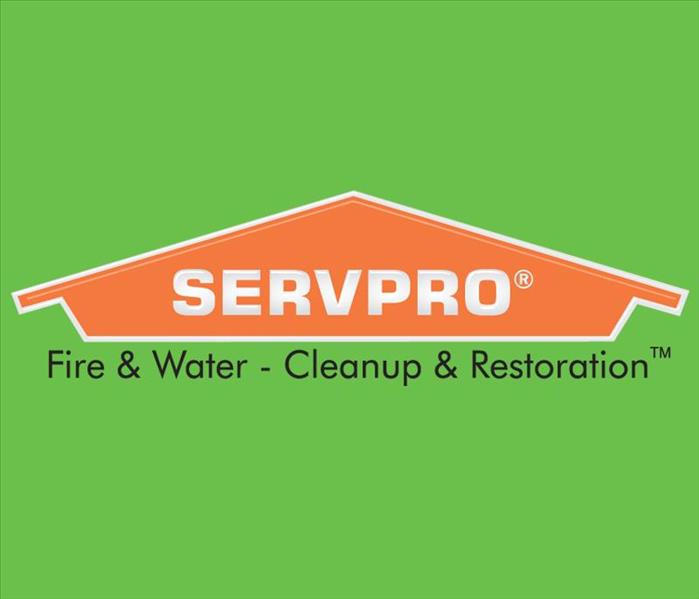 The business owner needs to think about the many ways they make sure this problem never happens to them again.
The business owner needs to think about the many ways they make sure this problem never happens to them again.
It is imperative to create a plan after commercial fire damage by a firefighter and a fire suppression system. Fire restoration efforts must be all about fully getting rid of any smoke damage, soot damage, and lingering fire damage from all areas of the property. The plan needs to be about working to figure out specifics.
A business owner may have found that a fire sprinkler system went off by accident and did not stop causing water damage to multiple areas of the space. They also may find that the fire sprinkler system was also in place and set off by firefighters walking across the property. Any owner needs to keep in mind that the professionals they hire for the clean up may need a great deal of time in order to complete the project.
The complete cleanup efforts should also be about putting into place efforts that can help assist any business owner with making sure they can open up space again with as little loss of revenue as possible. It's important to think as long-term as possible. The business owner needs to think about the many ways they make sure this problem never happens to them again. When a plan is put into place to help prevent future fires, this allows the business owner to think about the many ways they can fireproof all parts of their business. Any business owner should have a long-term fire reaction plan in place.
3 Questions To Understand About Commercial Content Cleaning
5/10/2020 (Permalink)
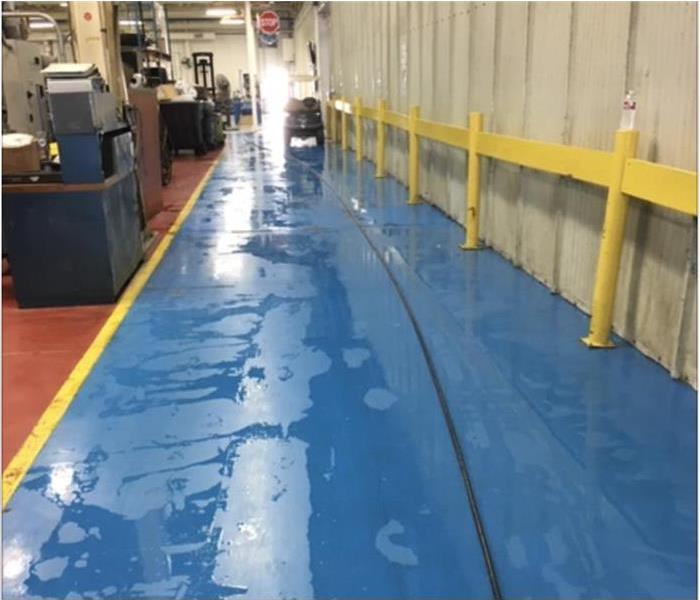 Water damage in a commercial building in Ceres, OK
Water damage in a commercial building in Ceres, OK
3 Questions To Understand About Commercial Content Cleaning
The last thing a business owner wants to deal with is a flooded company. This situation, after all, is both physically and emotionally messy. The establishment in Ceres, OK, must not only be closed, but it must also receive a thorough cleanup, preventing any complications with staff or clients. As proprietors sift through their valuables, they'll need to consider if they can keep something or toss it.
1. How Do You Know What Can Be Saved?
Work with a water restoration company to inspect and review your assets. The experts can look over everything, providing suggestions for what should be done. They'll consider the following points:
- What type of water contacted the piece?
- Is the item porous or nonporous?
- How easily could the owner replace the belonging?
The answers here are vital. As they survey the contamination, the team can provide a plan for you, offering dry cleaning to immersion services. In fact, with their high tech equipment, they can sanitize even electronics and documentation. Don't think all of your hard work has to go to the curb. Discuss the various options available.
2. What Precautions Should Be Used?
A flooded company is a hazard, particularly if the overflow came from a sewer line or external source, such as a lake or ocean. The microbes are seeking residence, growing within the walls and floors. For this reason, extreme caution should be taken to wash anything from the impacted zones. Appropriate personal protective equipment such as masks, gloves and eye wear should be used, preventing germs from spreading.
3. Is Clean Water An Issue?
Even a broken pipe that sprays freshwater is complicated. While it may not contain the microorganisms, too much of it could lead to mold. The major factor would be who easily the scrubbing process could be done. A nonporous substance took in very little, leaving it a simple procedure. Porous pieces, however, are far more complicated. They may not make it.
A flooded company doesn't mean a complete loss. Speak with professionals for guidance.
How Commercial Ceiling Tile Maintenance Prevents Larger Issues
5/10/2020 (Permalink)
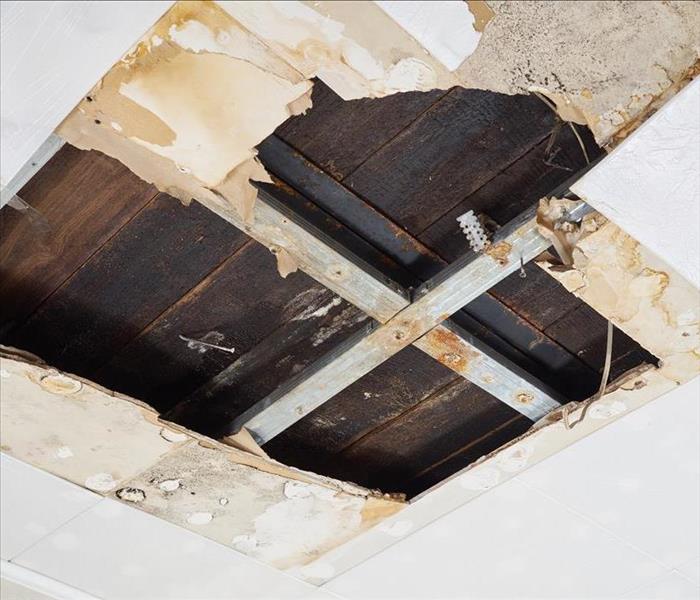 Ceiling maintenance is important to your business
Ceiling maintenance is important to your business
As a Navina, OK, business owner, you are responsible for the facility's overall maintenance. One of these tasks involves the upkeep of your ceiling tiles, especially if you find tile mold. Discoloration and dirt not only ruin the look of the building, but they can also signal larger issues. Learn about the importance of inspecting tiles, as well as how to maintain and replace them.
Title Inspections and Their Benefits
Perform a ceiling inspection and look for tile discoloration at least twice a year. This simple procedure creates a variety of advantages for your business.
- Ensures building's code compliance
- Finds aging sections of the building to renovate
- Encourages aesthetic consistency
- Warns about potential water damage
The last benefit is the most crucial since untreated water incidents can escalate to flooding, structural damage, and more. Contact plumbing and commercial building restoration specialists to resolve these bigger issues.
Tile Maintenance
Cleaning and maintenance routines are important in every part of your business, even the ceiling. Dirt and bacteria can build up, especially near porous material. The most efficient way of cleaning tiles involves applying a light amount of cleaner to a damp cloth, then wiping them. If you have tile mold, bring in professional assistance, as they have the appropriate tools and cleaning agents for your location. If you see scratches, cracks, and spots, touch them up as much as possible.
Tile Replacement
When the tiles are too discolored or damaged to fix, the most efficient move is to replace them. Conduct a thorough inspection for any tiles that need replacement so you have the correct quantity. Add a few extra tiles to that order in case you need them. Ensure that the current pattern is available before purchase. Follow directional arrows in the old tiles to install the pattern correctly.
Ceiling maintenance is important to your business. From helping you eliminate unsightly tile mold and dirt to warning you of greater problems, this practice helps improve your commercial location.
3 Steps To Mitigate Roof Damage To Your Home
4/28/2020 (Permalink)
 It’s a good idea to pay attention to what the weather is doing in your area
It’s a good idea to pay attention to what the weather is doing in your area
Consider These Three Steps
When you live in an area such as Sumner, OK, you may be worried about the local weather causing roof damage to your home. Fortunately, a storm damage restoration service can help with any repair needs you may have. However, there are a few things you can do beforehand to mitigate potential problems. Next time there’s a storm in your area consider these three things.
1. Pay Attention To the Weather
It’s a good idea to pay attention to what the weather is doing in your area. This will help you have time to prepare properly before a storm occurs. If you’re expecting heavy wind or rain you can take steps such as covering over areas of your roof that may be prone to damage with tarps or boards until a professional can make repairs. You may also want to check for debris or loose gutters that could also be knocked around by the weather and damage your roof.
2. Clean Out Your Gutters
You may also want to take the time to clean out your gutters as this also can help prevent roof damage to your home. Debris such as sticks or leaves can clog the gutter and lead to water backup. This water can then overflow onto the roof and cause problems. When the gutters are clean and the downspouts pointed away from the building, this potential issue is much less likely to occur.
3. Trim Back Overhanging Trees
Another way to help mitigate wind damage to your home’s roof is to trim back any trees that might overhang. Look for weak or dead branches that could be knocked loose by the wind. During a storm, these have the potential to fall on the roof causing damage. Taking the time to remove them beforehand may help mitigate the problem.
If you’re trying to mitigate storm caused roof damage to your home you may want to consider keeping an eye on the weather, keeping your gutters clear of debris and taking the time to trim back any overhanging trees. If damage does occur, a restoration service can help with any clean up and repair needs.
3 Tips to Prevent Toilet Plumbing Issues for Your Business
4/27/2020 (Permalink)
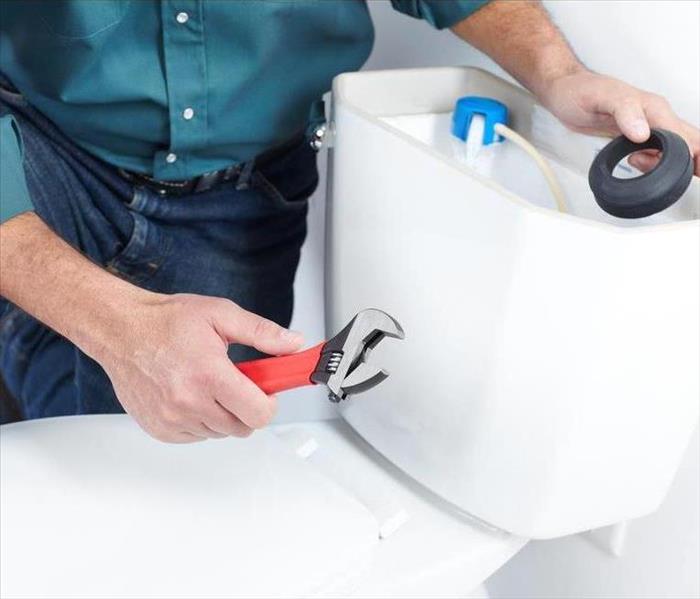 A clogged toilet can become a serious problem for a business.
A clogged toilet can become a serious problem for a business.
Dealing with a clogged toilet is one of the most common plumbing problems experienced by businesses in Stillwater, OK. Overflow is another. There are some preventative maintenance measures your business can take to minimize these types of little disasters. Here are some tips to help businesses alleviate their toilet woes.
1. Tree Roots Growing Through Your Line
While trees in Stillwater, OK, offer many benefits, the trees growing directly around your facility have roots that are also growing under it. These roots damage countless numbers of sewer lines every year. The issue can suddenly sneak up on you, and before you know it, toilets are backing up, and if the backup happens while you are away, it can cause massive damage to your flooring and structure requiring the services of a clean up and restoration company.
The best way to prevent root growth is to kill the roots. There are many root killers on the market, and by applying the root killer as often as recommended by the manufacturer, which could be as often as monthly, this problem will be less likely to happen in the future.
2. Keep Up with Slow Drains
If you notice toilets draining slower than usual, it's time to plunge. Be sure to use a plunger that is designed for use with toilets. If plunging fails to correct the plumbing issue, there could be an item stuck in the s-trap and you should call a plumber before the problem worsens into an overflowing or clogged toilet.
3. Hard Water Deposits
Hard water deposits are common and can be seen building up under the rim of your toilets. These should be removed and a preventative solution made of one part muriatic acid and ten parts water should be poured down the tank's overflow tube. Removing these deposits will improve the flush ability of your toilet.
A clogged toilet can become a serious problem for a business. Regular toilet maintenance will ensure these burdensome plumbing issues are less likely.
Is Security Fencing Necessary After a Commercial Fire?
4/19/2020 (Permalink)
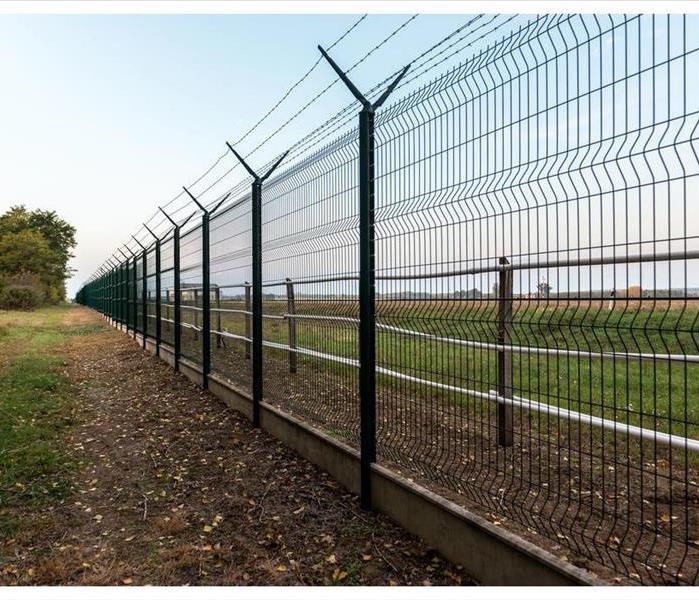 It’s highly recommended that you install a security fence
It’s highly recommended that you install a security fence
Is Security Fencing Necessary After a Commercial Fire?
Suffering a major fire at your business can be a real challenge for you and your employees. Once you know that everyone is safe it’s time to start thinking about the next step — limiting the amount of damage to the property itself. One of the most effective methods is installing a temporary security fence. Fencing will greatly reduce or prevent:
1. Animal Entry
Animals can wreak havoc on a building. While you may not be able to completely keep animals out, proper fencing should limit it considerably. From animal waste to chewed wires, a building can suffer a lot of avoidable destruction.
2. Vandalism
Vandals can cause a variety of problems in a vacant building; the loss can be significant in mere minutes. From broken windows, graffiti, and fire damage to a ransacked property, in general. You may want to consider barbed wire at the top of your fence if you think vandalism is likely.
3. Theft
For some people, your vacated property is an opportunity to steal. A security fence will make it difficult for someone to enter the premises, and next to impossible to exit with stolen items, especially if those items are large.
4. Liability Issues
Trespassing is illegal, but you could still be sued for personal injury if an intruder gets hurt on your property. This could be particularly serious if it involves a child. Protective fencing will keep children and others from roaming around on your property.
5. Insurance Problems
Your insurance company will expect you to take every reasonable step to limit additional loss to the affected property. Damage from negligence after the fact probably won’t be covered. Installing fencing will prove that you’re taking precautions to contain the area while keeping as many external hazards out as much as possible.
If your commercial building sustains major fire damage in Sumner, OK, it’s highly recommended that you install a security fence. Then, remediation professionals can work to return your building to its preloss condition.
Prevent Mold Damage After Flooding
4/3/2020 (Permalink)
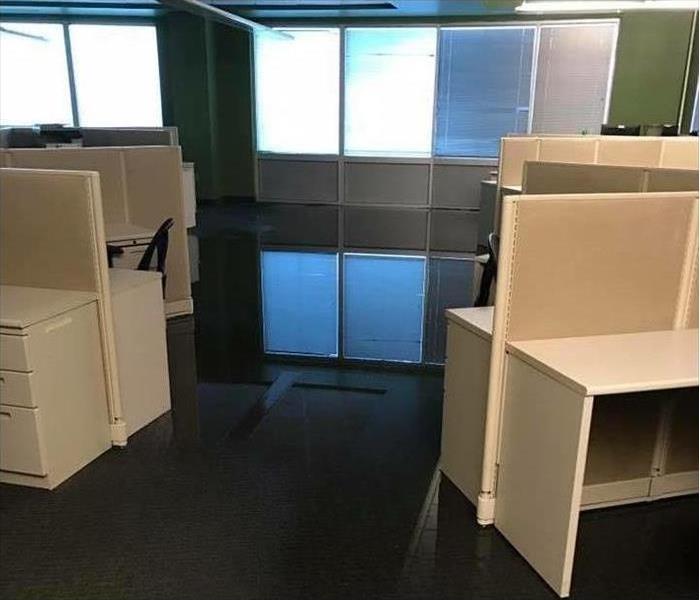 Standing water after storm damage in a Stillwater, OK office
Standing water after storm damage in a Stillwater, OK office
Floodwaters, leaks following major storms, and any other type of water that seeps into your building can lead to a risk of mold growth. Unfortunately, contaminated water also carries bacteria, hazardous chemicals, and potential toxins. Even after you've successfully removed all floodwater from your property, there's still a risk that mold or mildew will set in.
Assess Dangers First
As soon as you notice flooding or standing water, be sure to address any potential dangers:
- Damages to the foundation and floors
- Wiring and live electrical systems
- Gas leaks and damaged piping
- Contaminated water
For your safety, don't work alone. Turn off the water, gas, and electricity. Be sure to contact the appropriate professionals for dangerous hazards, such as black water.
Identify Furnishings and Content To Replace
There are many items in buildings that could hold onto moisture and support mold growth long after the initial emergency is over. Some furniture can't be cleaned sufficiently to prevent the spread of mold, such as pillows and thick cushions. Most water damage cleanup professionals recommend replacing carpeting and the padding below to prevent lingering odors, carpet stains, and mold.
Carefully inspect books and papers for water damage. There are professional services that may save these damaged items, but this can quickly become very expensive. It may be best for most of those items to be replaced.
Prevent the Spread of Mold Spores
Mold spores often hide out in and travel through heating and air conditioning systems. It's best not to run the HVAC system until professionals have inspected and cleaned the ducts. Some components of the system, such as filters, must be replaced before the system runs again. If the HVAC system hasn't been affected by the flooding, it will pick up mold spores and become contaminated if you run it before your property is thoroughly cleaned.
Act Quickly To Prevent Further Damages
Even a tiny amount of mold growth can lead to a lot of damage. Any time your Stillwater, OK, property is affected by standing water, leaks, or flooding, the first 24-hours are crucial in preventing damage. Take cleanup and preventative action immediately.
How to Eliminate the Moldy Smell in Your Bathroom
3/25/2020 (Permalink)
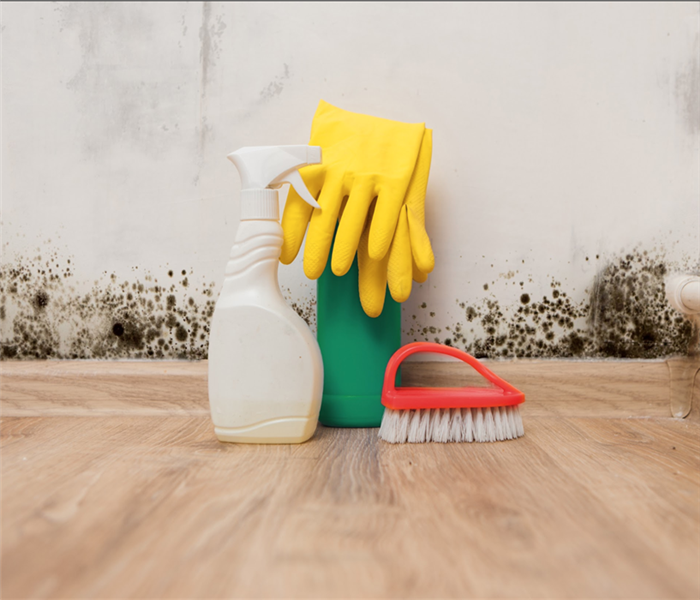 Cleaning supplies for mold damage
Cleaning supplies for mold damage
If you’ve ever had to tackle mold in your bathroom, most likely you’ve also dealt with the musty odor that can accompany it. When mold grows in a warm, moist environment, it can produce a biological toxin called mycotoxin. When these toxins are released into the air, they emit a strong and unpleasant odor.
How to Remove The Musty Smell
In order to get rid of the nasty smell, mold remediation needs to take place. Here are some simple steps to follow when removing mold in your bathroom in Guthrie, OK.
Fill a clean spray bottle with either full strength white vinegar or a mixture of 1 cup borax to a gallon of water. Either solution works great and is safe to use.
Spray the solution on the affected area. Make sure to cover the area well.
Wipe the area dry with a clean cloth.
How to Keep the Musty Odor From Returning
In order to avoid a mycotoxin from invading your bathroom again, you need to eliminate the environment they like.
Always run an exhaust fan for several minutes after showering.
If you don’t have an exhaust fan, open the nearest window, if weather permits, and leave the bathroom door open.
You may want to buy a dehumidifier if you live in a humid climate.
Invest in an air filtration system.
How to Choose an Air Filtration Device
There are tons of air filtration systems on the market, but it is important that you purchase one that is classified as HEPA, which stands for high-efficiency particulate air. Be careful, though, because devices may claim to be HEPA, but aren’t able to remove mold spores from the air. The machine you choose must be able to remove 99.97% of particles down to 0.3 microns, which is a really tiny particle.
Get rid of every nasty mycotoxin for good and keep your house smelling fresh.
How Do Fire Sprinklers Work During a Fire?
3/9/2020 (Permalink)
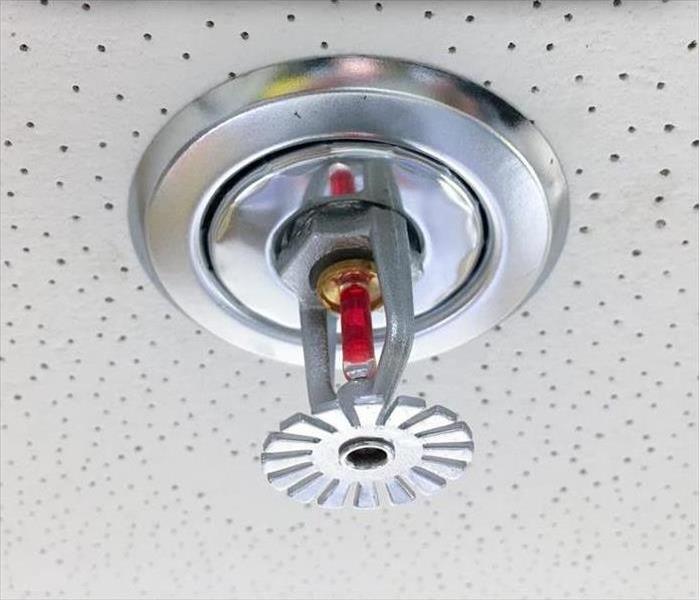 Fire sprinklers in your Perry, OK business can reduce the heat during a fire.
Fire sprinklers in your Perry, OK business can reduce the heat during a fire.
For many Perry, OK, business owners, knowing that a fire sprinkler is installed at their commercial property provides great peace of mind. But how does a sprinkler actually work when a fire is taking place? Here are the steps involved in its operation and some other facts you may not know.
Sprinkler System Benefits
There are a great number of benefits to installing fire sprinklers in your building, including the following:
- They reduce the heat, smoke and flames present during a fire.
- They can minimize the risk of property damage.
- They often put out a fire before firefighters even have a chance to arrive at the scene.
Since a fire sprinkler system can save lives and reduce the risk of damage, it really does pay to have one installed at your place of business.
How Sprinklers Operate
A sprinkler system consists of a pipe network filled with pressured water. This network is installed behind your building’s walls and ceilings, with the exterior sprinklers placed along your piping system. If a fire should occur, the sprinklers close to the flames become activated by a high temperature - never by smoke. The pressure system allows the sprinklers to shoot out water in a forceful manner, leading to fire suppression and possibly extinguishing the flames completely.
Fire Sprinkler Cleanup
By now, it is likely that you are convinced of the many safety and financial benefits of installing a sprinkler system. But what about the destruction caused by all that water? Fortunately, a commercial fire restoration company can help. In addition to assisting you with loss from the smoke and flames, fire damage technicians can help you cleanup any water damage that occurs as a result of the sprinklers. In some cases, even important documents can be dried or otherwise salvaged.
A fire sprinkler system will help you protect more than your property. It will assist you in ensuring the safety of you and your workers in the event of a commercial fire.
How To Get Rid of Smoke in Your Building
3/9/2020 (Permalink)
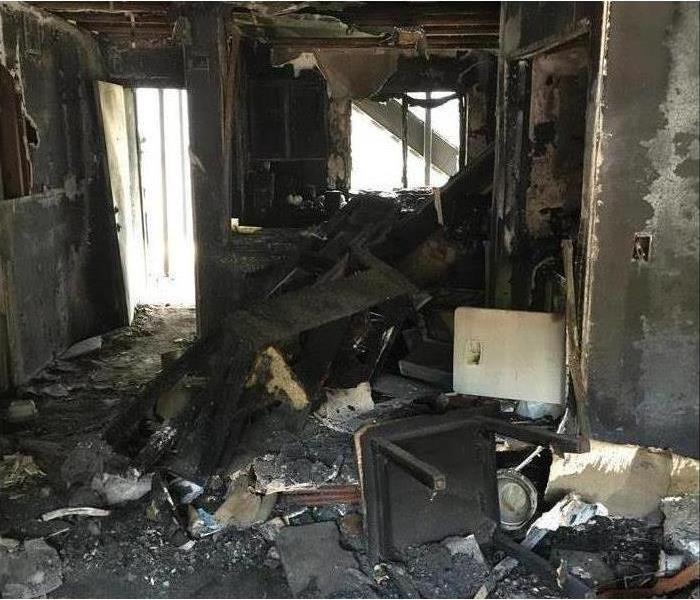 Smoke and soot can cause a great deal of damage to a building or house.
Smoke and soot can cause a great deal of damage to a building or house.
Smoke Damage
Smoke and soot can cause a great deal of damage to a building. Even if a fire breaks out in a structure that is near your commercial property in Guthrie, OK, your building could sustain smoke damage from the fire. If this happens, there are three steps you need to take immediately to make sure that any issues with your property are resolved in an efficient manner.
1. Contact Your Insurance Agent
Your commercial insurance coverage will likely pay for repairs to your property even if the soot damage is the result of a fire in a neighboring building. Timely reporting is important. The sooner you alert the insurance company that the damage exists, the sooner an adjuster can visit to determine how much you are eligible to be compensated.
2. Call a Restoration Expert
Your next contact should be certified fire restoration specialists. These technicians can assess the smoke damage in your building, formulate a plan for getting rid of it and estimate how long the process should take. They can also provide a detailed, itemized list of the necessary smoke cleaning services and how much they will cost. This list can be a valuable resource when it comes to filing your insurance claim.
3. Complete a Walkthrough
When the insurance adjuster arrives, he or she is going to walk through your property to determine what needs to be done to fix it in order to propose how much the company should cover. It is a good idea to accompany the adjuster on this walkthrough. This gives you the opportunity to provide any information he or she needs. It also helps ensure that no damage is overlooked.
A fire doesn't have to break out in your building for smoke damage to occur. If your property is affected by a fire in a nearby structure, your swift response and the help of experts is necessary to resolve the problem as quickly as possible.
3 Ways Towns Are Preparing for a Flooded Future
3/4/2020 (Permalink)
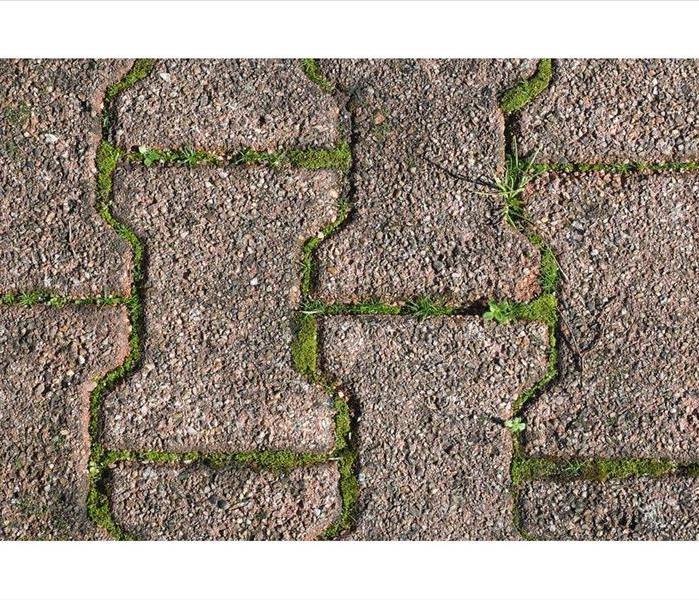 It is better if everyone used porous pavements for the walkways only
It is better if everyone used porous pavements for the walkways only
Flood Mitigation Tips
Science can only do so much when it comes to flood prevention. It can only offer people a head-start so they can evacuate and save whatever they can. However, there are ways to reduce the amount of water in most floods.
Here are some of the best flood mitigation tips for Guthrie, OK and other flood-prone areas across the nation:
Water parks
Detention basin
Porous paving
1. Water Parks
For many years, most coastal cities used retention walls as a way to prevent flooding. These structures do a great job of reducing the amount of water that gets into the streets, resulting in little to no flooding. Still, the concrete walls cost a fortune to build and even more on maintenance. That’s why most towns have started exploring other options, such as the Dutch-inspired water parks. These parks have vegetation and a sophisticated drainage system that tries to embrace the water rather than try to keep it out.
2. Detention Basins
Detention basins are often included while designing water parks. You can think of them as a temporary reservoir where the floodwater can stay before it is released back to the ocean or taken elsewhere. Also, basins act as a warning system for a massive incoming flood, giving people time to evacuate and reducing the cost of flood cleaning significantly.
3. Porous Paving
The ground plays a significant role in reducing the amount of surface water, but it cannot do its job when covered in concrete and other non-porous materials. So, it is better if everyone used porous pavements for the walkways only. Then leave the remaining space for a lawn or flower garden. That will restore the natural balance and play a big role in flood prevention.
With science pointing to even more unpredictable weather in the future, flood prevention measures are more critical than ever before. Implement whatever you can on a business level then hope for the best.
What Types of Fire Coverage Does Homeowners Insurance Include?
2/28/2020 (Permalink)
 Typically homeowners insurance covers fire and smoke damage
Typically homeowners insurance covers fire and smoke damage
What Types Of Coverage Does Homeowners Insurance
Don’t wait until you’re in the wake of a home fire to go exploring what your homeowner's insurance covers. Typically homeowners insurance covers fire and smoke damage, with a few exceptions such as arson or a vacant home fire. So, what types of coverage does homeowners insurance usually include?
1. Dwelling and Attached Structures
Dwelling coverage covers repair costs to your home and any attached structure such as a garage or porch. If your home is a total loss, your insurance typically would pay a lump sum, minus the amount of your deductible. If there are only portions of your house that are damaged, insurance would cover the costs to repair them, less any deductible.
2. Detached Structures
In addition to your house, detached structures such as garages, storage buildings, sheds and fences. Landscaping is also often covered.
3. Personal Property
Homeowners insurance typically includes coverage for personal property that’s destroyed in a home fire. This includes everything from clothing to appliances to furniture. It’s best to inventory your possessions in advance of a possible fire. Since valuable items usually have a set per-item limit, each piece should be individually listed with its own coverage amount.
4. Loss of Use
If a major fire occurs at your home you’ll likely have to evacuate and stay in a temporary shelter for possibly months. Homeowners insurance will typically reimburse for living expenses during this time. These expenses including hotel stays and food.
5. Liability
A fire could spread from your house to your neighbor’s property. Liability insurance coverage protects homeowners against lawsuits and other damages associated with this.
It’s important to understand your homeowner's insurance and know what is covered before a disaster occurs. If your property sustains damage from a home fire in Perry, OK, you can trust fire damage cleanup professionals to return your house to its preloss condition as soon as possible.
What To Do About a Wet Crawlspace
2/11/2020 (Permalink)
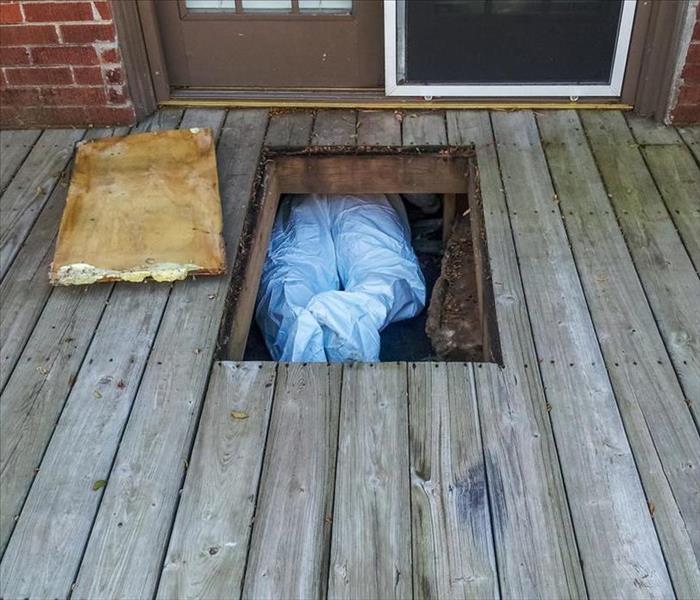 A wet crawl space under your Navina, OK, home can cause problems in the rest of your house
A wet crawl space under your Navina, OK, home can cause problems in the rest of your house
Common Causes of Crawl Space Floods
A wet crawl space under your Navina, OK, home can cause problems in the rest of your house. Fortunately, it is possible to dry out a crawl space and prevent future flooding.
Preventing a Crawl Space Flood
Because many crawl spaces are not waterproof, they can take on moisture for many different reasons. The following are some common causes of crawl space floods:
- Clogged gutters
- Insufficient grading away from foundation
- Leaks from indoor or outdoor pipes
Make sure that your landscaping and gutter system allows water to flow away from the foundation. Your lawn should slope away from the crawl space, gutters should be well-maintained and downspouts should be directed away from the house. Additionally, repair any leaks as quickly as possible, and notify the municipal authorities if a public pipe bursts. If your crawl space floods frequently, you may consider installing a sump pump or having the area encapsulated to prevent future floods.
Drying Out a Crawl Space
If you find yourself with a wet crawl space, it is important to address the problem as quickly as possible to prevent mold growth and structural damage. First, make sure that water is no longer flowing into the area. Repair the leak, wait for the storm to pass, etc. Then, remove the soaked materials. This makes it easier to determine if they can be salvaged and speeds up the drying the process. After that, begin drying out the crawl space. Most likely, you will need a pump to accomplish this. You can also use dehumidifiers and commercial-grade fans. After the crawlspace is dry, clean mold growth off of the piers, joists and other surfaces. When everything is clean and dry, you can begin repairing or replacing all affected materials.
If your home suffers a wet crawl space, it is important to address the problem quickly to prevent mold growth and structural damage. If the damage is serious, or if you suspect your crawl space contains asbestos or other harmful materials, you may decide to enlist an experienced restoration team to help you get your home back to normal quickly and safely.
How To Prevent Clogged Drains in Your Rental Property
1/28/2020 (Permalink)
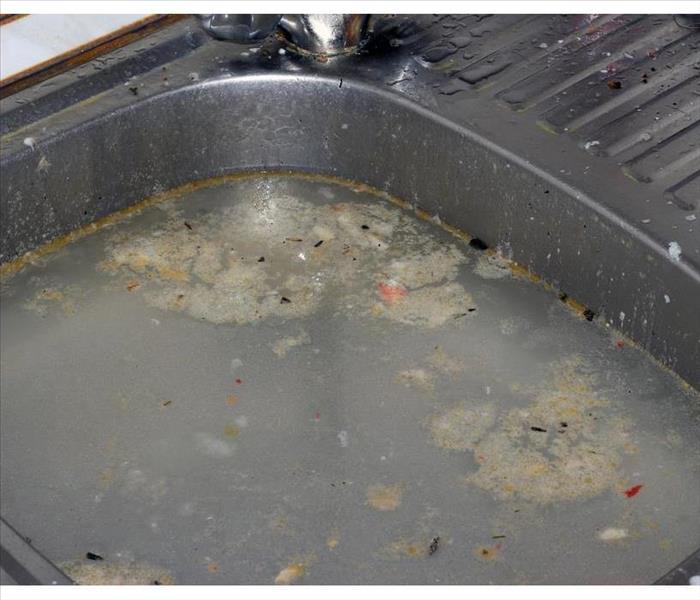 Clogged drains can severely damage the polybutylene pipes in your rental property
Clogged drains can severely damage the polybutylene pipes in your rental property
If you own an old rental property in Ceres, OK, you need to be careful about keeping everything in top condition. Older parts need regular care and maintenance to consistently stay in working order. One of the most crucial risks to avoid is water damage, which can result from clogged drains, flooding or other problems. Be sure to take the following steps to keep your polybutylene pipes clear and running smoothly.
Add a Drain Grate or Screen
To ensure that no harmful materials enter your pipes, add a grate or screen over your sink’s drain topper. By using a drain screen or grate, you can prevent the following objects from entering your drain:
- Hair
- Dirt
- Food particles
- Cosmetic products
- Paper
While a drain grate can be a highly effective addition to your sink, it’s important to note that it may not block out all harmful substances. For example, viscous liquids such as grease and oil might still pass through the drain and cause severe harm to your polybutylene pipes. It’s, therefore, your renters' responsibility to limit the substances that enter their drains to prevent clogs from occurring.
Monitor Garbage Disposal Use
If the sinks in your rental property include a garbage disposal feature, make sure it's being used correctly. Always encourage your renters to run cold water over the drain while using the disposal, as this can help food particles slide through the pipes more smoothly. Failing to run the water while using a garbage disposal may cause damage to the pipes.
Regulate Flushing
Many toilet clogs occur when renters flush objects that aren’t meant to be flushed. To keep your toilet drains clear, be sure to hang up signs that prohibit renters from flushing harmful objects. Feminine hygiene products, dental floss, tissues, and other common household objects should be thrown directly into the trash.
Clogged drains can severely damage the polybutylene pipes in your rental property. If you notice any signs of water damage, don’t hesitate to call commercial building restoration services as soon as possible.
4 Steps To Expect During Mold Remediation
1/22/2020 (Permalink)
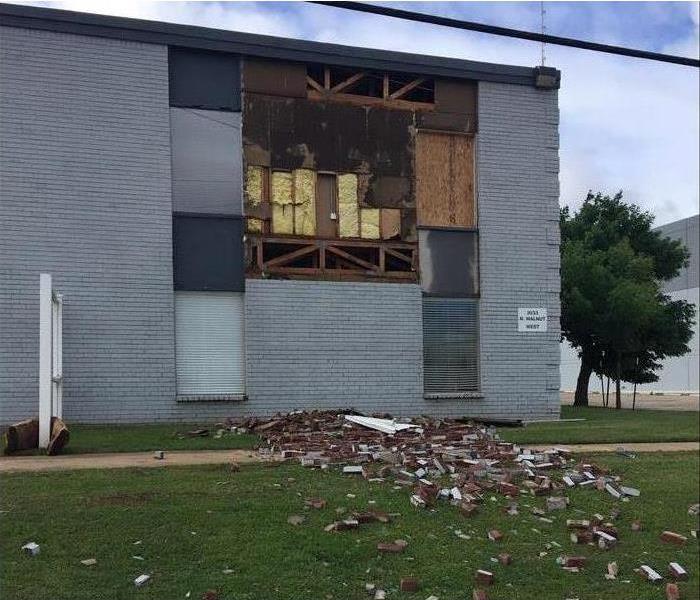 Building suffering from mold damage in Sumner, OK
Building suffering from mold damage in Sumner, OK
4 Steps To Expect During Mold Remediation
Keeping your Sumner, OK, building in top shape is likely a high priority. One way to do this is to make sure it is free of black mold. Many buildings develop a mold problem at some point, particularly if there has been some kind of water damage. The following are some steps that may be taken when bringing your building back to its previous condition.
1. Inspection
The first step in having mold removed is an inspection. This should be done by a professional to ensure that all instances of black mold in the building are found. Each area will need to be thoroughly searched. There are several common locations for hidden growth including the following:
- Behind walls
- Underneath carpets and flooring
- Inside drains and pipes
2. Containment
If mold is found in your building, it will need to be contained before any work can begin. This will keep spores from traveling to other locations and increasing the size of the infestation. Tarps and negative air pressure may be used during this process to keep mold from leaving the area.
3. Cleanup
Once the areas are identified and secured, the process of mold cleanup begins. Some materials such as drywall and carpeting are very porous and difficult to clean, so they may need to be removed. Other non-porous areas can be cleaned with antifungal products. Affected belongings, particularly those with mild damage, can often be salvaged using professional equipment.
4. Restoration
The final step in the process of removing black mold is restoration. This will include replacing any materials that were removed during cleaning. Some walls may need to be repainted as well. If there are lingering odors, air scrubbers and filters may be used to remove them.
Mold can be difficult to remove, especially if it spreads throughout large areas of the building, so it should be taken care of as soon as possible. However, you should not attempt to remove any mold on your own, as this can make the problem worse. A professional mold remediation specialist will provide the best results and can thoroughly rid the building of any growth.
Leave Puffback Damage to the Professionals
12/29/2019 (Permalink)
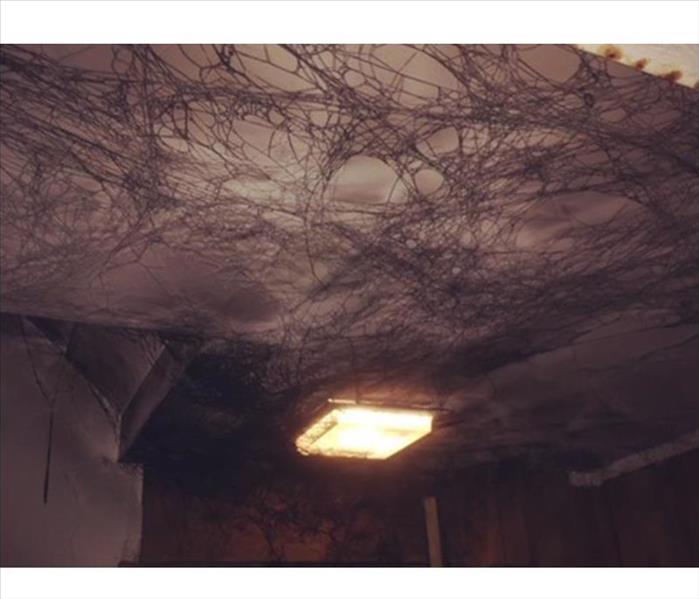 A furnace puffback is often the result of fuel accumulation within the system
A furnace puffback is often the result of fuel accumulation within the system
Businesses in Stillwater, OK, with an oil furnace know the importance of regular maintenance and annual inspections to keep systems operating properly. If the system gets clogged, it can result in puffback damage, which is a backfire that sends smoke and soot into the building. Not only does that affect the air quality in the building, but it also results in a mess that is difficult to clean.
What Causes a Puffback?
A furnace puffback is often the result of fuel accumulation within the system. The causes of this issue include:
Leaks – Fuel enters the furnace through a supply pipe. When in operation, high pressure and heat create air bubbles. Once the system turns off, those bubbles can expand and push unburned oil into the combustion chamber.
Shutdown Issues – Furnaces have a valve that keeps the fuel from flowing after it shuts down. If that valve is damaged, it may not properly close.
Spray Nozzle Problems – When working properly, the nozzle will properly feed fuel into the system. A clog, crack or other damage can impact the even distribution of fuel.
Improper Venting – These systems are designed to ensure gases are released to ensure a proper balance. Poor ventilation can trap the gases in the furnace, creating combustible accumulation.
Steps to Take After Puffback
After experiencing puffback damage, the first steps are to turn off the system, document the incident for insurance and contact an HVAC professional for an inspection. Once the problem is repaired and it's safe to turn back on, you are left dealing with a mess. While it may be tempting to clean it yourself, that soot contains oil and easily smears. It can also leave a long-lasting odor.
Contacting a professional restoration company can ensure the damage is properly cleaned. Along with having the tools and expertise to eradicate the visible sticky residue and lingering odor, they will inspect the entire property for hidden damage to ensure everything is back to normal.
The best bet is to avoid puffback damage by properly maintaining your heating system. Any signs of leaks or improper function should be a fast warning sign to get an inspection.
Important Pieces of a Business Continuity Plan
12/23/2019 (Permalink)
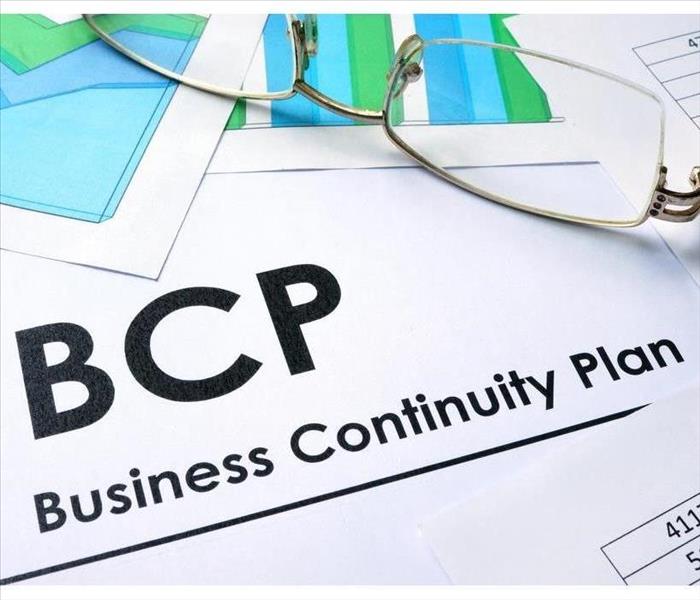 A business continuity plan is essential
A business continuity plan is essential
As a business leader, you know how important it is to run an efficient organization. You work hard to hire capable employees, meet customers' needs, produce high-quality goods and offer meaningful services. But are you prepared in the event of an emergency? If a natural disaster such as a flood hits your Guthrie, OK, office, you need to be ready to not only mitigate damage but to carry on day-to-day work. A business continuity plan can help with that.
Importance of Developing a Plan
You might not worry much about minor environmental issues, but even moderate storm damage can affect the way you run your business. A plan to continue operations is vital to your company's health in the following ways:
- Allows you to keep up with production
- Allows employees to keep working without having to take paid time off
- Allows you to fill orders and be competitive with other companies in the marketplace
- Helps with a smooth transition during an emergency
Work-From-Home Options
Set up ways in which your employees can work from home, if possible. Many roles can work remotely if an incident such as flooding makes it dangerous or impractical to stay in the office. Make sure your employees can access servers and can communicate with others in the organization.
Have Backup Equipment
Even if you can stay in the building, the machinery and equipment may not be in working condition. In your continuity plan, identify offsite or additional resources such as information technology that you can connect to and use.
Relocating
If working from home isn't an option for some employees, or for anyone, consider partnering with another company. You may also be able to move to another part of the building while professional cleanup teams are repairing the affecting areas. This may require staggering shifts to make room for everyone.
A business continuity plan is essential. Follow these steps so your company doesn't suffer.
FAQs About Basement Floods
12/6/2019 (Permalink)
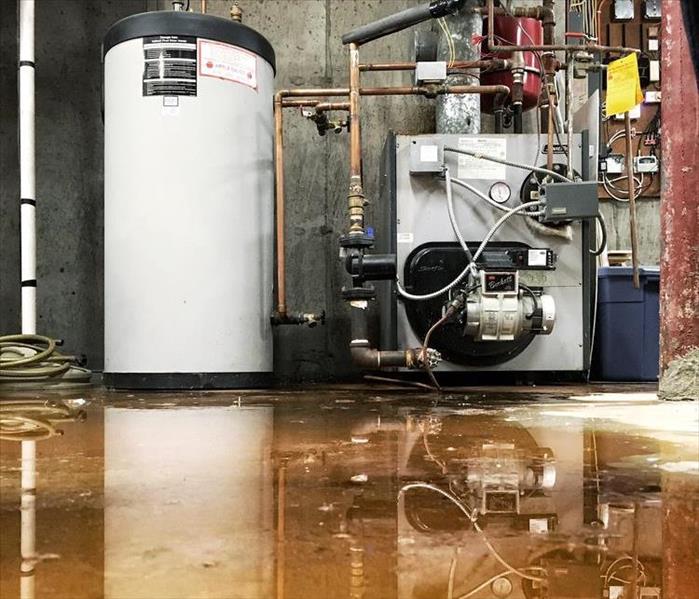 Broken water heater causes flood on basement in Perry, OK
Broken water heater causes flood on basement in Perry, OK
Learn About Flooded Basements
Basements are often great additions to homes, regardless of whether you use your basement in your home in Perry, OK, for storage or for spending time with family. Unfortunately, flooding is a common issue that frequently affects basements. If you have a basement in your home, it can be useful to learn about flooded basements.
What Causes a Basement Flood?
There are various reasons a basement may become flooded. However, some of the most common causes of flooded basements include:
- Natural disasters that cause heavy rains
- A broken water heater
- Damaged supply lines
- Pipe bursts
How Is Water Removed From a Flooded Basement?
Sump pumps and water vacuums are often useful to mitigate small to moderate amounts of water. However, if flooding has caused large amounts of water to enter your basement, you may want to consider contacting water damage restoration professionals. Experts have access to powerful tools and equipment that can remove large amounts of water, and professionals also know how to remain safe when removing contaminated water.
Can You Prevent a Flood in Your Basement?
Since there are various reasons a basement may flood, there is no guarantee that you can prevent your basement from all floods. However, it is possible that you may be able to prevent floods not caused by natural disasters. Ensuring that all appliances and pipes are working effectively and requesting an inspection if you need an appliance or pipe repair can help to prevent a flood. It's also often useful to look for signs of water damage so as to prevent a small problem from turning into a big disaster.
Your basement is an important part of your home, and an area that is particularly prone to water damage from a flood. It's often helpful to know the causes of flooding in basements, how water is removed from a flooded basement and how to prevent a basement flood.
Controlling Mold in Your Home
11/28/2019 (Permalink)
 Remember to turn on ventilation fans in bathrooms while showering to lessen mold growth
Remember to turn on ventilation fans in bathrooms while showering to lessen mold growth
Tips For Controlling Mold In Your Home
Mold has been around for millions of years. Many individuals cringe at the mention of mold; however, mold is a fungus that occurs naturally in the air and on many surfaces. Mold doesn’t become a problem until moisture is present and mold growth begins to happen. If you want to avoid the negative health and financial impacts of mold, here are some tips for controlling mold in your home.
Prevent Moisture
It’s always best to prevent expensive water damage and mold. Here are some simple mold prevention tips that you can apply to your Navina, OK, home:
- Maintain an indoor humidity level below 60%. You can test the humidity level with a hygrometer.
- Ensure proper ventilation in bathrooms, kitchens and laundry rooms. Make sure all exhaust fans vent outside your home.
- Properly maintain windows, doors, roofs, walls and plumbing. These problem areas should be checked and maintained to prevent water from entering your home.
- Completely dry areas that have been soaked within 24 hours. Replace carpet or rugs that have not dried properly.
- Consider installing waterproof flooring in high moisture areas such as bathrooms and basements.
By being proactive about mold prevention, you can form good habits that will stop major water damage and mold growth.
Remediate Problems
If you’re already experiencing some problems with mold, it’s vital to get professional help. Mold remediation specialists have the knowledge, equipment and skills necessary for mold cleanup. While you may feel like you can tackle mold on your own, it’s helpful to know that mold is easily spread through the air. Mold specialists have a detailed process that they work through to ensure that these harmful mold spores aren’t spread to other areas of your home.
Any homeowner wants to prevent mold and water damage in their home. By understanding how to prevent and properly remediate mold, you’ll be able to enjoy better air quality inside your home.
Leading Causes of Home Fires
11/22/2019 (Permalink)
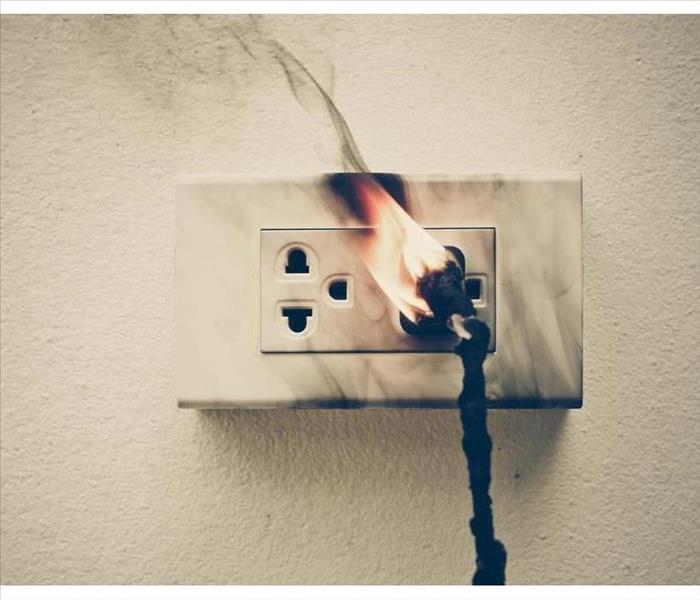 Faulty wiring can cause a home fire
Faulty wiring can cause a home fire
Most Common Causes of House Fires
A home fire is something no one wants to experience, but they happen every day. Fortunately, many fires are preventable with the proper care and maintenance of a property. However, to make sure you are protected, you need to know the most common causes of house fires.
Heating equipment
Cooking equipment
Appliances
Faulty wiring
Candles
Smoking
Children
Heating Equipment
One of the leading fire causes, especially in the colder months, is portable heaters. These elements must be kept at least three feet away from anything flammable. Also, do not use extension cords to plug the unit in.
Cooking Equipment
Grease fires are another common cause of house fires. Pans can quickly overheat if left unattended. Always have someone keeping an eye on cooking equipment to ensure things don't get out of control.
Appliances
Faulty appliances or those that are not maintained properly can lead to a significant number of blazes annually. For example, dryers need to have their lint traps cleaned regularly to ensure that lint and other elements do not buildup in the exhaust system and ignite.
Faulty Wiring
Faulty wiring can cause a home fire. If you moved into an older home, make sure that your wiring is checked by a licensed electrician to ensure it is up to code. Also, remember to have your critical systems inspected at least once per year.
Candles
While candles are beautiful for creating ambiance, they are not the safest options for use in a home because children and animals easily topple them. Try using LED candles instead.
Smoking
Smokers need to be especially careful when lighting up in the home, especially if they are in the habit of smoking before bed. Cigarettes can lead to house fires and even death due to the proximity to potential victims.
While you can keep a watchful eye over these common causes, accidents do happen. If your home is damaged in a fire, you can hire fire cleaning services to restore your home in Ceres, OK.
A home fire is a tragedy. Be watchful and mindful of common causes to prevent such a travesty for your family.
What You Need To Know About Mold Growth After a Flood
10/26/2019 (Permalink)
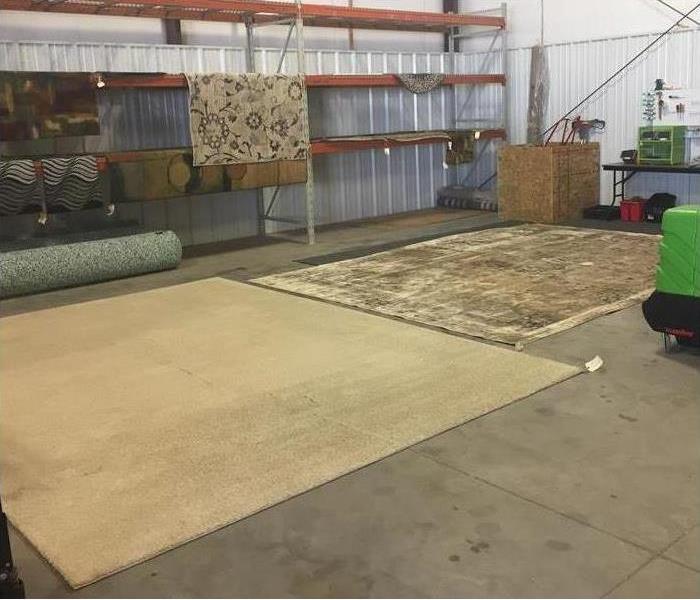 Mold on flooring rugs in Stillwater, OK
Mold on flooring rugs in Stillwater, OK
Mold Growth After a Flood
If your building has been affected by a flood in Stillwater, OK, then you will probably have a lot of damage to deal with afterward. One type of secondary damage that you may notice is mold growth. This is a common problem that occurs after water damage, and the following information may help you handle it properly.
1. Why Does Mold Grow After a Flood?
Flood water can bring bacteria and contaminants, including mold spores, into your building which can contribute to the growth. However, mold will begin to form after any kind of water damage, including that from clean sources. This is because mold lives in most environments, but it needs moisture to grow. Once it has that, it will begin to spread.
2. How Can You Prevent It?
The best thing you can do to prevent the growth of mold is to remove as much moisture from the building as you can. If there is standing water, mold will begin to form within a day or two. Once the water has been removed, dry the building thoroughly. Keeping doors and windows open can help speed up the process. Fans and dehumidifiers are great for this as well.
3. What Do You Do if It Has Already Started Growing?
It is important to dry the building quickly even if mold growth has already formed. However, in this case, the use of items that increase air circulation can end up spreading the fungus throughout the building, so this should be avoided. Protective gear should be worn while the mold is being removed, and the area should be contained to prevent the spores from moving to other areas.
If there is mold growth in your building, you should avoid trying to remove it on your own and instead hire a professional. A cleanup and restoration service can remove the fungus safely and thoroughly without spreading it further. They can also make other necessary repairs to the building as well.
4 Things To Do Before Your Adjuster Arrives
10/18/2019 (Permalink)
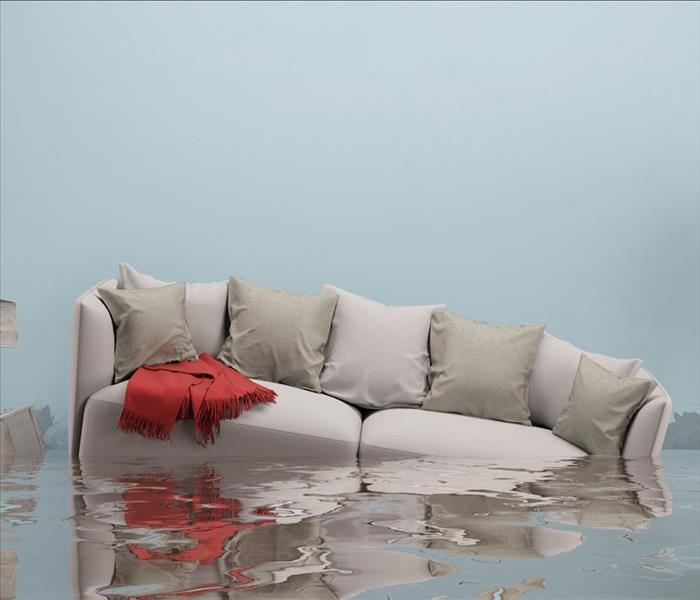 Water damage in a Guthrie, OK home
Water damage in a Guthrie, OK home
4 Things To Do Before Your Adjuster Arrives
When your home floods after a storm in Guthrie, OK, your first call is probably to your insurance company. The company will send a home adjuster to evaluate your claim. Here are four things you can do to make this visit go more smoothly.
1. Call Repair Specialists
Water damage in your home requires professional remediation. By scheduling an assessment of the problem with water restoration experts before your adjuster arrives, you can gather information that substantiates your insurance claim:
- Parts of the structure that need to be repaired or replaced
- Extent of the damage
- Estimated cost of the restoration
2. Document Damage
You don't want to delay the remediation process, but you still need proof of the original damage. Pictures or video taken of your home right after the flood can help your home adjuster in his or her assessment. Keep every damaged item you can so that you have physical proof as well.
3. List Replacement Costs
Every item that is ruined by flooding may need to be replaced. Start a list of these items and jot down their replacement cost. If you have receipts of major purchases to back up your list, that's even better. Gather all your documents in one place so that you are ready to present them to the adjuster upon arrival.
4. Keep a Copy for Your Records
Your adjuster isn't the only person who needs a record of your losses. Make copies of everything before you hand the documents and lists over. The remediation company will likely keep electronic records that are shareable with the insurance company. Make sure you know how to access them as well.
Dealing with a home flood may seem like a huge task, but mitigation professionals and your insurance company are there to assist you. If you complete this checklist before your home adjuster arrives, you can help the process get started smoothly.
3 Tips for Proper Fire Extinguisher Use
10/9/2019 (Permalink)
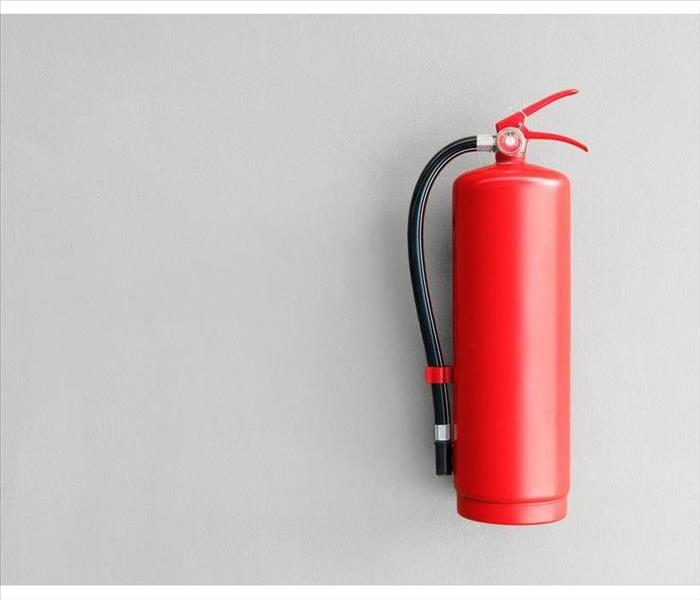 Keeping a fire extinguisher at your Perry, OK, home can be an important step for fire safety
Keeping a fire extinguisher at your Perry, OK, home can be an important step for fire safety
Tips For In Home Extinguisher Use
Keeping a fire extinguisher at your Perry, OK, home can be an important step for fire safety. Many fire restoration professionals recommend following tips for in home extinguisher use.
1. Keep in At Risk Areas
It's recommended to have extinguishers kept in easy to reach locations near at risk areas. Extinguishers are most often used to put out a kitchen fire, but you may also want to have them located in spaces such as a patio where a grill may be located, and in the garage which many people also use as a workshop area. It's also a good idea to ensure that every member of your family knows where these units are located.
2. P.A.S.S
Remember to properly use the fire extinguisher to ensure that the suppressant inside is distributed evenly over the flames, as this is considered to be the most effective method. Experts have come up with the acronym P.A.S.S. help make the usage steps easy to remember. This stands for Pull, Aim, Squeeze, and Sweep. Pull the lock pin or tab, aim the nozzle at the fire, squeeze the trigger, and spray in a sweeping motion. For large fires contact emergency professionals.
3. Replace or Refill
To help prevent future fire damage it's best to have your extinguisher replaced or refilled, according to manufacturer's instructions, as soon as possible after its use. Additionally, if you have not used your unit for an extended length of time you may want to have it checked over to ensure that it is still functioning.
It's important to keep a fire extinguisher an at-risk areas such as the kitchen or garage. Doing so will allow you to have one on hand and the event an emergency should occur. If you do have to use your extinguisher it's important to remember to pull, aim, squeeze, and sweep to help ensure the fire suppressant is spread evenly over the flames. For larger fires you will want to contact the appropriate emergency services. After your extinguisher has been used, remember to refill or replace the unit according to its type.
Top Reasons Why You Can't Ignore Mold
9/26/2019 (Permalink)
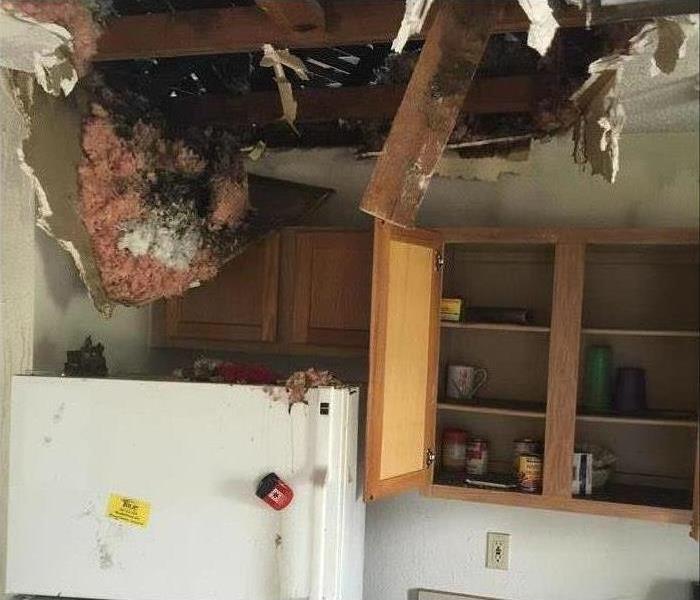 Mold damage on ceiling from a kitchen
Mold damage on ceiling from a kitchen
Top Reasons Why You Can't Ignore Mold
Household mold can be a serious and aggravating situation to handle. No matter how much you wipe and disinfect, the black fuzz seems to come back. Any homeowner could be forgiven for hoping if they ignore it long enough, the mold will just die off. The fact is that mold will not just go away, and without proper removal, black mold can spread through your Navina, OK, dwelling. Here are a few reasons you don’t want to overlook mold in your home.
It Develops Everywhere
Mold spores are all around us in the environment and have the potential to grow just about anywhere. The key to where they take root is moisture and warmth. Warm temperatures, accompanied by a moisture problem, often occur frequently in homes, particularly in:
- Laundry rooms
- Attics
- Bathrooms
- Beneath sinks
It Won’t Go Away
Mold is a living organism, so it’s a natural thought that it will eventually run out of sustenance and die. But that’s not how black mold or any mold works. If mold has water and warmth, it will continue to thrive. What’s more, because this hardy fungus has roots that go beyond the surface, just wiping off what you can see won’t get rid of it for good.
It Destroys Your Surfaces
Mold thrives on the nutrients on surfaces and organic materials like wood, paper and even glue. That includes many of the components that comprise walls, shelves and floors. Given long enough, mold can eat through these surfaces and cause costly damage to your home.
If you have a small area of mold in your home, getting rid of it can be as simple as applying specialized solutions to kill it at the root. For larger or more extensive mold infestations, leave it to qualified, trained and experienced mold remediation personnel. Reach out to a professional mold cleanup company to banish black mold from your home for good.
How To Recognize Category 2 Water Damage
9/26/2019 (Permalink)
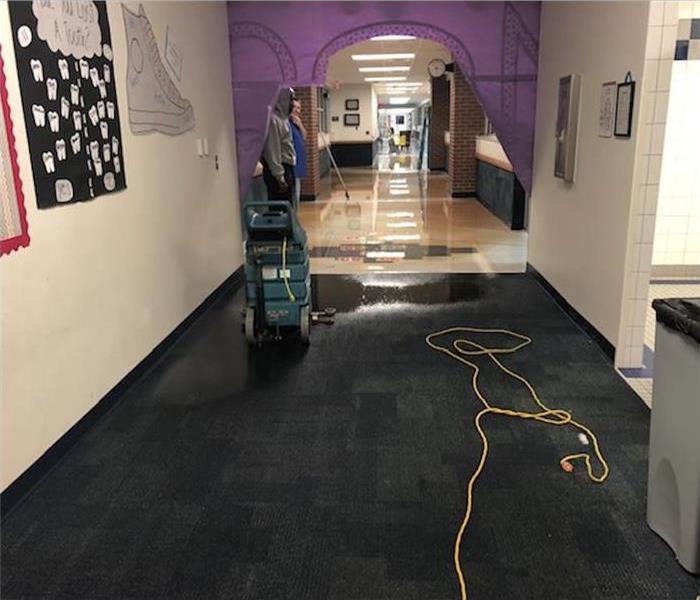 Commercial water damage in Perry, OK
Commercial water damage in Perry, OK
The water cleanup process includes several phases, one of which is disinfecting any contaminated areas. When water damage experts assess the problem in your building in Perry, OK, they must determine the level of the water's contamination. They do this by placing it in the appropriate category. After a water pipe repair, you may have Category 2 damage, even though the water was clean when it came out of the pipe.
Contamination Levels
There are three categories of water damage contamination that experts use to determine the scope of the cleanup process:
- Category 1 - Clean water, usually from a broken pipe or supply line
- Category 2 - Dirty water, usually from an appliance such as a refrigerator
- Category 3 - Contaminated water, usually from sewer lines or storm flooding
If water pipe repair is completed and the subsequent damage is mitigated quickly, the contamination level is likely to stay at a Category 1. The longer water damage sits, however, the more likely it is to move to Category 2 damage as it becomes contaminated by the dirt and the breakdown of materials. Then you have to add a step to the cleanup process to disinfect your building.
Disinfection Process
The longer you take to call cleanup experts, the more likely your flooded building is to have Category 2 damage. When experts arrive, they can test for contamination to determine if they need to add an extra cleaning step. They start by removing materials that can't be salvaged. Then they use industrial cleaners or purification machines to remove any bacteria that have started to grow in the affected area. Only after this disinfection has been completed can your structure be restored to its former state.
Fast action is necessary with any damage to your building. If you need water pipe repair, you probably need water damage remediation. Call your local experts quickly to avoid further damage that can complicate the remediation process.
How To Protect Your Building From a Storm
9/10/2019 (Permalink)
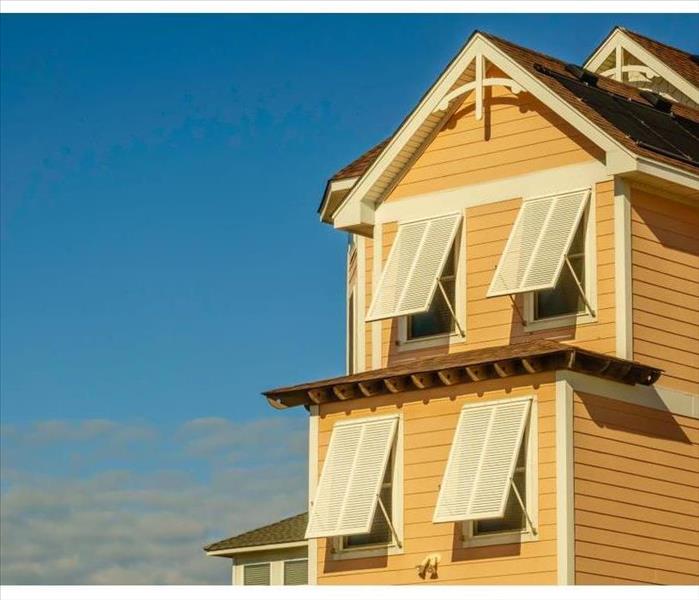 You can purchase special protective shutters
You can purchase special protective shutters
Hurricanes and tornadoes have grown more intense and more frequent in recent years. As a result, preventing storm damage has become a major part of residential facility management.
While you can't stop the storms themselves, you can take steps to protect your buildings. Here are some tips for limiting the destruction of your Ceres, OK, property.
Do Your Research
The best way to get your building ready for a storm is to know what you are up against. The Federal Emergency Management Agency, in particular, has plenty of resources for building owners and managers. FEMA even has special software that can estimate the economic, social and physical consequences of an impending disaster.
Strengthen Your Building
Fortifying windows is an easy way to limit storm damage to property. You can purchase shatter-resistant windows or opt for special protective shutters. A safe room and steel doors are also forms of building protection. You should also pick up any trashcans or loose branches, as the wind could blow theses items into your property.
Plan Ahead
You should create and train a crisis-management team in advance. Team members should practice evacuation drills ahead of the storm. They should also help you prepare a disaster supply kit. You should additionally research emergency restoration services.
Follow the Forecast
After the building is fortified, you need to pay attention to the weather forecast so you can find out exactly when the storm will hit. While you will likely have plenty of time to prepare for a hurricane, you may only get a 15-minute warning when a tornado is heading your way. A battery-operated weather radio, however, can give you the latest updates.
You may also want to sign up for text or email weather alerts from your local television station. Once the hurricane or tornado arrives, stay safe and take solace in the fact that you have done all you can to limit storm damage.
Containment Methods for Mold Remediation
7/24/2019 (Permalink)
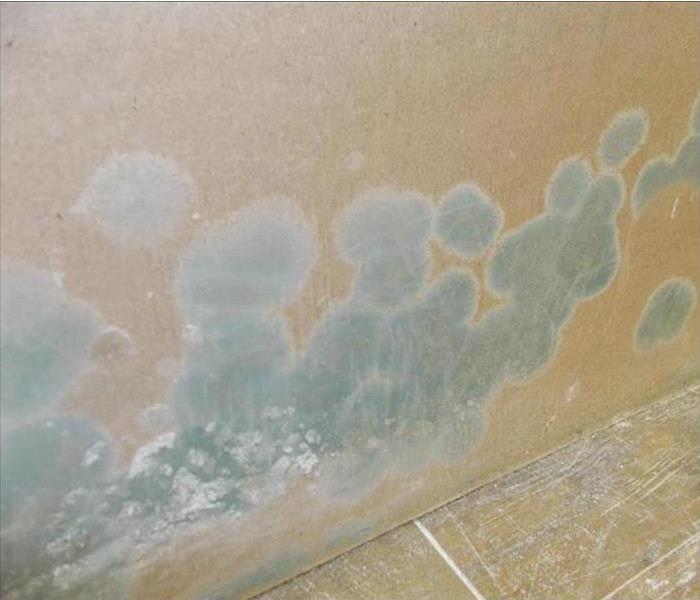 Commercia mold in Guthrie, OK
Commercia mold in Guthrie, OK
Mold Remediation
When you have a mold problem in your commercial building in Guthrie, OK, one of the first calls you should make is to mold remediation specialists. They can take care of mold cleanup in a timely manner. They also have several techniques for containing the affected area so that the mold doesn't spread into other parts of your building.
Sealing
One method used to ensure that your mold problem doesn't grow is sealing off the contaminated section of your building. Mold spores travel through the air, so the goal of sealing is to keep air from escaping. To do so, technicians block any possible air flow through any opening to the room:
Polyethylene sheets are common choices for sealants. They are impervious to air flow and block the area off efficiently and completely. They are used to line the portion of your building that needs to be contained. Once the space is completely sealed, mold cleanup procedures can begin.
Negative Air Chambers
Because technicians will be working in the area, they don't want to completely stop air flow. Creating a negative air chamber allows air to flow into the space with mold contamination while keeping air from flowing back out. Air can be exhausted outside the building to maintain acceptable air pressure. The remediation process often stirs up spores and releases them into the air, so before it starts, the air chamber has to be tested. A smoke test is a good way to verify that the airflow is only going one direction. If no smoke escapes into the rest of the building, the chamber is working, and the remediation process can begin.
If you need mold cleanup services in your commercial building, it's good to know what to expect when the mitigation experts arrive. Consult with the company you hire to find out what containment methods it uses.
Quick Guide to Landlord Responsibilities After a Fire
7/19/2019 (Permalink)
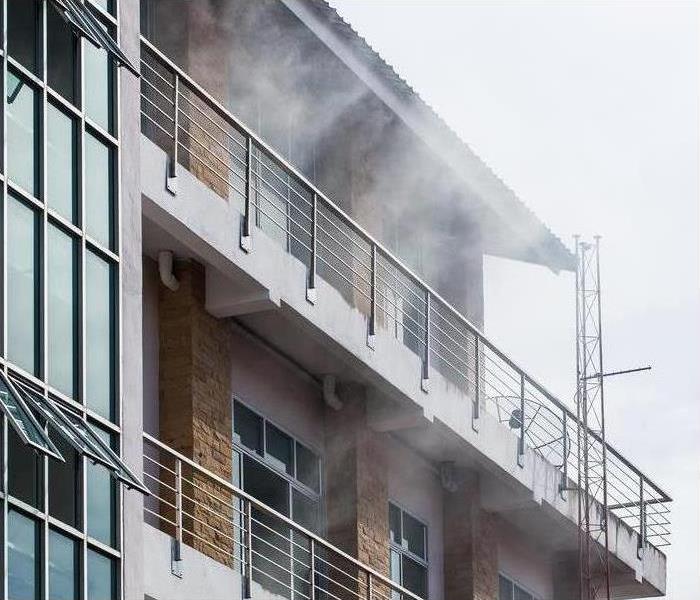 Apartment Fire in Stillwater, OK.
Apartment Fire in Stillwater, OK.
When a fire breaks out on a rental property, it can be hard to figure out who has to pay for the damages. Whether you rent out commercial or living space, the liability after a fire in Stillwater, OK, is pretty straightforward. Your tenants have to cover the damages done to their personal belongings, such as televisions, furniture and paintings. However, you are responsible for most damages done to the building itself. As a building owner, you may be responsible for the following tasks after an apartment fire.
Landlord's Responsabilities After a Fire
- Communicating With Fire Fighters: These first responders can help you assess the safety of your building. You and your tenants will likely want to enter the apartments to get an idea of the damage done. However, you cannot enter the building until it is deemed safe.
- Starting Claims Process: You have to get in touch with your insurance provider to report the apartment fire. Your agent may give you a list of fire restoration professionals that they prefer you use. You may also want to make sure your renter calls his or her insurance provider to start the claims process for personal belongings.
- Documenting Fire Damage: You need to take pictures of the structure, make lists of damaged appliances and record other furnishings you owned that were damaged.
- Securing the Property: You need to secure the property for two reasons. First, you need to protect the safety of those who may want to enter the building, such as your renters. Putting up warning signs may be enough to keep people out until it is safe to enter. Second, you need to keep vandals and thieves out. You may need to board up windows and put up a security fence.
After an apartment fire, you need to take the proper steps to ensure that everyone, including yourself, is safe and fully aware of the damage liabilities. While you aren't responsible for all of the damages, you do have a lot of financial responsibility.
Cleaning Up Your Business Post-Flood: 2 Reasons You Shouldn't Wait
7/19/2019 (Permalink)
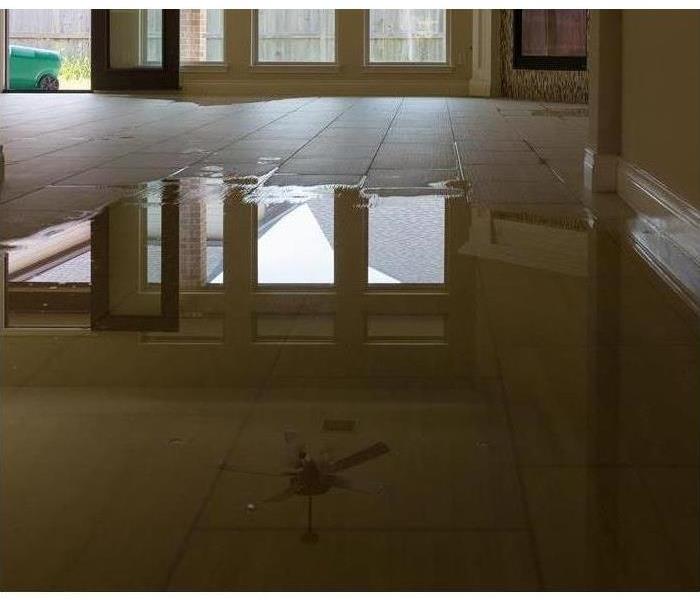 Commercial water damage in Stillwater, OK.
Commercial water damage in Stillwater, OK.
No matter what one does to prepare, unfortunate accidents can occur at anyone’s business in Stillwater, OK. Should a pipe burst, for example, it can cause major flooding throughout the entire building. The business owner, upon discovery, may feel that it is not always necessary to respond right away. After all, the damage has already been done. The building is flooded, and goods have already been damaged or destroyed: What is the point of immediate action? Would it really be harmful to take a few days to come up with a game plan?
It may not seem like a big deal, but it can be imperative that the business owner deal with his or her building’s damages as soon as possible. If one were to procrastinate dealing with the damages to his or her building that resulted from the flooding, there are two major damage concerns of which he or she should be aware.
2 Major Post-Flood Concerns
- Humidity
When a building is flooded, direct damage caused by the water is the obvious primary concern. However, one may overlook the secondary source of damage post-flood: humidity. The humid conditions that are created by the burst pipe can be responsible for making an environment in which mold can grow.
- Mold Growth
If a pipe burst in a building, time is often of the essence when it comes to preventing the growth of mold. Mold can grow when water has been sitting for as few as 24 hours. Many organizations recommend drying the affected building quickly, within 24-48 hours, to prevent the growth of mold. It is generally a good idea to utilize a 24-hour emergency cleanup service to avoid irreparable damage.
If a pipe burst and caused flooding in one’s place of business, he or she should not hesitate when it comes to mold cleanup and prevention. Fast action with a quality cleanup service can prevent massive damage, saving the owner both time and money in the long run.
Are My Pets Included in My Fire Evacuation Plan?
7/17/2019 (Permalink)
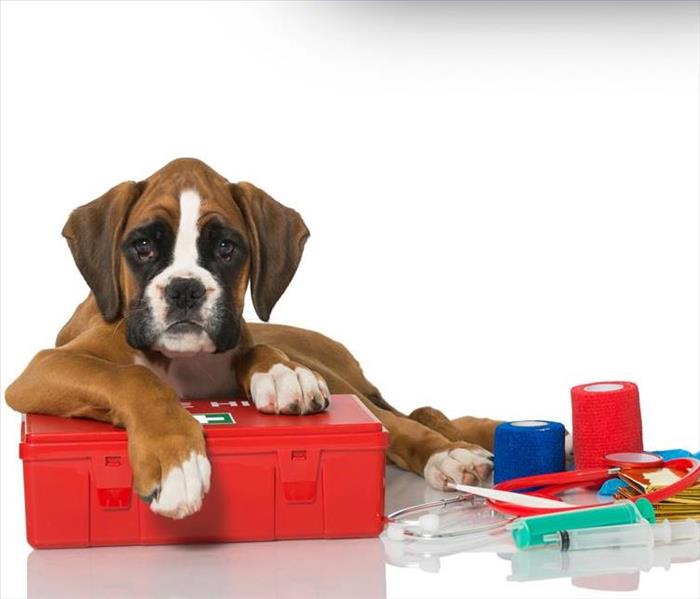 In case of a fire remember to include a 72 hour kit for each pet
In case of a fire remember to include a 72 hour kit for each pet
Are My Pets Included in My Fire Evacuation Plan?
You may have a family evacuation plan set up, but have you considered what you would do with your pets in a fire emergency? Here are some tips for making sure that your pets are taken care of should the unthinkable happen at your home in Perry, OK:
1. Pet Tags and Microchip
One of the most important tips for pet safety is to make sure that your pets are always easily identifiable. In addition to a collar with your pet’s name and your contact information, you can have your pet microchipped. Make sure that pets also wear their rabies tag.
2. Pet Fire Escape Plan
Your pet preparation will be an addition to the family evacuation plan that you should already have in place. Be sure that you know your pet’s hiding places. Have leashes, crates and carriers easily accessible. Pets such as birds, reptiles and rodents will be caged, so plan a way to quickly remove the cage. Place your phone number, pet name and medical needs on these carriers in case you and your pets get separated.
3. Pet Rescue Decal
Many pet stores and animal welfare sites have decals that you can place on a window to alert emergency responders that pets are in your home in the case of a fire emergency. You can write your pet info such as the number of pets and types of pets and an emergency contact phone number. These are usually placed at the front door.
4. Pet Emergency Kit
Keep a pet emergency kit close to an exit. Include your pet’s medical information such as medications and allergies. It is helpful to include blankets, toys, food, water and bowls. Keep it in a waterproof bag and make it light enough to handle in case you have to leave in a hurry.
No one likes thinking about something as devastating as a fire emergency at their home. But having a plan eliminates some of the worry. Once everyone is safely out of the home, a fire cleanup expert can help your family’s life return to normal as soon as possible.
Dealing With Mold in the Home
7/9/2019 (Permalink)
 Ensure household humidity remains below 45% to avoid mold growth
Ensure household humidity remains below 45% to avoid mold growth
Mold growth in Navina, OK, can be a serious problem, particularly after flooding. Therefore, it is important to take proper precautions and address any mold occurrences as quickly as possible.
Causes of Mold
Mold spores are a natural part of our environment and are present almost everywhere. These invisible particles are generally harmless; however, when they make contact with a water source, the mold can grow quickly and take over large areas. This is when mold becomes problematic. The following are common causes of mold in homes:
- Flooding
- Roof leaks
- High humidity
- Plumbing leaks
- Damp bathrooms
Preventing Mold
Mold growth can spread very quickly, so it is important to address any potential problems before they become serious. Ensure household humidity remains below 45%. Certain high-humidity areas, such as bathrooms, may need frequent “airing out.” In these rooms, open a door or window and turn on a fan if needed. Repair leaks and clean up standing water quickly. Tend to water damage from flooding as soon as possible.
Mold Remediation Process
Because mold is present everywhere, complete mold removal is not possible. Mold remediation, however, is a process that removes excessive mold. Water helps mold to grow, so the first step of mold remediation is to address the water source. Next, both the mold on surfaces and spores in the air must be contained. When possible, antifungal and antimicrobial solutions are then used to kill the mold. In serious cases, drywall, carpeting, and some household objects may have to be replaced.
Odor Removal
Mold emits a characteristically musty odor, which can linger if not addressed. Fortunately, there are several ways to eliminate odors associated with mold. In addition to traditional air purifiers, professionals can also utilize ozone treatments and thermal fogging to remove stubborn smells.
Although minor mold growth can generally be taken care of by the homeowner, more serious damage may require the help of mold remediation professionals. In either case, it is important to take care of the problem as quickly as possible to prevent further difficulties.
Don't DIY Tarp Services After a Fire
6/26/2019 (Permalink)
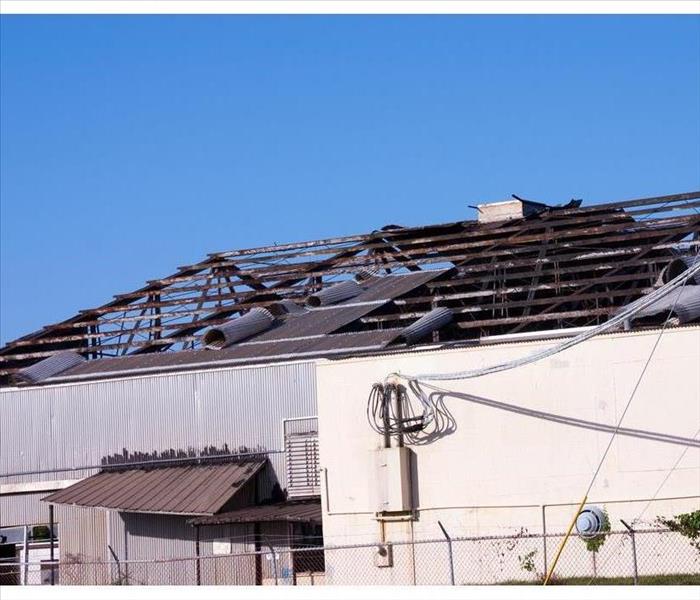 Roof damaged by fire in a commercial building in Ceres, OK
Roof damaged by fire in a commercial building in Ceres, OK
Fire Cleanup Efforts
Whether the wind has blown a swath of shingles from your roof or a fire has left a gaping hole all the way to the attic, one of the first steps in fire cleanup efforts should be installing a tarp on the roof. With the protection of roofing materials gone, your business may be exposed to rain, wind, and debris. Animals and other trespassers may gain access to the attic. Before you climb up to fix a tarp yourself, consider the following safety information:
- Never get onto your roof during a lightning storm.
- Steep roofing surfaces require specialized harness systems.
- Falls from the roof account for 30 percent of construction accidents and up to 75 percent of fatalities.
Other risks of working on the roof include electrocution and tool-related injuries.
You could face trouble from your business insurance because of taking risks by going onto your roof.
Fortunately, you don't have to face those risks. Fire remediation and restoration professionals often offer tarp services within a very short time frame and can complete any following roof repair work quickly.
Turn Repairs Over to Professionals
When these fire cleanup professionals arrive, they may bring supplies such as polyethylene sheeting to use as a tarp, long lengths of wood to fasten edges of the tarp, duct tape, screws, tools, and safety equipment. However, the amount of training these professionals have is even more important than any of these tools. As they install the tarp, they'll take steps to ensure protection from water, dirt, and most animal intruders.
Complete Other Tasks
In addition to staying off your roof, protect your well-being and that of your employees and customers by staying out of the property until you have permission from the appropriate officials. Instead of trying to complete repairs, consider making phone calls to your insurance provider, business partners, and any public safety officials, as necessary.
Fire cleanup steps involve a lot of risks. When your Ceres, OK, company faces fire-related damages, turn the repairs over to experienced crews and devote your attention to other necessary tasks.
Water Damage and Your Wood Floor
6/18/2019 (Permalink)
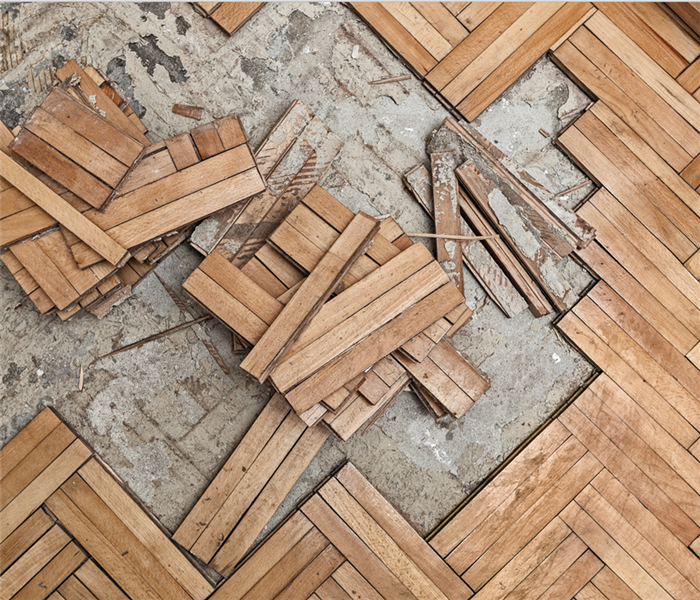 Recognize the signs of damage to wood flooring
Recognize the signs of damage to wood flooring
Several Problems to Expect from a Wet Floor
A wood floor throughout your property has an enormous amount of visual appeal and brings an elegance to properties that is hard to match with any other flooring materials. Unfortunately, it is also susceptible to a lot of damage when moisture is introduced through a pipe burst or toilet overflow. Even the small amount from a spilled cup of water can cause damage. There are several problems to expect from a wet floor:
- Cupping happens when the edges of wood planks expand, and the middles of the planks remain the same. This may be caused by seasonal humidity and water absorption.
- Cracks may appear between wood planks in the floor. These gaps are often caused by high humidity levels in the room.
- Buckling is the result of a lot of water on the floor. The middle of the plank grows, and the edges remain the same.
These damages may all become present when water is left on the floor or seeps under wood planks.
Contact Water Damage Experts
In the event of significant flooding, such as that of a pipe burst, your best strategy is to contact water remediation and restoration professionals. While waiting for those Ceres, OK, technicians to arrive, there are some steps you can do to minimize the damage.
Increase Airflow
Start by increasing ventilation to the area; open up doors and windows for increased airflow. Next, remove water as quickly as possible. Be careful to remove mud, silt, and other debris carefully to avoid scratching the surface of the wood floor.
Maintain a Consistent, Dry Environment
When professionals have said that it's safe to turn the power on, use heaters or air conditioners to maintain a temperature between 75 and 80 degrees. You may have noticed cupping, gaps, or buckling. These problems should be resolved through technicians' and your efforts. Sometimes, the signs of water damage will disappear as the wood dries completely.
Act immediately to resolve the flooding from a pipe burst situation. Recognize the signs of damage to wood flooring, and while waiting for technicians to arrive, reduce damages by taking quick action.
How To Prevent Water Damage at Home When You’re Away on Vacation
6/12/2019 (Permalink)
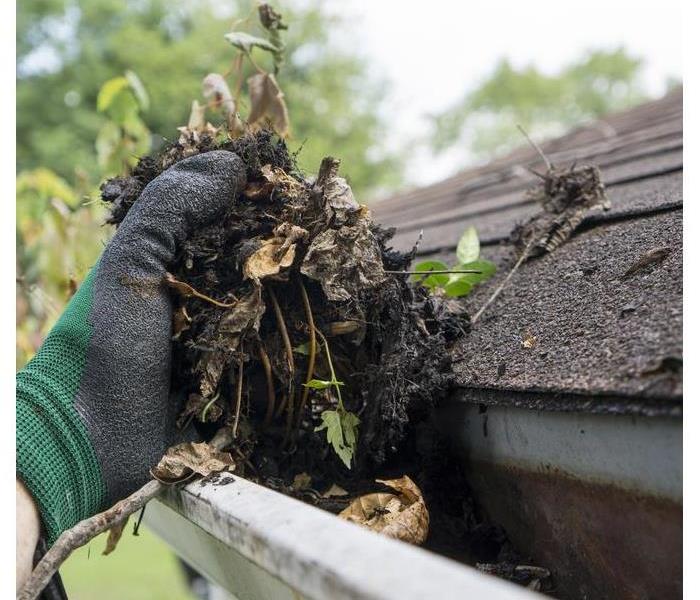 Cleaning out leaves from your gutters allows rain to flow freely and can decrease the chance of water damage
Cleaning out leaves from your gutters allows rain to flow freely and can decrease the chance of water damage
How to Prevent Water Damage in Your Home, While You're on Vacation
Going on vacation should be an enjoyable experience, but worrying about a water pipe repair or a leaking appliance in your home can make it difficult to relax. However, there are steps you can take to prevent water damage in your home in Sumner, OK, while you’re on vacation.
1. Prepare Before You Leave
There are several steps you can take before leaving to decrease the likelihood of coming back to a flooded home. Cleaning out leaves and twigs from your gutters allows rain to flow freely and can decrease the chance of water damage. Additionally, you can spot a minor issue and react appropriately if you examine the appliances in your home that use water prior to leaving.
2. Ask a Friend To Monitor Your Home
Even if you prepare your home, water damage often occurs without warning, and the longer it goes unnoticed, the more damage that your home will likely sustain. However, a friend monitoring your home can quickly alert you if your home needs a water pipe repair or if an appliance is leaking. Once you are alerted, you can contact emergency restoration services who can help to ensure that the issue is resolved quickly.
3. Turn Off the Water If Necessary
If you can’t find a friend to check up on your house while you’re away, it can be helpful to turn off the water in your home. If you are going on vacating and know the temperature outside may dip below freezing, it can be useful to keep the heat running and to open the cabinet doors to minimize the risk of a broken pipe. By turning off the water, you can greatly reduce the chance of your home sustaining water damage.
The last thing you want to think about while on vacation is a water pipe repair or a flood in your home. Preparing your home before you leave, having a friend monitor your home and turning off the water if needed can help to keep your home free of water damage while you’re away.
The Connection Between Water Damage and Mold Growth in Homes
5/29/2019 (Permalink)
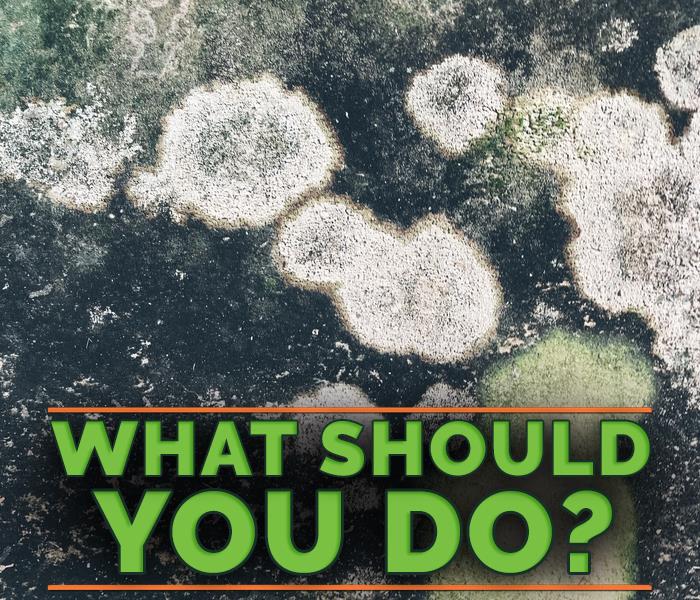 Water problems often contribute to the growth of mold in homes.
Water problems often contribute to the growth of mold in homes.
Mold can cause major damage to homes in Perry, OK and protecting your home from this type of damage is often important. When thinking about mold prevention, it can be helpful for homeowners to understand how water affects mold.
What Are Common Water Issues in Homes?
Water problems often contribute to the growth of mold in homes. There are a variety of water problems that often occur in homes, including:
- Pipe leaks or breaks
- Leaky broken or damaged appliances
- Roof leaks
- Flooding caused by an overflowing toilet
- High levels of humidity in bathrooms, attics or basements
Why Does Water Help Mold Grow?
Though some types of mold can grow in dry environments, many common types of mold need moisture in order to grow and spread. In addition to requiring water, most molds also need access to some sort of organic material in order to grow in an environment. Since homes are generally filled with organic materials that can provide mold with the nutrients and fuel it needs to thrive, only a small amount of moisture is needed for mold to grow.
How Can You Prevent Mold Growth?
There are several ways you can prevent mold from appearing in your home, and since mold prevention is often less costly and not nearly as time-consuming as mold remediation, it’s often best to focus on prevention. If your home has sustained water damage, quickly removing the water and employing water and mold damage specialists can be useful. Whether your home has or has not experienced flooding, it can be wise to inspect your home frequently. Keeping your home dry and clean, especially in areas where mold is likely to grow, can also help to discourage mold from growing in your home.
Mold commonly occurs in homes after a flood, leak or a moisture problem. Knowing water’s role in mold growth can allow you to practice efficient mold prevention methods in your home.
How To Stay Safer in a Lightning Storm
5/17/2019 (Permalink)
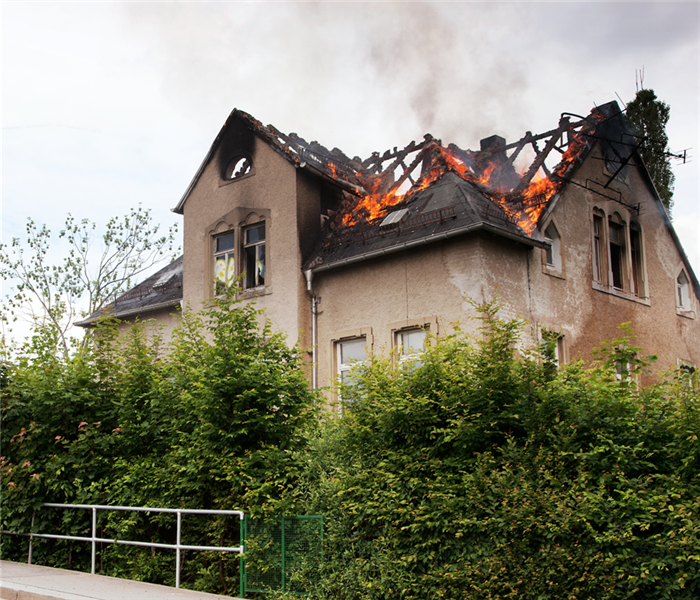 House fire in Guthrie, OK
House fire in Guthrie, OK
Each year, firemen are called to thousands of lightning-started fires, many of those being in homes. A house fire started by a strike can be very dangerous. Flames occur at the point of contact, but because a bolt is pure electricity, it may also send an intense current along wiring or plumbing in the home causing additional fires, or causing electrical burns to those in the vicinity.
Five Tips for Staying Safer
Because lightning strikes randomly there is no way to predict a strike, but you can take steps to stay safer and learn what to do in case of a fire in your home.
1. Strikes can travel more than three miles from a storm cell – if you can hear thunder you are close enough for a strike - even up to 30 minutes after the last thunder is heard.
2. Your body can be an antenna, so stay indoors during a storm. Avoid metal sheds, barns or carports in favor of large, grounded structures. Do not sit on porches, near windows or in doorways.
3. If needed, get in a vehicle with hard top and sides. Never shelter under trees – that is the second leading cause of lightning fire casualties.
4. Avoid using computers or corded phones. Unplug the TV, computers, and major appliances to prevent electrical surge damage.
5. Wait to bathe, shower, or do laundry until the storm passes. Water can conduct electricity, so don’t do dishes or wash your hands during a thunderstorm.
In the event a person gets hit, it is critical to get help quickly, so call 911 immediately. If your home is struck and you suddenly find yourself in a house fire, avoid touching electrical and plumbing and get everyone out as quickly as possible. Get to safe shelter, then call for help.
Once things are under control, you may wish to call the local fire restoration technicians in Guthrie, OK, to help with lightning fire cleanup. They may be able to take the sting out of a difficult situation and help get your home back to normal.
Board Up Services in Stillwater, OK
5/4/2019 (Permalink)
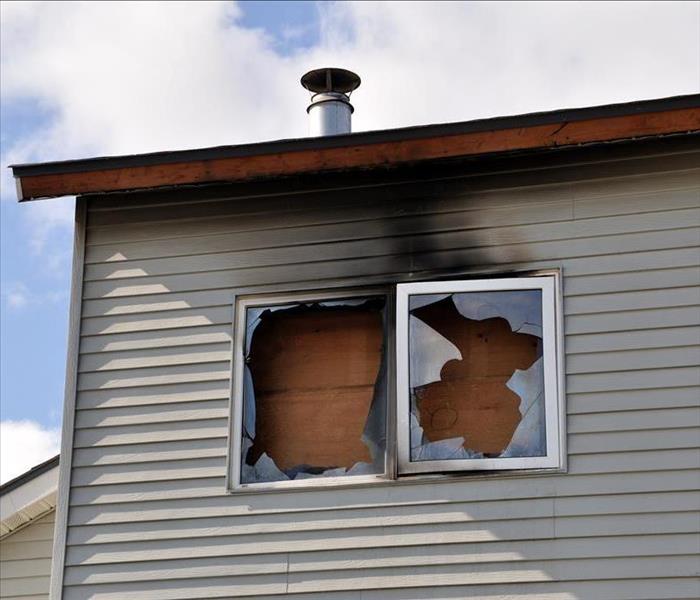 Board Up your home after a Fire Damage to protect your home from theft and vandalism.
Board Up your home after a Fire Damage to protect your home from theft and vandalism.
Board Up Services
After a fire, there may be some gaping holes in your home. Firefighters use certain techniques to battle a fire and one of them is to break windows to vent the home of smoke.
Unfortunately, there are those in our community who would take advantage of those openings and use them to loot your home. A looting claim would be considered a second claim in most cases and still counts against your home policy.
SERVPRO of Stillwater / Guthrie can board up your home after a fire to keep it secure. We understand that there are a lot of decisions that need to be made between you and your insurance company. One of those decisions shouldn’t be a secondary claim due to theft and vandalism.
Natural Disaster Preparation
4/26/2019 (Permalink)
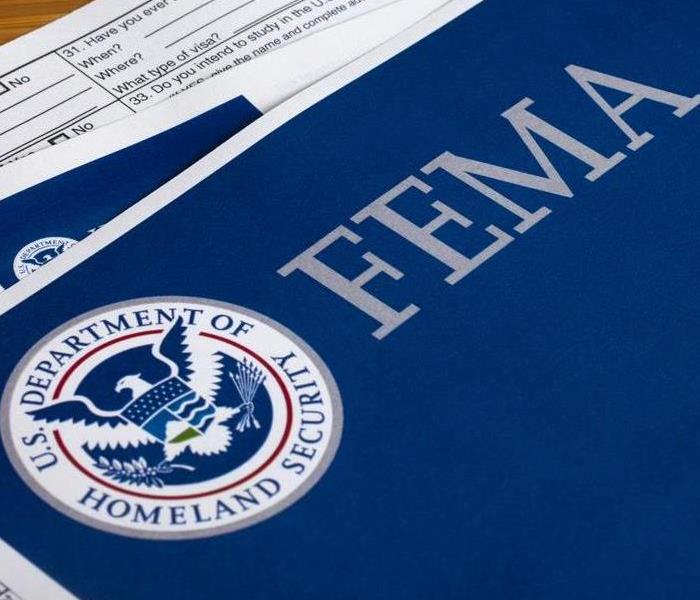 After a flood, the Federal Emergency Management Agency will send its own inspectors and assessors to the affected locations.
After a flood, the Federal Emergency Management Agency will send its own inspectors and assessors to the affected locations.
Many homeowners in Guthrie, OK understand that federal agencies such as FEMA exist to help citizens get their lives back on track after a devastating natural disaster. Consider the following extra details about their disbursal process.
1. Initial Stages
After a flood, the Federal Emergency Management Agency will send its own inspectors and assessors to the affected locations. This is because the government needs to create and maintain its own independent record of the damages to apportion limited aid funds based on need. These inspectors will look at individual homes and businesses to determine habitability and what materials and belongings can be salvaged. If the damage is moderate, a qualified local cleanup company may be more appropriate than a total rebuild.
2. Ownership
At this stage, the FEMA staff will likely ask the homeowners (if present) to verify possession of the home. This can be done with a physical deed or a request for public records from a courthouse in your municipality. Without proof of ownership, the distribution of federal aid becomes much more difficult. For the same reason, the prudent homeowner should keep vehicle titles and an inventory of home valuables in a secure location. If you need to evacuate, take these crucial legal documents with you to ensure they remain intact.
3. Insurance
The FEMA agent does not serve the same role as an insurance adjuster. The claim on your homeowner’s policy that you purchased as a private citizen will need to be verified by your specific insurance company. After the flooding has subsided and there is no immediate danger, an adjuster will arrive to assess your claim and take an inventory of damages. If you need to resolve a dispute with your agent, third-party public adjusters are also available.
Remember, the FEMA staff are there to help. Understand their response procedures so that you can quickly respond after a disaster in your area.
The Importance of Choosing the Right Commercial Water Damage Restoration Company
4/19/2019 (Permalink)
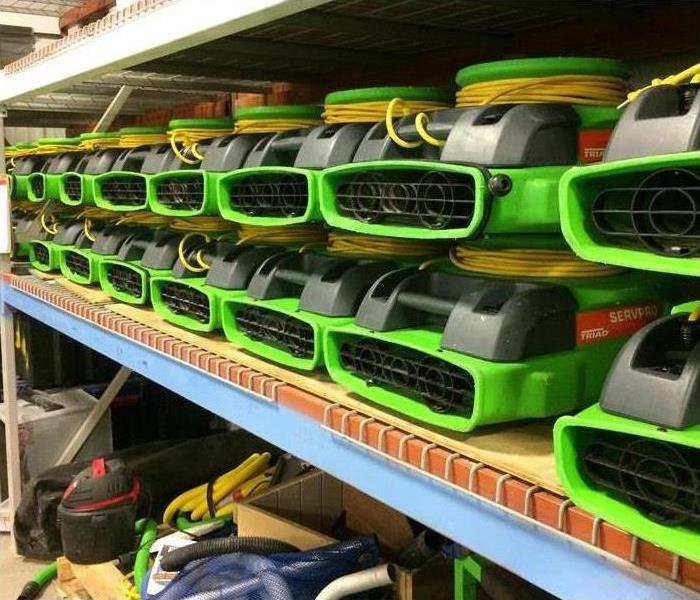 Having the right help to assist with a pipe burst cleanup can benefit a business.
Having the right help to assist with a pipe burst cleanup can benefit a business.
Water damage affects many businesses in Stillwater, OK and picking out a company to help with restoration can be overwhelming. However, there are various ways an efficient commercial water damage restoration business can make the process of a pipe burst cleanup easier.
1. Save Affected Items
Often, there are a multitude of items that are impacted after flooding occurs in a business. Everything from building materials to electronics can sustain damage. Although some restoration companies may only specialize in removing the water present in the building, it can be helpful to employ a restoration business that has the ability to restore various items.
2. Decrease the Cost of Claims and Save Time
When water damage experts are able to restore items instead of replacing them, the cost of your insurance claim is likely to decrease since restoration is generally less costly than replacement. Additionally, commercial water damage restoration experts are likely to know what practices and methods are most effective when it comes to pipe burst cleanup and mitigating the effects of flooding. By using the most current practices, professionals will be more likely to complete the restoration process in a timely manner.
3. Avoid Secondary Damage
Unfortunately, secondary damage such as mold growth is a common occurrence after a flood is caused by a broken pipe or a broken appliance. However, the right restoration company can help to prevent issues such as mold growth if water is quickly removed and the area is kept dry. Additionally, a sewer cleanup company can help to remove black water, water contaminated with hazardous materials, safely and quickly, which can help to prevent additional issues from occurring.
Having the right help to assist with a pipe burst cleanup can benefit a business. An experienced commercial water damage restoration company can help to save damaged items, decrease the overall cost of claims and save time and help to avoid secondary damage.
Indoor Environmental Specialists Play a Role in Controlling Mold You Can't See
4/14/2019 (Permalink)
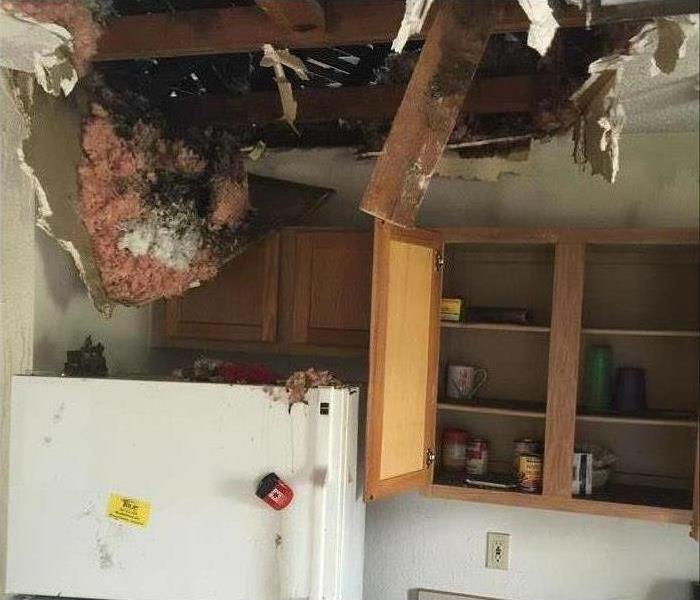 As a property owner or manager, concern over mold growth may one of your top priorities.
As a property owner or manager, concern over mold growth may one of your top priorities.
As a property owner or manager, concern over mold growth may one of your top priorities. Any dark, humid space with a suitable organic substance can provide the ideal breeding ground for this intruder. Unfortunately, those organic substances are plentiful in the walls, ceilings, and floors of any property. One common problem for commercial property owners is that mold can become a problem before there's any visible proof of its existence. This is where an indoor environmental specialist comes in.
What These Professionals Do
According to the Institute of Inspection, Cleaning, and Restoration Certification and other national and international professional agencies, the work of an indoor environmental professional includes the following:
- Assessing fungal ecologies on the property, including systems and contents
- Creating sampling strategies
- Sampling the indoor environment
- Interpreting data
- Determining the course of corrective action
Many states have initiated standards and exams that professionals must adhere to before they can claim the title of an indoor environmental specialist. This move helps property managers feel confident in the work of the technicians.
A Hidden Threat to Your Properties
The unfortunate truth is that by the time you see visible evidence of mold growth, the problem could be widespread. Don't wait to see those black spots or to smell unpleasant odors before scheduling a mold test. Professionals in Perry, OK should visit your properties annually, at least, to make sure your properties aren't hosting unwanted colonies of mold and mildew.
A Combination of Understanding and Professional Efforts
The more you know about mold, the better you can control the environmental factors that support its growth. As you learn more about the conditions that spread spores and cause mold to thrive, you can take any necessary steps to prevent further trouble. An indoor environmental specialist is a key player in these actions. Schedule routine inspections and be sure to carry out the strategies that professionals recommend for the protection of your Perry, OK properties.
3 Reasons to Choose SERVPRO
3/26/2019 (Permalink)
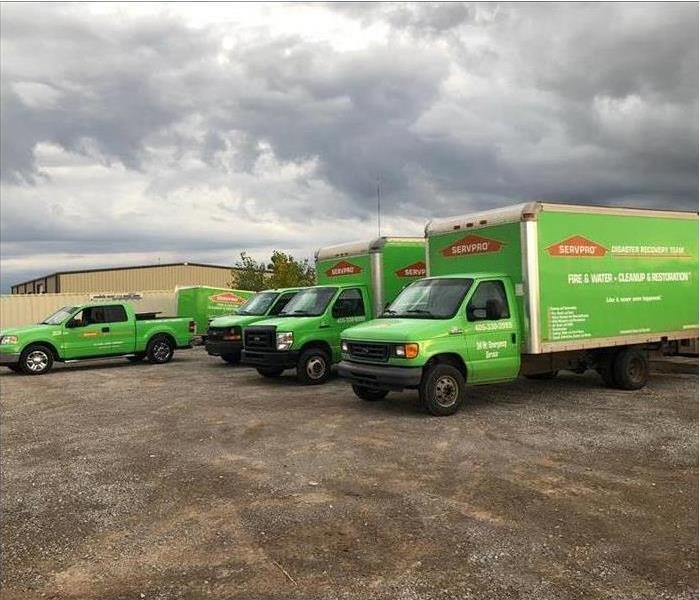 SERVPRO is a trusted preferred vendor for many insurance companies.
SERVPRO is a trusted preferred vendor for many insurance companies.
3 Reasons To Choose SERVPRO
As an insurance adjuster in Stillwater, OK when the client makes a restoration claim you may want to feel confident about the professional restoration service chosen to do the job. SERVPRO is a trusted preferred vendor for many insurance companies. There are a number of reasons for this.
SERVPRO Offers a Variety of Services
As a preferred vendor, this company can offer a variety of services for both the client and their insurance company. These include
- The ability to deal with large-scale disasters
- The ability to work with a variety damage types
- Pre-testing which may reduce claim expenses
- Availability to electronic claims information
- An inventory service
- Cleaning of both structure and damaged items
They Have a Quick Response Time
One important aspect of restoration company can offer both the client and the insurance adjuster, is a quick response time. In many cases the faster damage can be cleaned up and restored, especially with water damage, the less overall problems the structure may incur. This can be especially problematic with issues caused by water which can lead to potential problems with mold. Thus the ability to assess, process, and begin the restoration process quickly can be a valuable asset.
They Can Coordinate With Your Insurance
Another valuable tool a preferred provider can offer to the agent processing the insurance claim is the ability to work with the insurance company throughout the process. In many cases this may involve regular project progress reports, along with an online database of damaged inventory, referrals, estimates, paperwork, and photos of the damaged structure, along with other necessary details the agent may need.
These offerings maybe important to your client, and as an insurance adjuster may also make your ability to process the claim easier. Along with a variety of services SERVPRO can offer a quick emergency response time for many disaster types, and a number of tools that make it possible to coordinate with the insurance throughout the process. If you have any questions professional might be able to help.
The Importance of Water Damage Mitigation
3/8/2019 (Permalink)
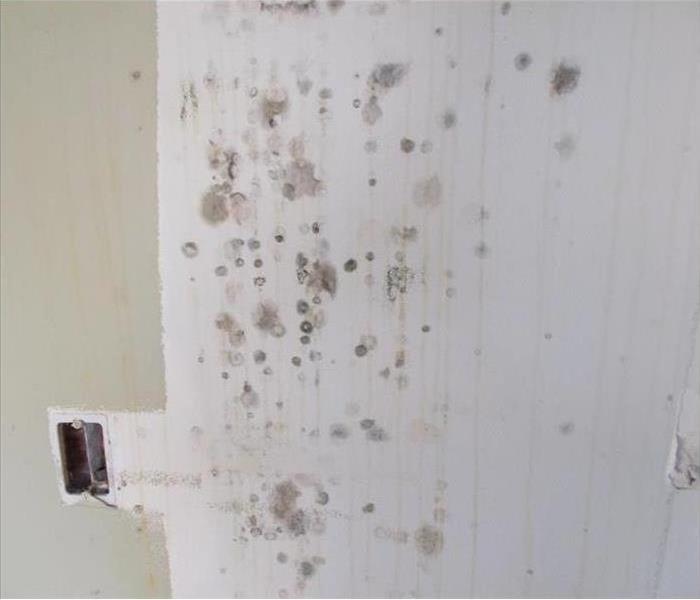 Excessive amounts of water can quickly lead to the growth of mold.
Excessive amounts of water can quickly lead to the growth of mold.
The Importance Of Water Damage Mitigation
Are you concerned about the potential growth of destructive mold at your Perry, OK home? If you frequently suffer from water-related problems and emergencies in your house, your concerns are understandable. Excessive amounts of water can quickly lead to the growth of mold in many cases - because of this fact, water damage prevention is the best method of mold prevention for most homeowners.
Halting Household Mold Growth
There are a few important steps to take in order to stop mold in its tracks when moisture damage exists or is imminent. Consider following them in this order for the best results:
- Turn off sources of water, particularly near the source of a moisture problem
- Turn off air conditioners and other HVAC systems
- Turn off any fans around the house
- Seek professional mitigation assistance for the damage
While you should always quickly follow the first three steps in a water emergency - especially if black mold is already present - the fourth and final step is typically the most essential for effective mold prevention. Even if there does not seem to be any physical mold present, any wetness that is allowed to sit around for long will likely lead to black mold. The faster you call in mitigation help, the better your chances of saving your property from mold and possibly even avoiding a destructive water situation altogether.
Calling in Professional Help
Your best bet for efficient, high-quality service and mold prevention is to contact a local Perry, OK 24/7 emergency mold remediation service that employs highly trained technicians who understand mold and water damage issues that can affect your home and belongings. A full-service company is better equipped to handle the many facets of your emergency than a more focused one would typically be, giving you a better chance of seeing full or near-full restoration of your property.
Differences Between Grey and Black Water
2/25/2019 (Permalink)
 Black water in Stillwater, OK
Black water in Stillwater, OK
What Type of Water Has Appeared After a Flood in Your Home?
The level of concern you should feel after a flood inside your home depends on what type of water has appeared. There is white water, which is plain, clean water with little to no contaminants. You should be able to tell when water is contaminated based on the color and odor, and you should never attempt a DIY fix without professional guidance. Contact professionals in Stillwater, OK who know how to safely handle water damage caused by grey or black water.
Grey Water
Grey water refers to liquids that come out from pipes and other structures that does not contain human waste. This water may contain:
- Fats
- Oils
- Soap particles
- Hair
While this does result in a certain amount of contamination, it is not as severe as it could be, and there is less of a risk of people in the vicinity suffering from health problems caused by exposure. If your household uses natural, biodegradable soaps free or boron, chlorine and sodium, then you will have even less to fear. However, if left untreated, this type of water can slowly grow worse.
Black Water
Water damage from black water is a severe problem that needs to be addressed immediately. When flooding occurs due to a blockage in the sewer system, drains in your house will bring up water contaminated by fecal matter and pathogens. A professional team will need to be brought in to safely remove the waste and the affected drywall.
When you discover water backing up into your home, you need to take prompt action to handle it right away to curtail a disaster. If you cannot tell where the water came from or if it has darkened in color even in the slightest, then you should avoid touching it, because you could end up hurting yourself. Instead, leave water damage remediation in Stillwater, OK to the professionals.
Visit http://www.SERVPROstillwaterguthrie.com for more information on storm damage.
What Is Black Water?
2/25/2019 (Permalink)
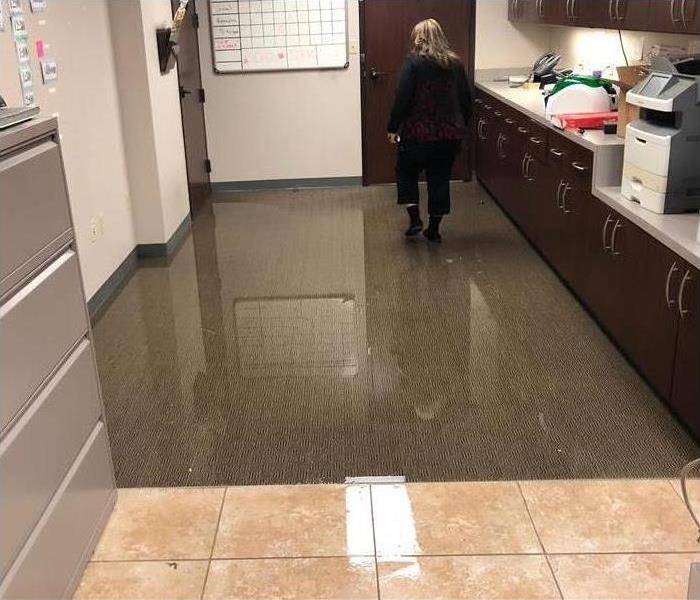 Commercial water damage restoration in Stillwater, OK
Commercial water damage restoration in Stillwater, OK
What Is Black Water?
Commercial building owners in Stillwater, OK who have recently experienced a flood might have water remaining on the premises that’s black in color and looks anything but safe to drink. This type of water is known as black water, and not only can it lead to water damage if left unattended, it’s also often highly contaminated. Learn a couple of facts about this brackish water and the many dangers it poses to you, your building and your employees or residents.
1. The Hard Truth
Rather than beat around the bush when it comes to sharing the truth about contaminated water, it’s best to be straightforward. Water from flooding is essentially wastewater, which means it carries a high number of harmful pathogens, bacteria and the like. Gray water is a specific type of water that comes from sources other than the toilet, such as washing clothes, dishes, bathing and showering. No matter whether you have gray or black water, you can likely smell it and need to take care of it as quickly and efficiently as possible to prevent further water damage.
2. Addressing Water Leftover From Flooding
Thankfully, you don’t have to put yourself or anyone else at unnecessary risk when it comes to dealing with contaminated flood water. Professional services are available that know how to mitigate further damage to your building and better ensure that neither you nor your employees or building residents are in any needless harm. There are still a few steps you’ll want to take on your own before professionals arrive to keep damage to a minimum.
One of the first things to do is to limit your contact with flood water and water that even looks as though it might be contaminated. It’s also best that you wash your hands before eating or drinking anything, even if you didn’t come in direct contact with flood water. If there are children around, see to it that they do not play in brackish water. Anyone who has cuts, scratches or open wounds should take extra care when around potentially contaminated water.
Black water from a flood isn’t something to mess around with. Take preventative action to prevent water damage and risks to your health. Visit http://www.SERVPROstillwaterguthrie.comfor more information on water damage.
Why SERVPRO: Disaster Claims and Vendors
2/20/2019 (Permalink)
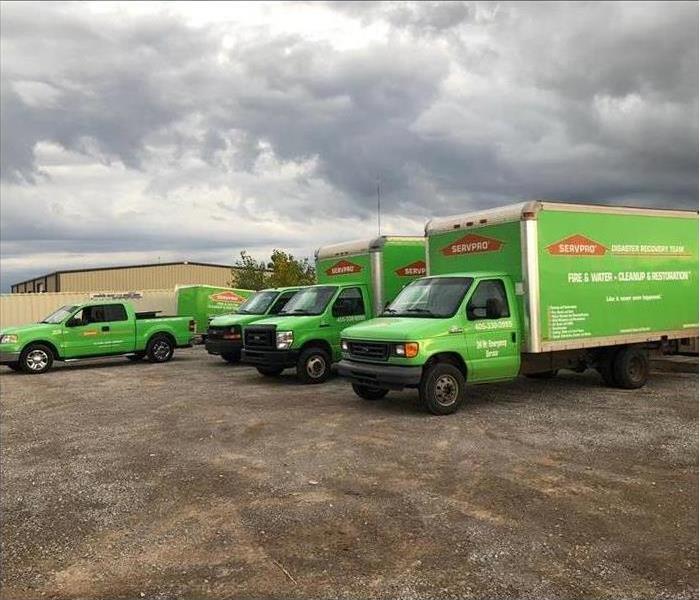 SERVPRO of Stillwater and Guthrie is Faster to Any Size Disaster
SERVPRO of Stillwater and Guthrie is Faster to Any Size Disaster
Why SERVPRO?
As an insurance agent in the Guthrie, OK, area, you want to help your clients find the best restoration company when disaster strikes. With the number of companies in the field, it can be difficult to make just one suggestion, but the answer is simplified when you consider reputation and certification. SERVPRO is an industry leader in restoration and for a variety of reasons, but the top four are likely dependability, training, vendor compliance and their claims assistance services.
1. Dependability
With some of the fastest response times and 24/7 emergency services, they are Faster to Any Size Disaster. Your clients will be able to have their property correctly mitigated within a few days, depending on the severity of the disaster, meaning that you and your client can accurately identify damage and loss.
2. Training
As an insurance agent, you understand the importance of training. All of SERVPRO’s technicians are trained and certified through the IICRC – the industry standard in mitigation and restoration practices.
3. Vendor Compliance
Additionally, all vendors used must adhere to the standards of the vendor program. This expectation of compliance and professionalism means that you can trust that your clients and their homes are only being cared for by approved contractors, meaning reduced risk of project continuity issues.
4. Claims Assistance
Beyond the client benefits, you will experience high levels of claims assistance through the Claims Information Center and the Managed Dashboard. These programs make it easy for you to manage current claims and their progress all from the comfort of your computer. If a client calls to request an update, it’s as easy as logging onto the system and checking your dashboard.
An insurance agent serves a pivotal role in the disaster remediation process. It is up to you to make sure that claims are accurate, and projects are on track. This pressure can be significantly reduced by finding an experienced and certified restoration firm to assist both you and your client through the process.
How To Know If There Is Mold on Your Property
2/20/2019 (Permalink)
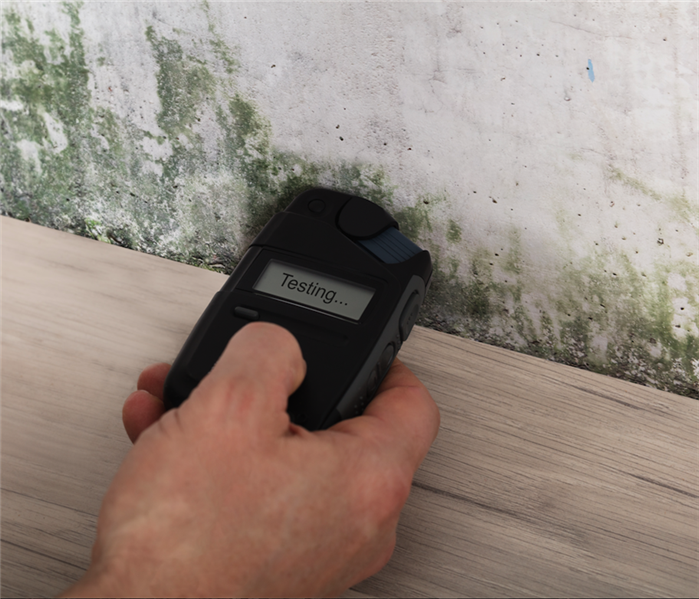 Mold testing in a Stillwater, OK home
Mold testing in a Stillwater, OK home
How To Know If There Is Mold on Your Property
Mold is extremely dangerous. If there are adequate conditions around your building, then mold can develop in just 24 to 48 hours. The only way to be positive one way or the other is to hire an indoor environmental specialist in Stillwater, OK, to test the surroundings for the fungi. A professional mold test is the only way to know for certain whether there is mold growth. However, you may be able to tell for yourself.
1. Signs To Look For Yourself
You may be able to see mold develop with your own eyes. You may see small green or brown blotches in a certain room. Most property owners chalk this up to being dirt, but you should take action just in case it ends up being mold.
You need to be particularly wary if these blotches are accompanied by a strong, musty odor. This odor will most likely upset your sinuses and respiratory functions.
2. Signs a Professional Will Look Out For
Calling an indoor environmental specialist will be your best bet for addressing mold in a timely manner. While most property owners are concerned about the cost of hiring a professional, it is much better to pursue this route than potentially spend a lot more in the long run because the mold grew even more. The overall cost will depend on the size of the property because the specialist will need to test every single area.
Tell your professional if there was water damage recently. Mold typically grows in rooms where there has been a leak. However, flooding from the rain or even excessive condensation can exacerbate a mold problem.
Fortunately, you can know exactly how much you will need to spend after a free consultation with your indoor environmental specialist. You will receive an itemized list, so you can plan accordingly and keep your commercial building in excellent condition.
For more information, visit http://www.SERVPROstillwaterguthrie.com.
How To Remove Odors After a Flood
2/20/2019 (Permalink)
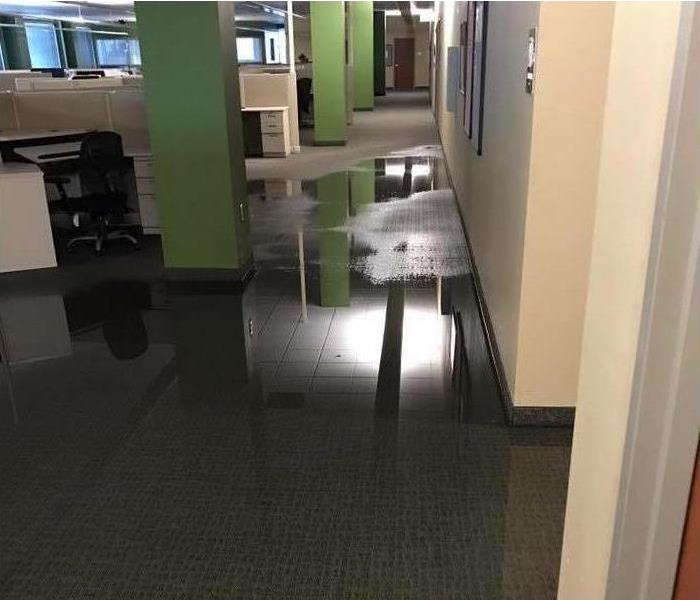 Storm damage in a Stillwater, OK office
Storm damage in a Stillwater, OK office
How to Fix Black Water Damage in Your Building
Severe weather can be difficult for you as a business owner, especially if your building floods. Storms aren’t the only thing that can lead to flooding; infrastructure problems can cause sewage loss that can contaminate your building with dangerous pathogens and bacteria. This black water can leave behind strong odors that can be unpleasant and even dangerous for employees and visitors. In the event black water from a flood or sewage gets into your Stillwater, OK building, it’s important to take steps to fix the damage as soon as possible. Without proper mitigation, flood water can lead to odors, mold growth, structural damage, and a contaminated work environment.
1. Extract Water
The first step in flood restoration is to remove the excess water. Even if your building only had an inch of flooding or a single source of sewage loss, it’s best to call professional restoration experts rather than trying to remove the water yourself. Restoration technicians have the right equipment to extract contaminated water safely and completely, so there is no risk that unnoticed moisture will lead to mold growth and other risky situations.
2. Dry Out Flooded Areas
Depending on the level of saturation, walls, floors, and furniture may have to removed and replaced if sanitization isn’t possible. For other materials, it’s a matter of thoroughly drying out everything, including areas beneath the surface, such as carpet padding and wall interiors. Restoration crews may use special equipment, including industrial fans, to ensure everything is completely dry.
3. Disinfect and Deodorize
After all areas are dry, the damaged furniture, materials, and structural components need to be sanitized. Disinfecting procedures are designed to neutralize harmful bacteria and other contaminants from flood water or sewage loss that can lead to disease or mold growth. Restoration professionals also have special deodorizing processes that can remove any lingering smells so you can be confident your employees and customers will enjoy being in a comfortable and safe environment. Visit http://www.SERVPROstillwaterguthrie.com for more information on storm damage.
How Do Cities Prevent Flooding?
2/12/2019 (Permalink)
 Rain gardens a preventing method from flooding.
Rain gardens a preventing method from flooding.
Urban planners and hydrologists around the world use a variety of methods to manage high water levels. Some of the following methods may be helpful for managing heavy rains or rising bodies of water in Perry, OK.
Barriers, Dams, Gates and Levees
Some of the most common urban flood prevention methods involve controlling the rise and flow of bodies of water. A variety of methods are used on coasts, rivers and lakes:
- Barriers, self-closing or manual
- Dams, with or without conservation storage
- Tide gates
- Levees
These options are suited for different bodies of water. Barriers and dams are both used on inland waterways, whereas levees and tide gates tend to be situated in estuaries or sloughs.
Diversion Canals and Floodways
Flood control channels may be useful for cities that regularly experience heavy rainfall. A channel or canal can divert high water to several locations:
- Man-made channels
- Temporary holding ponds
- Other bodies of water
These methods can direct water away from developed areas toward locations less likely to be harmed by flooding. These channels may run on the surface in basins or underground.
Flood Plains and Rain Gardens
Groundwater replenishment by diversion is a stormwater management method that is increasingly being implemented in environmentally-conscious cities. Rain gardens function by slowing down the pace of drainage, whereas floodplain restoration projects may aim to reduce flooding, recharge groundwater and restore aquatic ecosystems.
Cities around the world rely on these methods to stop flooding. The most important factors to consider include the source and patterns of high water levels. If a commercial property is located on a floodplain in Perry, OK, the owner should obtain flood insurance coverage through the National Flood Insurance Program or in the form of an endorsement to a commercial property insurance policy. This coverage is necessary to restore damage caused by flooding, which is excluded from most property policies.
3 Alternatives to Candles in Your Home
2/4/2019 (Permalink)
 Candles are common cause of home fires
Candles are common cause of home fires
Alternative Safe Candles
A fire in your home in Guthrie, OK can be disastrous, and candles are a common cause of home fires. Although candles can add a pleasant scent to your home, there are various candle alternatives that are considered to be safer.
1. Oil Diffusers
Oil diffusers are simple to use and can help to promote a calming atmosphere in your home. A few drops of essential oils are added to water, and the diffuser will distribute the oils into the air in your home. Essential oils come in a wide range of fragrances, though it’s often important to make sure the oils you use are safe for pets and young children. Oil diffusers come in many styles, making it easy to find a diffuser that fits in with your home.
2. Wax Warmers
A wax warmer is one of many popular candle alternatives. A wax warmer allows you to experience the fragrance of your favorite candle while minimizing the risk of a fire. Wax warmers are often inexpensive, and many stores offer their signature candle fragrances in waxes. If you have a candle that you don’t want to go to waste, it’s also possible to remove the wax from a candle and place it into the wax warmer.
3. Candles Without Flames
Candles often add a feeling of coziness to a home, but the risk of a candle fire can make candles less enjoyable and safe to use. However, flameless candles are often an excellent alternative. Candles without flames can still provide a warm glow to an area and can appear extremely realistic. Unlike regular candles, however, candles without flames are long-lasting and do not need to be replaced frequently.
Oil diffusers, wax warmers and candles without flames are candle alternatives that offer many of the benefits of candles without the risk of causing a fire. Many people whose homes have been damaged by a fire find it helpful to contact fire damage restoration professionals.
Why You Should Choose a Certified Remediation Company
1/21/2019 (Permalink)
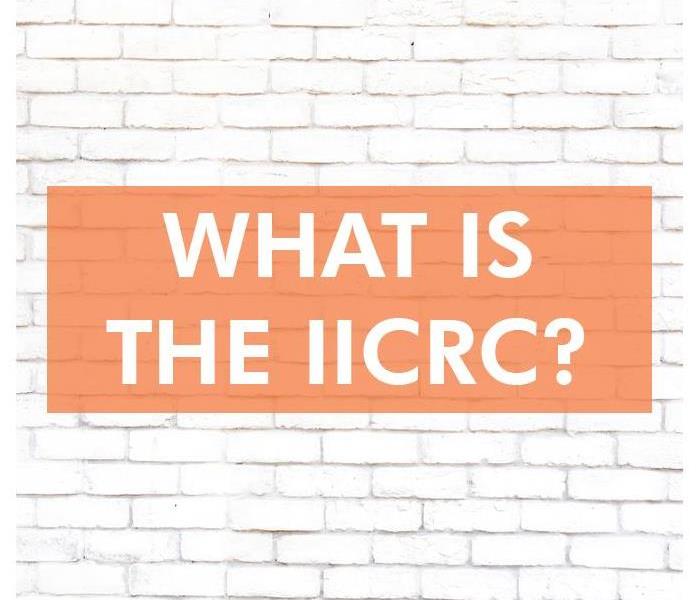 Institute of Inspection Cleaning and Restoration
Institute of Inspection Cleaning and Restoration
Homeowners experiencing mold problems are confronted with a number of choices. Two of the most important decisions include whether to hire a mold remediation service and which company to choose. There are several reasons to select a certified mold remediation company. Find out why you should trust a certified mold cleanup service.
Standardized Remediation Methods
Certified remediation companies rely on standards set by scientists and specialists. Many certifying organizations include a variety of experts:
- Microbiologists
- Public health professionals
- Remediation providers
A company with mold certification should be aware of the best methods of cleaning up past growth and preventing future problems. A certified company may also identify issues that other services might miss that could make a residence prone to re-infestation.
Insurance Coverage
Most homeowners insurance policies exclude mold, unless the problem was caused by a covered peril and adequate mitigation measures have been taken. If the cause of the damage is covered and there are no indications of negligence, insurers prefer to work with certified mold cleanup companies.
Experience and Reputation
A company certified to clean up mold should have employees trained to handle any species and degree of infestation. In addition to checking the certifying body, a homeowner may also want to look for other indications of quality:
- Better Business Bureau ratings
- Customer reviews
- Testimonials
These factors make certified mold remediation businesses stand out from uncertified competitors. While services without mold certification may charge less, these businesses may also be less likely to stand by the quality of their work.
In addition to the Institute of Inspection Cleaning and Restoration or IICRC, remediation companies may also be certified by the Association of Mold Professionals. Environmental hygienists may have credentials issued by the American Board of Industrial Hygiene or other reputable licensing bodies. Contact a certified mold cleanup company to eliminate mold damage at a residence in Perry, OK.
Why You Should Choose a Certified Remediation Company
1/21/2019 (Permalink)
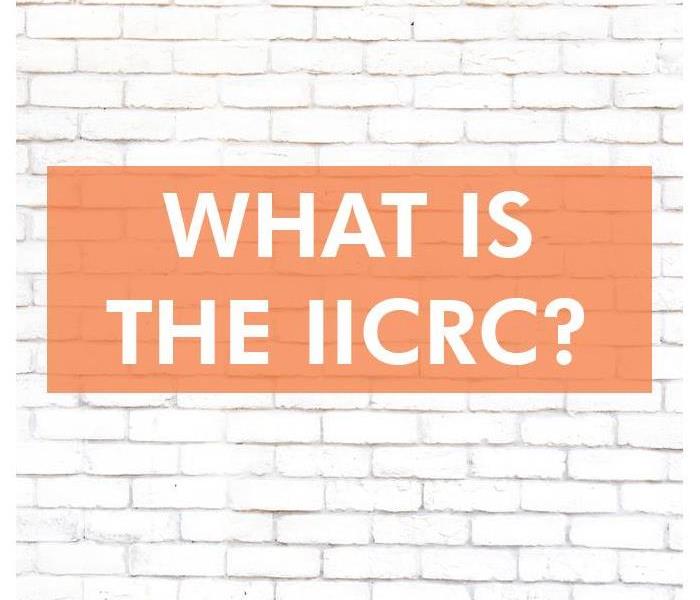 Institute of Inspection Cleaning and Restoration
Institute of Inspection Cleaning and Restoration
Homeowners experiencing mold problems are confronted with a number of choices. Two of the most important decisions include whether to hire a mold remediation service and which company to choose. There are several reasons to select a certified mold remediation company. Find out why you should trust a certified mold cleanup service.
Standardized Remediation Methods
Certified remediation companies rely on standards set by scientists and specialists. Many certifying organizations include a variety of experts:
- Microbiologists
- Public health professionals
- Remediation providers
A company with mold certification should be aware of the best methods of cleaning up past growth and preventing future problems. A certified company may also identify issues that other services might miss that could make a residence prone to re-infestation.
Insurance Coverage
Most homeowners insurance policies exclude mold, unless the problem was caused by a covered peril and adequate mitigation measures have been taken. If the cause of the damage is covered and there are no indications of negligence, insurers prefer to work with certified mold cleanup companies.
Experience and Reputation
A company certified to clean up mold should have employees trained to handle any species and degree of infestation. In addition to checking the certifying body, a homeowner may also want to look for other indications of quality:
- Better Business Bureau ratings
- Customer reviews
- Testimonials
These factors make certified mold remediation businesses stand out from uncertified competitors. While services without mold certification may charge less, these businesses may also be less likely to stand by the quality of their work.
In addition to the Institute of Inspection Cleaning and Restoration or IICRC, remediation companies may also be certified by the Association of Mold Professionals. Environmental hygienists may have credentials issued by the American Board of Industrial Hygiene or other reputable licensing bodies. Contact a certified mold cleanup company to eliminate mold damage at a residence in Perry, OK.
Plumbers Are for the Weak! You Can Replace Your Own Toilet With These 5 Simple Steps
1/17/2019 (Permalink)
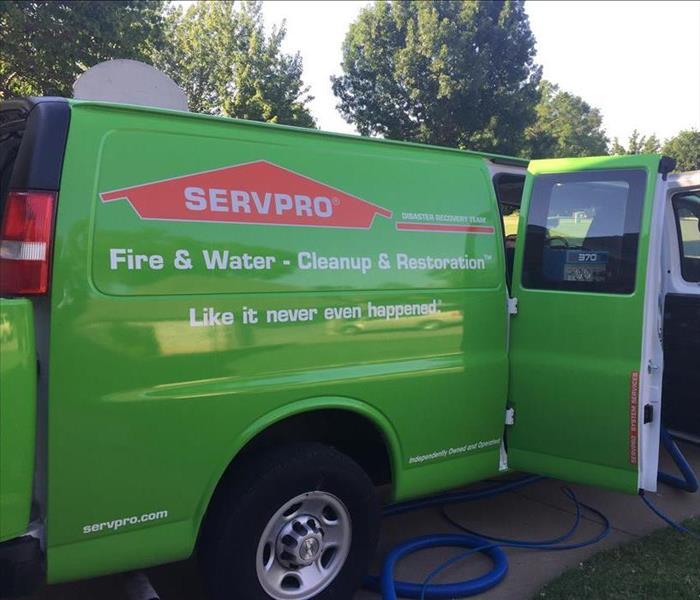 Call in a Guthrie, OK water damage restoration team to ensure there is no extensive water damage
Call in a Guthrie, OK water damage restoration team to ensure there is no extensive water damage
Replace Your Toilet with 5 Simple Steps
Whether you're dealing with a leaking toilet or you simply found a toilet with crazy features at your local hardware store that you just could not live without, you may wonder how much it will cost you to have a Guthrie, OK, plumber come in to make the swap for you. Depending on your capabilities, resourcefulness and level of confidence this may be an unnecessary concern. You can replace your toilet five simple steps.
1. Sever the Water Supply
Whether you're making a toilet repair or swapping out an old toilet with a new, you need to be sure to cut the water supply. Once the supply line is disconnected, flush and drain the tank.
2. Detach the Wax Seal
Use a wrench to loosen the bolts holding the toilet, then take a pocket knife or other sharp object and cut the caulk seal surrounding the base of the toilet. Remove the toilet gently. Use a putty knife to remove the wax seal.
3. Caulk the New Base
This step can help you prevent a future leaking toilet, as caulk serves to eliminate gaps between the wax ring and toilet base. It also helps make installation easier.
4. Install a New Wax Ring
You do not want to reuse a wax ring. Place a new one where the old was, and then lift the new toilet into place. Do not press down, as the weight of the fixture will compress the seal itself.
5. Tighten the Bolts
Once the toilet is in place, place a washer over the bolts and tighten the nuts by hand. You can use a large screwdriver or wrench to finish the job. Be careful to not overtighten, as it will crack the ceramic.
If your leaking toilet was leaking for a while, you may want to call in a Guthrie, OK, water damage restoration team to ensure the there is no extensive water damage. Failure to properly clean water damage can result in costly issues in the future.
4 Steps to Prepare For an Adjuster’s Visit
12/30/2018 (Permalink)
 Removing insulation after a water loss in Perry, OK
Removing insulation after a water loss in Perry, OK
4 Steps to Prepare For an Adjuster’s Visit
The process of filing an insurance claim should proceed smoothly if a policyholder prepares for a visit from an insurance adjuster. A home adjuster will need information about building materials, contents, and structural damage. Here are four steps to help homeowners prepare for an adjuster's visit.
1. Gather Information
Assemble as much information as possible about contents and building materials that have sustained damage. It can be helpful to obtain an expert opinion regarding which items or materials can be cleaned or repaired and which will need to be replaced. Helpful information includes descriptions of items, approximate dates of purchase, and the estimated cost of repair or replacement.
2. Find Signs of Damage
A home adjuster will probably also want to see signs of damage. A policyholder should make a list of damage to show an adjuster. Homeowners may also want to take photographs or record video footage to submit to the insurer or keep for their records.
3. Obtain Bids
Homeowners may be able to expedite the process of filing a claim by obtaining estimates from contractors and specialists that perform mitigation and restoration. The more itemized these bids are, the more likely it is that the claim will be approved and processed in a timely manner.
4. Make Copies
Make at least one extra copy of any documentation submitted to an insurer. Keep copies of all the paperwork the insurer provides. Policyholders should also keep a record of the names and phone numbers of adjusters you talk to in the process of filing proof of loss.
These measures will help homeowners prepare for a visit by a home adjuster, and should increase the likelihood that an insurance claim will be processed in a timely manner. If you require the services of a residential damage mitigation and restoration company, look for a company trusted by insurers in Perry, OK.
Dryer Maintenance 101
12/30/2018 (Permalink)
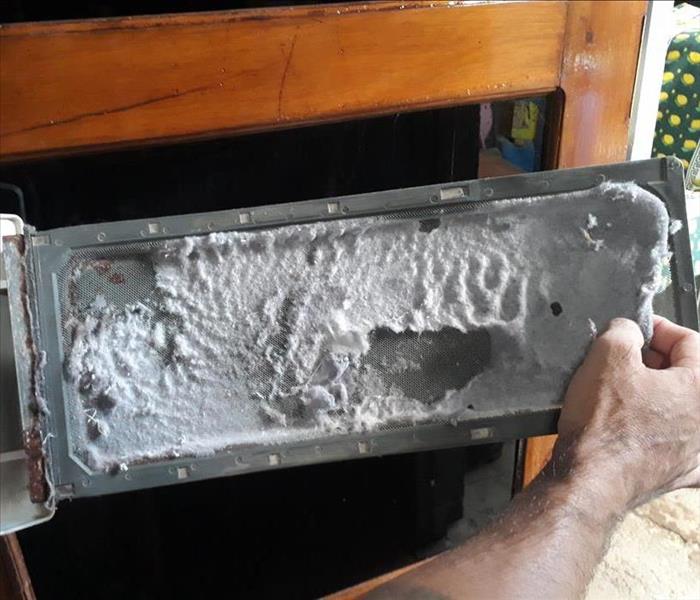 Proper dryer maintenance may help prevent a lint fire in your Guthrie, OK home
Proper dryer maintenance may help prevent a lint fire in your Guthrie, OK home
Dryer Maintenance 101
Around 2,900 dryer fires occur each year including incidents in Guthrie, OK. If you’re concerned about protecting your home, proper dryer maintenance is one important step toward lint fire prevention. Here are some maintenance tips you may want to know about.
1. Observe Dryer Safety
One way to avoid a dryer fire is to observe dryer use safety recommendations. These include things like not overloading your dryer, not letting it run without someone in the house, and ensuring that it’s off before you head to bed. It’s also important to never put flammable materials inside the dryer. These include rags or clothing that may have come into contacts with substances such as grease, alcohol, paint, or gasoline. Items containing rubber such as potholders, bathmats, or footwear will come with washing instructions that should be observed as well.
2. Clean Your Dryer Regularly
Cleaning your dryer regularly may help you avoid a potential lint fire. It’s easy to remove the lint from the lint screen after each use, but your dryer should be deep cleaned at least once a year. Depending on your dryer use frequency you may want to clean it as soon as every three month. After unplugging the dryer, you can vacuum out the lint trap, clean the exhaust hose and exterior vents, and in most cases remove the back panel to clean out any accumulated lint inside the machine.
3. If Issues Persist, Contact a Professional.
If you’re experiencing problems with your dryer it’s best to contact a professional to service the machine. If you do experience a dryer fire, then a fire damage restoration professional may be able to conduct repairs and restore your home to its pre-fire state.
Proper dryer maintenance may help prevent a lint fire in your home. Always observe the manufacturer's instructions when drying items and avoid leaving a running dryer unattended. If your dryer is malfunctioning it’s best to contact a professional for repairs.
3 Tips for Maintaining a Commercial Irrigation System
12/30/2018 (Permalink)
Commercial Irrigation System Maintenance
If you have an irrigation system at your business in Stillwater, OK, odds are you may experience a problem with your system. Irrigation flooding can lead to potential water damage and require the services of a water damage restoration professional. Fortunately, when your system goes haywire there are a few things you can do to help mitigate any trouble.
1. Know Your Zones
Some irrigation problems may be occurring in one part of the yard over another. This can indicate that the main problem is located within a specific zone. Knowing where your zones are can help you know which sections to check for potential issues, and examine the area for the source. For example, a big tree in one zone may have wrapped a root around an irrigation pipe.
2. Check the Valves
it's a good idea to check the on/off position of all the valves when experiencing irrigation problems. When going over the irrigation system it’s also important to look for debris. Things like rocks and twigs can get inside open valves and clog up the pipe. A blockage could be the source of any trouble the system may be having.
3. Contact a Specialist
If the problem with your system isn’t obvious, or isn’t something you can fix on your own, it’s best to contact a professional to look over the irrigation. They can look for potential electrical trouble as well as at the system’s hardware, and will have the right tools to fix problems that may be occurring with the pipes.
A broken irrigation system could be a result of a number of problems, but it’s important to get it fixed before you start experiencing water damage problems as well. When problems start occurring with your irrigation look at if any specific areas are having more trouble than others. It’s also a good idea to ensure all the valves are in the correct on or off position, and that none are clogged by debris. When in doubt, contact a professional.
Do Commercial Insurance Policies Cover Mold Damage?
12/3/2018 (Permalink)
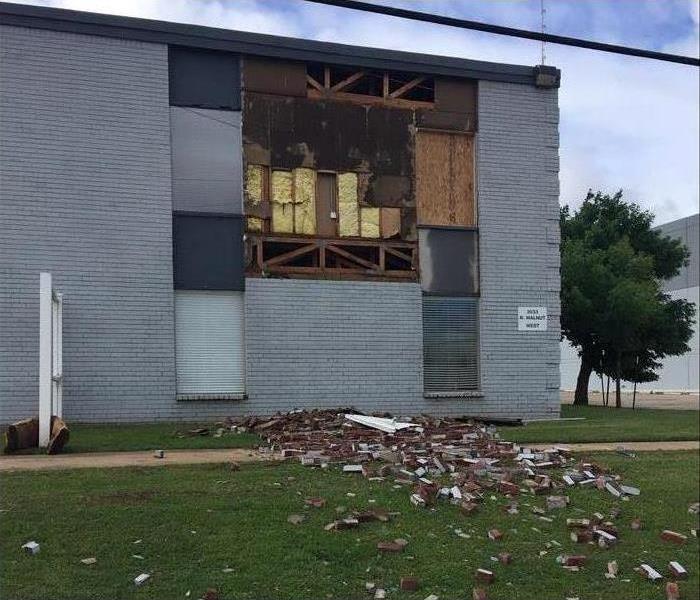 Mold damage on building in Sumner,OK
Mold damage on building in Sumner,OK
Some commercial insurance policies cover mold, but many policies have fungus exclusions or limited fungus coverage. Property owners may want to add a mold insurance endorsement to a policy. The additional cost is likely to be less than paying for mold damage remediation out of pocket. Learn how to determine whether your policy covers mold and how to obtain additional coverage.
Check Your Policy
Familiarize yourself with the perils your policy does and does not cover. Keep an eye out for:
- A mold exclusion
- A mold endorsement
- Exceptions
- Limited fungus coverage
All of these factors affect whether mold is covered. Even if a policy does not currently cover mold, you may be able to add an endorsement prior to remediation.
Ask About Endorsements
If you do not currently have mold insurance, you may want to add extra coverage to your policy. In doing so, you should inquire about the:
- Cost of extra coverage
- Covered perils
- Policy limits
All of these factors may impact whether mold cleanup and remediation is covered by commercial insurance. This will determine whether additional coverage is worth the cost.
Determine the Limit
It is important to determine what a mold endorsement covers. In the case of limited fungus coverage, the only covered perils may include water damage or leaks caused by fire extinguishing equipment. Mold resulting from a flood is covered by a flood insurance policy. Even limited coverage should offset the costs of
- Mold removal
- Physical loss or damage
- Tearing out and replacing building materials
- Testing after remediation
Property owners are responsible for documenting and mitigating damage. It is also important to file a claim in a timely manner.
As many commercial insurance policies exclude mold damage, it is important to assess the risk of mold in a building in Sumner, OK. An endorsement can help to cover the cost of hiring mold remediation specialists.
What You Need To Know About Residential Flood Cleanup
11/18/2018 (Permalink)
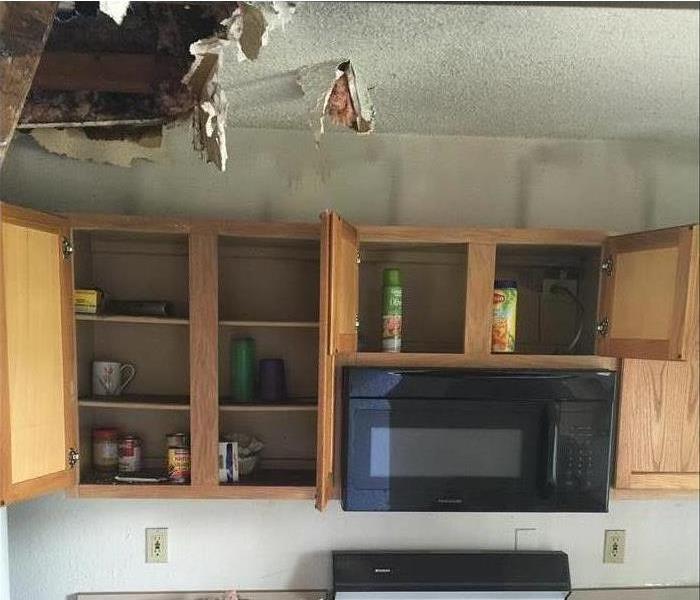 Kitchen ceiling collapse due to a leaking pipe upstairs in a Stillwater,OK home
Kitchen ceiling collapse due to a leaking pipe upstairs in a Stillwater,OK home
Steps To Restore Your Home
Few things are more tragic than having a home sustain damage during intense storms. After all, not only does your home represent your most significant financial investment, but it also is full of memories, personal keepsakes and valuables. You may not realize, however, that not all flooding is the same. Depending on the type of water damage you have, you must take different steps to restore your Stillwater, OK, home.
Broken Pipes Usually Cause Category One Damage
Unless you are away from your home when a pipe bursts, you are apt to notice this flood damage quickly. While the effects of destroyed plumbing systems can be bad, they are often not as severe as storm-related problems. This type of issue typically includes damage to the following:
- Drywall
- Carpeting
- Furniture
- Personal belongings
Restoration experts usually consider this sort of flooding to be low-level. Cleanup after these floods is often quicker and less invasive than for storm-caused damage.
Storms Often Cause Category Three Damage
When a hurricane, major thunderstorm or other severe weather rolls into town, your home may sustain considerable damage. Experts often assign this damage a category three rating. At this level, water often infiltrates parts of your home that you may not think about. Flood water may affect your basement, crawl space, carpeting, foundation and walls.
Restoration Experts Restore Value, Comfort and Appearance
While high waters can be unbelievably destructive, you may not have to completely abandon your home. On the contrary, restoration specialists usually have the knowledge and equipment necessary to return your home to its pre-flood condition. This first step to regaining your house’s value, comfort and appearance is to schedule an assessment from an emergency restoration service. Note, though, that timing is important. Waiting to start repairs can cause damage to worsen.
While flooding can be heartbreaking, you don’t have to walk away from your treasured home. By understanding the difference between pipe breaks and severe weather, you can best address the situation.
"Maintain Your Furnace to Avoid House Fires"
10/23/2018 (Permalink)
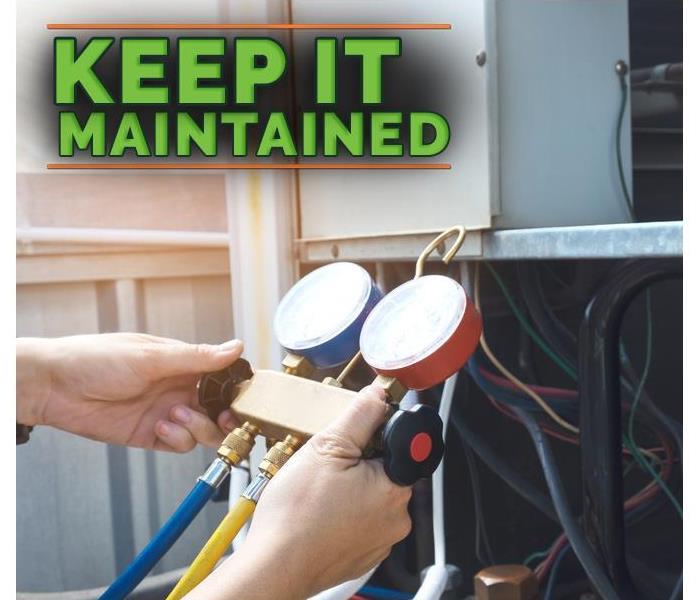 Furnace maintenance can reduce the possibility of fires in your Stillwater,OK home
Furnace maintenance can reduce the possibility of fires in your Stillwater,OK home
If you've ever had reason to schedule fire cleaning, you know how frustrating even small home fires can be. Fortunately, some basic safety habits and routine furnace maintenance can reduce the possibility of fires in your Stillwater, OK, home. Heating systems are generally pretty self-sufficient and don't require much attention. With just a few quick and easy steps, you can keep your furnace in top condition for safe operation during the winter.
Visually Inspect Components When the Seasons Change
When your heating or cooling system does malfunction, one of the following components are probably at fault.
- Thermostat
- Power supply
- Ignition switch
- The blower
Keep the Units Clean
One of the worst enemies of heating and cooling systems is dirt. A buildup of dust and household dirt can lead to decreased fuel efficiency and increased wear and tear. Protect the efficiency of the furnace and heating system by regularly cleaning components and lubricating and adjusting belts.
Handle Repairs As Soon As They Appear
Whenever a problem occurs, begin your troubleshooting efforts with the simplest fixes. Sometimes, a little bit of common sense and patient efforts are all you need to avoid residential fires and the fire cleaning that follows. If you can't handle the repair yourself, you'll probably find that paying for minor repairs and upkeep is much less expensive than more extensive damage.
Maintain Personal Safety Throughout Repairs
Don't forget to turn off all power to your furnace or heating system before you complete any maintenance or repairs to avoid a household fire and the ensuring fire cleaning work. This may entail tripping the circuit breaker or even remove the fuse that controls the unit. If you notice electrical problems or smell in gas in your home, contact a professional to handle the problem. If you're not sure what to look for during inspections or how to move forward with repairs, you may want to contact a fire and smoke cleaning and restoration company to handle the maintenance.
3 Tips for Preparing Your Business Against a Flood
10/17/2018 (Permalink)
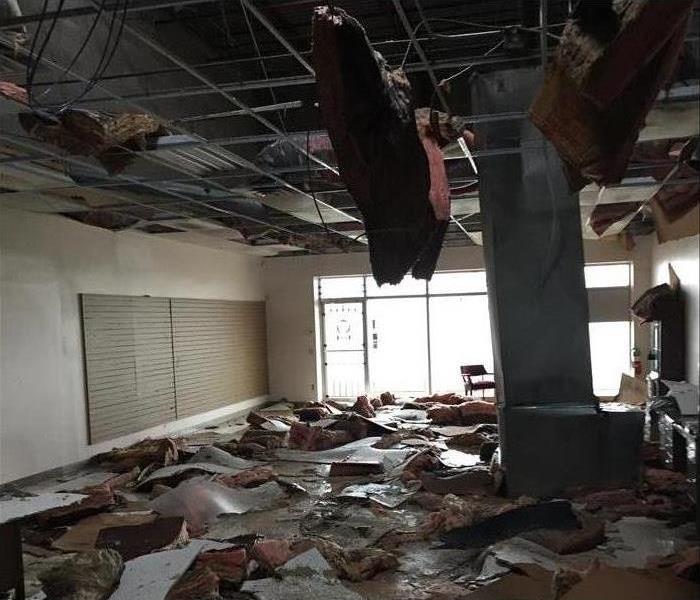 Commercial storm damage in Guthrie,OK
Commercial storm damage in Guthrie,OK
When storm season arrives in Guthrie,OK, many business owners may begin wondering about how to protect their property from flooding. When proper preparation occurs ahead of time, damage and loss can be mitigated. Here are three tips that may help your business better prepare.
1. Ensure the Exterior Is Properly Prepped
You can help protect your business's property from flood damage by properly preparing the exterior before the storm arrives. This can mean trimming trees with branches that could fall into the building, taking down awnings, making sure doors and windows are closed and sealed, sandbagging if necessary, and any other storm proofing methods recommended for your area. Prepping beforehand can mean less cleanup after. It’s also recommended that you become familiar with the water damage professionals in your area in case flood damage does occur.
2. Keep Backup Files Updated
One of the main risks to businesses when flooding occurs is the loss of electronic equipment and the files stored on them. In many cases it’s the loss of the files that’s the bigger disaster. One of the best ways your company can prevent this is to keep backups at an alternate location or in the cloud. If you have a server, your IT company may already do this for you. If your equipment suffers damage, these backups can be uploaded into repaired or replacement machines.
3. Move Necessary Items and Equipment to a Safe Area
Another way to protect your company from storm damage is to move the items you wish to protect to a safe location. This could be an upper floor or a room at the center of the building that’s away from doors and windows. In the event the building does flood, these items will be less likely to be in the path of any water.
If you're in an area such as Guthrie,OK, that could experience flooding, you may want to consider these tips before the next storm. Properly preparing your business for the weather beforehand can help prevent the loss of files and property, as well as costly repairs
3 Ways Leaks Can Affect Your Home
10/9/2018 (Permalink)
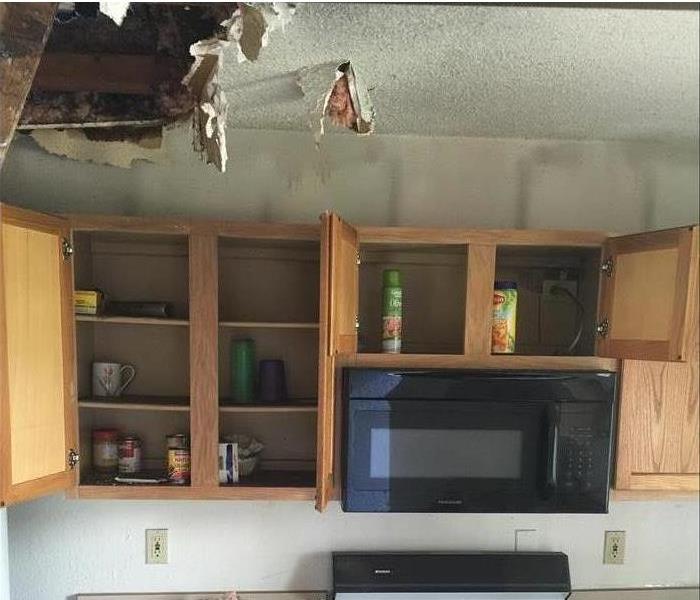 Ceiling damage due to leaking pipe in a Perry, OK kitchen
Ceiling damage due to leaking pipe in a Perry, OK kitchen
The sound of water dripping in your home in Perry, OK, isn’t just annoying, but it’s also dangerous. It may be the first sign of a bad leak, which means you might be facing water damage. With the help of restoration professionals, you can fix these problems without concern or worry. However, it’s important to stay mindful of the possible challenges you may face such as water in light fixtures and damaged valuables. Here are three potential problems you should be aware of.
1. Structural Harm
Sometimes leaks aren’t noticeable until they affect the areas around them. Water can cause drywall to swell and warp, which can lead to structural problems. Things such as support beam collapse and ceiling damage can occur.
Look around for any bulges or weird stains. This can help you find problems and stop them before they become more complicated.
2. Damaged Valuables
Leaks can affect places that should remain dry, including areas that hold your valuable objects and furniture. Bookshelves, memory boxes, and antiques can easily get ruined if a leak is not taken care of.
It doesn’t hurt to check your valuables often for any damage. If you find water damage, find the source of it and get it fixed quickly to avoid future issues.
3. Dangerous Light Fixtures
Sometimes, a leak might happen near electrical fixtures. If you see any water in light fixtures, stay away. Water conducts electricity and can electrocute you when you come into contact.
If you see this problem, shut off the electricity immediately. Once you have successfully turned off the power and eliminated the possibility of getting electrocuted, you can contact professionals and address the problem.
Leaks can be troublesome and sometimes dangerous if you aren’t careful. It’s best to prevent them before they occur. If you are currently dealing with a problem such as water in light fixtures, seek professional help and get started on the restoration and repair process.
What Is Category 2 Water Damage?
9/18/2018 (Permalink)
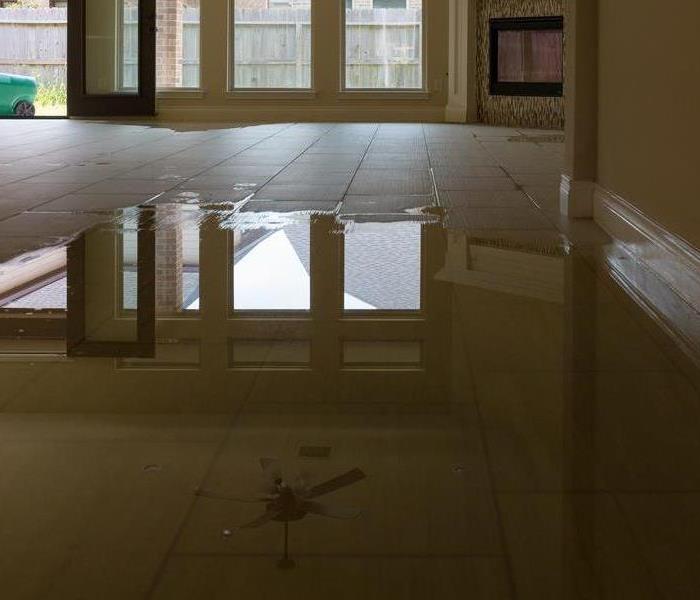 Contact a water damage restoration service in Stillwater, OK, to restore any damage.
Contact a water damage restoration service in Stillwater, OK, to restore any damage.
Category Two water damage involves gray water that may contain bacteria or chemicals but does not contain solid waste. Leaks involving Category Two water may be caused by sewer backups or result from leaks of clean Category One water that calls for water pipe repair becoming contaminated. Learn more about what differentiates Category Two water from clean water and Category Three black water.
Where Does Category 2 Water Originate?
Category Two water often originates as Category One water. For instance, if clean water from a broken pipe sits too long or filters down from one flooded floor through building materials to a lower floor, this water has become Category Two. Shower and toilet water that does not contain solid waste is also considered Category Two.
What Is The Category 2 Cleanup Procedure?
As Category Two water may contain bacteria, it is necessary to disinfect the area affected by a leak. Cleanup should commence with the removal of all water followed by cleaning, disinfection, and thorough drying to reduce risks of infection or mold. Be sure to address the cause of the problem, whether this involves clearing a sewer blockage or water pipe repair.
Do Category 2 Leaks Pose Any Risks?
Category Two water may contain bacteria and pose a risk to persons with compromised immune systems. The major risk with any water leak that originates from a broken pipe or any other source is mold. Thoroughly dry the exposed area, including all porous or semi-porous materials and contents, to prevent mold from starting to grow.
Commercial property owners dealing with a Category Two leak should take steps to fix the cause and prevent the situation from becoming more serious. Schedule a water pipe repair or clear any clogs causing backups and clean and dry the flooded area. Contact a water damage restoration service in Stillwater, OK, to restore any damage. For more information, visit http://www.SERVPROstillwaterguthrie.com/.
How To Mitigate Roof Damage
9/14/2018 (Permalink)
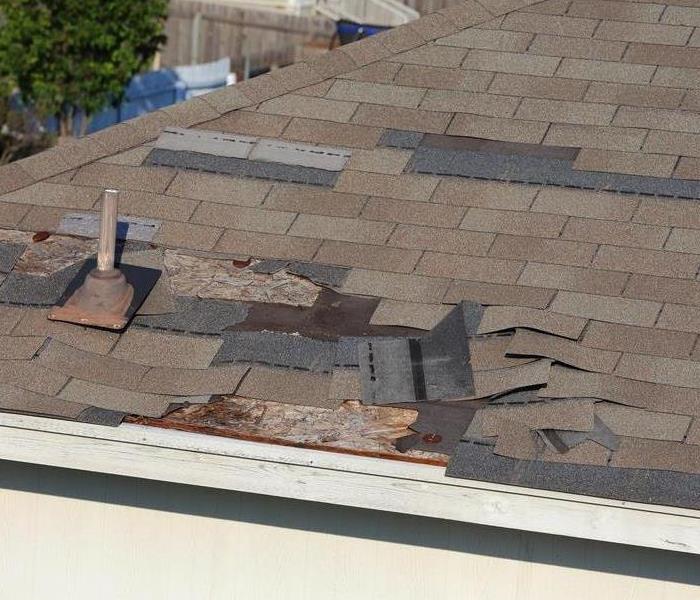 These four steps can minimize the extent of roof damage at your home in Stillwater, OK.
These four steps can minimize the extent of roof damage at your home in Stillwater, OK.
Adverse weather or high winds may damage your roof and lead to water damage in your home. Follow these four steps to mitigate roof damage after a storm until roofers arrive.
1. Assess the Damage
As soon as it is safe to access your roof, take a closer look to determine the best approach to limit damage. The best method depends on the type of roof. Fasten down boards, plastic, or tarp on a shingle roof. Cover leaky spots on tile or metal roofs any way that you can. Sweep standing water off of a flat roof to reduce seepage.
2. Board Up or Use Tarps
You may be able to limit the amount of water or debris that penetrates to the underlayerment of your roof or gets into your home by boarding up or covering leaky spots with plastic or tarp. If your home has a pitched shingle roof, use screws or nails to secure the cover. Make sure any material extends over the ridgeline to prevent water from working its way under the covering.
3. Funnel Water Flow
If your ceiling is holding water, situate a large bucket or trash can underneath and pierce the bulge with a sharp object such as a screwdriver or pen. Releasing pooling water can minimize damage. You may need to have extensive roof damage repairs and contact a service specializing in storm damage restoration to prevent mold.
4. Protect Belongings
Take measures to protect interior contents from leaks. Move delicate furniture and items away from the area for the time being. Use buckets or even a large trash can with wheels to catch water and limit damage.
These four steps can minimize the extent of roof damage at your home in Stillwater, OK. Whether storm or wind damage is the culprit, you should try to protect your home until roofing experts arrive. For more information, visit http://www.SERVPROstillwaterguthrie.com/.
Where Mold Grows
9/9/2018 (Permalink)
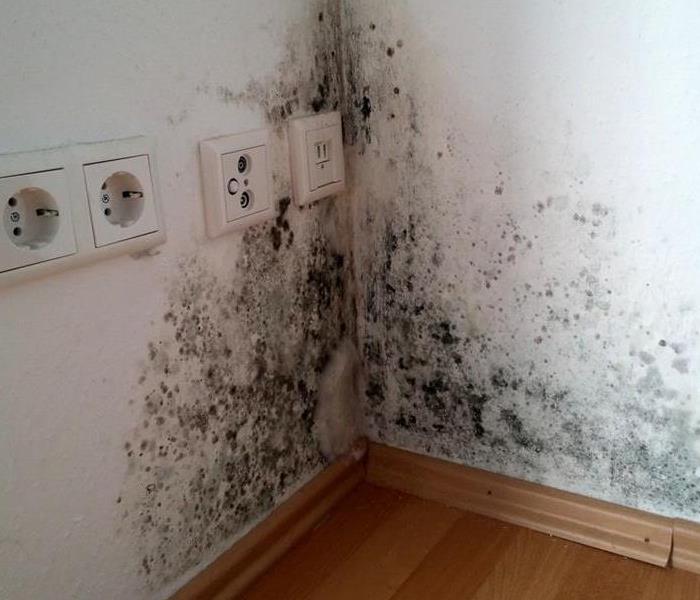 Consistently performed visual inspections can go a long way in heading off mold damage and other threats to the safety and aesthetics of a home.
Consistently performed visual inspections can go a long way in heading off mold damage and other threats to the safety and aesthetics of a home.
As any homeowner in Stillwater, OK, would likely agree, the prospect of mold damage is an unwelcome one. With over 100,000 known types of fungi in existence the world over and millions of microscopic spores in the air, its presence on organic materials is commonplace. However, there are measures that can help to impede its often speedy growth.
Moisture is Key
Simply put, mold cannot grow without moisture, both indoors and outdoors. To prevent mold growth in a home, follow these practices:
• Keep the humidity below 45%.
• Ventilate kitchens, bathrooms and laundries.
• Repair leaks promptly.
• Dry and clean areas where flooding has occurred.
• Conduct periodic inspections of areas where moisture can collect.
Besides moisture, mold requires a porous surface on which to grow and digestible nutrients. Mold can quickly colonize on common household substances such as paper, wood, cardboard, ceiling tiles, paint, insulation and fabrics. It can even grow in dust.
Remediation is Available
Because of the difficulty of effective mold removal, it is wise to consult a professional remediation service to address mold damage. Unlike mildew growth, which is superficial and relatively easy to remove with a scrub brush and a variety of household cleaners, mold infiltrates surfaces. That makes its removal more of a challenge, and some materials, such as drywall and carpet, are likely to require replacement rather than cleaning. The first step, however, is to isolate and repair the source of moisture that has given mold its foothold. Without removing the source of moisture, the likelihood of regrowth is substantial.
Vigilance is part and parcel of home ownership. Simple but consistently performed visual inspections can go a long way in heading off mold damage and other threats to the safety and aesthetics of a home. In the event of a leak or flood, focus efforts on getting all affected areas thoroughly dry as quickly as possible. For more information, visit http://www.SERVPROstillwaterguthrie.com/.
Fire Extinguishers: A How-To Guide
8/15/2018 (Permalink)
If you've ever had a fire in your Stillwater, OK, business and had to call professionals for restoration, you understand how devastating it can be. That's why it's so important to both have a good fire extinguisher at the ready and know how to use it. Here are the steps to follow to make sure you're ready to stop a fire quickly and safely.
1. Know What You're Dealing With
Timely use of an extinguisher can prevent fire damage before it happens. But first, assess the situation. If the fire is already too large, it's a better idea to call the fire department or trigger the fire alarm and make sure you and others around you get to a safe place. If it's a fire that's small enough to be put out safely and you have ready access to a fire extinguisher, you next need to know what kind of fire it is.
2. Fire Classification
Fire experts use the following classifications for different types of fires:
• Type A Fires: plastics, rubber, wood, paper and cloth
• Type B Fires: paints, solvents, propane, gasoline and other flammable gases and liquids
• Type C Fires: plugged-in electrical equipment, including computers, wiring, fuse boxes and appliances
• Type D Fires: metals, or flakes of metal or combustible powders
• Type E Fires: fats and cooking oils, common in a kitchen fire
By looking at the side of the fire extinguisher, you can check the letter classification to make sure it's the correct type to put out the fire. Many extinguishers are rated for putting out more than one type of fire.
3. The PASS Method
Most extinguishers can be used by following the PASS method, with each letter standing for the first word of a step. The first "P" stands for "pull the pin." At the top of the extinguisher is a pin that must be removed before operation. Next comes "A" for "aim the nozzle." Aim for the bottom of the flames, where the combustible material is, not at the top. The first "S" stands for "squeeze the handle," which starts the flow of the extinguishing material, and the second "S" is for "sweep from side to side." Continue extinguishing until the fire is completely out.
Using the steps above will ensure that you're using your extinguisher correctly and can stop fire damage before it gets started. For more information, visit http://www.SERVPROstillwaterguthrie.com/.
Top Fire Preparation Tips for Homeowners
7/21/2018 (Permalink)
 Prepare your home in Stillwater, OK, your family and yourself for a home fire by heeding the above fire safety tips.
Prepare your home in Stillwater, OK, your family and yourself for a home fire by heeding the above fire safety tips.
Being in a home fire in Stillwater, OK, is a nightmare. You wonder, what could be worse? The answer is not being prepared. In order to act quickly in any emergency, you must understand and practice what to do ahead of time. Fire preparation is no different. To prepare your home and your family, institute the following fire safety tips.
Prepare
The best time for fire preparation is now. If you wait until there is a fire, it is too late.
• Install functioning smoke detectors in your home. At the minimum, this includes alarms outside the sleeping areas and on each level of your home. Maintain your detectors by changing the batteries at least once per year and checking the alarm once per month. If possible, install interconnected detectors that sound at the same time when one is triggered. Teach all family members the sound of the alarm and what it means.
• Plan an escape plan, ensuring that all family members know two ways to exit each room.
• Determine an outside meeting place and how to contact one another.
• Teach even young children how and when to call 911 in an emergency.
Practice
Repetition of fire safety skills increases the chance of acting quickly in a fire.
• Practice the predetermined family escape plan twice a year or more. Start from different rooms of the house or use a stopwatch to make it more challenging.
• Practice how to stop, drop and roll in the event a home fire spreads to clothing.
Prepare your home in Stillwater, OK, your family and yourself for a home fire by heeding the above fire safety tips. If your nightmare becomes a reality, use what you have learned and practiced during fire preparation to lead your family to safety. Once out of danger, consider the next steps to repair your home. Start by contacting a fire restoration specialist to help you through the process of cleaning and restoring your house and personal belongings. Also call your insurance agent, as fire damage is covered under most homeowner’s policies. For more information, visit http://www.SERVPROstillwaterguthrie.com/.
Discolored Ceiling Tiles Are Often the Result of Leaks
7/16/2018 (Permalink)
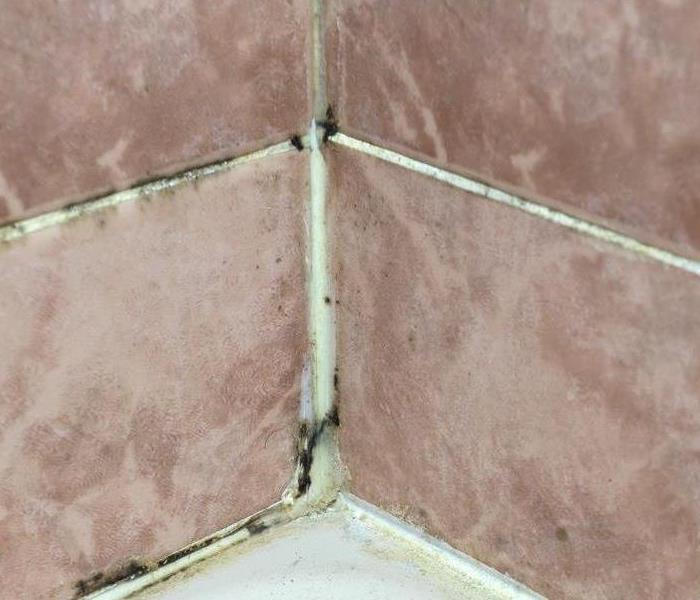 In most cases, tile discoloration happens when moisture has broken through the tile material and caused water damage.
In most cases, tile discoloration happens when moisture has broken through the tile material and caused water damage.
Discoloration of ceiling tiles in a building is usually the result of water infiltration; often, this leads to issues with tile mold. Locations like Stillwater, OK, are hardly unique in this regard, as the phenomenon is quite common. Knowing a bit about how to address this issue can help a building owner decide whether or not it is necessary to call in a professional service to remediate the damage.
Identify the Cause of the Discoloration
In most cases, tile discoloration happens when moisture has broken through the tile material and caused water damage. There are at least three common reasons why this occurs.
1. A roof leak is often the culprit of water infiltration. Heavy precipitation and wind that lifts roofing material or flashing can allow rain, sleet, snow or snowmelt inside, and gravity does the rest.
2. A failure in the HVAC system can allow moisture to collect and condense. This water can soak ceiling tiles and stain them. Tile mold can be another unwelcome outcome.
3. Interior plumbing that runs above ceilings can fail in a multitude of ways and send water or other liquids onto the ceiling tiles beneath.
Determine the Extent of the Damage
After a stain or discoloration on a ceiling tile has been noticed, it is important not to delay looking for the source. Timely remediation of the leak, whether it is a trickle or something more, can save property owners further aggravation and expense. After the repair has been made, assess how widespread the discoloration is and swap out the stained tiles with new ones.
Besides being aesthetically displeasing, stains on ceiling tiles in a building are a signal that all is not well and watertight up above. It is important to read this sign as early as possible to avoid an escalation of the problem, such as the development of tile mold. For more information, visit http://www.SERVPROstillwaterguthrie.com/.
Flood Safety Tips for First Responders
7/16/2018 (Permalink)
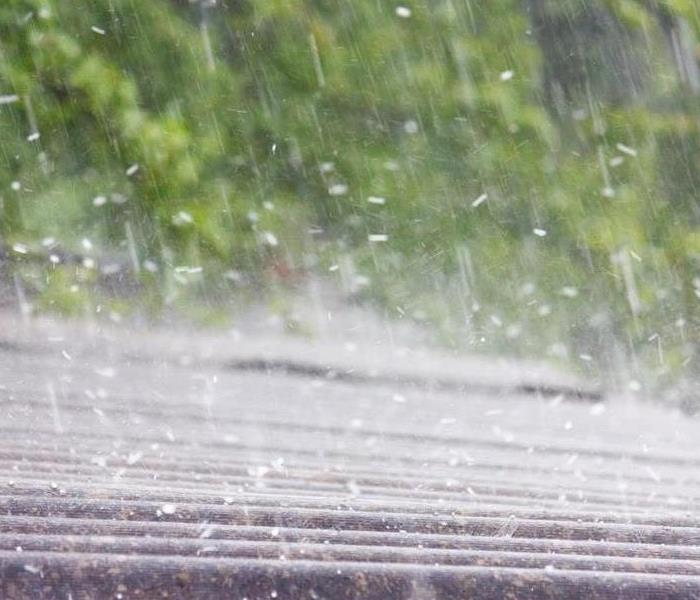 In the aftermath of a storm, it’s important to stay safe if you plan to participate in first responder activities.
In the aftermath of a storm, it’s important to stay safe if you plan to participate in first responder activities.
After a storm in Stillwater, OK, floodwaters may contain hazardous materials such as raw sewage or chemicals. Individuals choosing to participate in flood response actions need to be aware of the potential health risks and take proper precautions. If you are a first responder after a flood event, here are four tips to help keep you safe from injury and illness.
1. Obtain recommended immunizations before exposure. If you have not received a tetanus shot within the last 10 years, the Center for Disease Control recommends getting a booster before beginning your flood recovery efforts. Additionally, if you have the potential to be exposed to human bodily fluids while caring for victims or patients, the Hepatitis B vaccine is also strongly encouraged.
2. Wear protective gear and clothing. Gloves should be worn at all times when dealing with the aftermath of a flood. Ideally, gloves should be both cut resistant and waterproof. Eye goggles can protect the eyes from infection or injury. If floodwater is still present, wearing waterproof coveralls over your clothes can provide additional protection.
3. Follow hygiene and sanitation procedures. Frequent handwashing is essential for a first responder due to the potential exposure to toxic materials. If clean water and soap are not readily available, hand sanitizer with alcohol can be used as a substitute.
4. Remain aware of hidden dangers. After a heavy flood, the ground may become unstable due to oversaturation of water, leading to unanticipated sinkholes or slides. Additionally, some areas are higher risk due to pesticides or other chemical-related runoff. Mold can rapidly set in after a flood event, so be aware of potential mold exposure. In any case, professional restoration specialists can help mitigate the risks of mold and lingering bacterial or chemical contamination.
In the aftermath of a storm, it’s important to stay safe if you plan to participate in first responder activities. By following a few safety tips like the ones listed above, you can help make an impact on the cleanup efforts without jeopardizing your health. For more information, visit http://www.SERVPROstillwaterguthrie.com/.
Understanding Crawl Space Water and Its Removal
6/22/2018 (Permalink)
A crawl space in your Stillwater, OK, home is no place for water to linger. Whether it’s mold that thrives in cold and damp places or foundation weakening from overexposure, water poses a threat in the long term. Knowing how a wet crawl space becomes flooded and what do after is pivotal.
Knowing Where the Water Came From
Water finds its way into the crawl spaces naturally and otherwise. The crawl space is susceptible to water from a few sources:
• Rain or snowmelt causing water pools that never fully evaporates
• Flood water from naturally wet climates
• Other floods above the crawl space entrance leaking through
• Leaking or broken pipes spilling water when water is used
Removing the Water
If the problem is a damaged pipe, the pipe should be fixed first. If the problem is more long-term or serious, a draining system is set up to remove and prevent the flooding from creating a wet crawl space. A trench is dug while keeping the home’s structural integrity in mind. In the trench, piping is placed and covered with drainage rocks.
After the trench and piping are complete, an electrician ensures the safe installation of an outlet and sump pump. The water is rerouted to a safe spot in the home’s exterior where it is much less dangerous. As the final step, a vapor barrier is installed to prevent any water from evaporating and damaging the home any further.
Treating Water Damage
When a sump pump solution is not pursued, the water needs to be removed by you or professionals. Contacting a professional water damage treatment company is advised since expertise is necessary to evaluate every unique situation. Even with a removal system, water damage may still be there but unnoticeable unless you know what to look for.
The treatment and prevention of a wet crawl space is quite an endeavor, but it can be accomplished with established procedures. The source and treatment are important to know to protect your residence. For more information, visit http://www.SERVPROstillwaterguthrie.com/.
How To Troubleshoot a Commercial Irrigation System
6/20/2018 (Permalink)
Irrigation problems are a surprising source of water damage to commercial buildings. This is due in part to the fact that they usually run at night, so it may be hours before leaks and malfunctions are discovered. In the meantime, water has been flooding inside. After you call a water damage mitigation specialist in Stillwater, OK, to help with the cleanup, you’ll need to figure out what went wrong. Troubleshooting a commercial irrigation system can be tricky, but there are somethings you can look out for.
If some of the zones aren’t turning on or water pressure is low, there are a number of issues that could be causing it. Here is a list of clues to look out for that might help you discover the causes.
1. Check the valves. It may seem obvious, but it never hurts to make sure the valves are open to allow water to flow into a zone. Likewise, if a valve’s manual bleed has been left open, it can cause a big drop in water pressure, even when there’s a lot of water.
2. Is there a patch of tall grass? Look around the property for any small patches where the grass has sprouted up. This can point you to a cut line in the system where water is spilling out, preventing it from getting to the zone in question or sapping pressure for your irrigation system.
3. Look for a big tree. Tree roots can wrap around underground irrigation lines and choke them off. If you have a large tree on your property, there’s a fair chance the roots could be interfering with water flow to the affected zone.
5. It could be electrical. Bad connections can be fairly common in an irrigation system. When connectors get corroded, it can cause problems. Locating electrical problems usually requires specialized equipment, so you may be better off calling in an expert from Stillwater, OK, to help.
For more information, visit http://www.SERVPROstillwaterguthrie.com/.
Why a Flood Policy is a Wise Investment
6/14/2018 (Permalink)
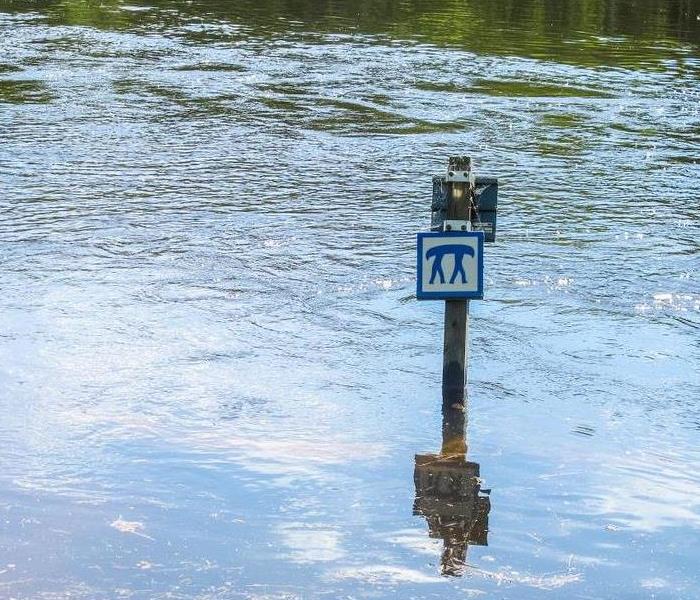 Most flood policies come with a 30-day waiting period, so don't wait until the height of storm season to start shopping.
Most flood policies come with a 30-day waiting period, so don't wait until the height of storm season to start shopping.
If your commercial building is located in an area prone to flooding, whether or not you should have commercial flood coverage should not even be a question. However, many people assume that commercial insurance covers damage from disasters such as floods, an assumption that could end up costing them hundreds of thousands of dollars in the long run. Most commercial building insurance policies do not cover damage caused by floods, even if that same policy covers water damage caused by a burst pipe or leaky roof. If you want to reduce the financial impact of a flood as much as possible, look into a flood policy. There are several good reasons to do so:
• Floods are the nation's most common natural disaster, and they often result in millions of dollars of damage each year.
• Your commercial building policy likely does not cover flood damage.
• More than 20 percent of flood claims come from buildings outside of high-risk flood zones.
• You may be required to carry flood insurance, regardless of where your building is located.
How To Buy Flood Insurance
If you're interested in adding flood coverage to your commercial insurance policy, talk to your Stillwater, OK, insurance agent about doing so. Bear in mind that some insurance companies do not provide flood insurance. If that is the case, reach out to FEMA for a list of agents that do offer the desired coverage.
Before investing in a policy, ask the provider about what is and is not covered by the policy. Also, talk to your local flood damage restoration team about what type of coverage in which you should invest. A professional restoration team may know more about risks and exposures than your agent.
Most flood policies come with a 30-day waiting period, so don't wait until the height of storm season to start shopping. Talk to your commercial insurance agency today about tacking on the policies you need to protect your business. For more information, visit http://www.SERVPROstillwaterguthrie.com/.
Are Home Mold Testing Kits Accurate?
5/14/2018 (Permalink)
 Your best option to test for mold is to find a qualified environmental hygienist.
Your best option to test for mold is to find a qualified environmental hygienist.
When you suspect you have mold in your home, you may try an off-the-shelf home mold testing kit. The problem is that no matter where you go in your home, the kit returns a positive and doesn’t help you find where the mold is — if you even have a mold problem. So are home kits really accurate, or are you better off finding a Stillwater, OK, mold remediation specialist?
Why Home Testing Kits Don’t Work
The truth is that off-the-shelf home mold testing kits don’t have what it takes to accurately test for mold. They just aren’t made to the same standard or with the same capabilities as professional mold kits. DIY mold remediation often doesn’t work because:
• Mold is everywhere in your home, even if the spores haven’t propagated into an active infestation. They’re still present in the air at all times, and a home mold kit will detect this.
• Home mold testing kits aren’t sensitive enough to differentiate between concentrations of mold spores that would indicate a heavier infestation in one particular area.
• Home kits often can’t sense mold in isolated, secluded areas.
• Home kits may tell you that you have a mold problem when you don’t, or they may tell you that mold spore saturation in the environment is so uniform that you don’t have a problem. In actuality, you could have hidden mold waiting to spread throughout your home.
So How Can I Test for Mold?
Your best option to test for mold is to find a qualified environmental hygienist. Environmental hygienists possess professional training and sensitive equipment capable of detecting mold in ways a home mold kit cannot. The techniques they use for mold detection can uncover hidden infestations in surprising places a home kit would never pick up on. Environmental hygienists can also provide accurate information on safety and mold remediation, as well as mold prevention. For more information, visit http://www.SERVPROstillwaterguthrie.com/.
3 Methods For Maintaining Your Furnace
5/8/2018 (Permalink)
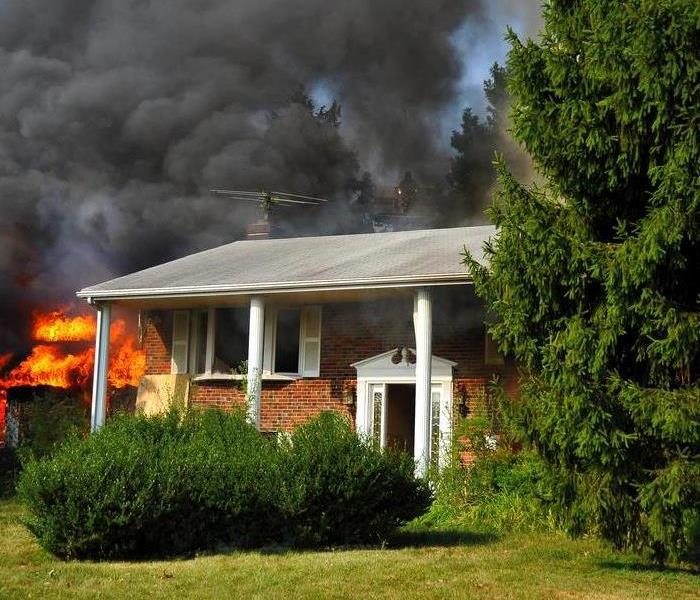 To prevent hazards that could result in fire cleaning, following these useful methods for maintenance can go a long way.
To prevent hazards that could result in fire cleaning, following these useful methods for maintenance can go a long way.
While many things in your Stillwater, OK, home require consistent cleaning and maintenance on a regular basis, there are some areas that fall by the wayside — like your furnace. Though you depend on it to keep you and your family comfortable, giving it proper treatment and ensuring its efficiency is rarely the first thought on people’s minds. Here are three methods for maintaining your furnace from here on out, preventing any potential issues that could result in costly professional fire cleaning in the future.
1. Depending on the type of filter in your furnace, make sure to clean or inspect it on a frequent basis. Different types of filters ask for varying levels of maintenance, such as fiberglass filters needing a change once a month or electronic air-cleaner filters that only need a sprucing up every other month. Verify which type your furnace uses and keep it consistently monitored to prevent any dust and debris buildup.
2. Keep an eye on the state of the furnace’s pilot light. Before the hottest or coldest months out of the year arrive, checking on the functionality of your furnace is key. This means verifying that your pilot light is burning regularly. Though some lights can be relit by hand using the instructions inside the access door, it’s best to call upon professionals if the process requires steps you’re unsure about.
3. Have specialized technicians perform an annual inspection. Most newer models need only be inspected once a year, but if issues regarding the device’s performance are in question, contacting professionals is a smart option. They can check to ensure problems like ventilation or corrosion are properly addressed, while also handling any fire cleaning or smoke cleaning after an accident that could result due to poor maintenance over time.
Like anything else in your Stillwater, OK, residence, the home’s furnace requires support and maintenance regularly to sustain efficient use and safe-keeping. To prevent hazards that could result in fire cleaning, following these useful methods for maintenance can go a long way. For more information, visit http://www.SERVPROstillwaterguthrie.com/.
Mold Keeps Coming Back: Why Didn’t Bleach Work?
4/27/2018 (Permalink)
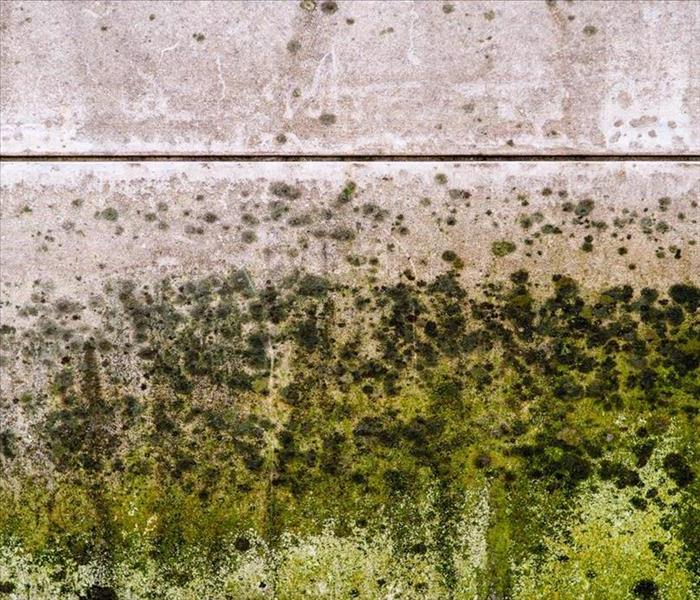 You spot mold on the bathroom wall and spray it with the leading mold killing spray with the active ingredient bleach. You got it, right? Wrong.
You spot mold on the bathroom wall and spray it with the leading mold killing spray with the active ingredient bleach. You got it, right? Wrong.
You spot mold on the bathroom wall and spray it with the leading mold killing spray with the active ingredient bleach. You got it, right? Wrong. Pretty soon, the mold is back, so why was the fungus cleanup unsuccessful?
Important Points About Mold Prevention and Cleanup
Bleaching mold does not get rid of mold. If you look at your cleaner, you will likely see it specifies the surface must be “non-porous” (i.e. glass). If you use bleach, it is over 90 percent water. The chlorine evaporates quickly, leaving the water behind to soak into the porous surface. Here are some more points to consider:
• To reduce mold growth, you should eliminate moisture quickly.
• It helps to maintain a humidity level at less than 45 percent.
• Mold growth often begins as rapidly as 48 hours on a wet surface.
• Cleanup mold on non-porous surfaces with detergent and water per EPA (it does not recommend bleach).
• Wiping off surfaces, especially porous surfaces such as walls, does not get rid of mold because of its root system.
The Root of the Problem
Mold spores float in the air, indoors and outdoors. They settle on surfaces, including your clothes, as you walk in and out of your house throughout the day.
Mold is a naturally occurring type of fungus. It is microscopic but can become visible when conditions are right for growth. When a mold spore lands on a wet surface that is porous, it roots into that surface quickly, which can make your fungus cleanup more difficult. If mold keeps coming back after you have cleaned it, then it was not just a surface problem, or the conditions are just right for the mold to grow (or both). Keep in mind, Stillwater, OK, and its surroundings may contribute to your building’s mold susceptibility.
Finishing the Job
If you made the decision to call an expert to address your need for fungus cleanup, then make sure to choose a qualified professional with certification specifically for mold remediation. A professional typically has the experience, tools and knowledge needed to get the job done. Now you can tackle the next item on your to-do list. For more information, visit http://www.SERVPROstillwaterguthrie.com/.
6 Shutter Styles You May Need for Your Home
4/19/2018 (Permalink)
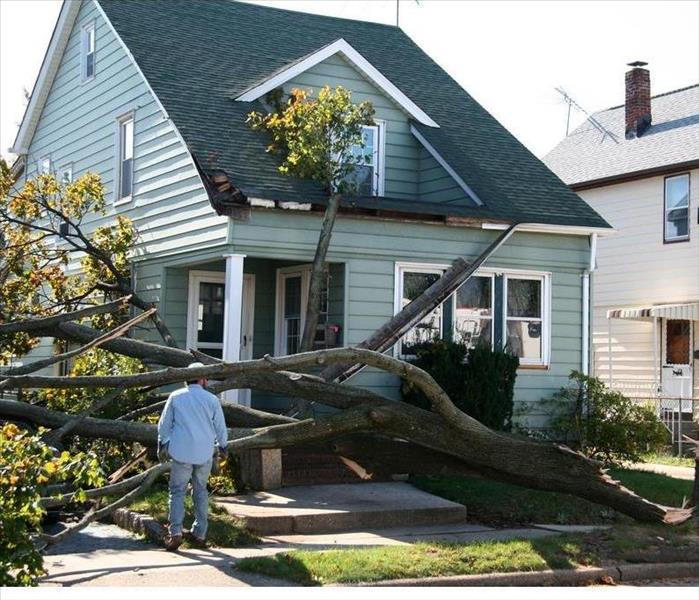 Having your home protected with hurricane window coverings can also save you money in the long run by lowering your insurance premiums.
Having your home protected with hurricane window coverings can also save you money in the long run by lowering your insurance premiums.
If you live in an area that is prone to hurricane and high winds, such as Stillwater, OK, you can mitigate potential damage to your home and protect family by installing storm shutters. Having your home protected with hurricane window coverings can also save you money in the long run by lowering your insurance premiums.
Many types of hurricane window coverings are available. Here are just a few of the more popular options.
1. Plywood
Plywood may not be pretty. However, it is usually an inexpensive, readily available option that can cost less than $1 per square foot of window space.
2. Storm Panels
Storm panels are often an economical option that may only need to be installed if a hurricane is imminent. The cost for these panels is $7-$15 per window.
3. Accordion-Style
Accordion-style window coverings can be stored folded up in a box that is secured to one side of the window. They can then be manually unfolded to cover the window when needed. These shutters often cost $15-$25 per square foot of window space.
4. Bahama Awnings
Bahama awnings can provide shade as well as protect windows from damage by high winds. These shutters can be installed on the tops of windows to provide awnings, and then can be unlatched when you need to cover the window. These coverings may cost about $15-$20 per square foot.
5. Rolling
These window coverings are typically installed in a box bolted above the window. A cranking mechanism unrolls the shutters across the length of the window, and then they are bolted down at the bottom. They can also provide effective insulation, helping to save costs of heating or cooling a home at a cost of $20-$30 per square foot of window area.
6. Colonial
Colonial storm shutters are usually mounted permanently on either side of a window and bolted in place. When needed, they can be unfolded to cover the window. Colonial-style window coverings cost about $200-$500 per window.
Expecting stormy weather? The next time high winds are forecast in your area, you can have peace of mind when you have quality window coverings installed for your home. For more information, visit http://www.SERVPROstillwaterguthrie.com/.
3 Reasons Your Toilet May Leak When Flushed
3/27/2018 (Permalink)
A leaking toilet in your Stillwater, OK home can be troublesome, especially if it leaks each time you flush. Over time, your bathroom floor can suffer water damage or mold may start to grow around the tank if the area is constantly wet. There may be several reasons for the leak; however, some may be surprisingly simple to fix on your own.
1. Failed Seal
If the base of your toilet is consistently damp or if new puddles form when you flush it, this is usually the result of a failed wax seal at the bottom of the unit. This can be a common cause of leaks in older toilets, but you may be able to fix it by using a wrench to tighten the bolts at the base of your bowl. If the toilet leaks again when you perform a test flush, the wax gasket may need to be replaced.
2. Broken Flange
A bathroom leak can be caused by a broken flange underneath your toilet. This repair can be challenging, as you will have to remove the entire toilet to change the flange, but careful preparation can simplify it. The flange is located underneath the wax ring, which you will have to remove as well. A new flange and ring can be purchased at your local plumbing or home hardware outlet.
3. Loose Unit
Sometimes the fix for a leaking toilet can be quite simple. For example, if the bolts that hold the toilet to the floor have loosened over the years, it may leak when flushed. To repair this issue, loosen the bolts the rest of the way, press down on the unit to make a tighter seal with the wax gasket, then bolt the unit down securely. You may want to call in a flood cleanup and mold remediation company to have your bathroom checked and treated for mold.
A leaking toilet in your Stillwater, OK home is cause for concern. However, the problem may not be as severe as you think, and knowing why these leaks are happening can help you repair them as quickly as possible. Visit http://www.SERVPROstillwaterguthrie.com for more information on water damage.
Nobody Wants To Deal With Cleaning Bathroom Mildew
3/27/2018 (Permalink)
Sure, you can close the shower curtain when guests come over. Maybe they won’t see the designer bathroom mildew you have growing between your shower tiles. It’s not like your bathroom isn’t clean. It may just be that your warm bathroom and excess moisture from lack of ventilation is causing you to have a humidity problem. Since it only takes mildew less than 48 hours to settle in and begin to grow in this kind of environment, you are racing against time after every cleaning. If you find that this issue has become overwhelming or if it has accelerated in growth, you may consider contacting a professional cleaning and restoration company in Stillwater, Ok for some help.
Nobody Thinks It’s Fun
The whole donning of the gloves and clothes that you don’t mind ruining so you can clean the bathroom mildew from the shower is not a fun chore. Here are some tips for cleaning that may help you through this less-than-joyful process:
• Spray the entire bath and shower with a preferred cleaner and soak for five minutes
• Scrub all of the grout, caulking and drain area with a wire or nylon brush to loosen the mildew, and scour the bathtub with a sponge and rinse
• Spray and soak all grout and caulked areas with a 10-percent solution of bleach and water for 10 minutes
• Scrub and rinse again
Nobody Wants It To Come Back
The idea behind this cleaning method is to brush loose the pieces of mildew, then completely clean and rid the area of the substance as thoroughly as possible. There may still be stains on the grout that remain, and these may take follow-up cleaning to restore the surface completely. Keeping your bathroom void of excess humidity will help in between cleanings.
Bathroom mildew may not be a fun subject, but with proper cleaning and maintenance, you may be able to keep it under control. Keep your cleaning tools handy and your bathroom air dry so your shower area won’t be something to hide. Visit http://www.SERVPROstillwaterguthrie.com for more information on mold.
Home Safety After Storm Damage
2/19/2018 (Permalink)
Is your home safe after storm damage?
Are you suffering from storm damage? Do you have roof damage from high winds?
The first thing you need to do is make an emergency call to a home restoration company that specializes in storm mitigation so they can start the process of storm remediation. Do this before trying to clean your home by yourself. Wind damage may have caused your home to flood and have electrical damage. Be sure that your home is safe before entering.
River flooding and rain flooding can cause ground water to enter your home. These flood waters may carry an electrical current. It is best to let a storm damage and river flooding water restoration company deal with it first.
There is more information about storm restoration on our website www.SERVPROstillwaterguthrie.com.
Estimating Damage From Flooding
2/19/2018 (Permalink)
The home restoration and storm restoration company will want to take a tour of your home.
This is so that they can get an accurate feel for the extent of the storm damage. They will check for roof leaks and electrical problems. They will then create a plan and a strategy for the process of storm remediation.
Removing the Water
When removing the flood water from your home or the ground water from your basement, the water restoration and storm damage company will use special flood pumps. These flood pumps can go under the ground water and suck out all the flooding. Besides using flood pumps, the water restoration company will use equipment to help suck out the moisture that may remain after most of the flooding is removed from your home or basement. Like flood pumps, these tools help remove moisture that is hidden behind walls, under tiles, or inside soaked furniture.
All of the services of SERVPRO of Stillwater / Guthrie will be estimated and sent to the insurance adjuster working with your insurance company.
Has Your Roof Been Damaged by Storm?
2/19/2018 (Permalink)
A roof damage and storm restoration company will deal with roof leaks on your roof.
Whether they are caused wind damage or hail damage, they will do roof repair as soon as possible. Roof repair is an important part of the process of storm remediation.
In fact, taking care of the roof is necessary to keep your home dry. If it is still leaky, more flood water may enter your home and cause damage. In addition, the longer roof leaks are left unattended, the larger they become, and the greater the risk for flooding.
If the home cannot have the roof fixed right away a tarp may be used to mitigate damage. SERVPRO of Stillwater Guthrie has the necessary equipment to keep your roof from leaking water.
For more information visit www.SERVPROstillwaterguthrie.com.
Water Loss Renovation of a Home
2/19/2018 (Permalink)
Home renovation is the final step in the process of storm remediation.
Home renovation will make sure that your home is not just safe to live in, but that it is fully restored to preloss conditions. That is why it is called home restoration. The company will first repair any structural damage. This means that some parts of your walls, ceiling, and floors may need to be removed. Some beams may need to be replaced. Some may simply need to be reinforced and strengthened. It all depends on the extent of the damage and the ferocity of the storm. The company will paint your home again so that it looks great. They may also do additional renovation jobs once they are at it.
SERVPRO of Stillwater / Guthrie has more services. Visit www. SERVPROstillwaterguthrie.com for more information.
Moisture Causes Mold To Grow
2/19/2018 (Permalink)
Mold damage occurs when moisture and humidity work together to create a welcome environment for fungus to grow.
Whether it begins with a few spots of mildew in a bathroom or an unnoticed leak in a wall, mold damage can occur virtually anywhere at any time. It’s not easy to predict and there’s no way to guarantee it won’t happen in any building, but it’s fairly easy to prevent mold damage from occurring in many places.
Mold in the home and commercial mold damage are both preventable if homeowners and business owners take the time to get to know the proper techniques for preventing mold in the home or commercial mold damage from occurring.
There is more information about mold remediation and home restoration on our website www.SERVPROstillwaterguthrie.com.
Preventing Mold in the Home and Commercial Mold Damage
2/19/2018 (Permalink)
Prevent the Moisture to Prevent Mold
Mold in the home always seems much worse than commercial mold damage simply because no one lives at work. However, both are dangerous, and both are gross. To prevent either from occurring, it helps to know what causes mold damage to occur.
Fungus loves moisture, and it also loves humidity. Anyone who owns a home knows how easy it is for mildew to form in some locations such as around the bathrooms and basements where there is excess moisture and high levels of humidity.
Mildew might not be as damaging as mold, but mildew is a telling sign mold could form easily in this area. Mold is fungus. It’s a fungus that lives in the air in the form of mold spores. These spores look for moisture. They look for humidity. When they find both together anywhere in a home or office, they begin to put down roots. It takes mold hours to form and less than a day or two to spread rapidly.
For more information visit www.SERVPROstillwaterguthrie.com.
Use your nose to find mold in your home.
2/19/2018 (Permalink)
The best form of prevention is to learn the proper remediation and mitigation techniques taught by professional mold removal companies. This includes controlling humidity levels and moisture levels. Anywhere there is excess moisture must be remedied immediately, and the moisture must be brought under control.
Recognizing Signs of Mold in the Home
The first sign of this fungus is the presence of mildew. If it can grow, so can mold. The other sign is a smelly odor. It’s easy to smell it and decide deodorization in the form of some spray or even lighting a candle is all it takes to handle it, but it’s not good enough. Deodorization only works to mask a smelly odor. While no one wants to smell a smelly odor, deodorization is only good to improve the overall smell of a home or office while mold is located and removed.
There is more information about mold remediation and home restoration on our website www.SERVPROstillwaterguthrie.com.
Removal of Mold is the Best Policy
2/19/2018 (Permalink)
Does anyone notice a smelly odor at home or work that takes on a musty smell?
Mold removal is necessary when it’s found in a home or office. Mold removal services use the correct equipment to handle the issue, and they know where to find it at its source.
Remediation and mitigation are not things to ignore or avoid when mold is present. Remediation fixes the problem, and mitigation helps home and business owners learn to recognize the issues and prevent them later. Both remediation and mitigation are worth the price up front. It’s been proven time and time again that not calling for help removing mold immediately allows it to spread quickly before becoming a much larger problem.
Perhaps the biggest benefit of professional mold removal is the guarantee it’s all removed. A homeowner might assume mold can be wiped off a baseboard, but they might not think to check behind the baseboard or even behind the wall for further damage.
It’s necessary, and it’s the kind of thing professional do to ensure there is no reason to worry mold might get worse over time or cause future damage that's worse.
For more information visit www.SERVPROstillwaterguthrie.com
Enlisting the Services of SERVPRO
2/18/2018 (Permalink)
When you enlist the services of a restoration company, property owners will have the opportunity to get valuable assistance.
A company that specializes in fire damage restoration goes through a process when restoring a home or business.
The first thing these companies will do is look over the property and determine the significance of the fire damage resulting from a fire in business or fire in home. They will then board up parts of a home or commercial building before eliminating debris and particles from a fire.
During this process, a restoration service company will eliminate a smoke smell, smoke damage and soot damage. After completing the fire cleanup process, they will then give property owners a course of action to take in order to preserve their property. This will usually entail cleaning the property and keeping flammable objects away from certain appliances.
There is more information about fire on our website www.SERVPROstillwaterguthrie.com.
Guidance From a Fire Restoration Company
2/18/2018 (Permalink)
Be in a better position for recovery with SERVPRO of Stillwater / Guthrie
With the guidance provided by a restoration service company, property owners will be in position to quickly recover from commercial fire damage and/or a fire on their home.
Experiencing a fire on a home or business can be a very unsettling thing to go through. However, the assistance provided by restoration service companies will allow you to more quickly resolve problems that occur from a fire: Smoke; Soot; Odor; and Structural Damage.
With the assistance of restoration professionals, property owners will be in position to ensure that their property gets back to top condition and remains safe during the restoration process.
There is more information about fire on our website www.SERVPROstillwaterguthrie.com.
Fire and Firefighter Damage
2/18/2018 (Permalink)
Fire damage can happen suddenly and quickly.
An electrical fire or a utility room fire may cause problems including smoke damage and soot damage. When the water fire sprinkler systems starts to water the space, any business owner may find that the areas inside of the business have become soaked with water.
A firefighter may have used a fire hose to get rid of the fire. In the process, he may have created fire suppression efforts that have cause additional damage to the windows and doors.
A fire truck may be on parts of the property and created damage to the parking lot as the fire hose is dragged along the edges by a firefighter. Commercial fire damage can include additional damage to the space such as smoke damage and soot damage as well as serious problems from fire damage.
It's important for any owner of a business to be aware of the fact that fire restoration methods may need to be long term and require a lot of help to finally complete.
There is more information about commercial fire restoration on our website www.SERVPROstillwaterguthrie.com.
Commercial Fire Damage Can Cause Many Long Term Problems
2/18/2018 (Permalink)
Thinking Long Term
All fire suppression and fire restoration methods need to be about working out the problems of fire damage, soot damage and smoke damage long-term. An electrical fire can short out the electricity. A utility room fire can make it hard to get many things done in the space.
Many business owners start to immediately create a fire suppression plan and fire restoration plan the second they see a problem. A look around the area may reveal that an electrical room or utility room fire has been smoldering in the space for many hours even before the firefighter with the fire hose and fire truck have arrived.
The utility room fire or electrical fire may have spread across other spaces that are extremely important in the running of the business. In doing so, fires can be hard to cope with as they can really literally damage the foundation of the space.
A fire truck and hose and a firefighter can also point out to any business owner where there's even more commercial fire damage in the space. It's vitally important for any business owner to know exactly where the commercial fire damage started and how it has affected spaced in the aftermath of an electrical fire and a dousing by the fire sprinkler system.
There is more information about commercial fire restoration on our website www.SERVPROstillwaterguthrie.com.
How To Get Professional Storm Damage Restoration
2/18/2018 (Permalink)
Storm and flood cause some of the most devastating and frustrating situations you can face, and if not handled properly, they can lead to major structural damage and huge repair costs.
These situations can cause a significant amount of damage to a home and personal property including clothing, furniture, electronics and other belongings. These situations should be addressed promptly, by qualified professionals. That way you can be assured of no additional issues in the near future.
If you're experiencing problems, such as flooding, wind damage, hurricane damage, river flooding, wind damage, ice damming, frozen pipes, ice dam, roof damage or roof leak, you need to get a storm restoration company to provide home restoration or storm remediation. Restoration professionals know what to do and how to do it effectively and achieve successful outcome.
There is more information about storm restoration on our website www.SERVPROstillwaterguthrie.com.
Storm Restoration Starts With Roof Repair
2/18/2018 (Permalink)
Repairing the roof after storm damage.
It's important to get roof repair right away, after storm damage, wind damage or hail damage. The devastating effect of hail damage might not show up immediately. Also, it is important to get storm restoration professionals to have your roof inspected and provide roof repair right away, before the time you can file insurance claim expires.
A flood pump is an essential tool in a professional's arsenal. Buckets can be used to remove the flood water but a flood pump is needed to get rid of the excess flood water or ground water. A flood pump will also expedite the process of water removal and protect the floor from additional damage.
The water restoration and storm restoration efforts needed to deal with wind, hurricane, flooding or localized river flooding are often crucial for protecting the long-term value of a home.
For more information visit www.SERVPROstillwaterguthrie.com.
Why should I call a professional?
2/18/2018 (Permalink)
Make That Call to A Professional
Hurricane and flooding can cause severe damage to a home and it is important to take action and get professional assistance right away. Water restoration professionals will arrive at the location to assess the wind damage, roof damage, hail damage, river flooding and other issues such as ice damming, ice dam, ground water, and frozen pipes and create a customized plan for storm restoration or storm remediation.
Reliable professionals understand how devastating storm or flooding can be, and they are committed to providing home owners with restoration services to help them fix problems and prevent further damage to their property.
Home restoration involves several steps and having an experienced team of water restoration professionals will make things go smoothly.
SERVPRO of Stillwater / Guthrie has more services. Visit www. SERVPROstillwaterguthrie.com for more information.
Should I get my insurance involved after a storm?
2/18/2018 (Permalink)
Contact Your Insurance Company
The purpose of home insurance is to protect your home or property against losses that affect safety, functionality and value. If your home has sustained hail damage, roof leak, storm damage, hurricane damage, ice damage, wind damage or ground water, ice dam, ice damming, and frozen pipes your insurance policy should be able to cover the cost of home restoration and storm remediation.
But be sure to contact your insurance company as soon as possible to notify them of the ice damage, ice dam, ice damming or other storm damage issue such as hail damage, ground water, flood water, roof damage or roof leak so they know why you need roof repair, flood pump, water restoration or storm remediation. Insurance companies will often work with homeowners during a roof damage situation so that they can get quality roof repair.
For more information visit www.SERVPROstillwaterguthrie.com.
Leave the Cleaning to the Professionals
2/18/2018 (Permalink)
Flooding and Storm Damage Services
Your home is precious to you and your family. Having it destroyed boy a storm can be very devastating. If you are dealing with flooding from a storm do not hesitate to call the restoration experts of SERVPRO of Stillwater / Guthrie.
Home restoration professional are highly skilled and can address flooding or river flooding issues, as well as other storm damage situations such as flood water, ground water, roof damage or roof leak, hurricane damage, hail damage and ice damage and ensure a successful storm remediation. With the right team of water restoration professionals on your side, you can rest assured that your home restoration is in good hands.
SERVPRO of Stillwater / Guthrie has more services. Visit www. SERVPROstillwaterguthrie.com for more information.
3 Methods for Cleaning Your Contents After Fire Damage
2/16/2018 (Permalink)
The devastation of a commercial fire in Stillwater, OK, goes beyond the actual disaster itself and right into having to clean up after the event. Knowing whether you can salvage your belongings can be difficult when they all seem to be covered in smoke, debris and soot. Thankfully, there are methods of content cleaning and content storage that can work in your favor, such as dry cleaning your clothes and other various ideas. Here are three methods for cleaning and restoring your belongings, giving you the chance to save not only money but also precious memories:
1. Dry clean your clothes to eliminate smoke odors and soot. Any clothing items that weren’t fully destroyed in the blaze can be saved through the simple process of dry cleaning. The smoky odor should be diminished or erased completely, while any soot or stains are washed away with the chemical solvent used to dry clean fabrics.
2. Upholstered furniture can be foam-cleaned. Since furniture is hard to clean through soap and water methods without causing further damage, foam cleaning can be administered to remove the smell of smoke and any remnants of soot or debris. The fabric won’t bleed or shrink using this technique, allowing your furniture to be brought back to life to its original state.
3. Clean keepsakes or mementos through simple spraying and wiping. Depending on the items in question, most soot or smoke damage can be sprayed and wiped down to extract any remaining smells or grime. Immersion cleaning could also work for specialty items, where the item is dipped in an efficient cleaning solution and restored.
Many fire restoration specialists help to save your belongings from fire damage, offering opportunities to help with dry cleaning, content cleaning and ideas for content storage. Despite the disaster that has occurred in your Stillwater, OK, building, you can still manage to hold onto your most prized possessions.
For more information, visit http://www.SERVPROstillwaterguthrie.com.
RECOVERING LIFE | Local disaster recovery company announces plans to donate life saving devices to our public schools
2/13/2018 (Permalink)
In the coming weeks SERVPRO of South Tulsa County, Edmond, and Stillwater/Guthrie will begin donating and installing AED devices in local schools.
February 13, 2018
SERVPRO of South Tulsa County, Edmond, and Stillwater/Guthrie is pleased to announce that they will soon be helping to supply Automated External Defibrillators (AEDs) to local schools in need.
“We want to help make sure that they are ready for any situation that could come up” says Lacey Davis, SERVPRO of South Tulsa County Emergency Preparedness Specialist.
An AED is a portable electronic device that automatically diagnoses the life-threatening cardiac arrhythmias which lead to sudden cardiac arrest. Often confused with a heart attack, sudden cardiac arrest is a serious condition that in some cases may be fatal.
“Emergency preparedness is really the very core of our particular franchises. Through educating clients and the public about catastrophic disaster readiness to active shooter preparedness to emergency medical response, we feel that we are at least taking positive steps in the right direction regarding topics that are important to our core values as a company” said Dave Jones, President of SERVPRO of South Tulsa County, Edmond and Stillwater/Guthrie.
“Children’s safety and well being is paramount to those values in every single situation. Anything we can do to assist with those issues is vital” says Dave Jones, SERVPRO of South Tulsa County, Edmond and Stillwater/Guthrie President.
The AED devices treat the conditions through defibrillation, which allows the heart to re-establish an effective rhythm. More importantly AEDs are designed to be used by a layperson through simple audio and visual commands and is taught in many first aid, certified first responder, and basic life support level cardiopulmonary resuscitation (CPR) classes.
SERVPRO has franchises in South Tulsa, Stillwater/Guthrie, and Edmond, and surrounding communities. “Our mission within our three franchises is to constantly strive to educate our clients on the importance of preparedness in all situations.”
“We continue to spend countless hours assisting our clients with individualized Emergency Ready Plans (ERP) all over the state of Oklahoma. These Plans are tailor fit for each client per their priorities and business models” Jones said. “For instance, your local school system will have much different priorities than your local car dealership. We can assist with any type and size of commercial business, not for profit, municipality, school system, agricultural, industrial, and residential needs to become more prepared in the case of a disaster situation.”
Schools interested in being considered for a donation or interested in an Emergency Ready Plan should contact Lacey Davis at lacey@SERVPROsouthtulsa.com or by calling (918) 437-2095.
# # #
For further information or to request interviews:
Lacey Davis: lacey@SERVPROsouthtulsa.com
Phone: 918-437-2095 Cell: 918-515-0334
Website: SERVPROstillwaterguthrie.com
Commercial Steps to Make a Claim
1/10/2018 (Permalink)
Making a Claim after a Water Loss
A water loss in your building, if large enough, will merit calling the insurance company. They will ask some simple questions to get started on a claim. Here is the information that you will need to have gathered.
- Stop the water flow or leaks if possible. If you have a burst water pipe, you need to take steps to stop the leak. Turn off the water main or get the pipe repaired quickly.
- Contact your insurance company as soon as the water is off. Most insurance companies offer a 24/7 claims service. Customer service can help you get the claim started.
- Take pictures or video of the damage. The insurance adjuster will need this critical information for your claim.
- Start getting the water out.
If you have water remaining inside the building have a water mitigation company remove and dry out the building.
The restoration process of a building after a water damage has its own set of steps and does take some time. Visit our site for more information about water damage.
Biology of Mold and Where to Find It
1/10/2018 (Permalink)
Mold is microscopic which cannot be seen with the naked eye. Therefore, it is very hard to determine if your home has mold unless you can visibly see the black growth.
Mold Facts
Mold needs water to grow and will grow if there are leaks. Hidden mold can be found by doing some simple sleuthing.
- Check under windows since condensation can form and mold will grow on the sill.
- Bathrooms have a lot of water. Any leak or corner that collects moisture is a potential place for mold growth.
- The water heater and water softener are notorious for having leaks, especially when the water softener purges. You can often find mold around the edges of their tanks.
If you still cannot see mold in these areas of your home but still suspect a problem visit SERVPRO Of Stillwater/Guthrie to test your home for mold.
What You Need To Know About Contaminated Water
1/10/2018 (Permalink)
After a flood, there’s a lot to do, and there’s a lot to know. Before you can even touch on the cleanup process, it’s important to understand the classifications of flood water. The process that you or your restoration specialist will have to undergo may vary between the three classifications.
Category 1
Category 1 water is considered clean water, which is not a threat to you or your family. It does not carry any harmful bacteria or pathogens. For instance, this water can include:
• Broken water lines
• Toilet holding tanks
• Melted snow
• Rain water
Because category 1 is not contaminated water, it can be cleaned easily. Also, if clean water dries out quickly, it should leave little to no damage.
Category 2
Category 2 is called gray water, which may have some chemical contamination. For instance, dishwashers and washing machines may leak soapy water and biological matter. Most gray water comes from these appliances, but also sinks and aquariums.
Category 3
The final category is black water, or severely contaminated water. Gray water can become black after 48 hours. Unlike clean water that may come from the supply line, category 3 water carries bacteria and pathogens. Often sewage or outside water falls within this category. While you should always act in haste after a flood, you have to be particularly fast and careful with this type of polluted water.
Flood cleanup can be a difficult time for anyone. However, in order to make the most out of your cleanup and to stay safe while working, you should keep in mind the classifications of flood waters. Category 1 is relatively harmless, while category 3 contaminated water not only can be dangerous to your health, but can cause serious damage to your Stillwater, OK home. However, after any flood, it’s imperative to work on cleanup efforts as soon as possible. Visit http://www.SERVPROstillwaterguthrie.com for more information on water damage.
Signs That Your Business Needs Professional Restoration Services
1/10/2018 (Permalink)
If your business has a broken pipe or sewage backup, you may wonder if you can handle it yourself or if you need a professional sewer cleanup company. A restoration business in Stillwater, OK can help with pipe burst cleanup as well as restoration after these problems:
• Flooded basements
• Flooding from rain
• Supply line leaks
• Frozen pipes
• Overflowing sewage
Of course, not all of these incidents are equally serious. So how can you know when to contact the professionals? Here are a few signs:
There Is Sewage of Any Kind
When water contacts human feces, it becomes black water. This categorization means that the water is not safe for you to touch. It can contain bacteria and other toxic substances. As such, you should allow the professionals to take care of it.
Restoration companies have special gear to take care of sewage. It can protect the technicians while they thoroughly clean your business. This is the expertise you need in the face of the black water. Furthermore, if the water is from a rainstorm, it is considered black water.
You Intend To File an Insurance Claim
Is the problem big enough to get your business insurance involved? If so, that’s almost a certain sign that you need to call a restoration company. After all, if you’re willing to pay the deductible, it’s probably a significant flood. Furthermore, some insurance plans may require you to call a contractor.
You’re Asking the Question
If you’re looking at a flood and wondering if you need help, the chances are that you do. The pipe burst cleanup process can be overwhelming for someone who is inexperienced. Call in the experts if you’re unsure.
Do you need professionals for your pipe burst cleanup? If you have sewage backup, intend to file with your insurance or aren’t sure if you can do it alone, contact the experts in Stillwater, OK. They can guide you through the process and make it easy for you.
Visit http://www.SERVPROstillwaterguthrie.com for more information on commercial water damage.
What to do if I have frozen pipes this winter and they break?
12/16/2017 (Permalink)
If you have water damage from frozen pipes, Contact SERVPRO immediately. They will have a trained and experienced team member on site quickly to evaluate the damages.
In any water damage situation, timing is very important. The longer the water sits in your home or business, the more likely secondary damages can occur. SERVPRO makes sure to follow all of the guidelines of the IICRC.
It is critical to make sure plenty of pictures are taken on any water loss. This way if there are any problems, the job will be well documented. On any job, SERVPRO's main goal is to get the job done quickly and efficiently.
If you have any questions about water damage restoration, contact us directly at anytime. We have team members standing by, 24/7, 365 days a year.
The 3 Black Water Categories
11/29/2017 (Permalink)
When a flood happens, and water damage occurs within a building in Stillwater, OK the water that remains is known as black water. This type of flood water is extremely contaminated, and it can be dangerous to those who come into contact with it.
The 3 Black Water Categories
Black water can be categorized into three different groupings that vary in terms of severity. These include:
Level I Black Water—This type of black water contamination usually originates inside of a building and only affects a small area. It does not penetrate the structure of the building, affect porous materials or exist within the area for very long. An example of this type of damage would include an overflowing toilet.
Level II Black Water—This type of black water damage also originates within a building, but the scope of the damage is significantly greater. Any drapery, carpet, drywall, and other porous materials exposed to the water must be removed.
Level III Black Water—This type of black water infiltrates a building from an outside source, like a main sewage line or a septic system. An overflowing river or stream can also create this type of black water. Generally speaking, this category of disaster is associated with more contamination over an extended period of time.
Know that regardless of the extent of the damage or where it originated, this type of water is dangerous because it can carry harmful bacteria, mold, and viruses.
Don’t Wait to Take Care of the Problem
The longer contaminated water remains in your building, the more water damage it will cause. For this reason, it is best to contact a disaster restoration professional soon after your building is infiltrated by water. Have the name and contact information of this company on-hand in a convenient location so you can reach out for help soon after a disaster occurs at your location.
Visit http://www.SERVPROstillwaterguthrie.com for more information on water damage.



 24/7 Emergency Service
24/7 Emergency Service




































































































































































